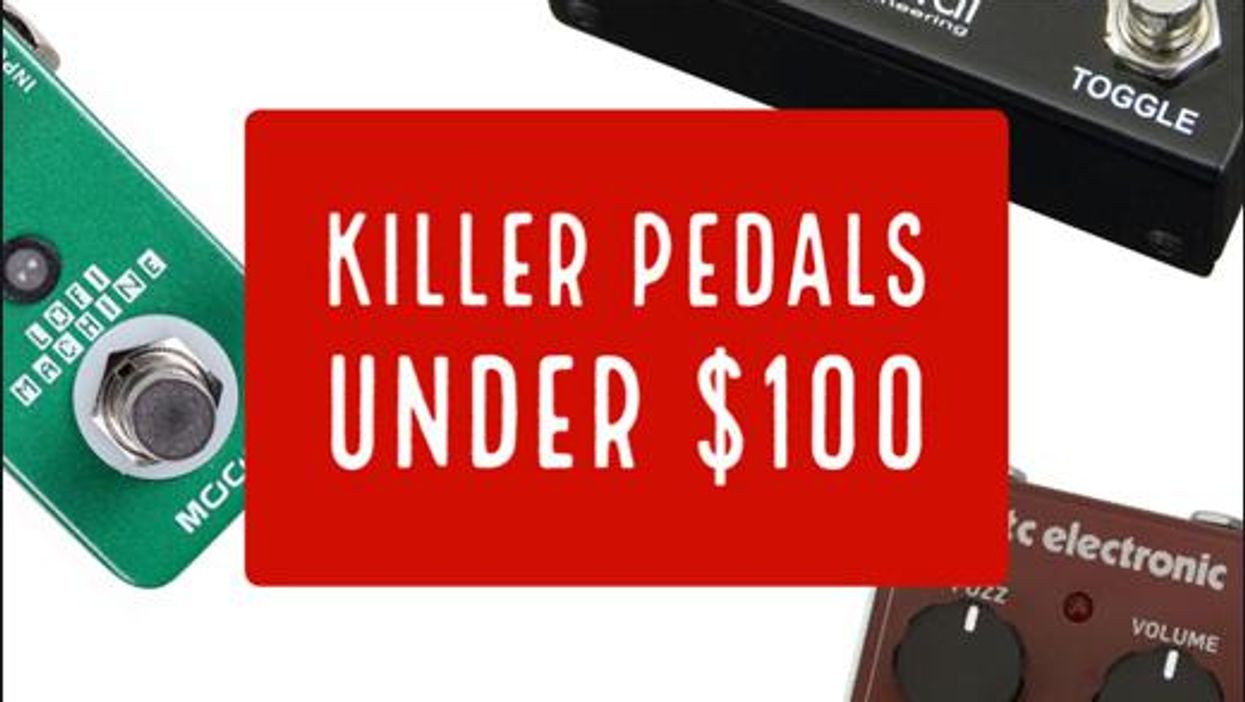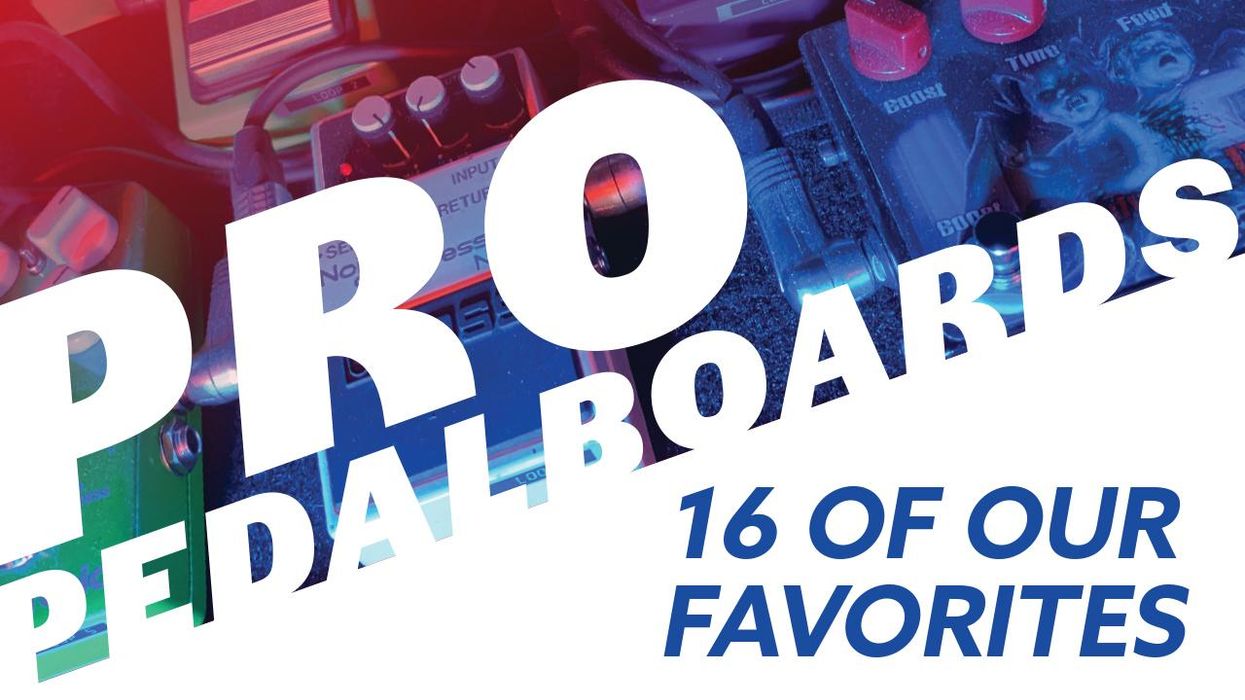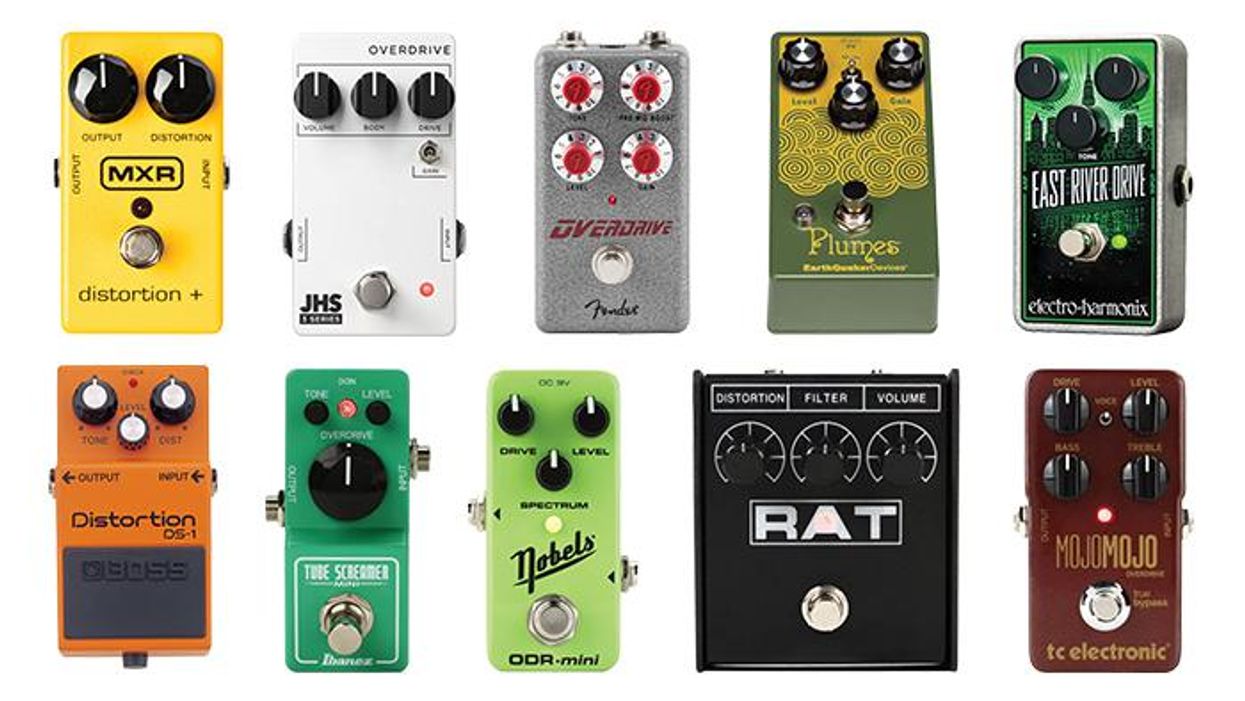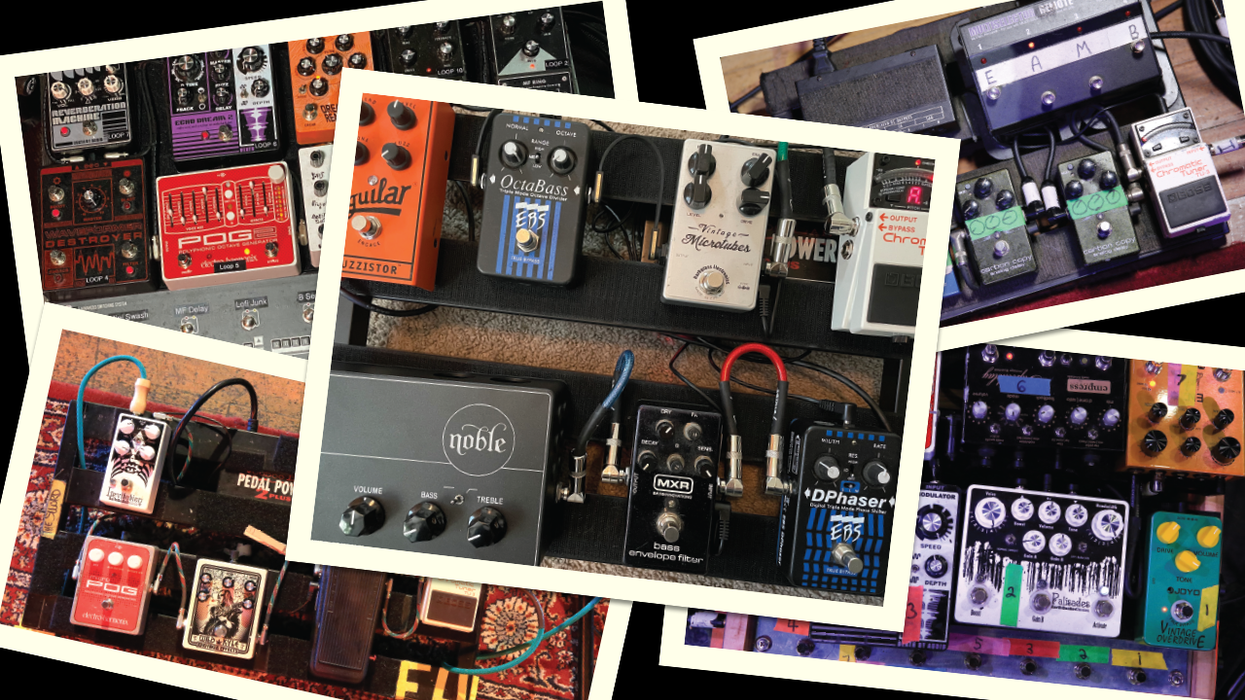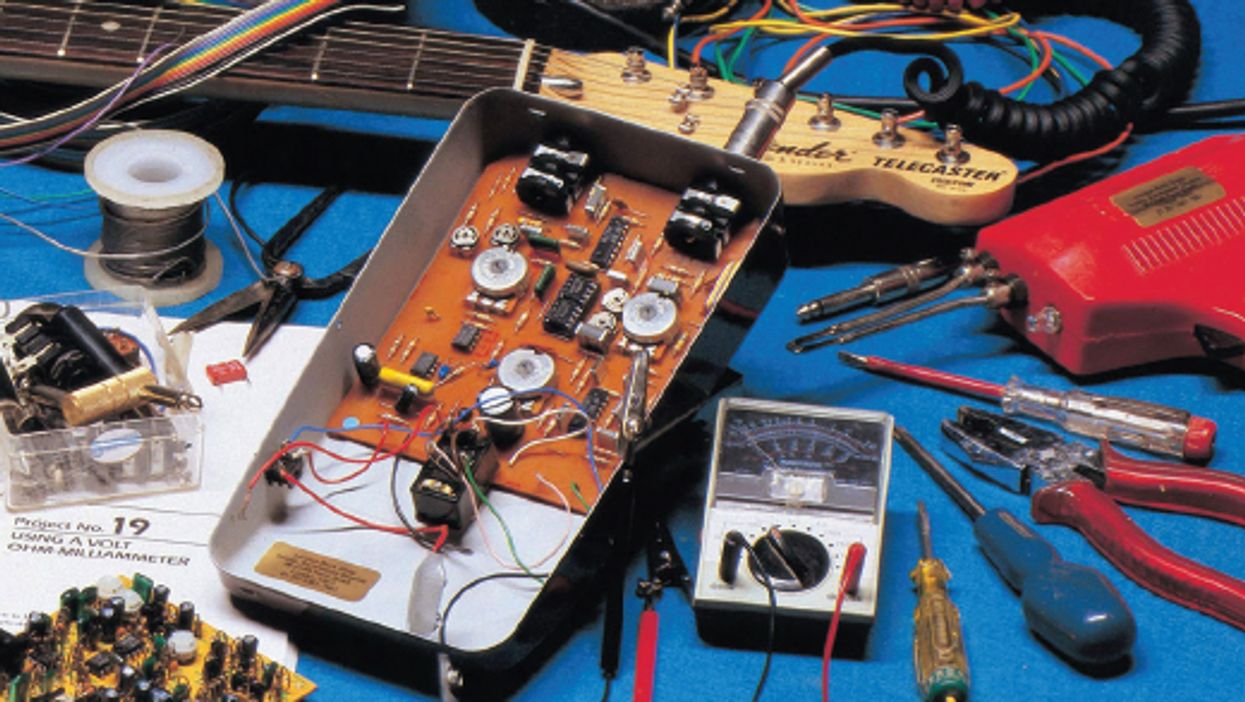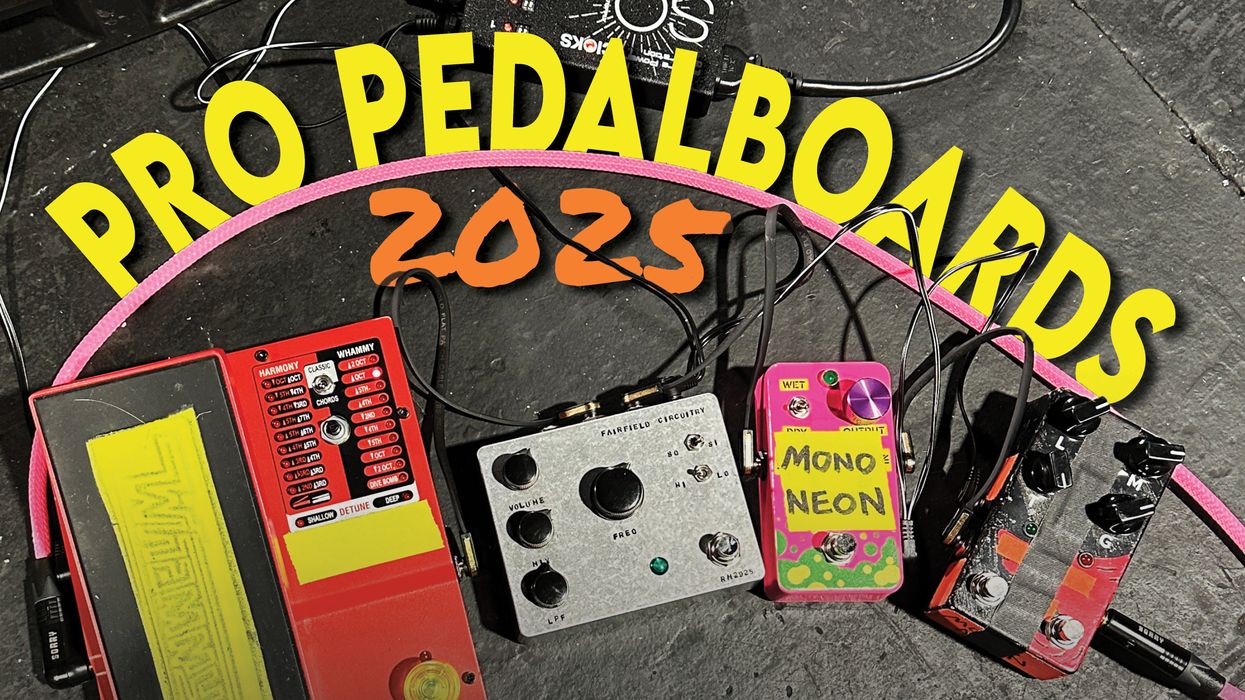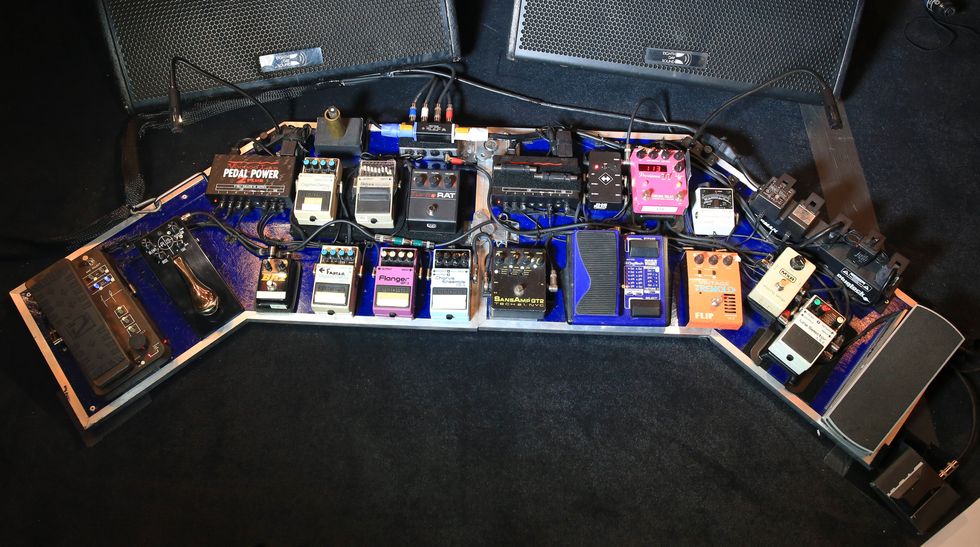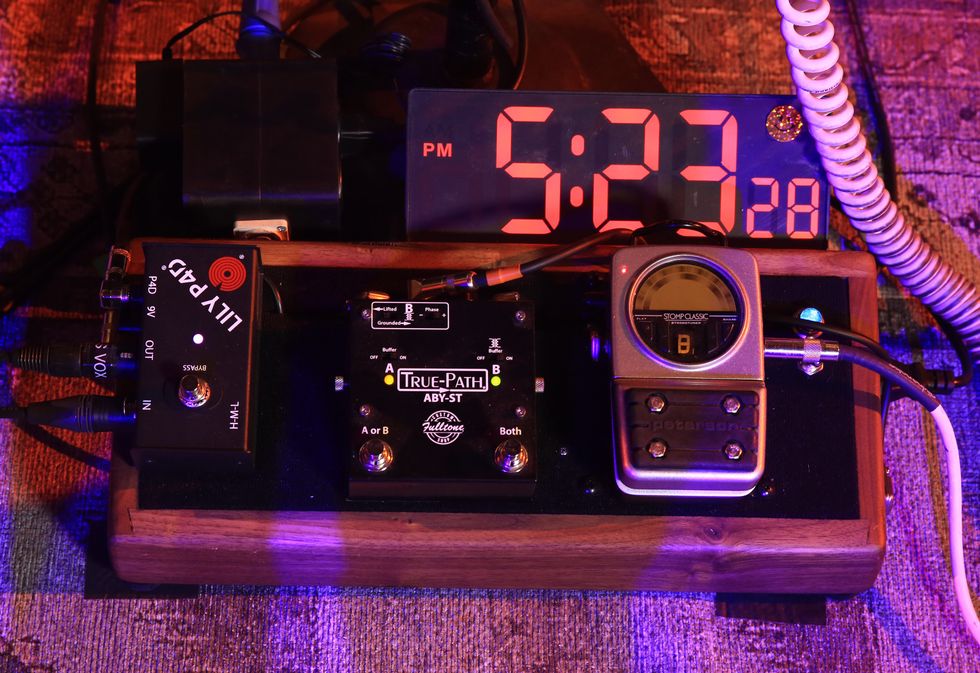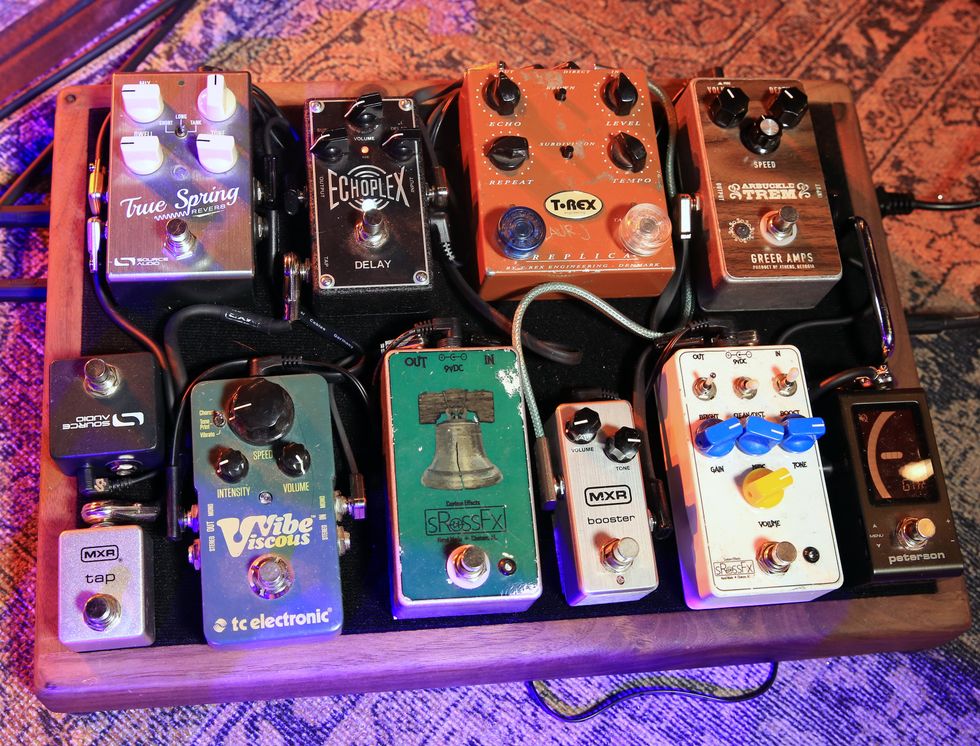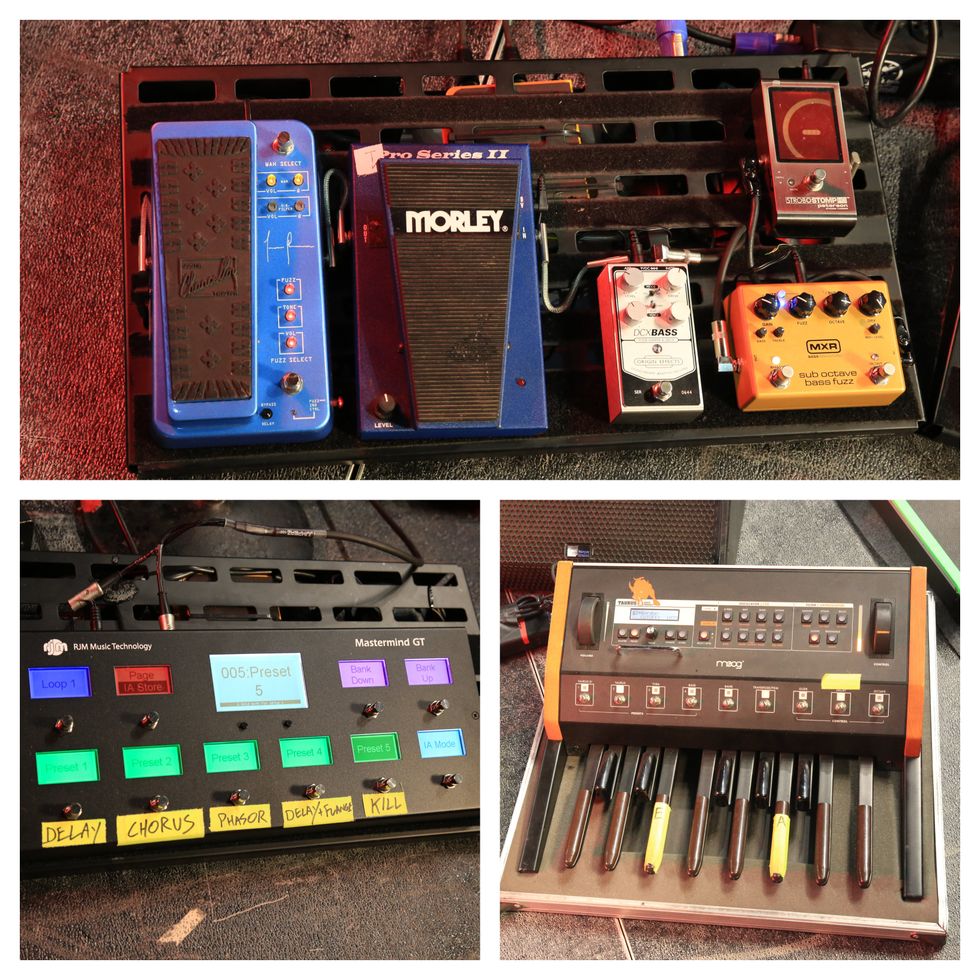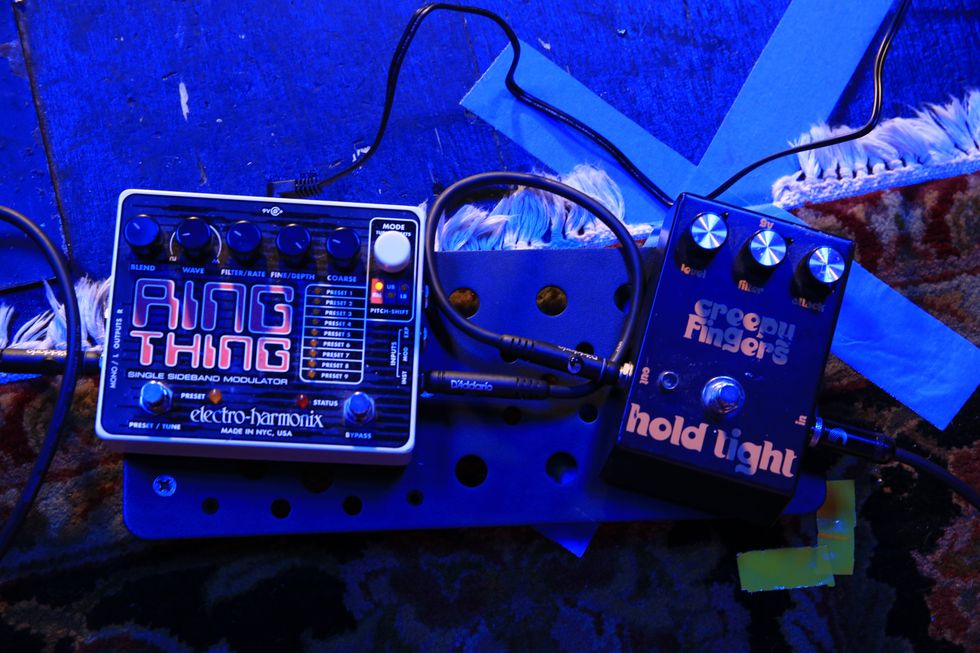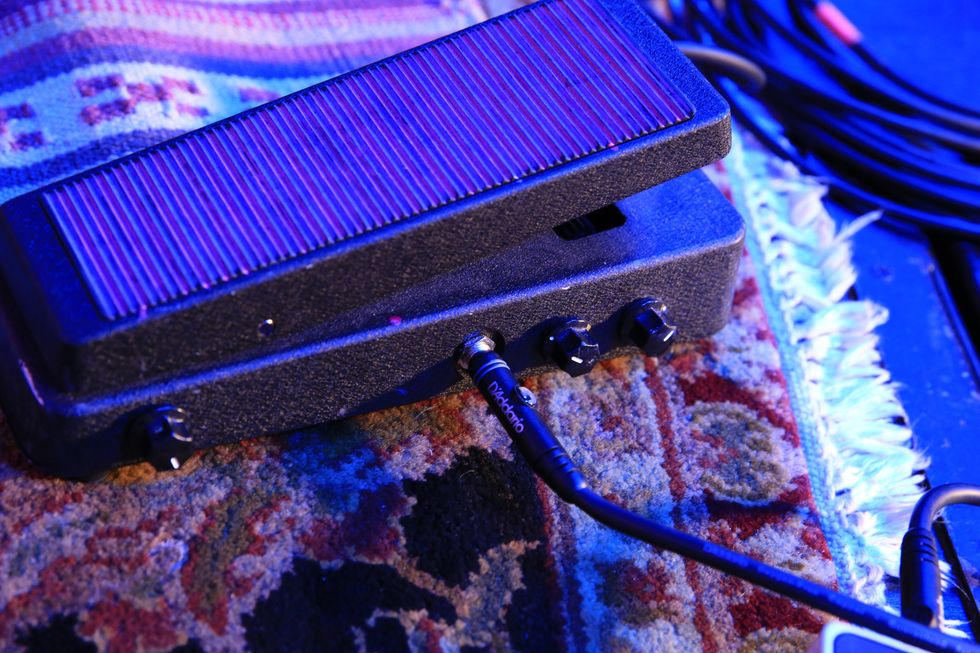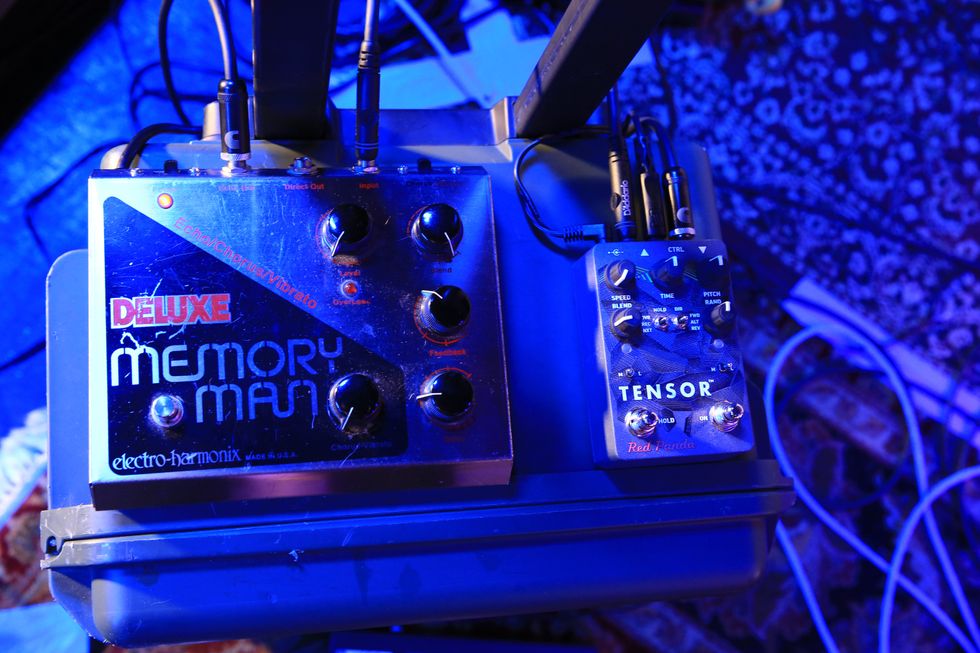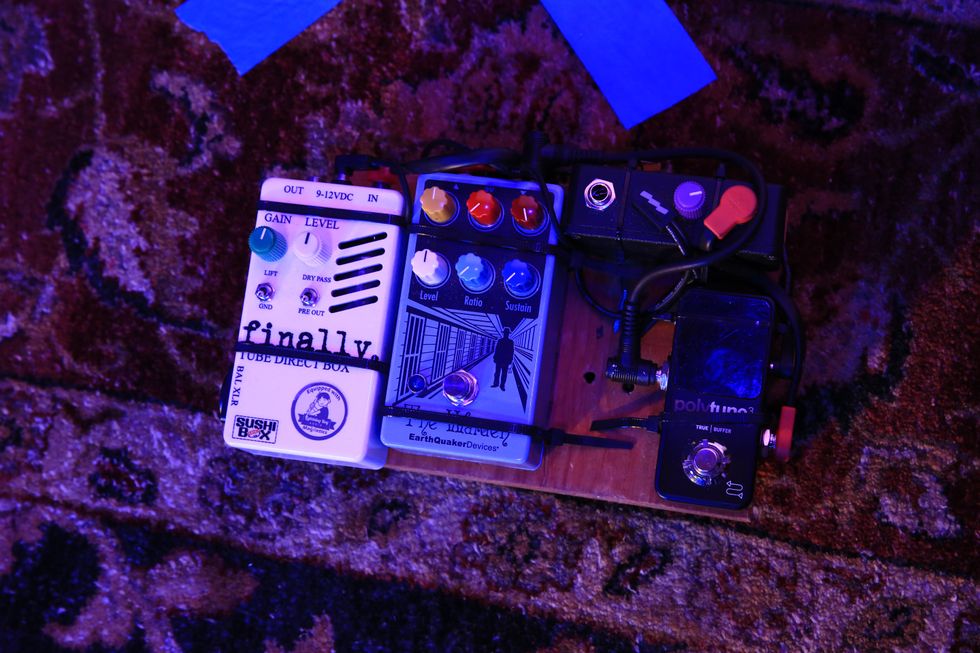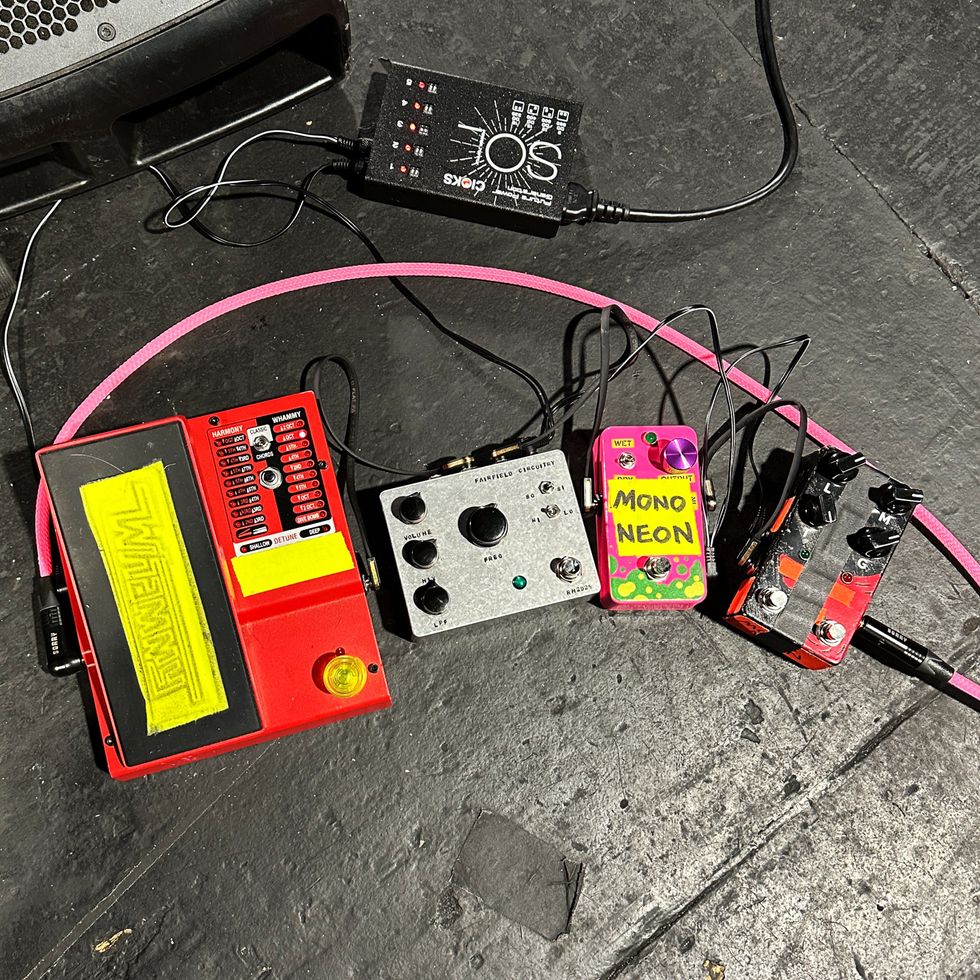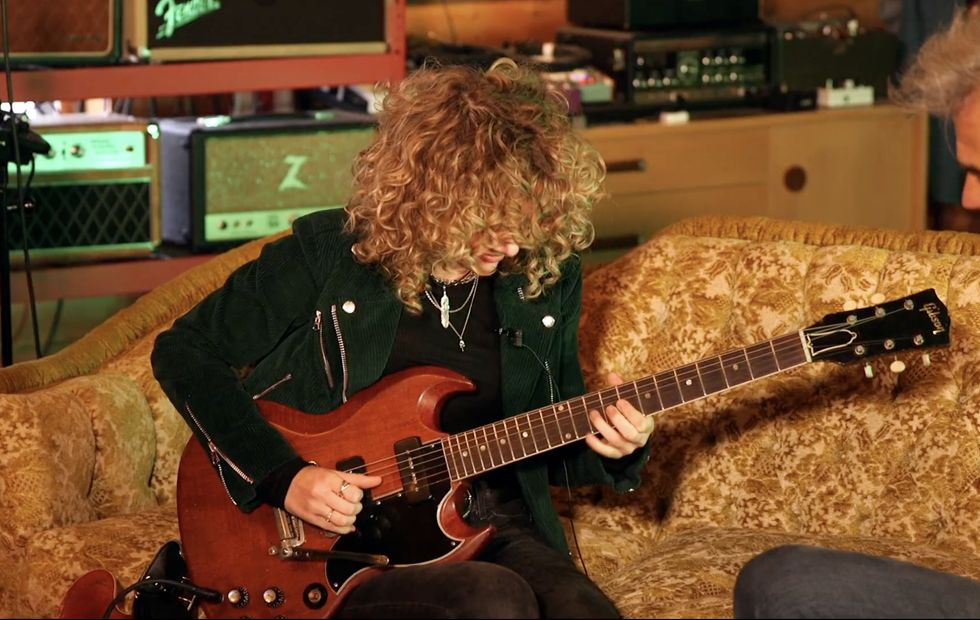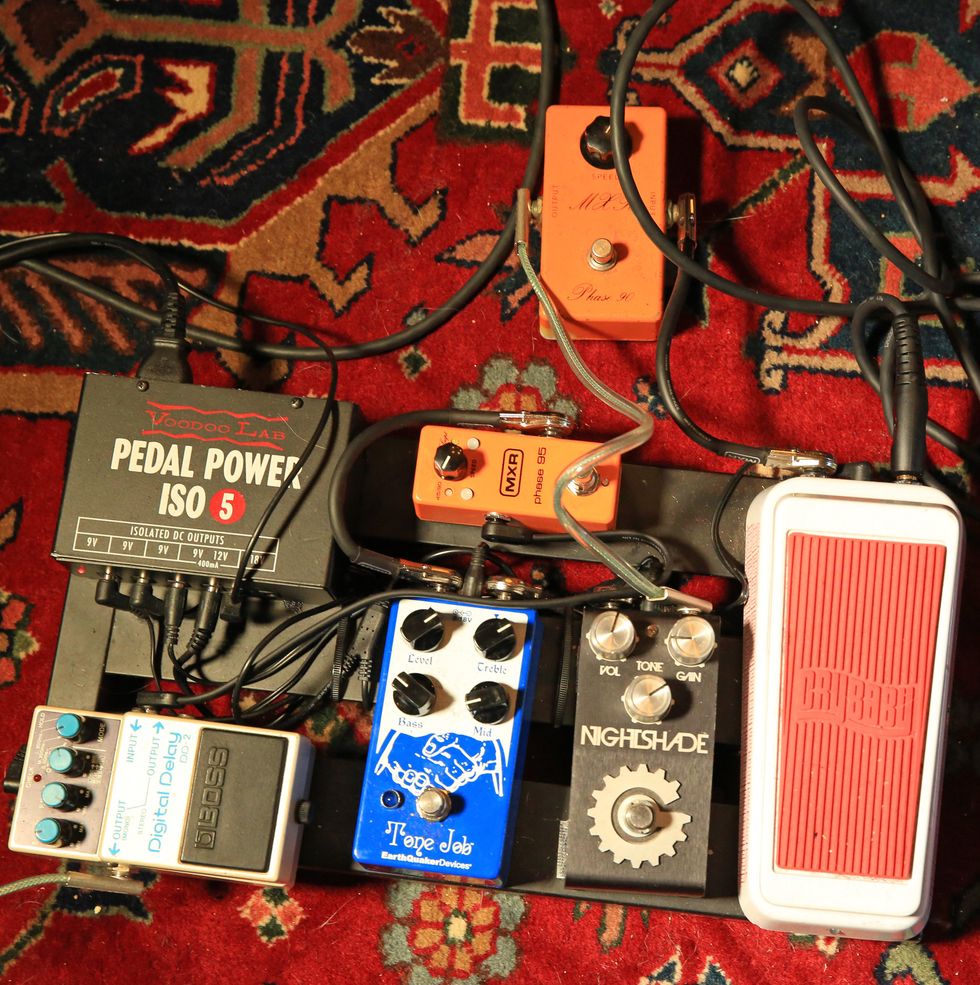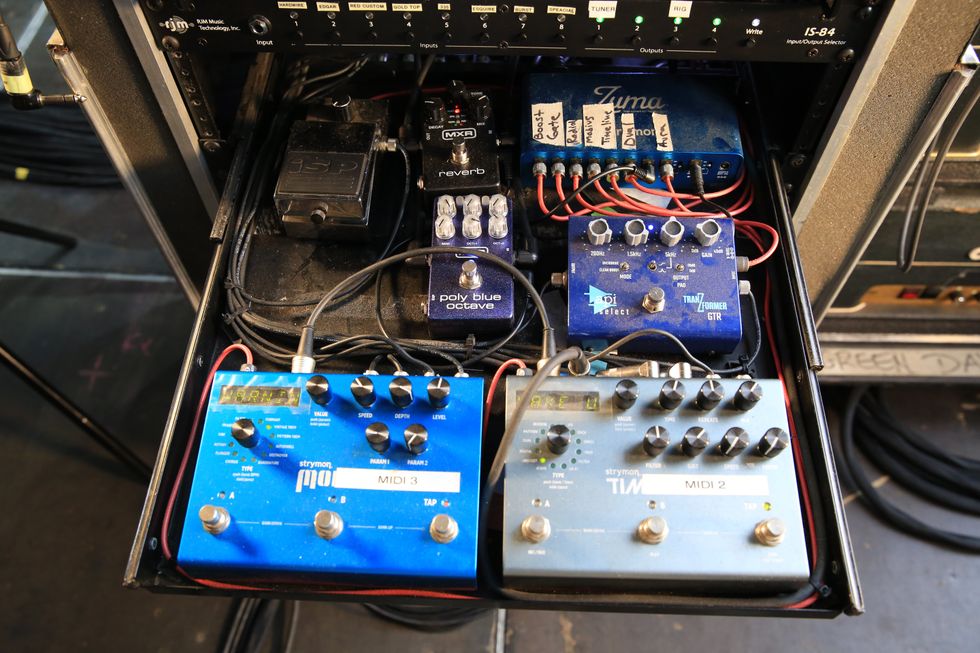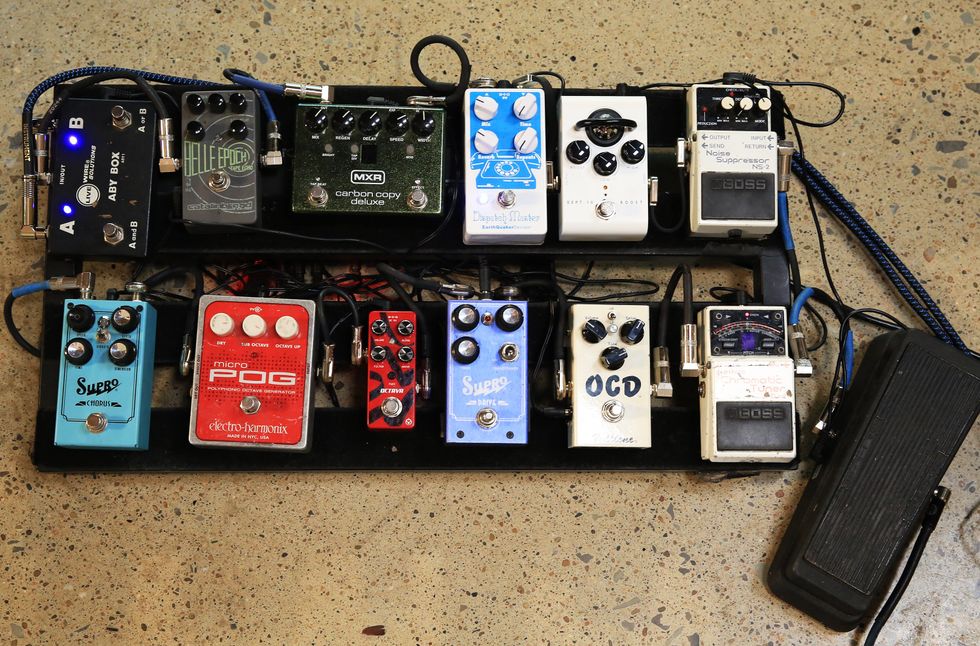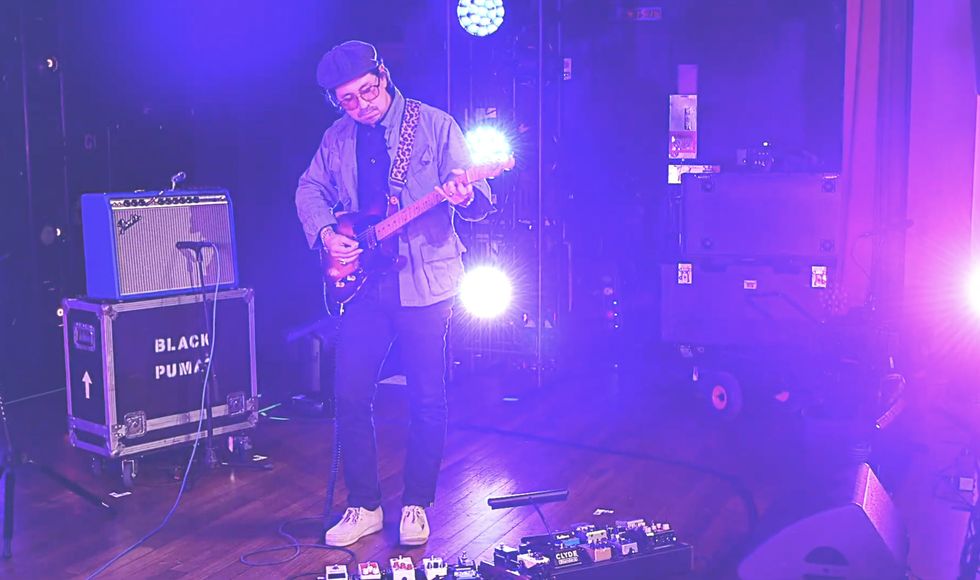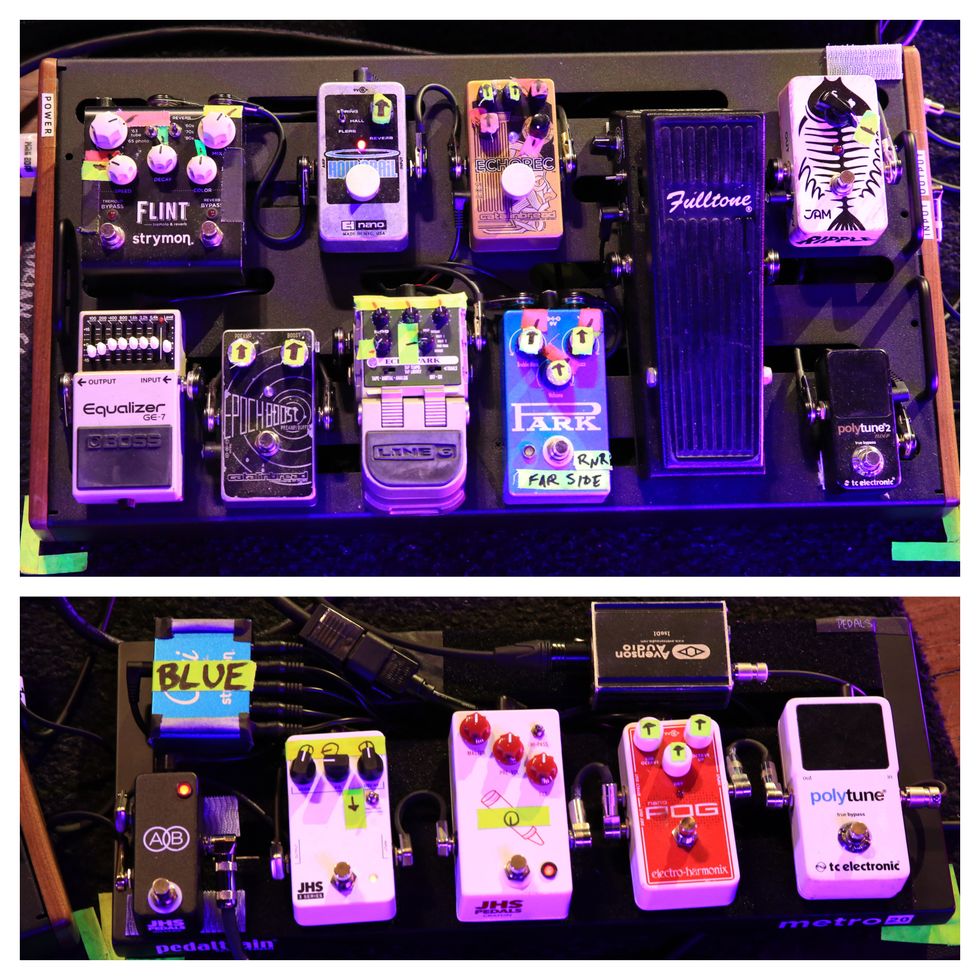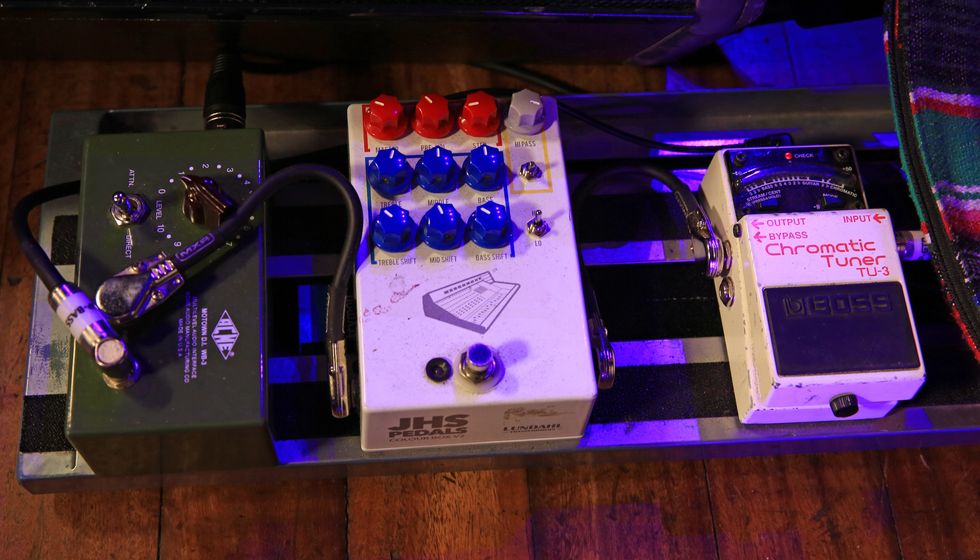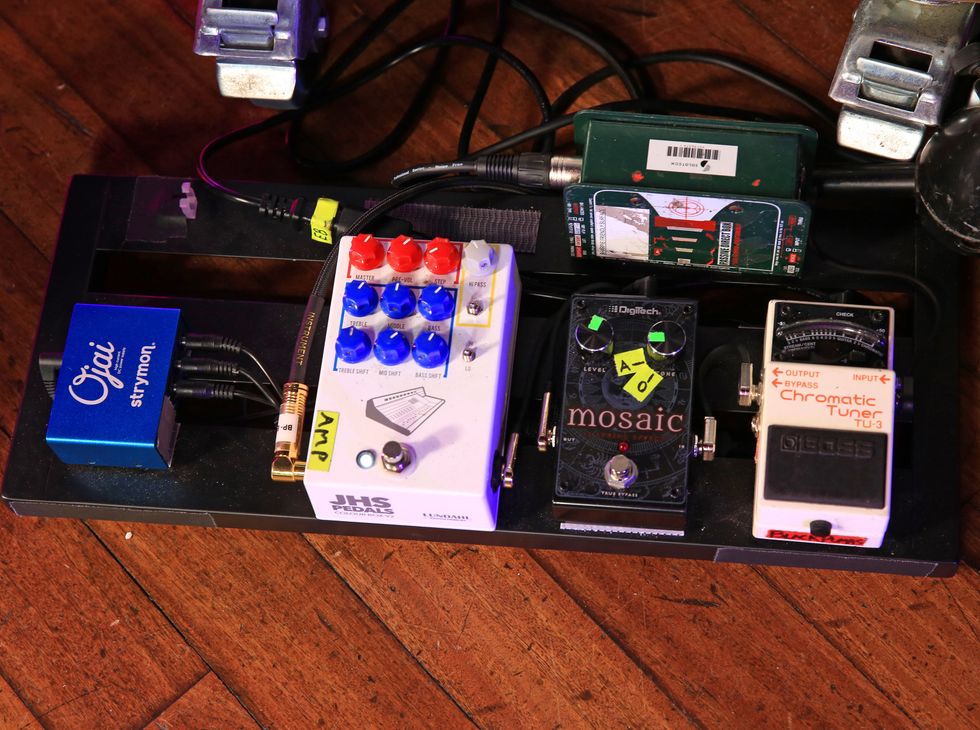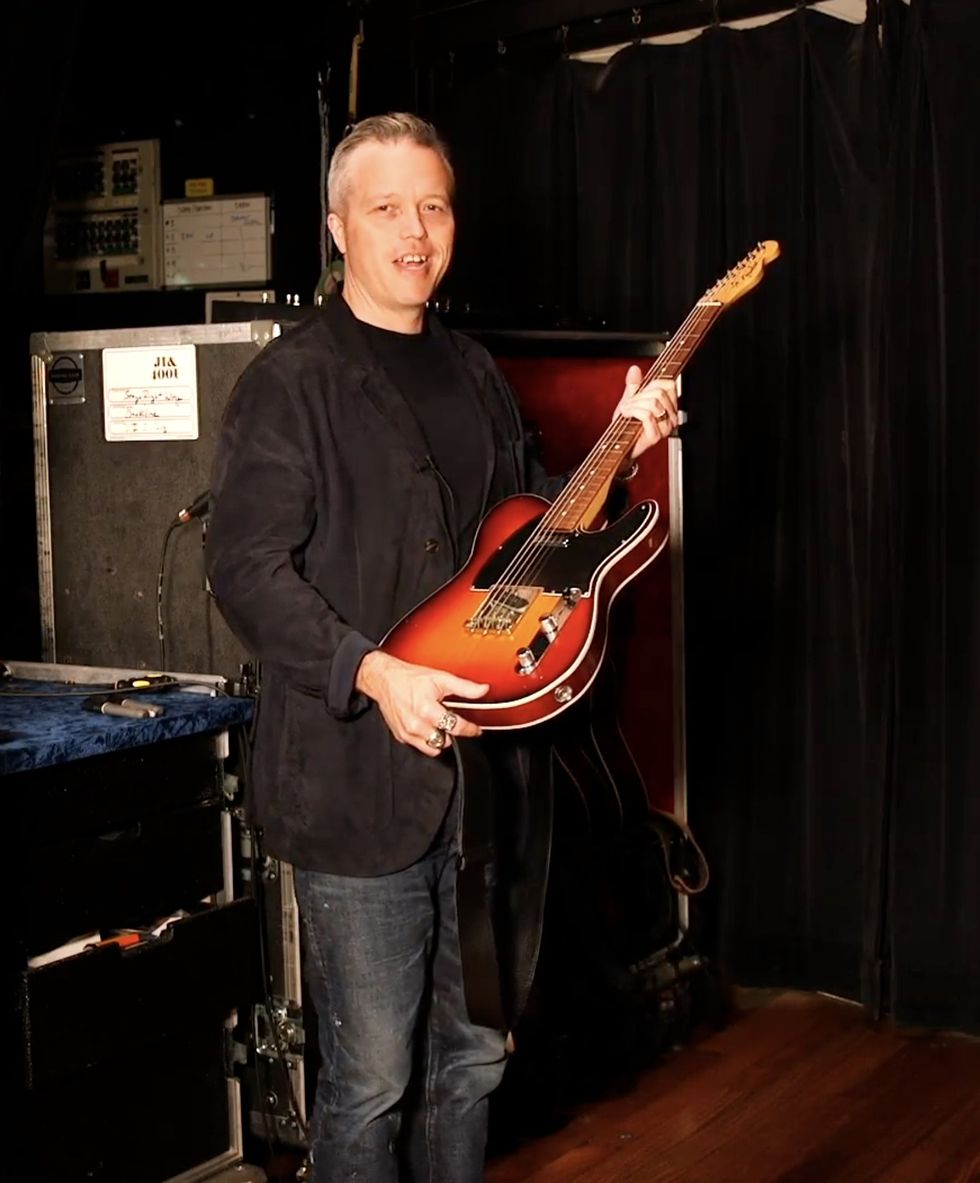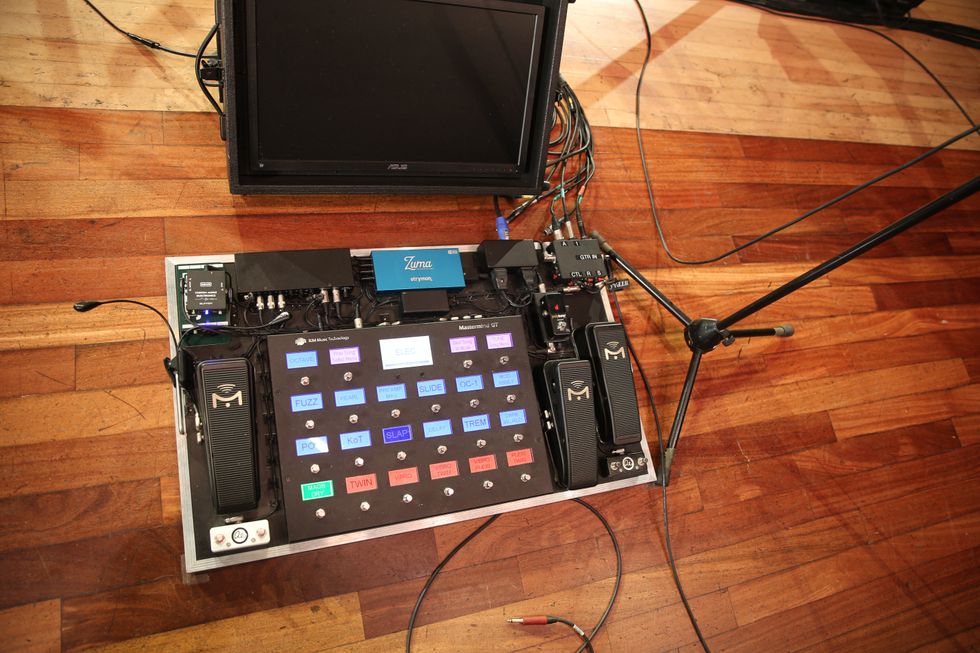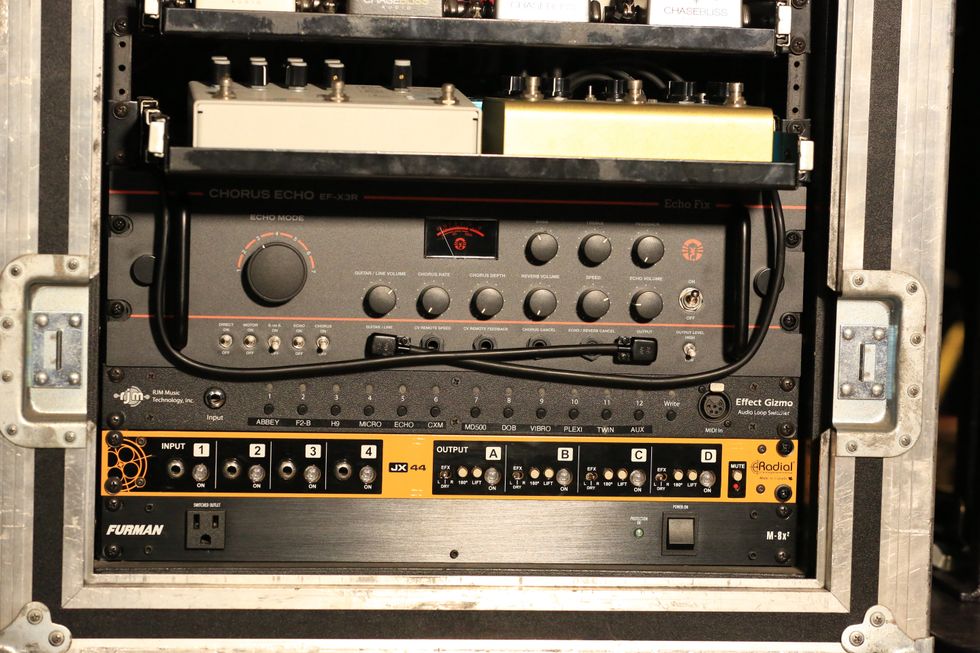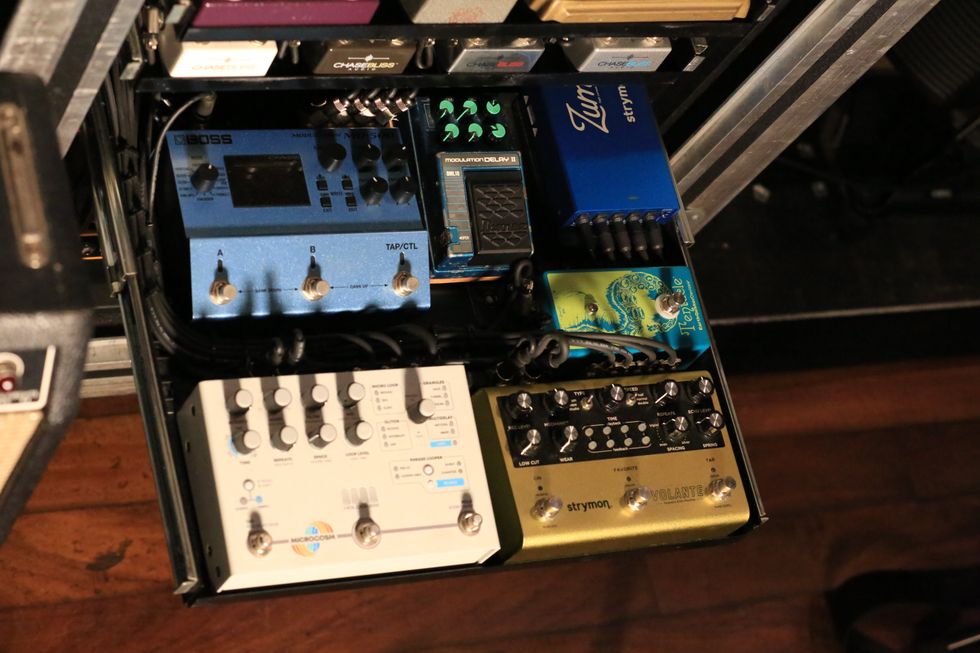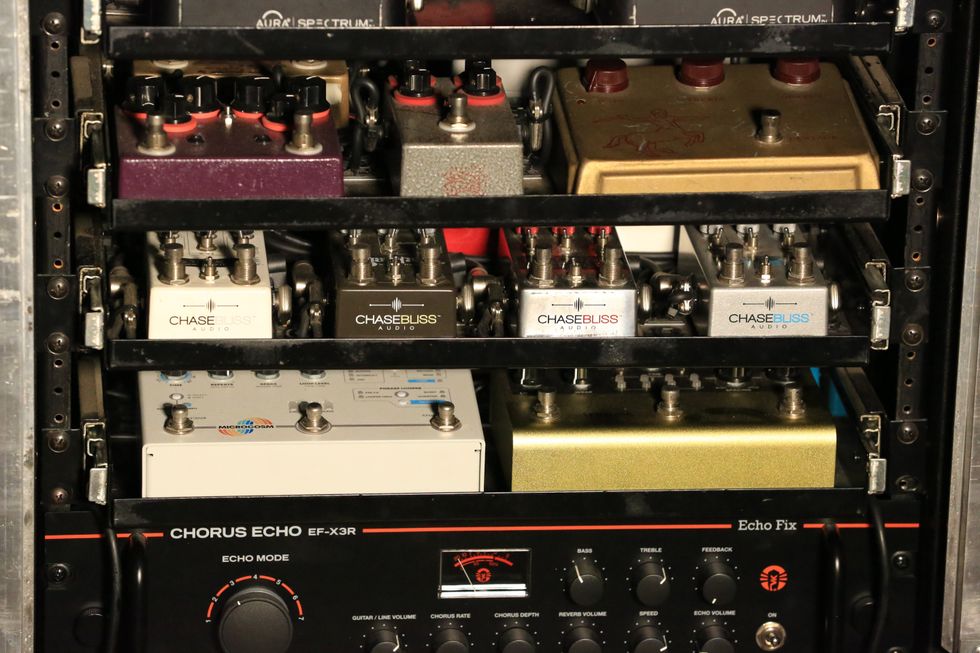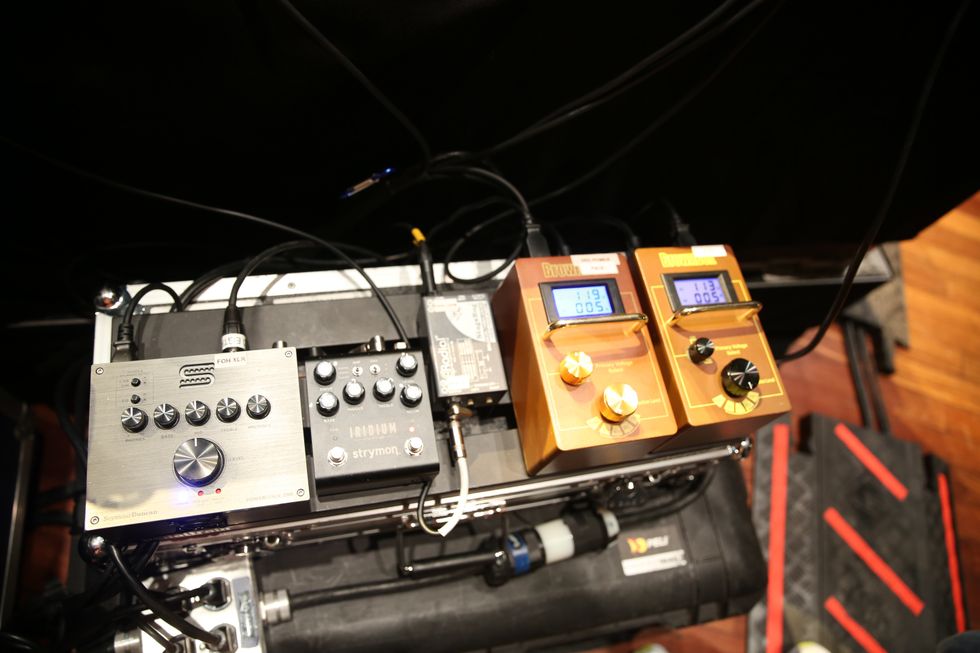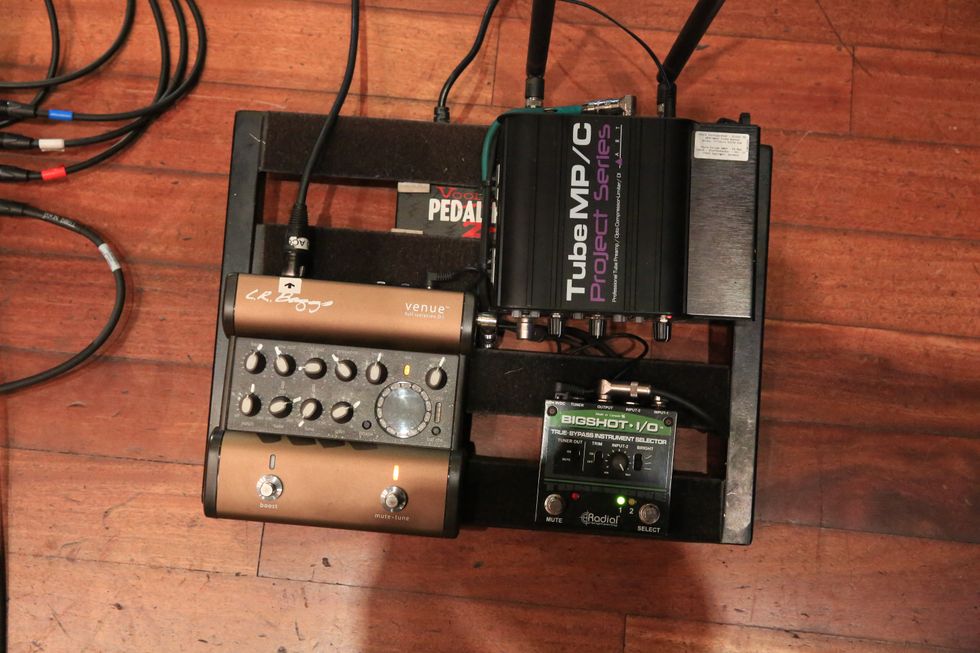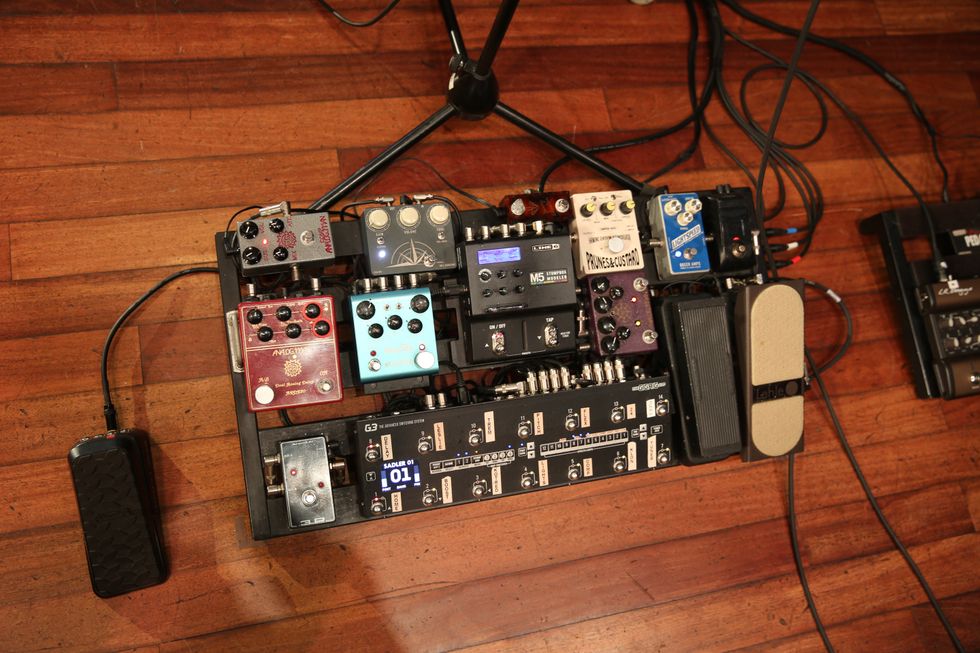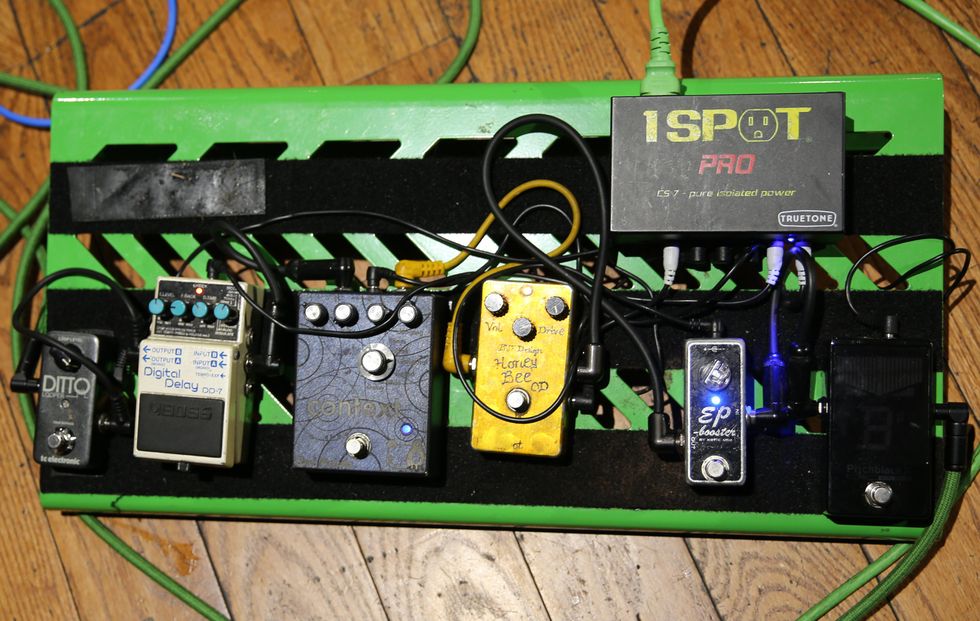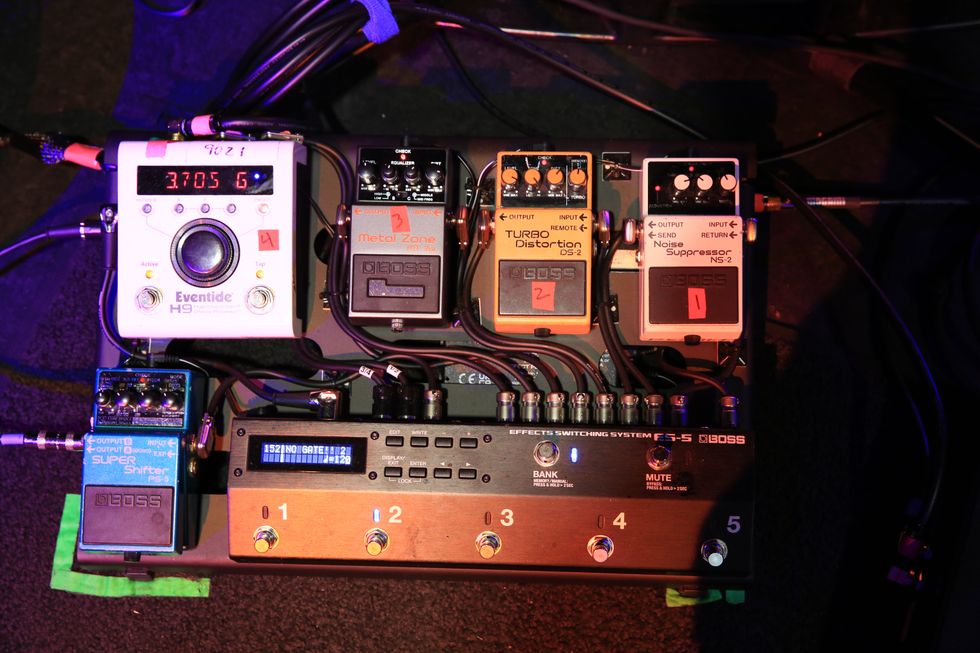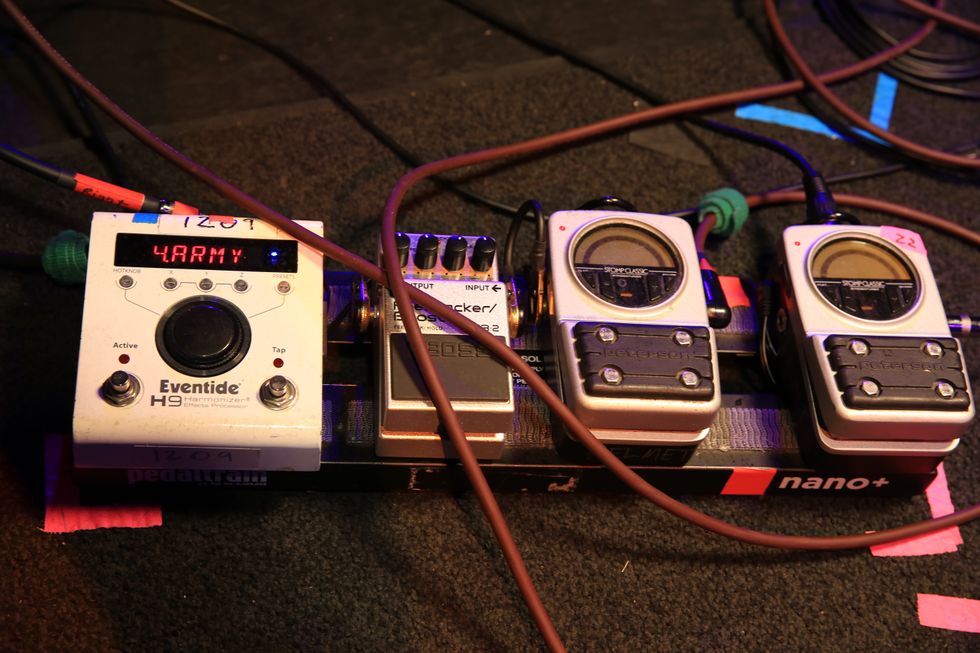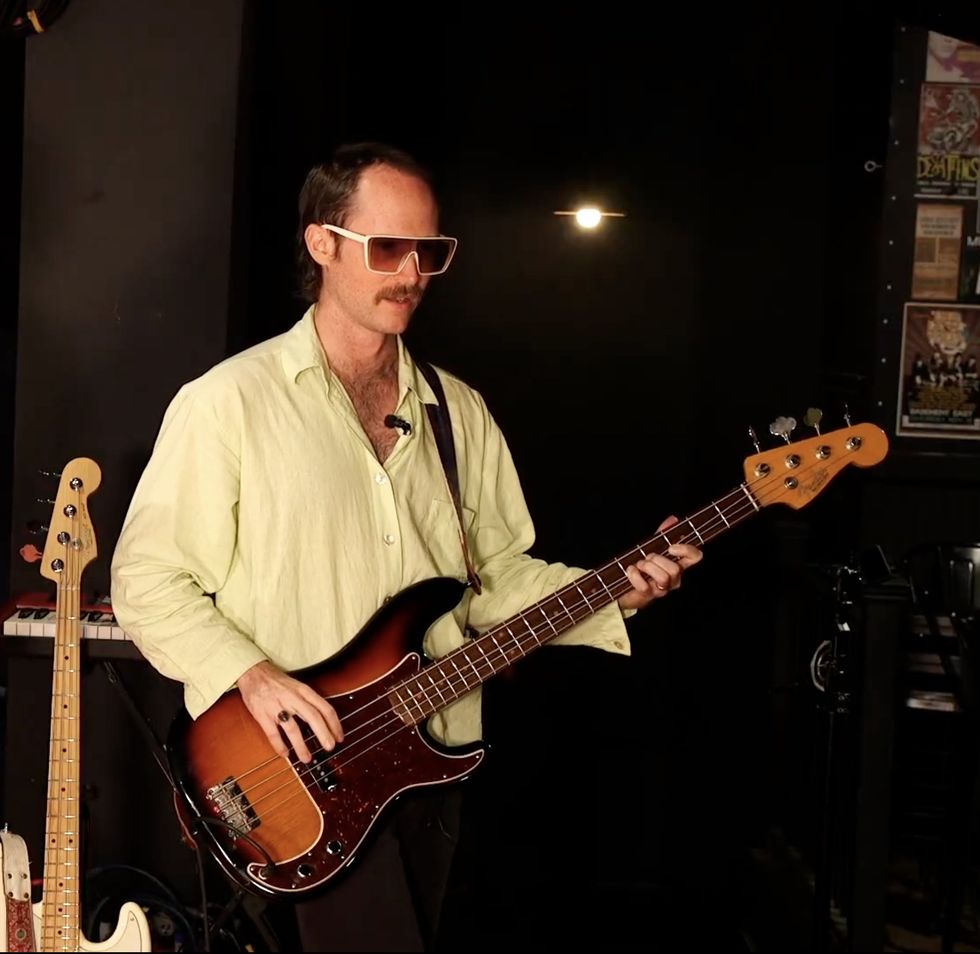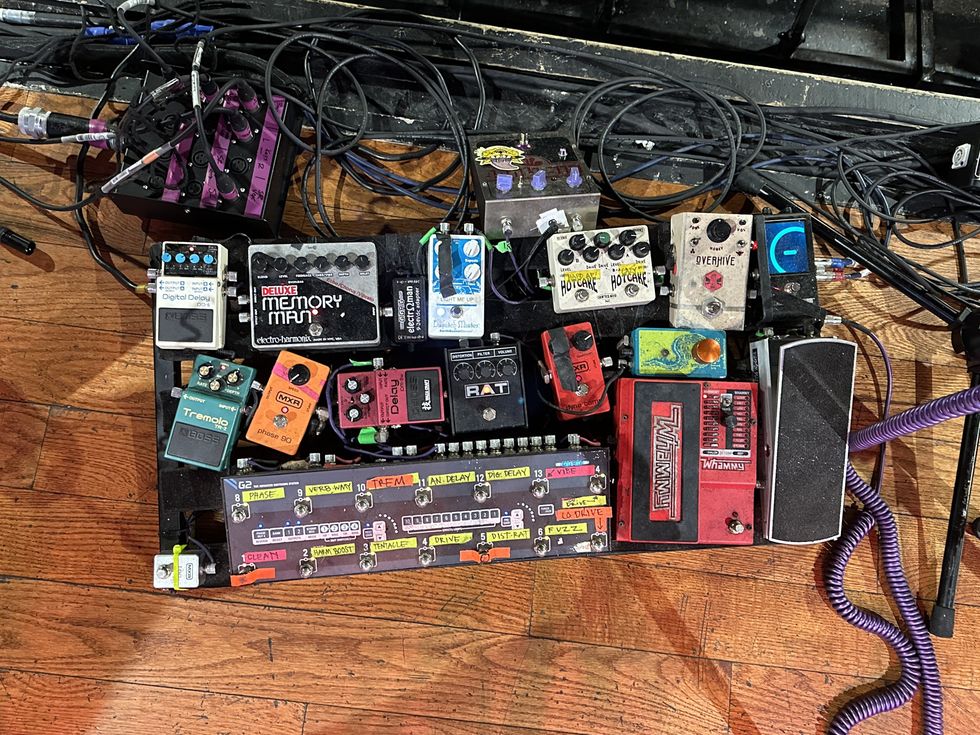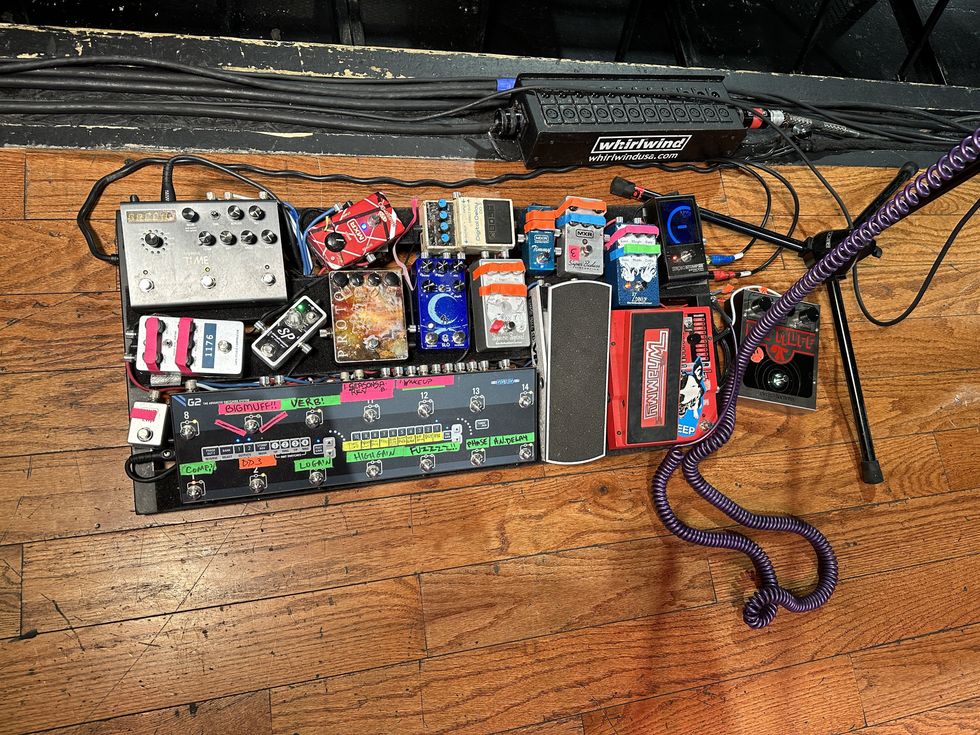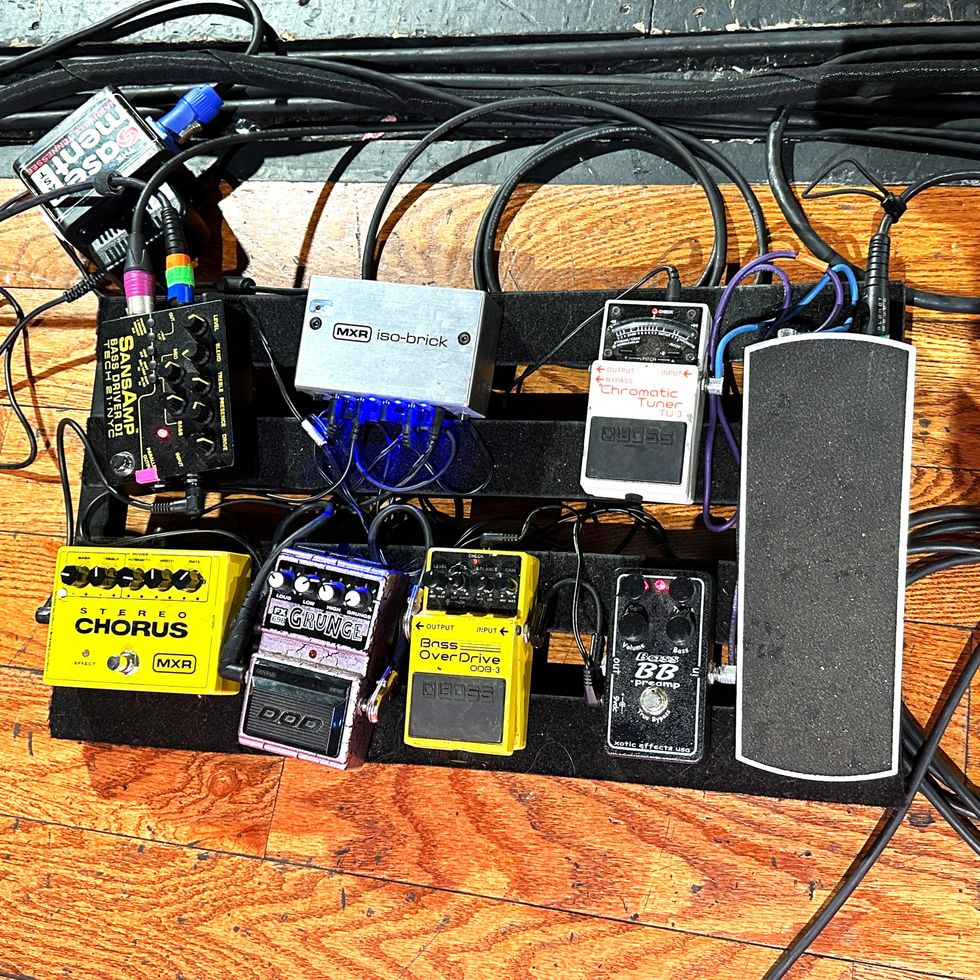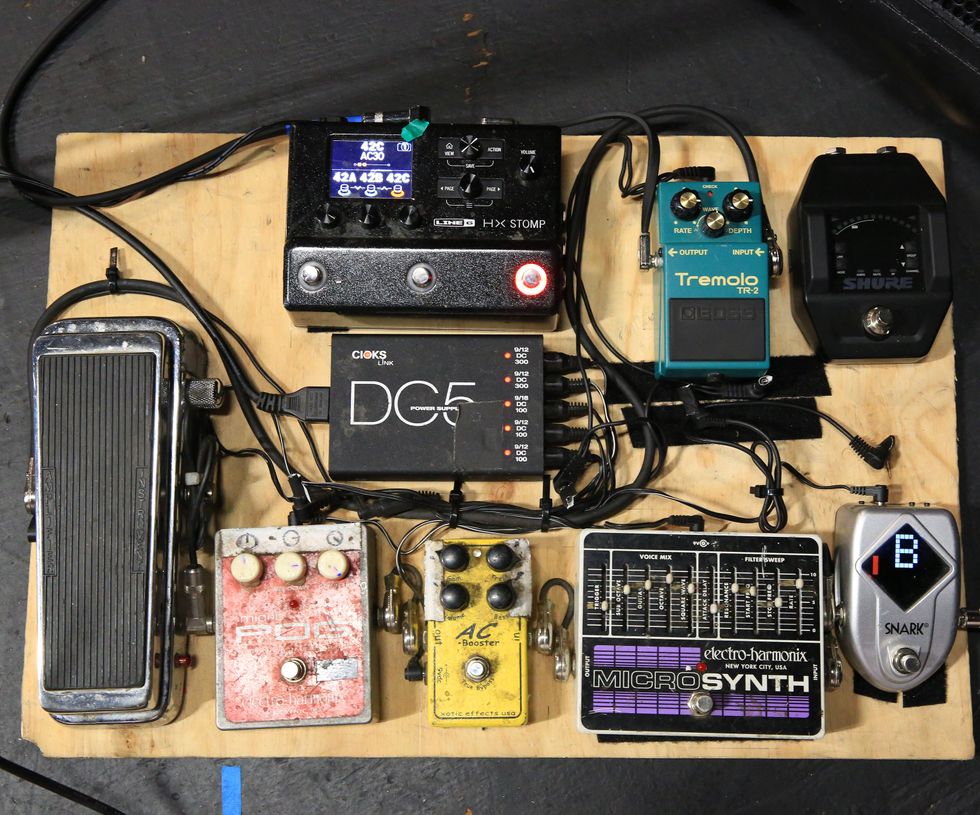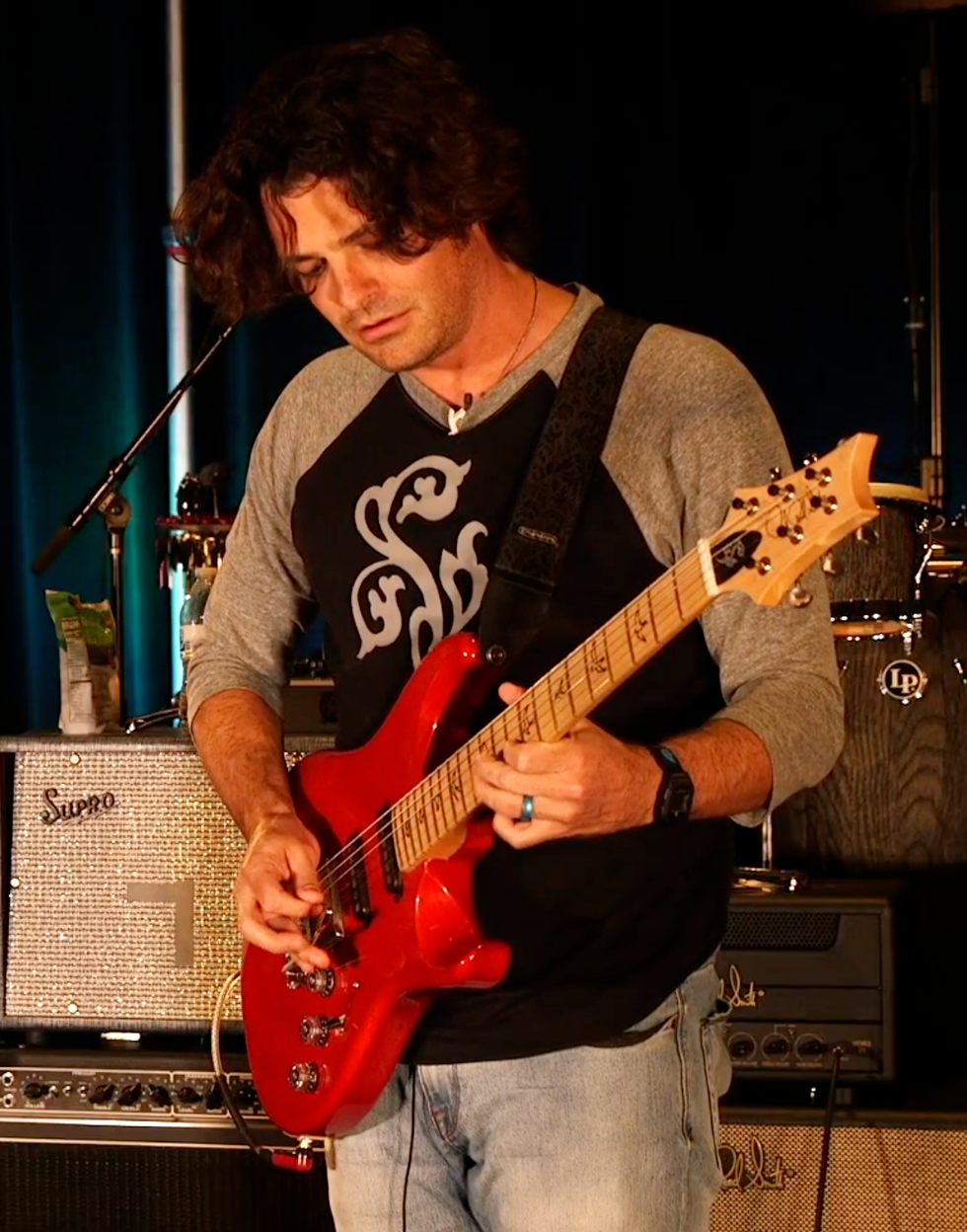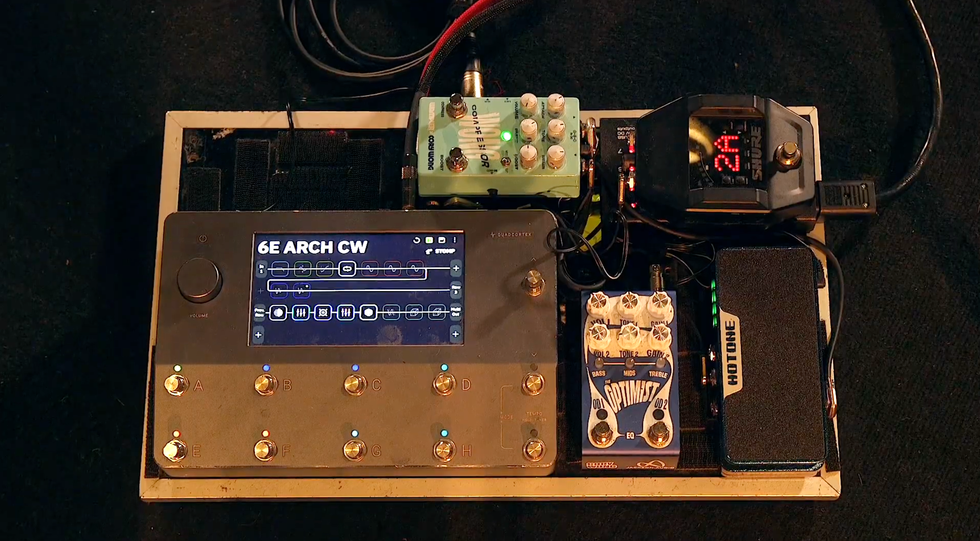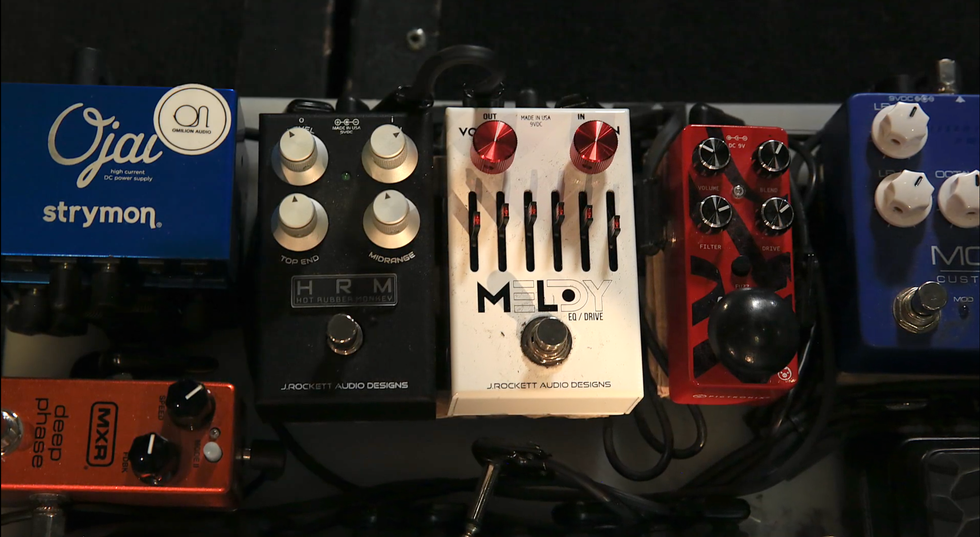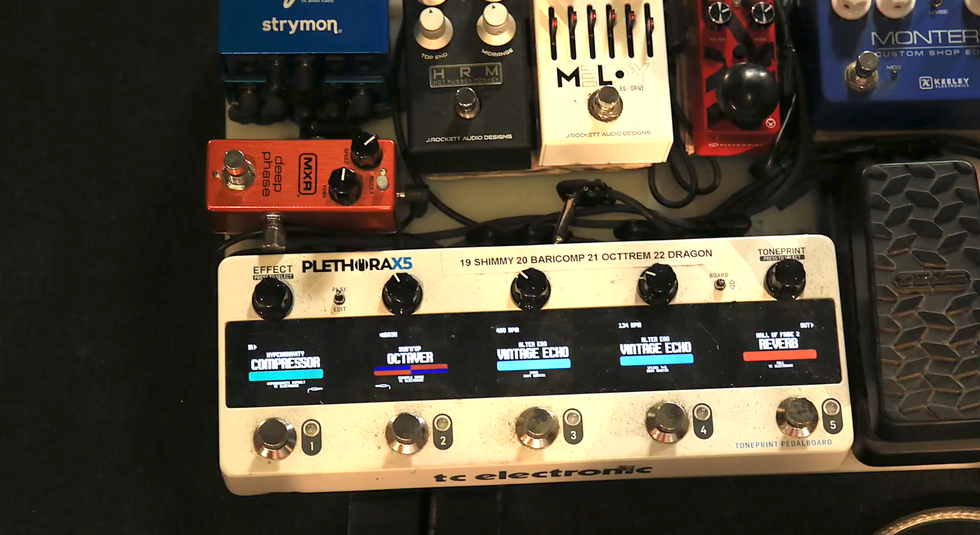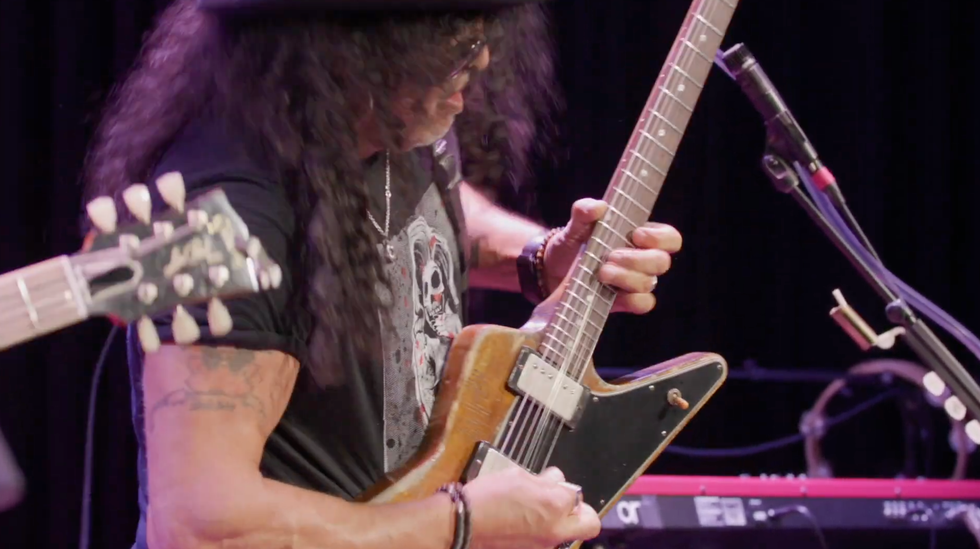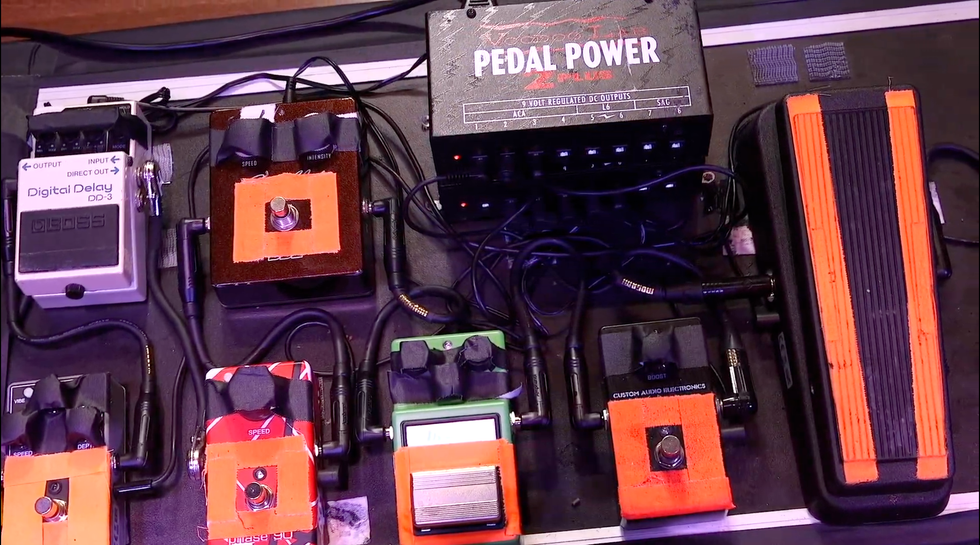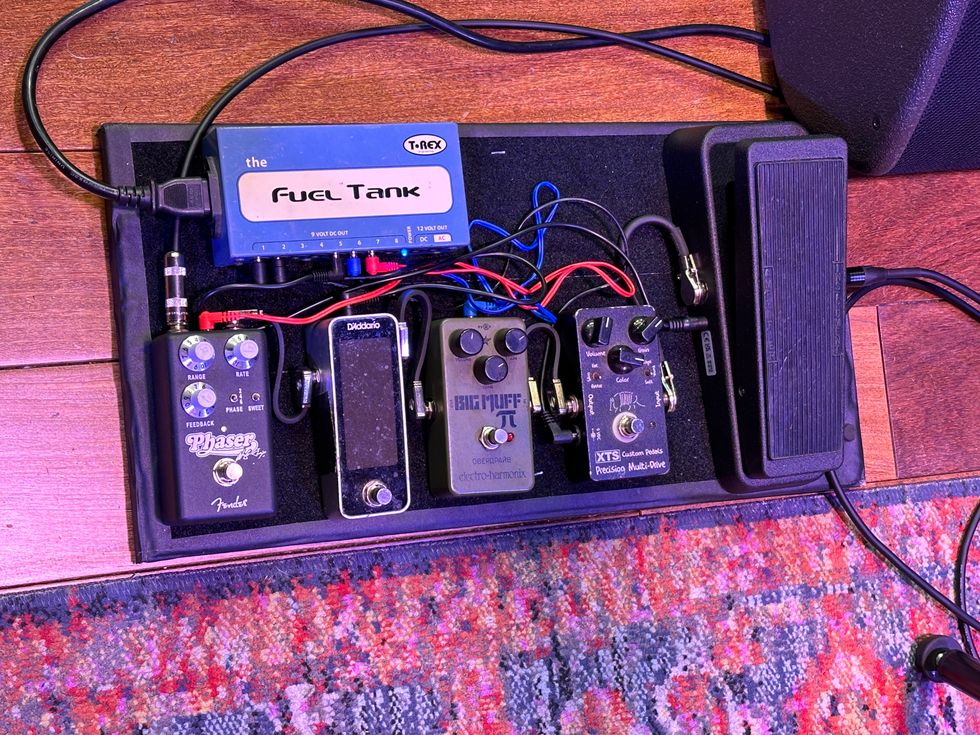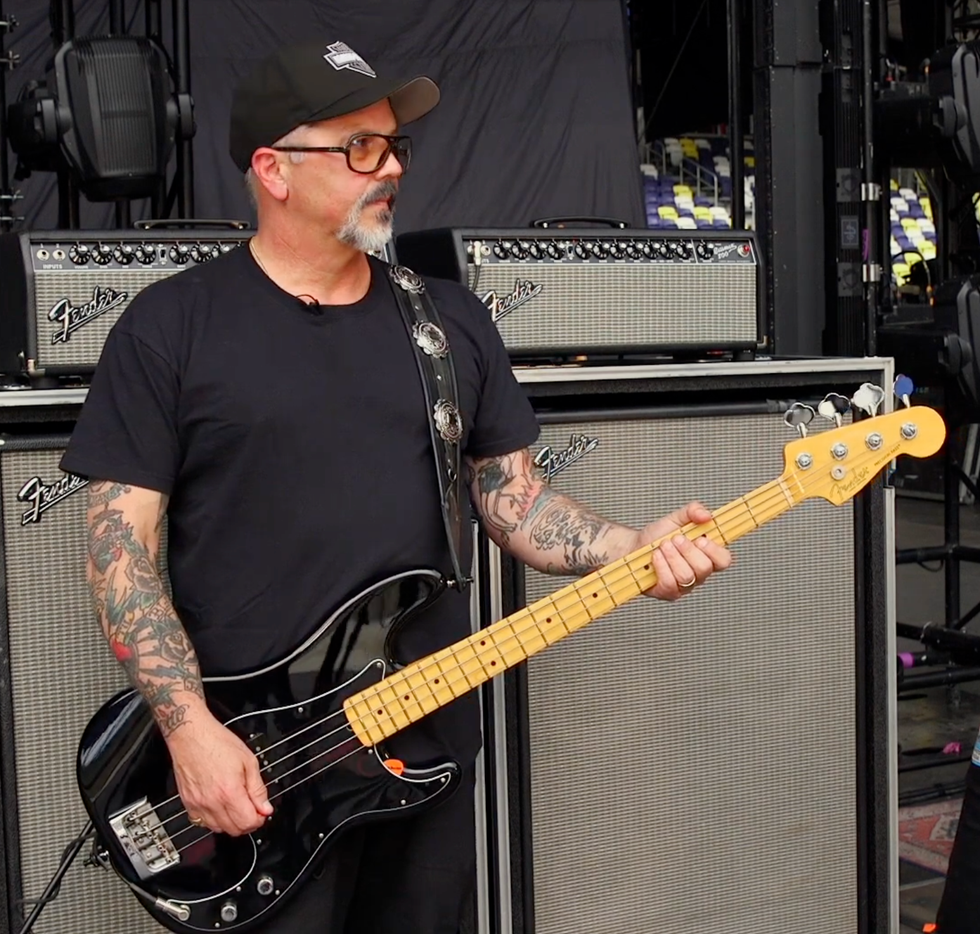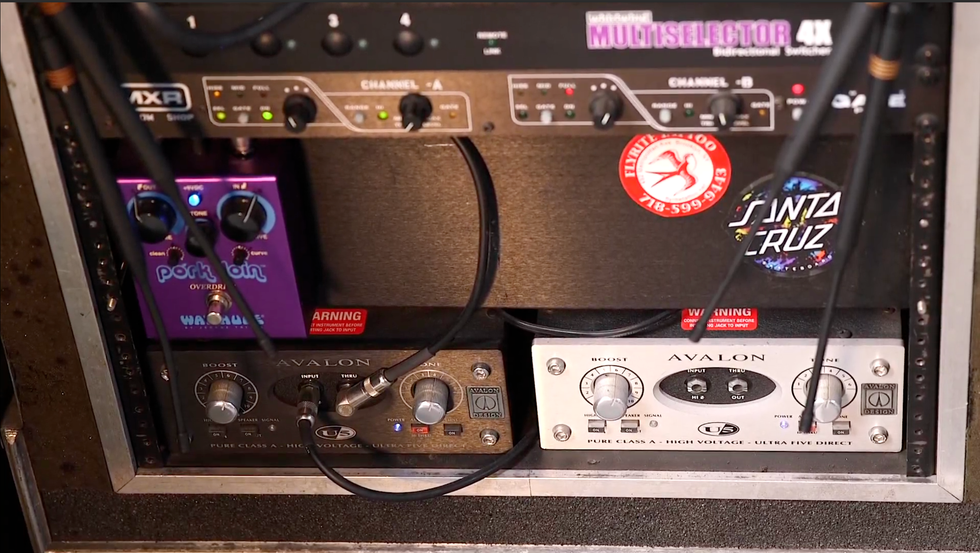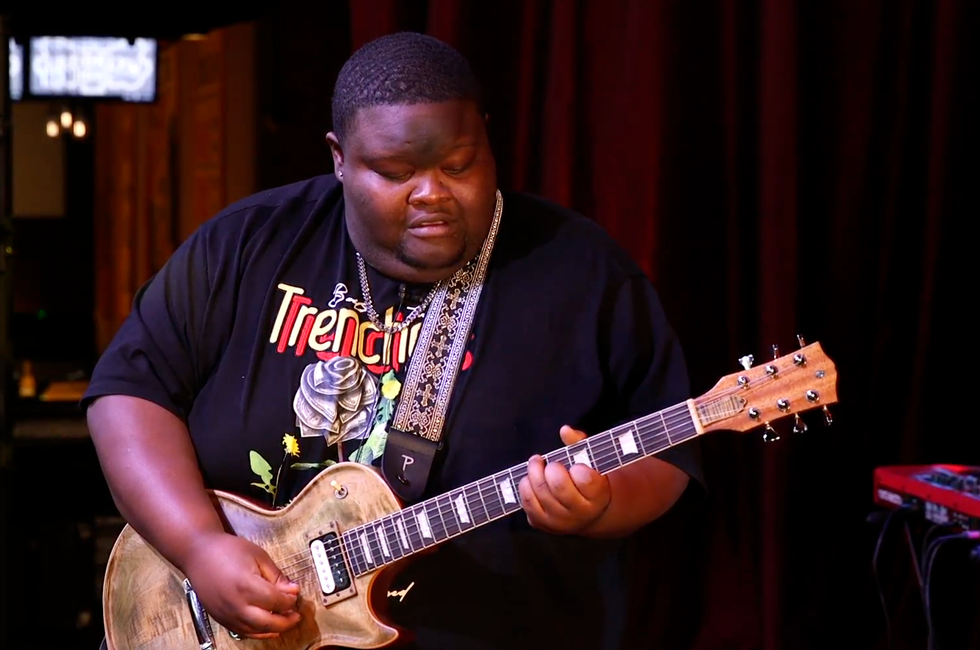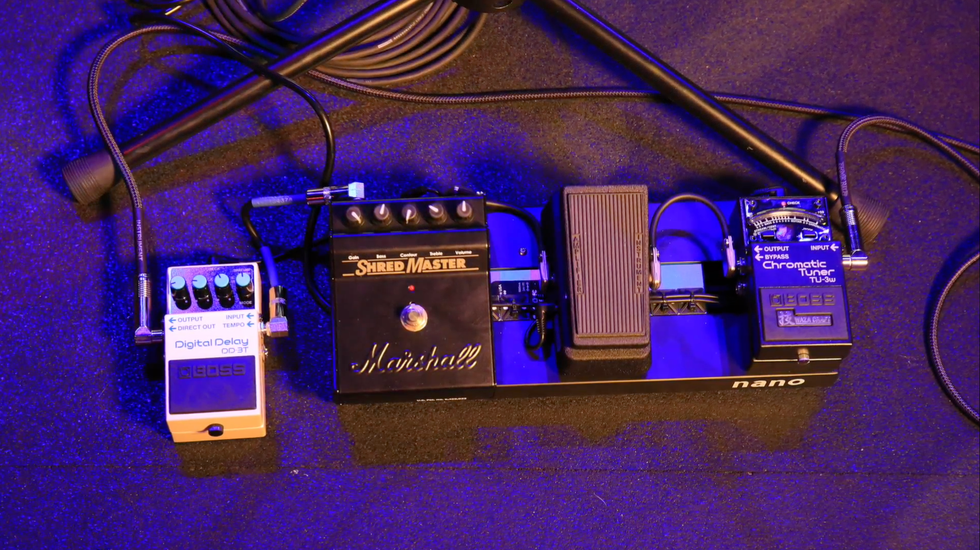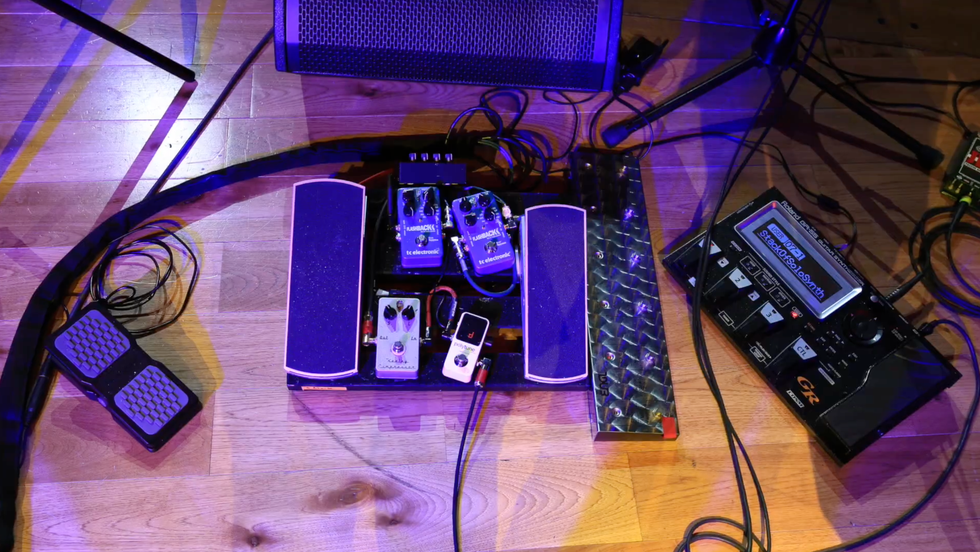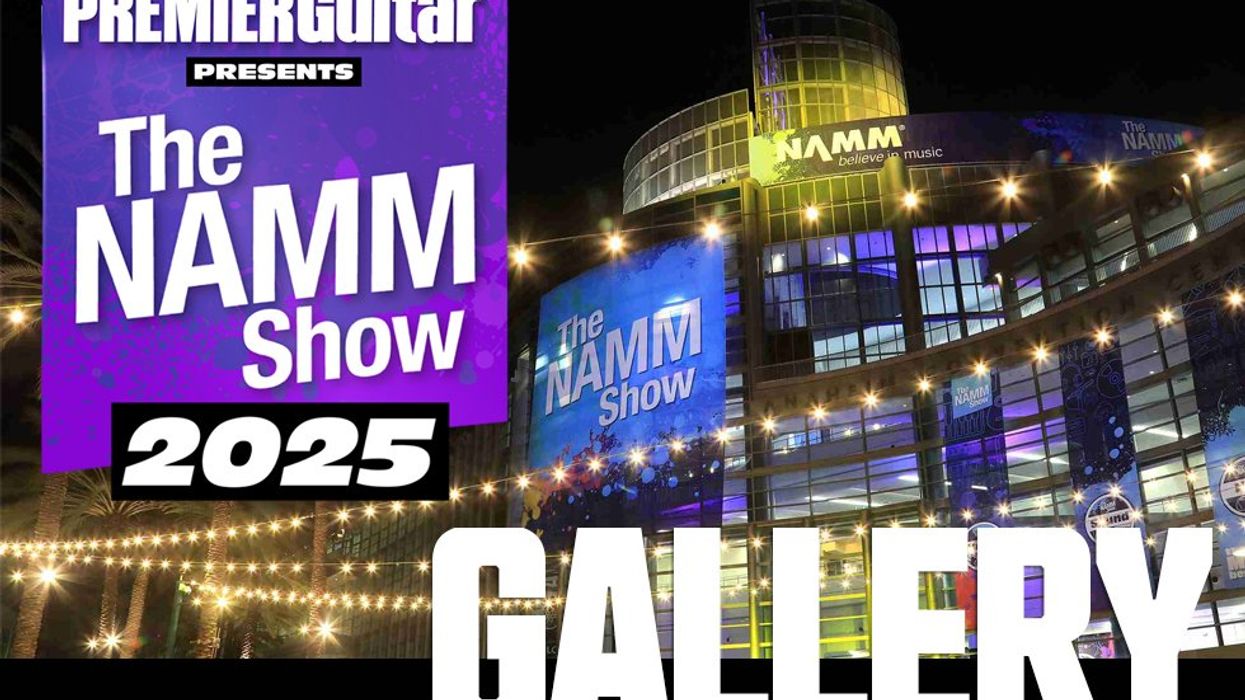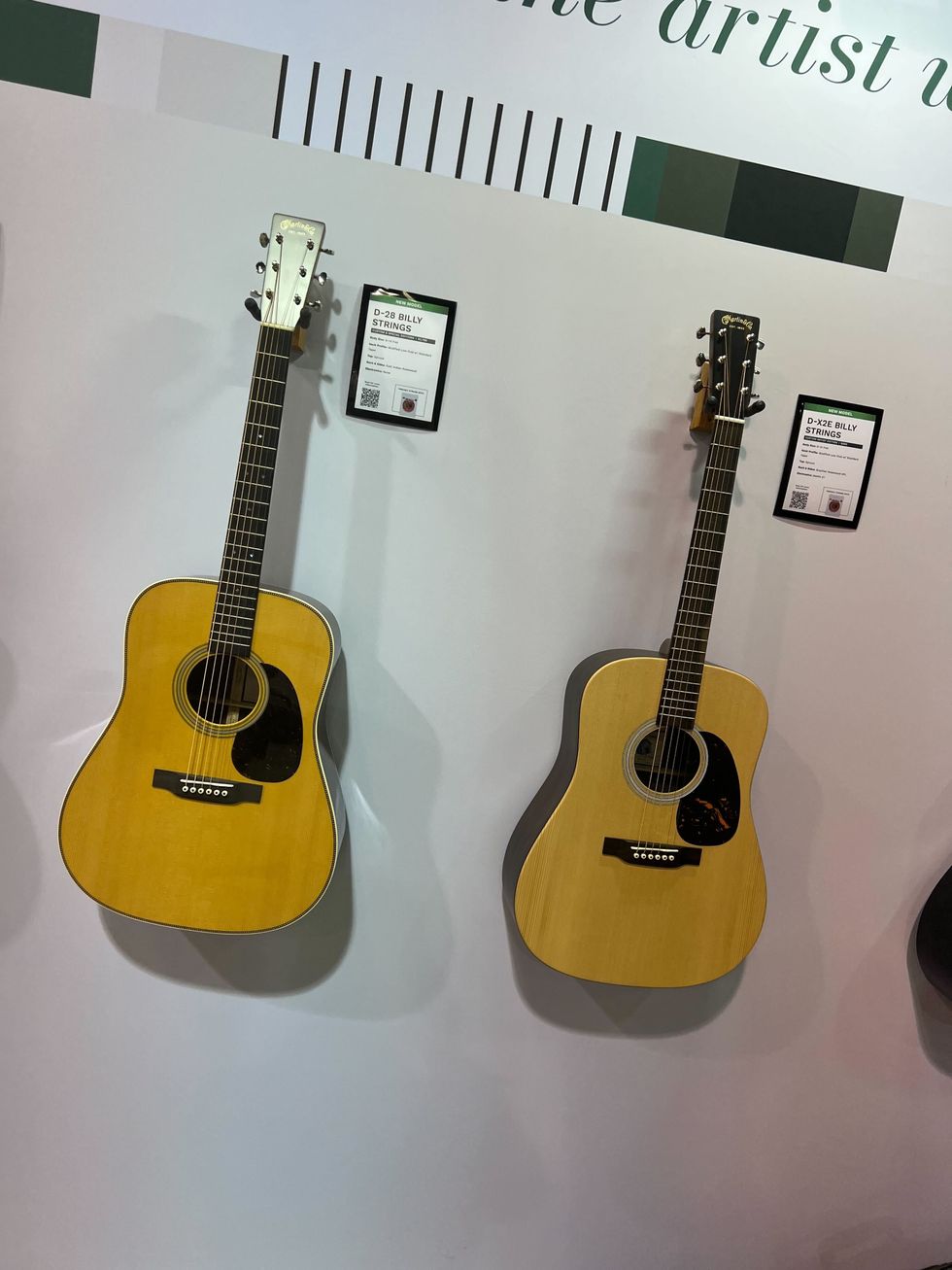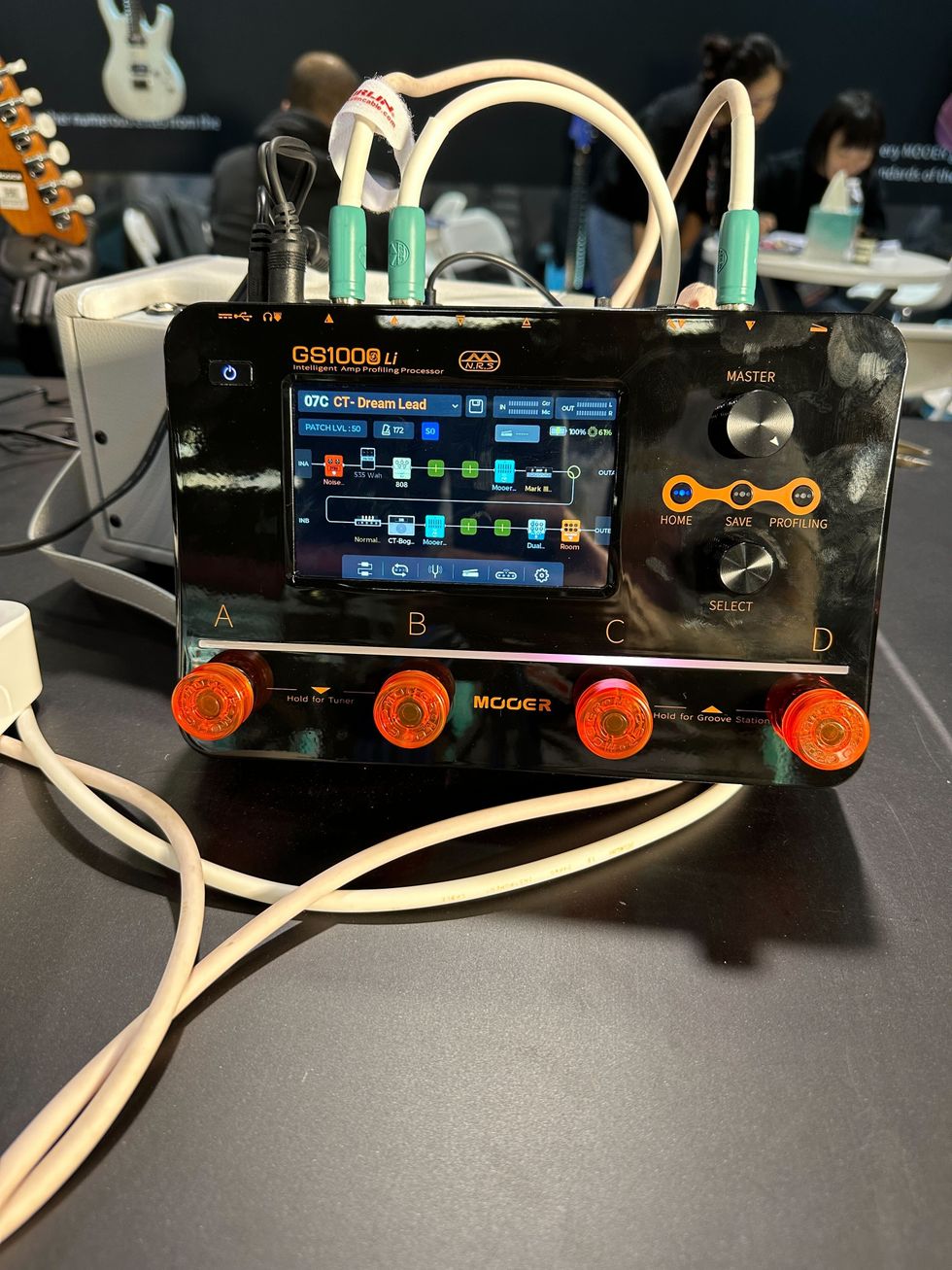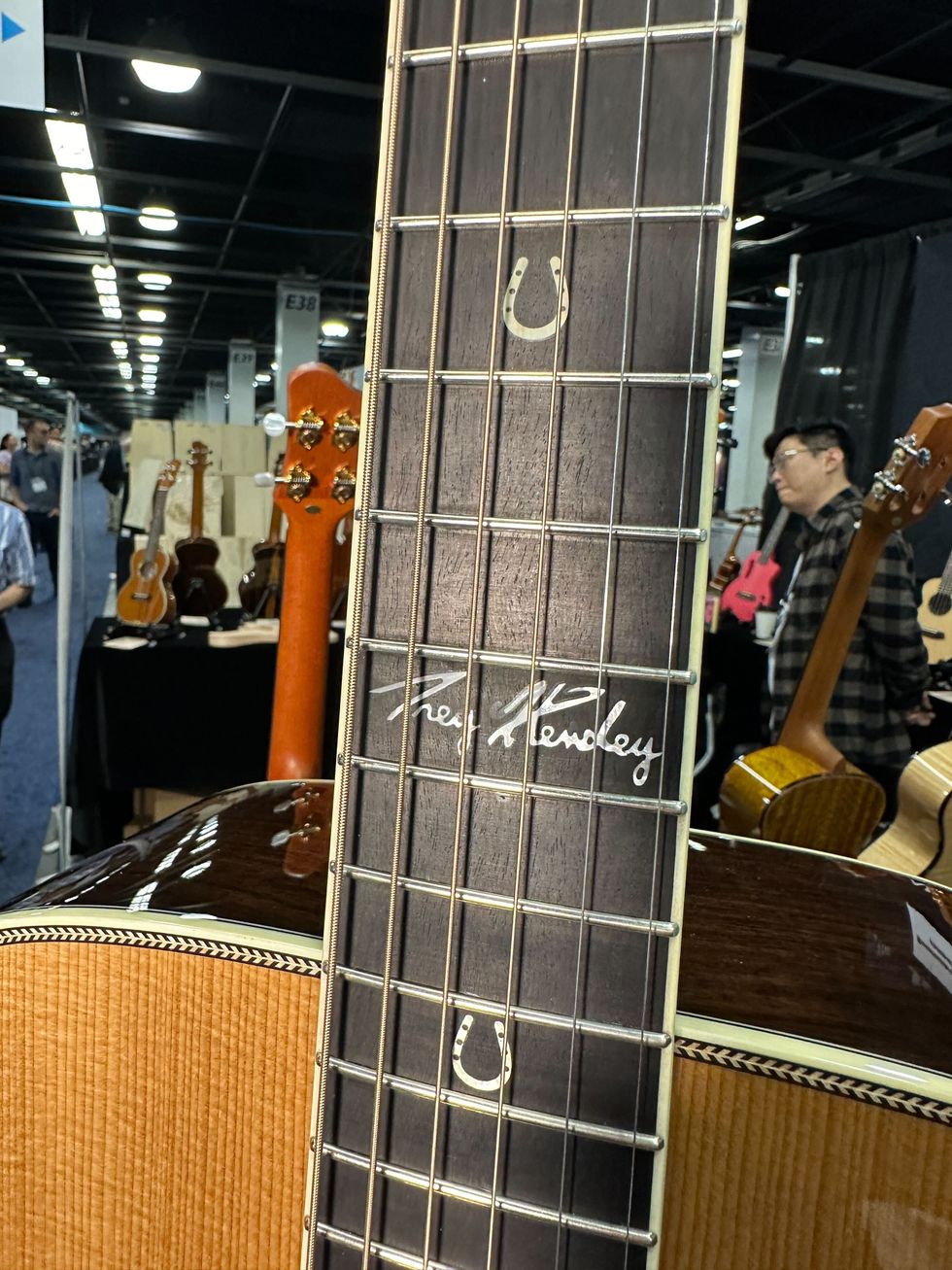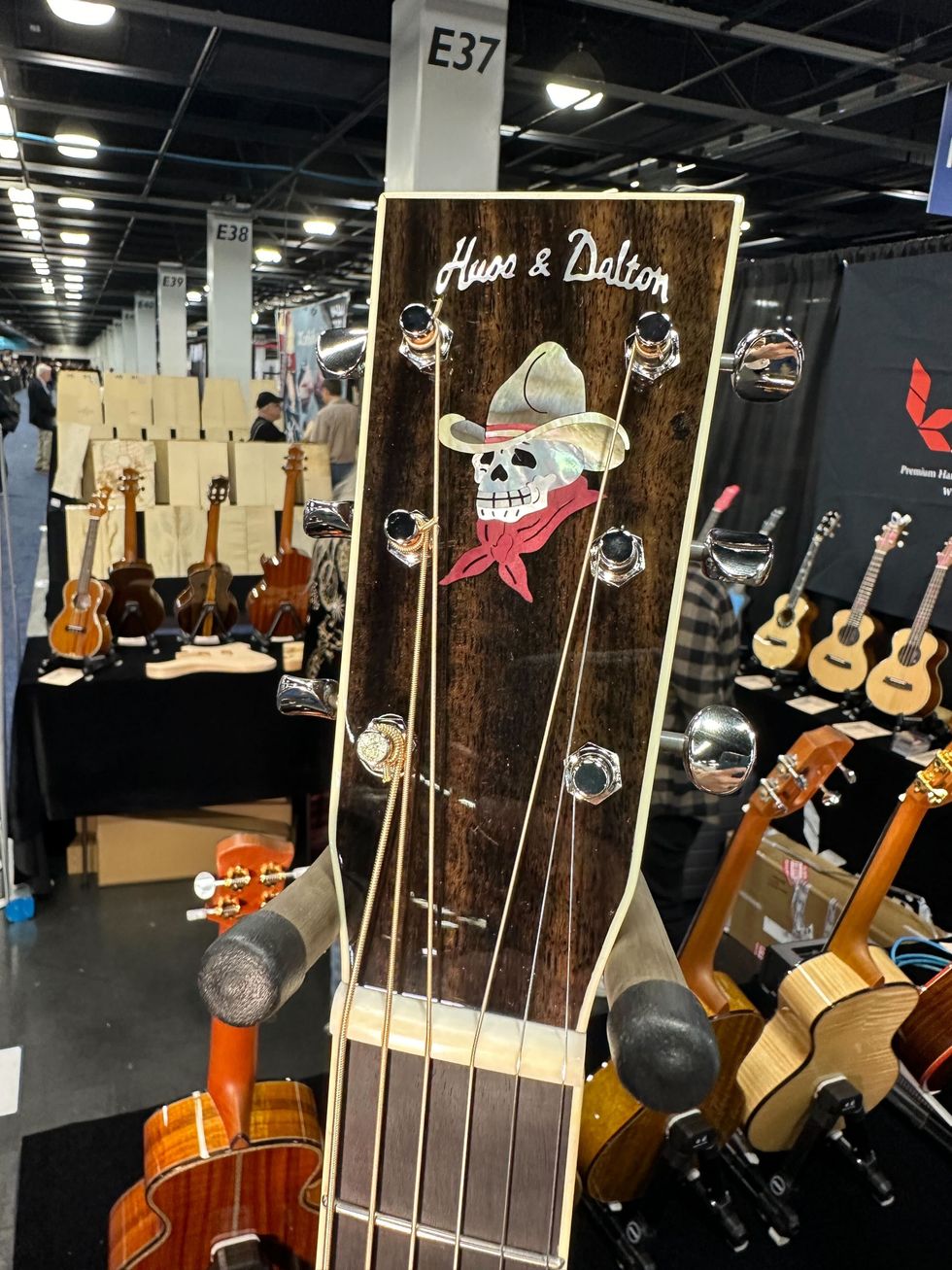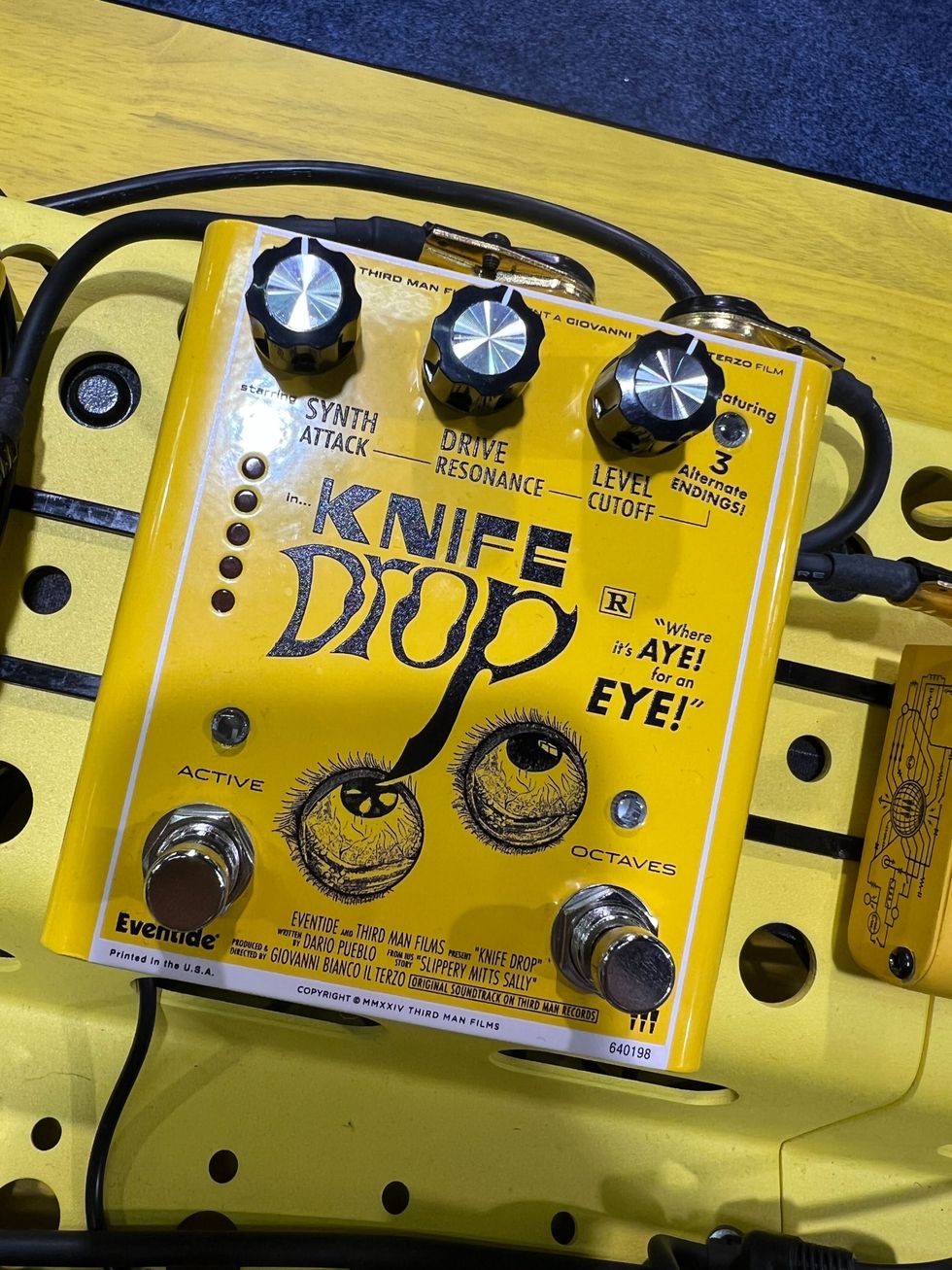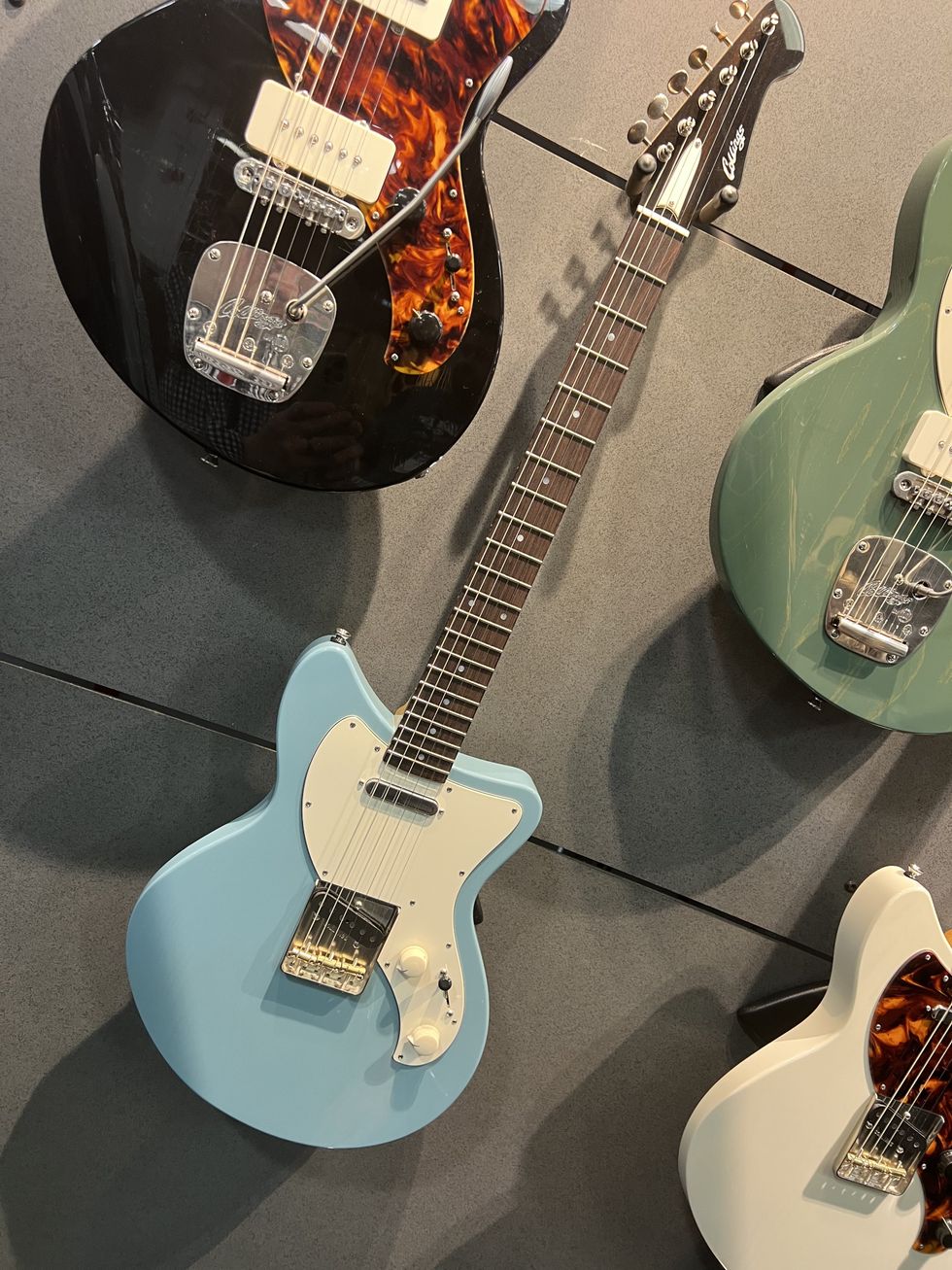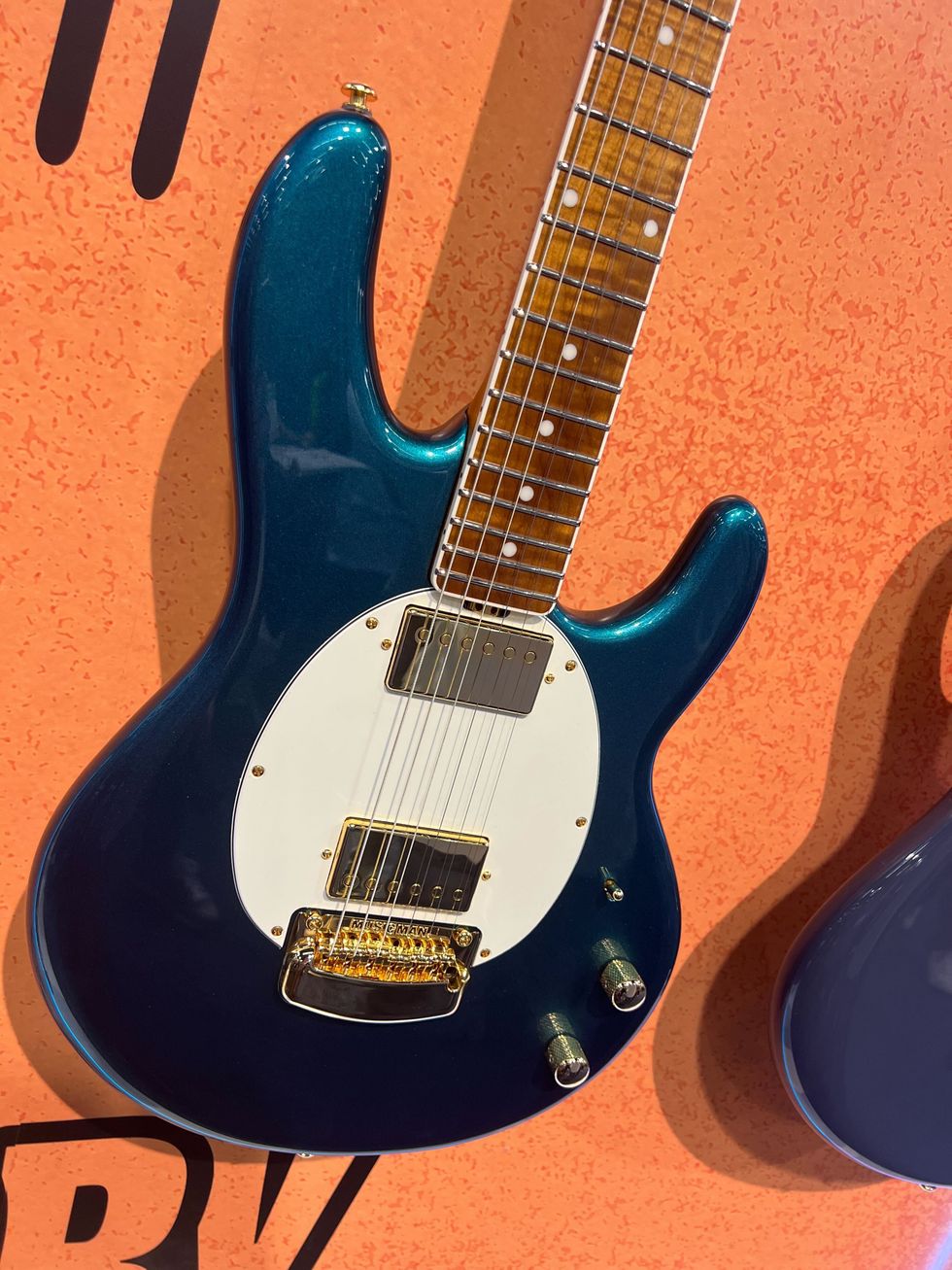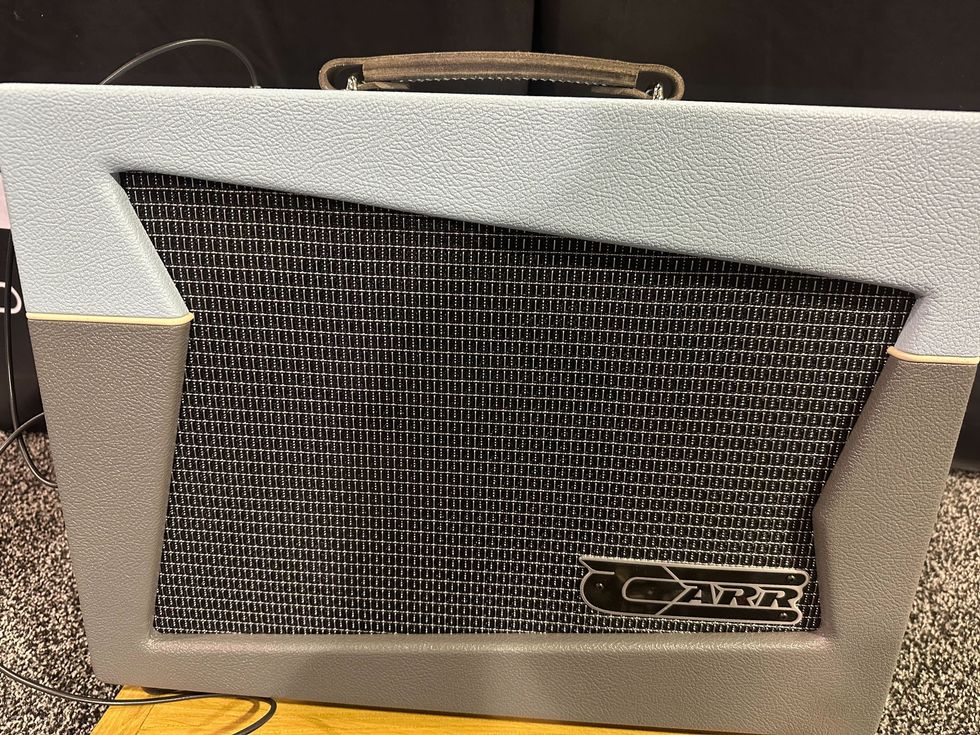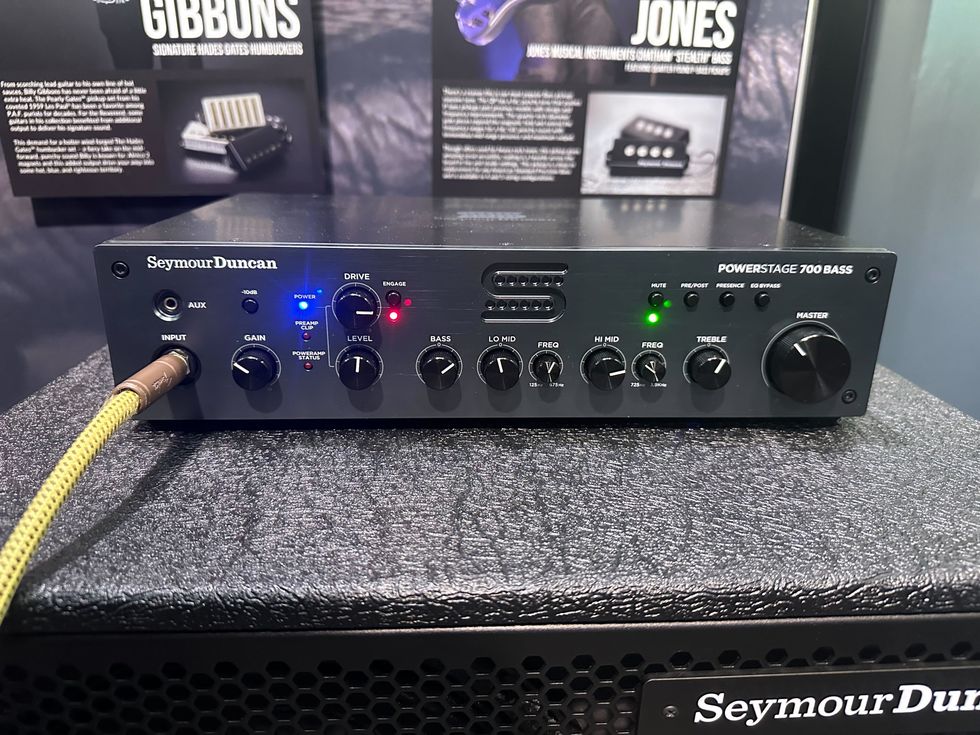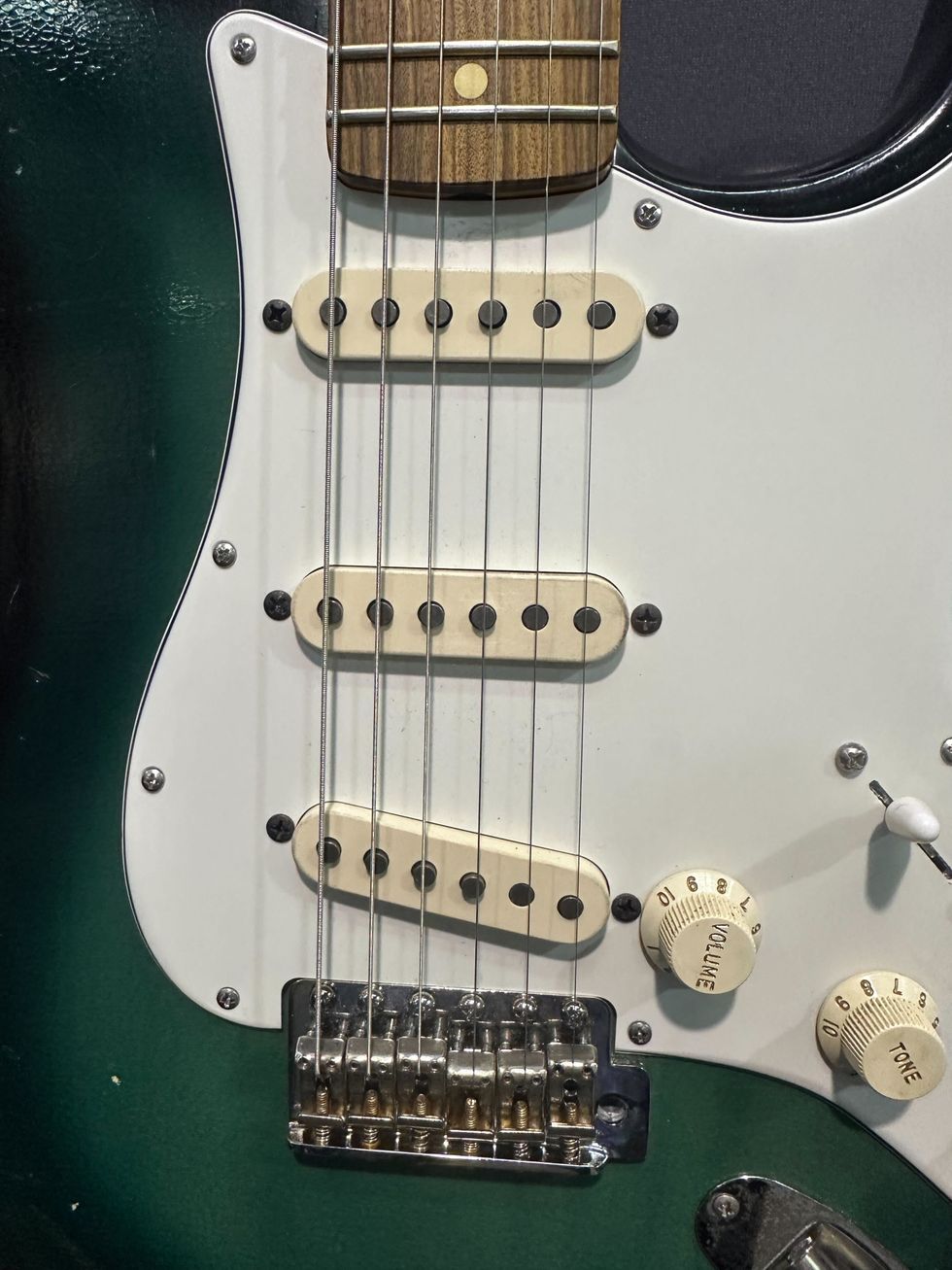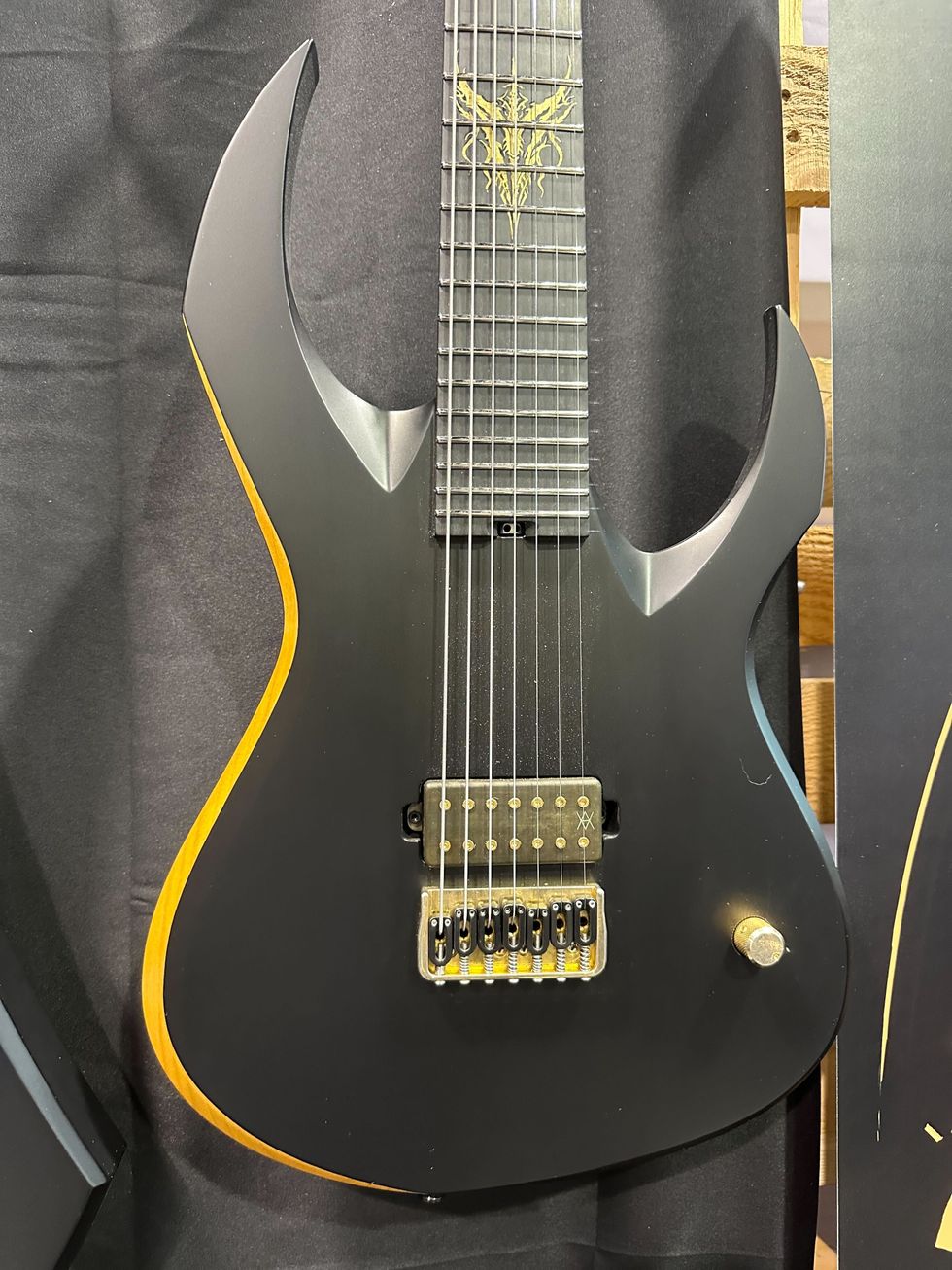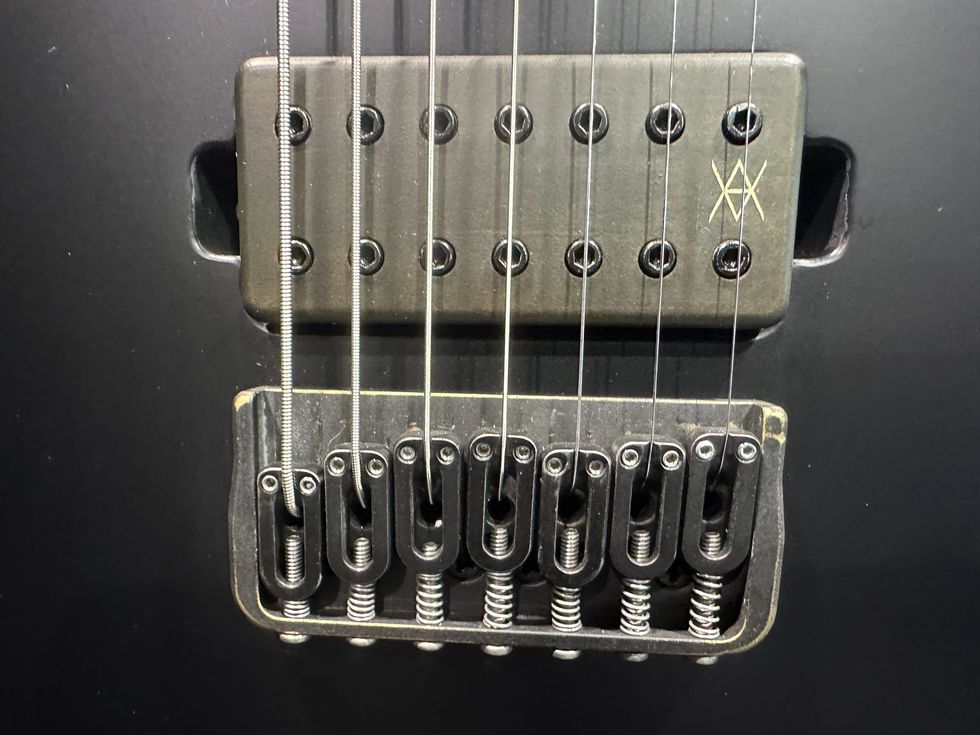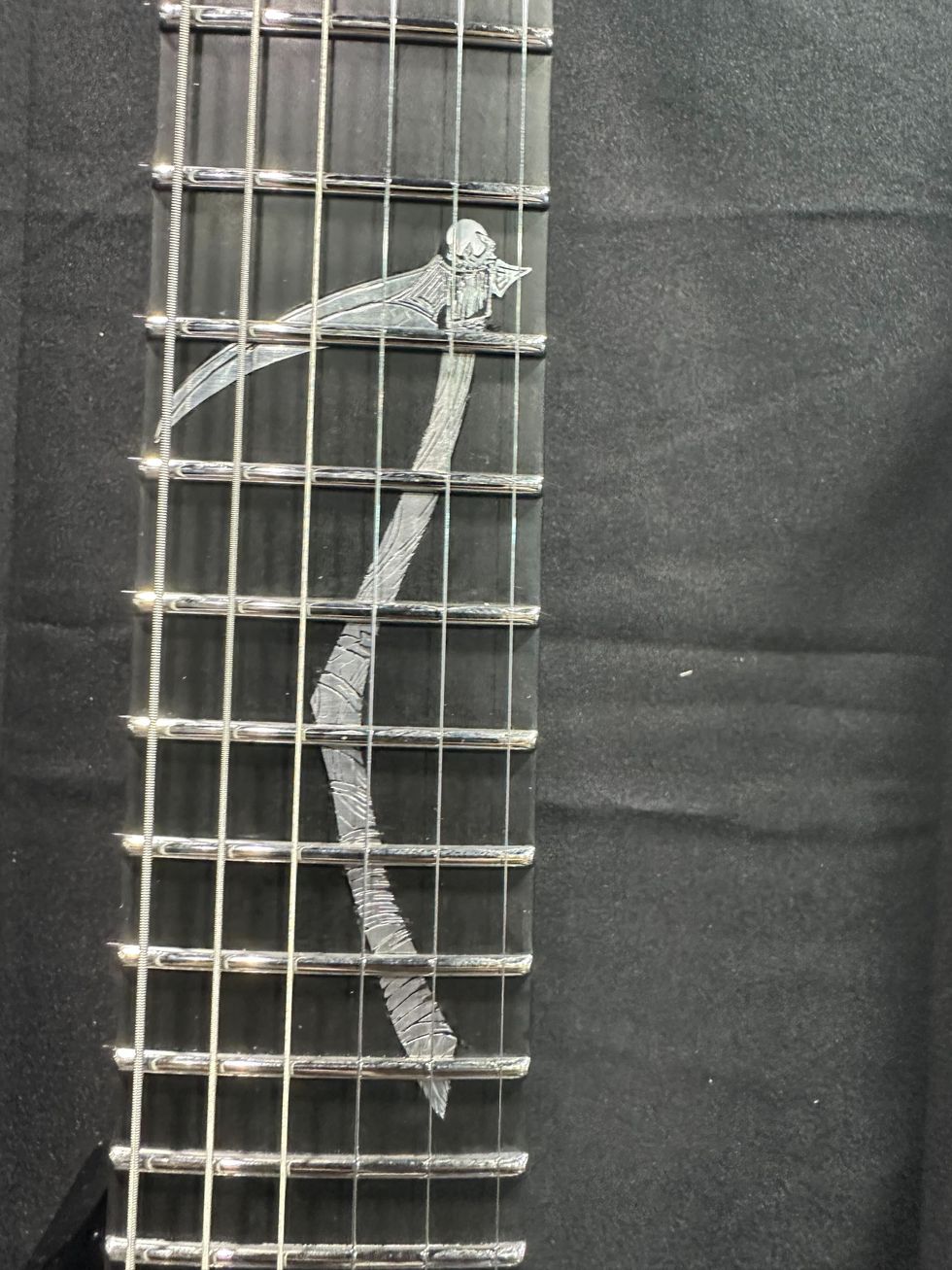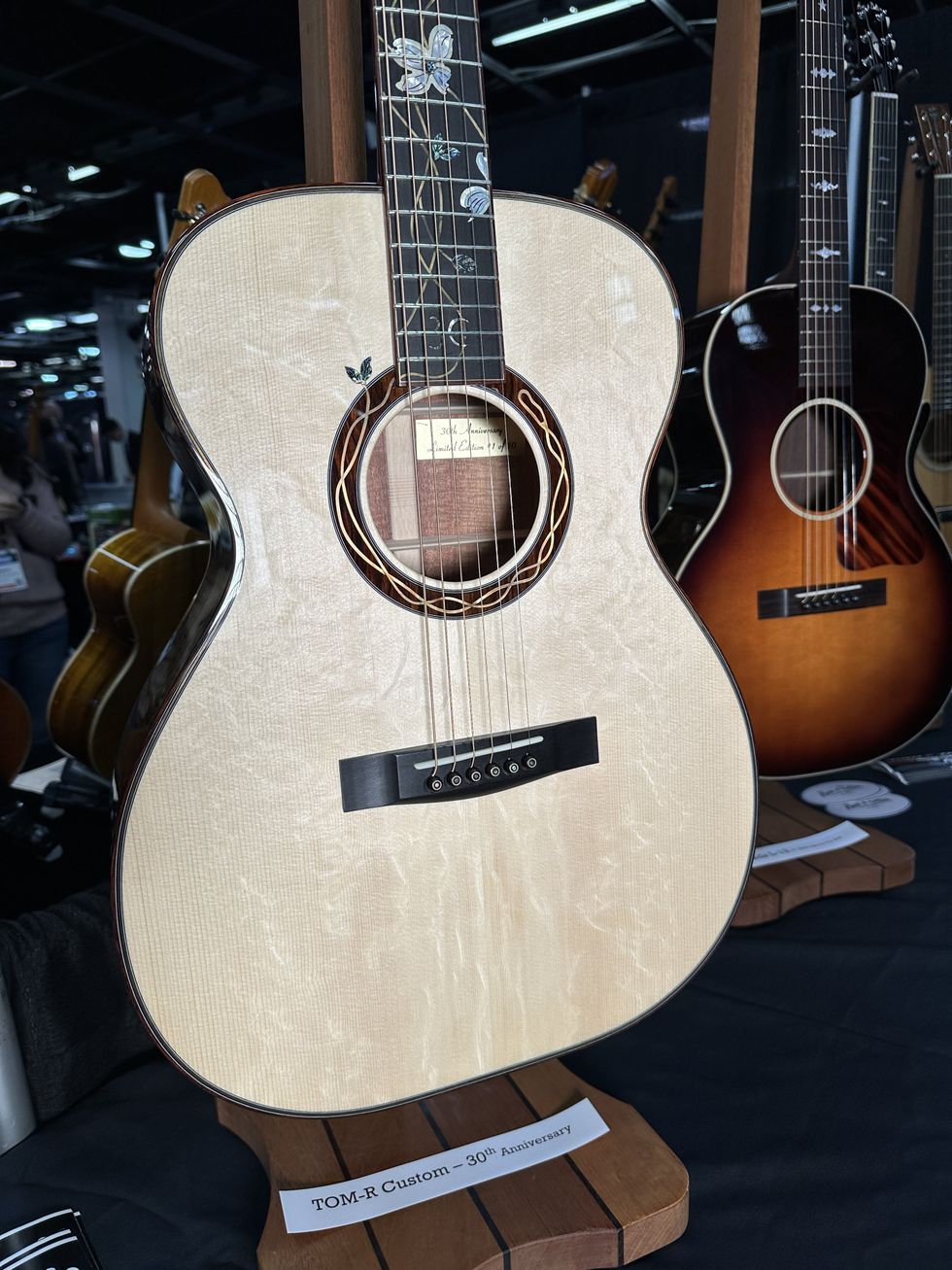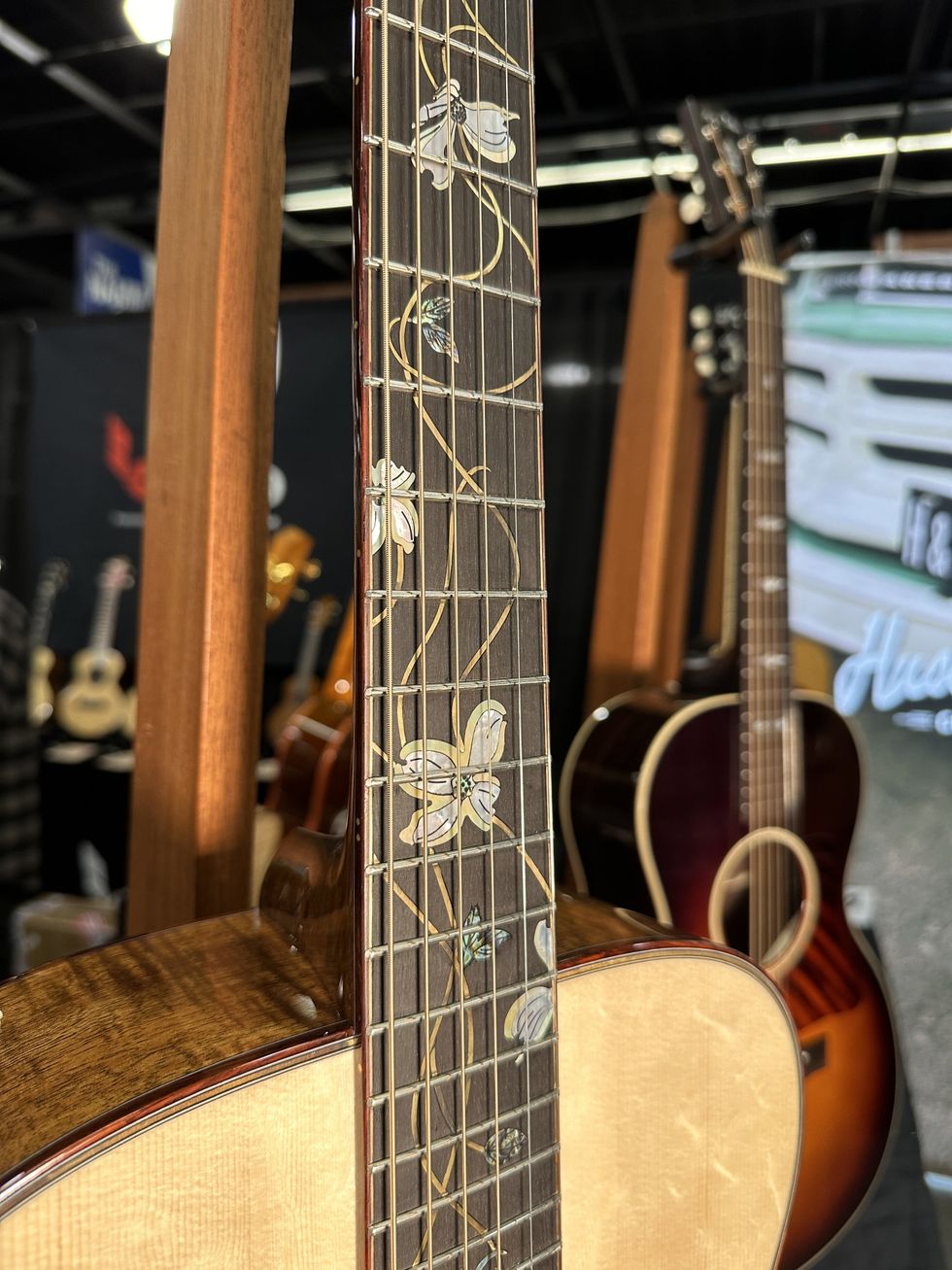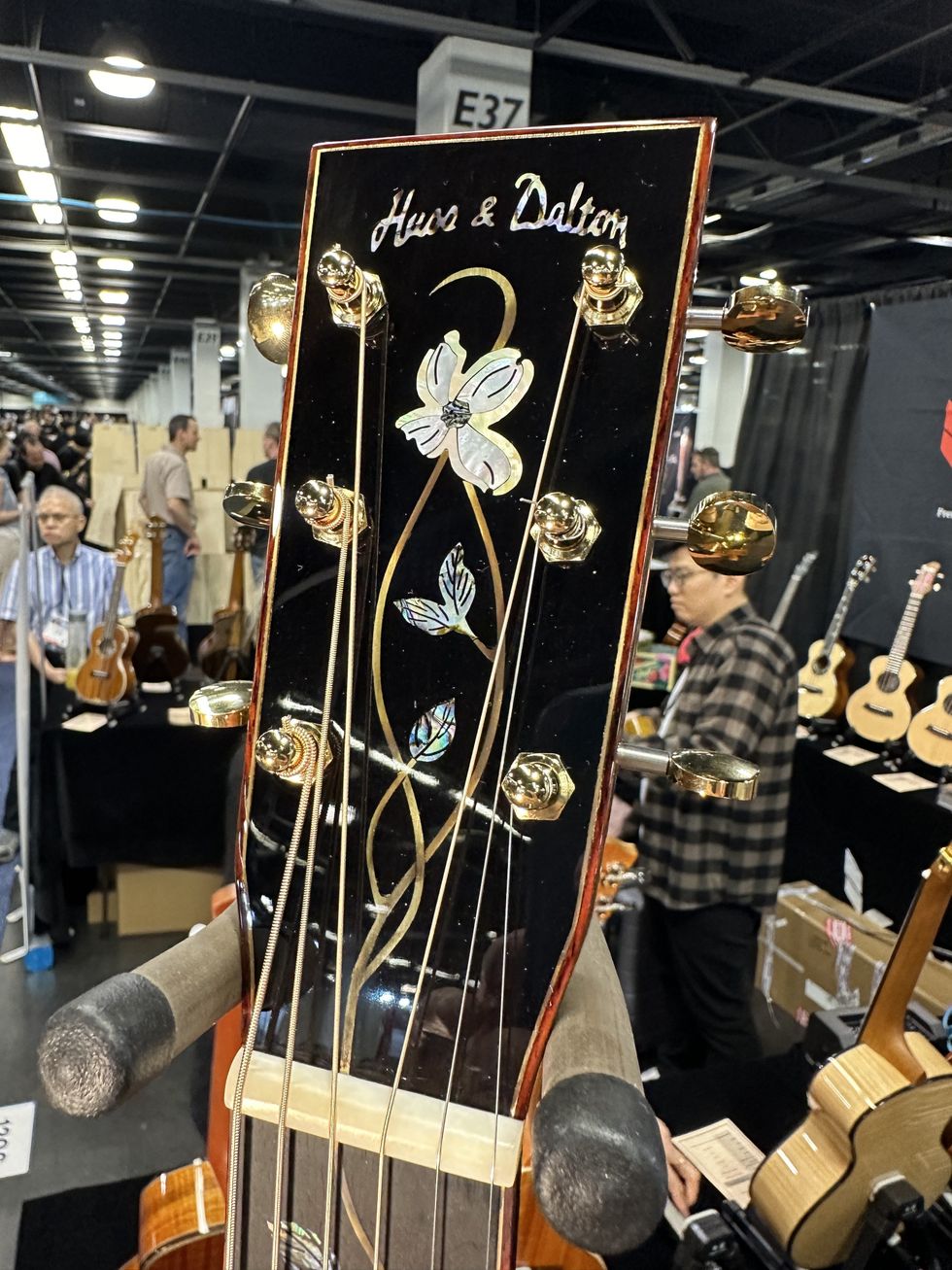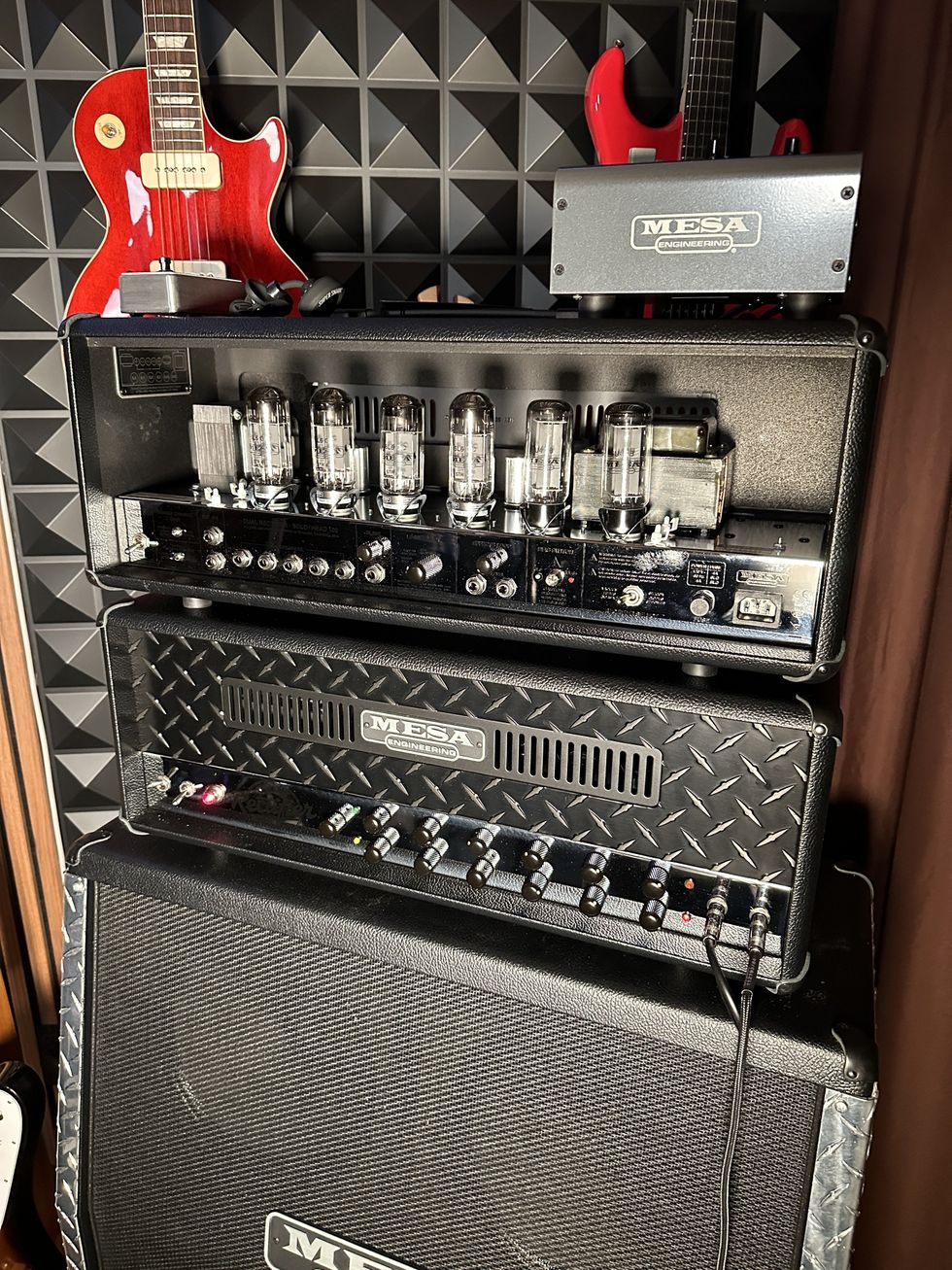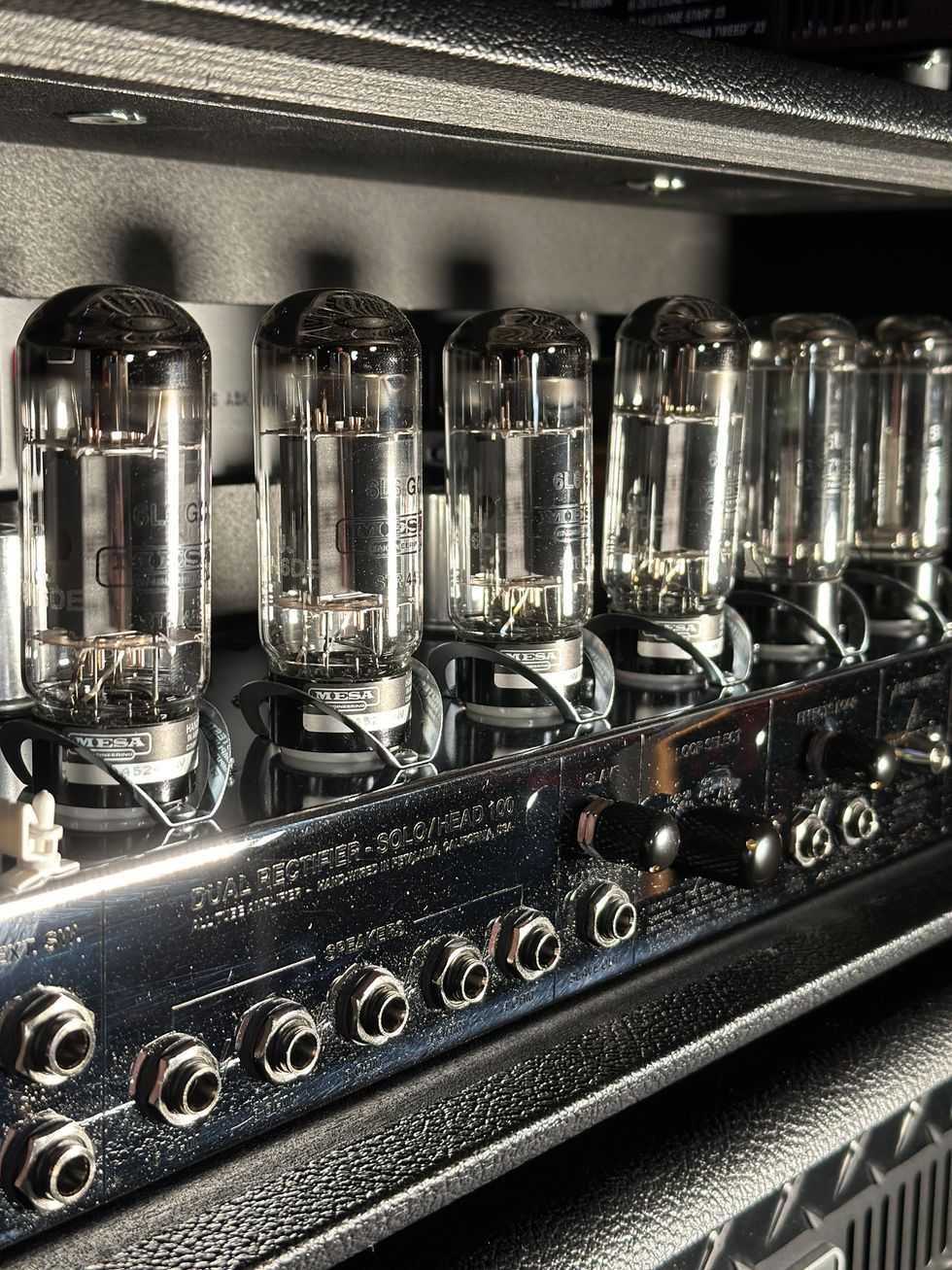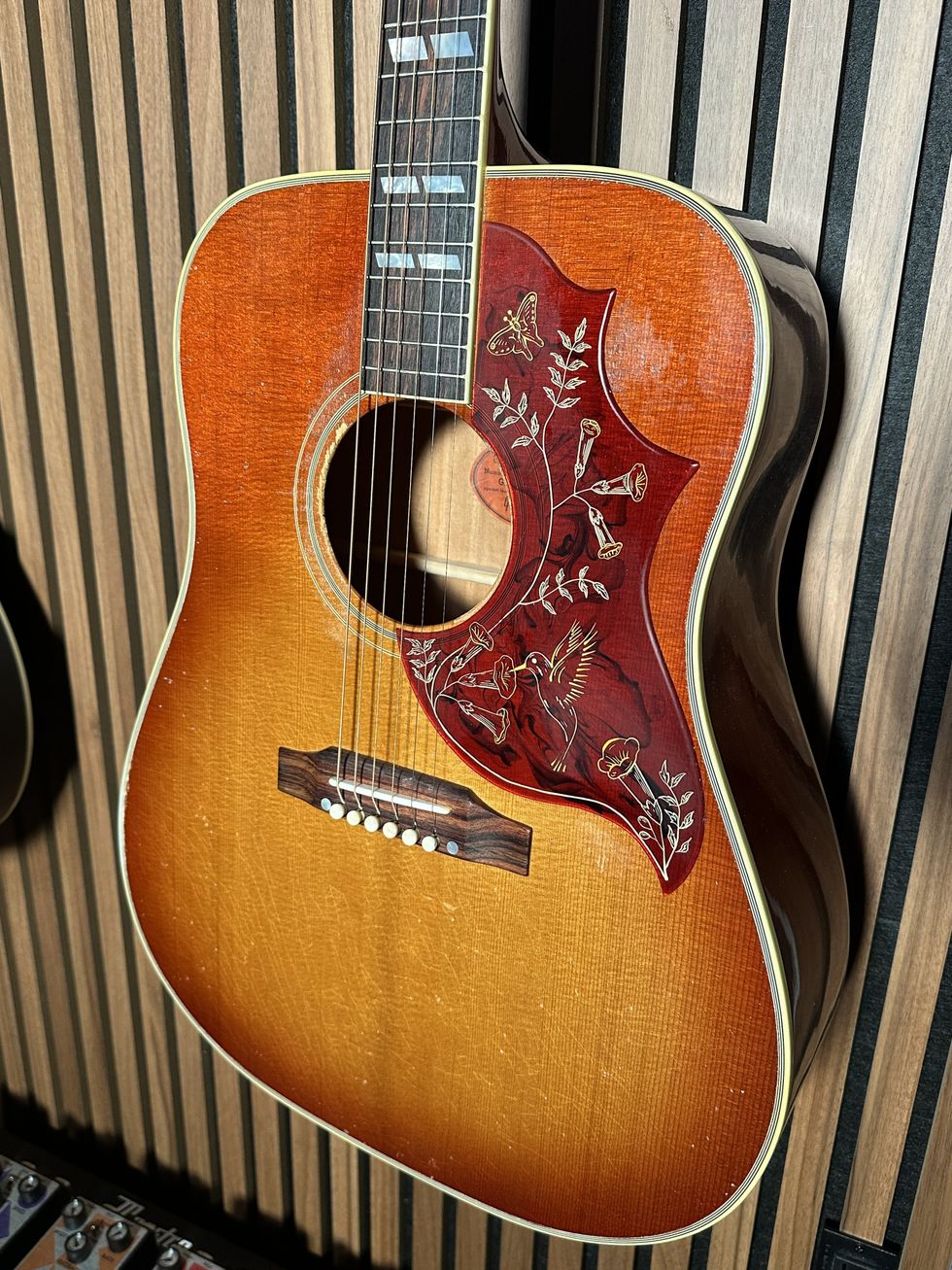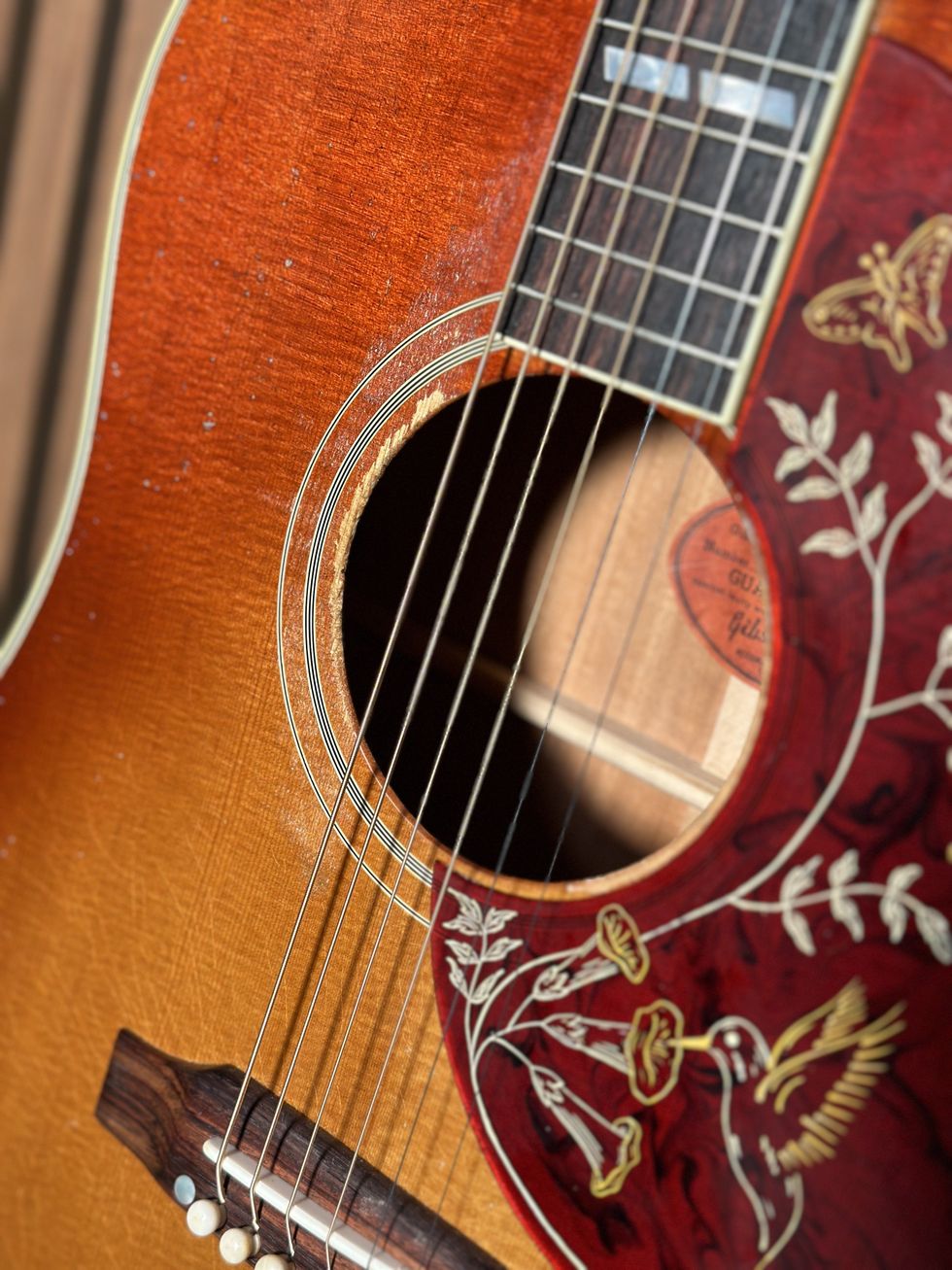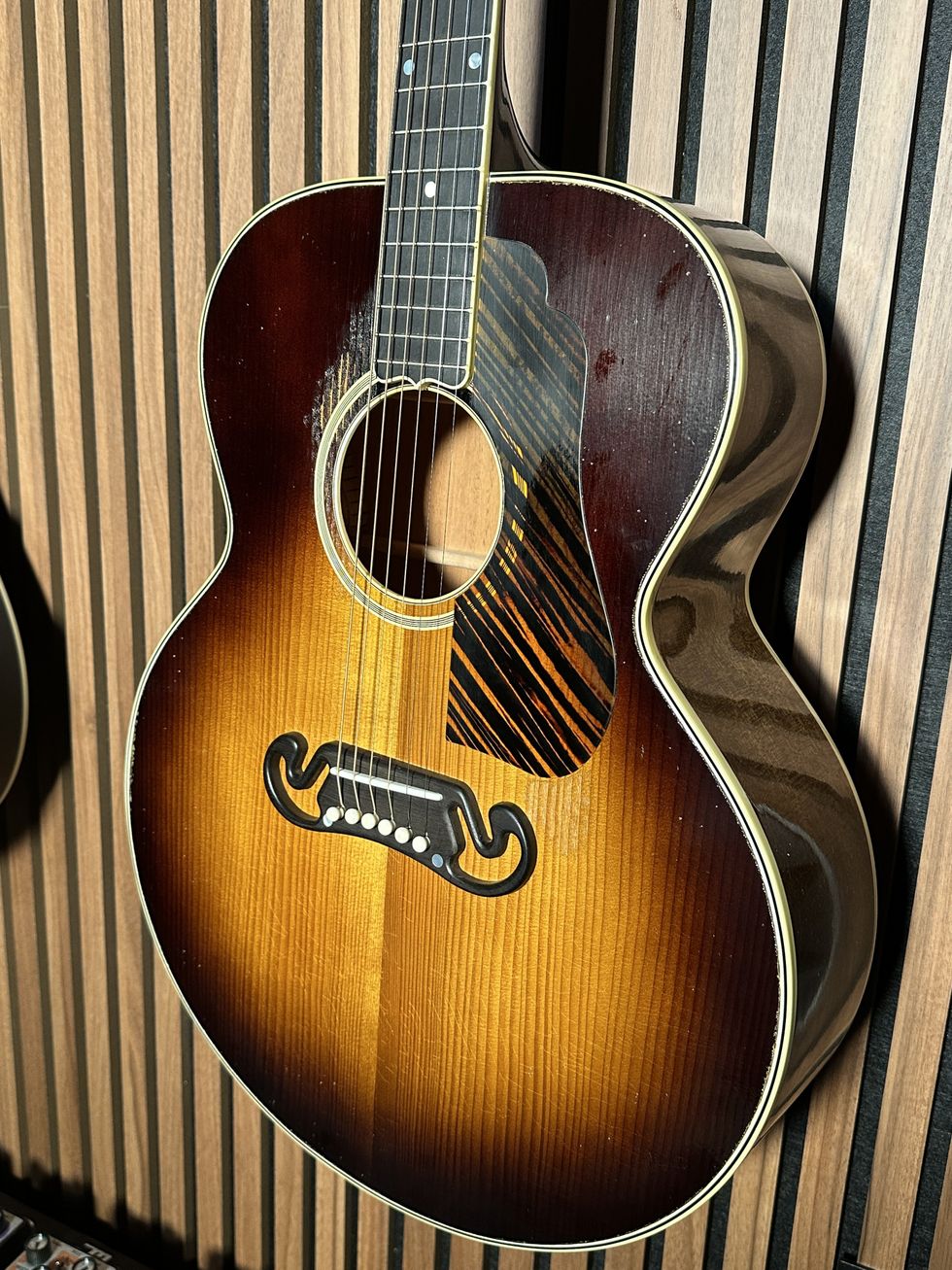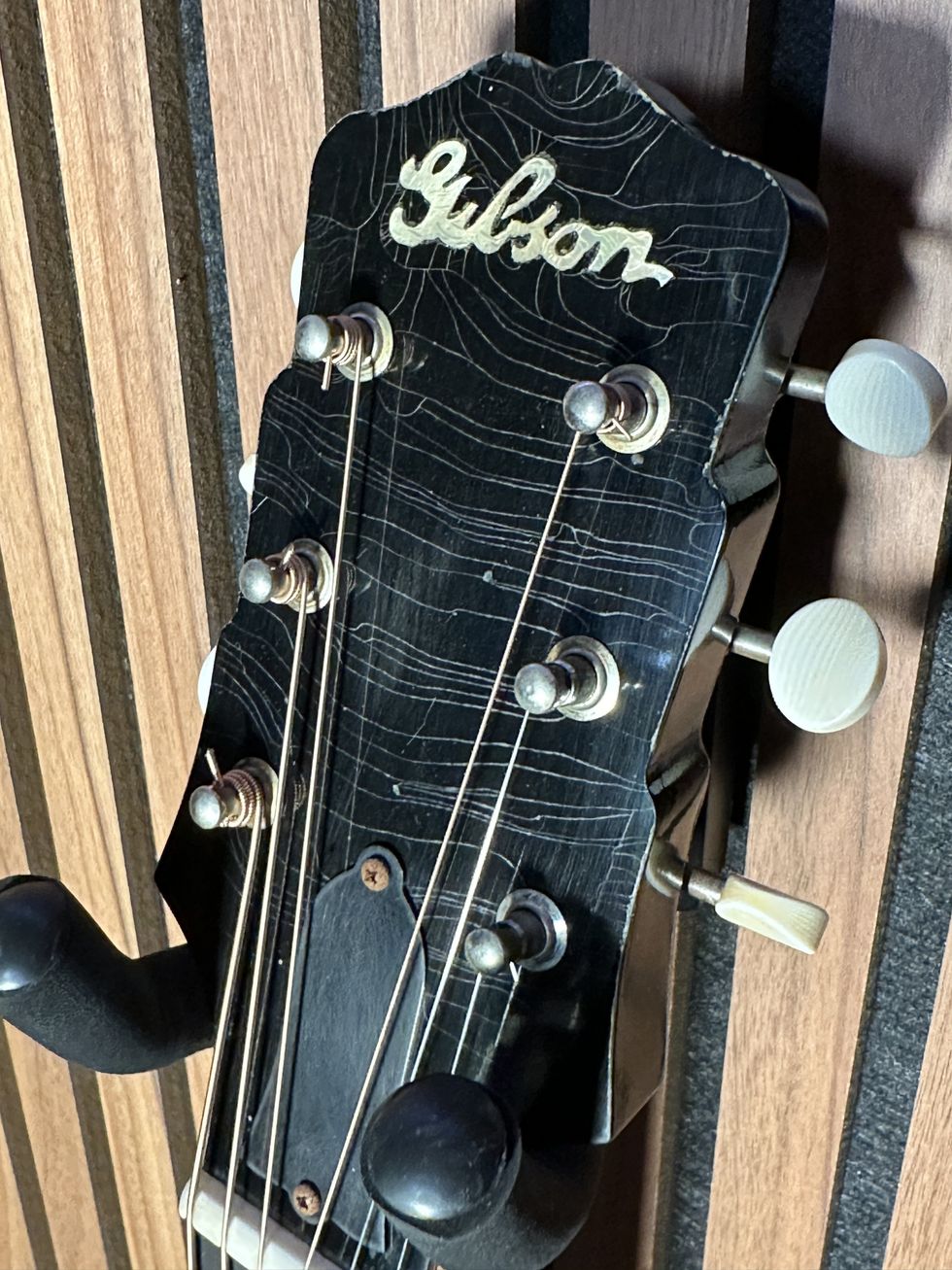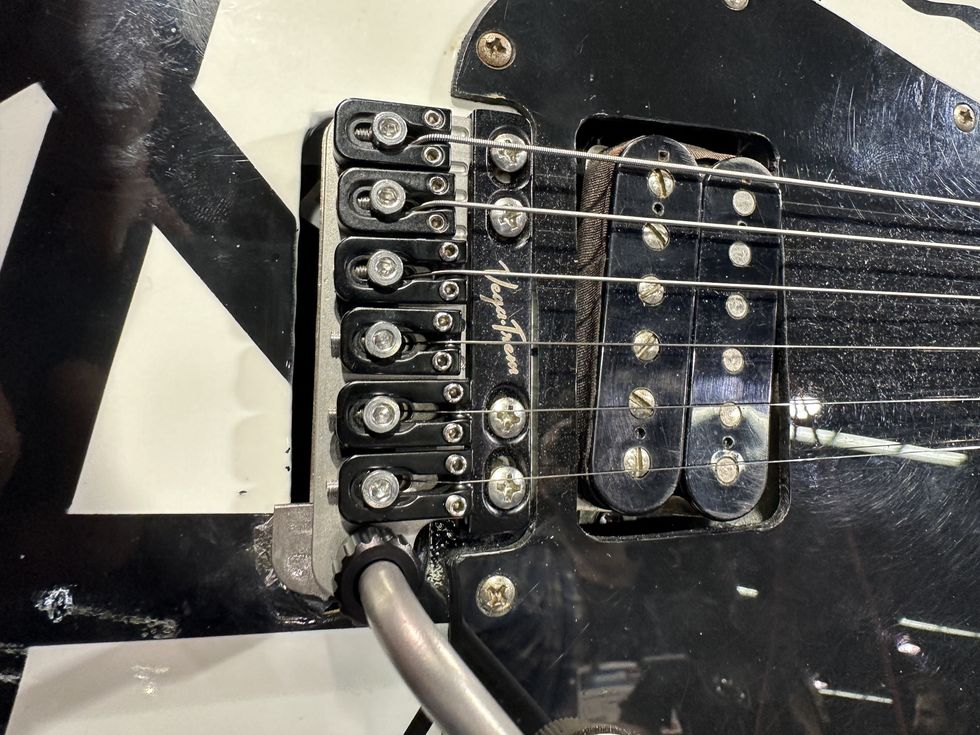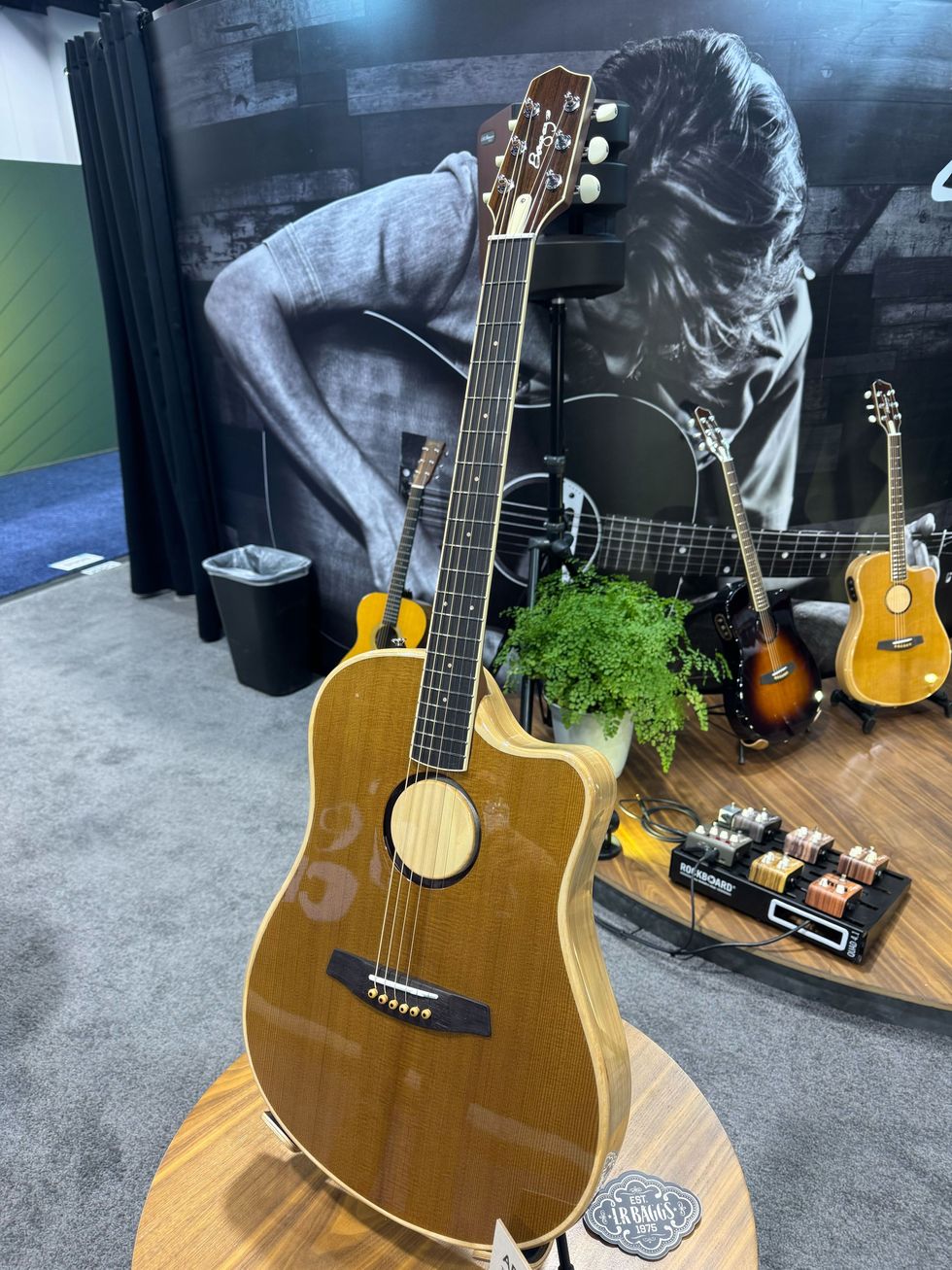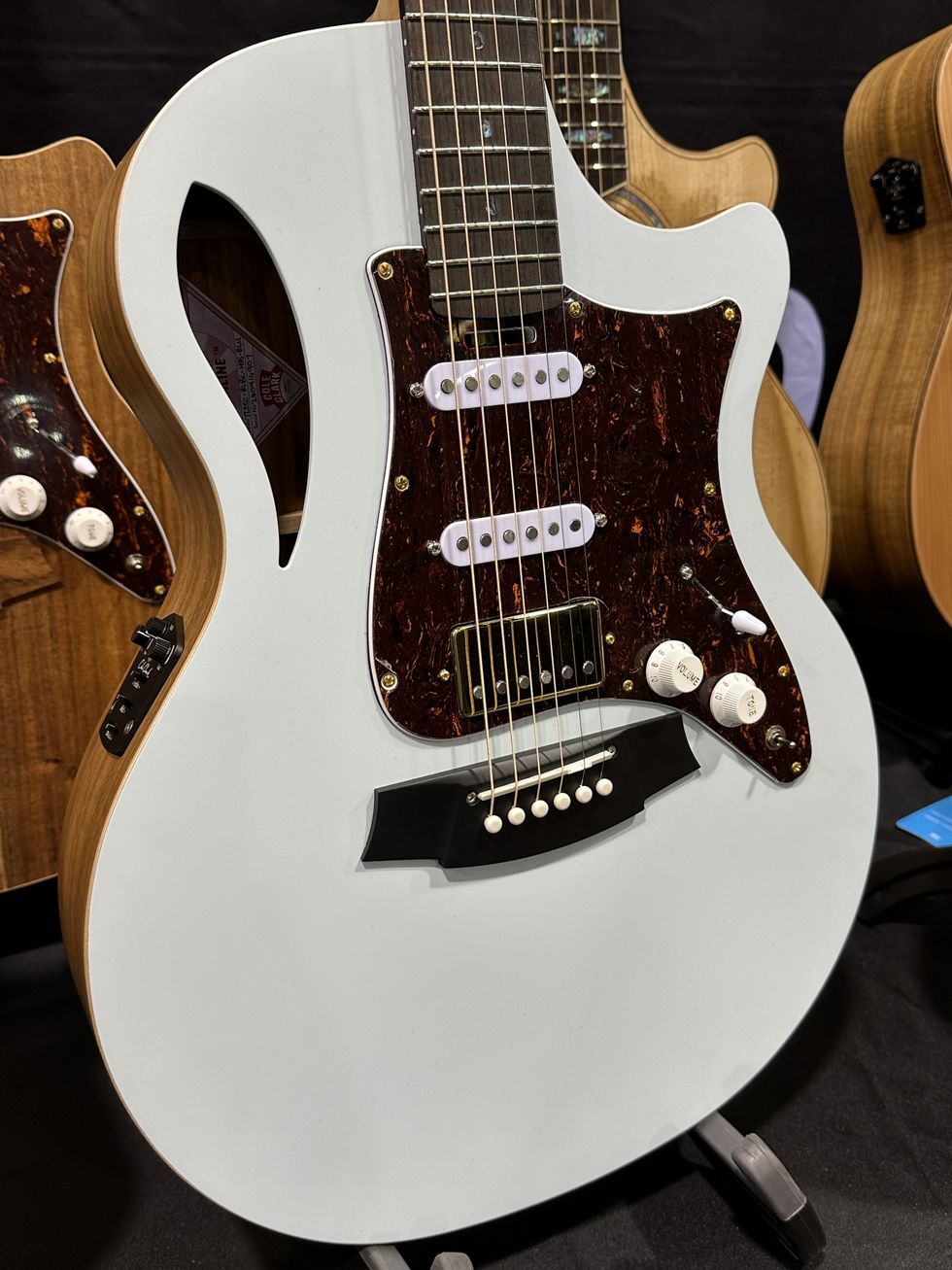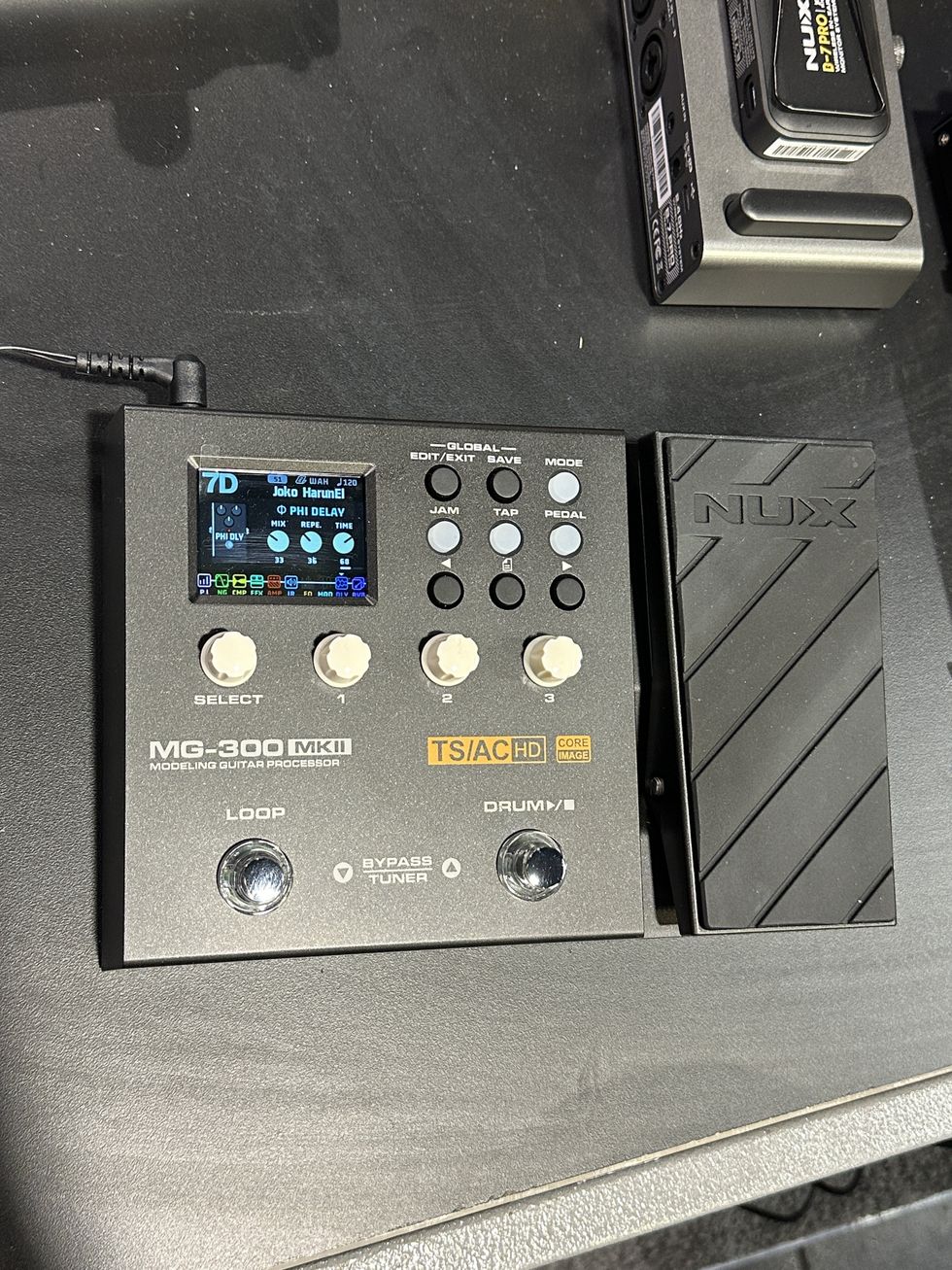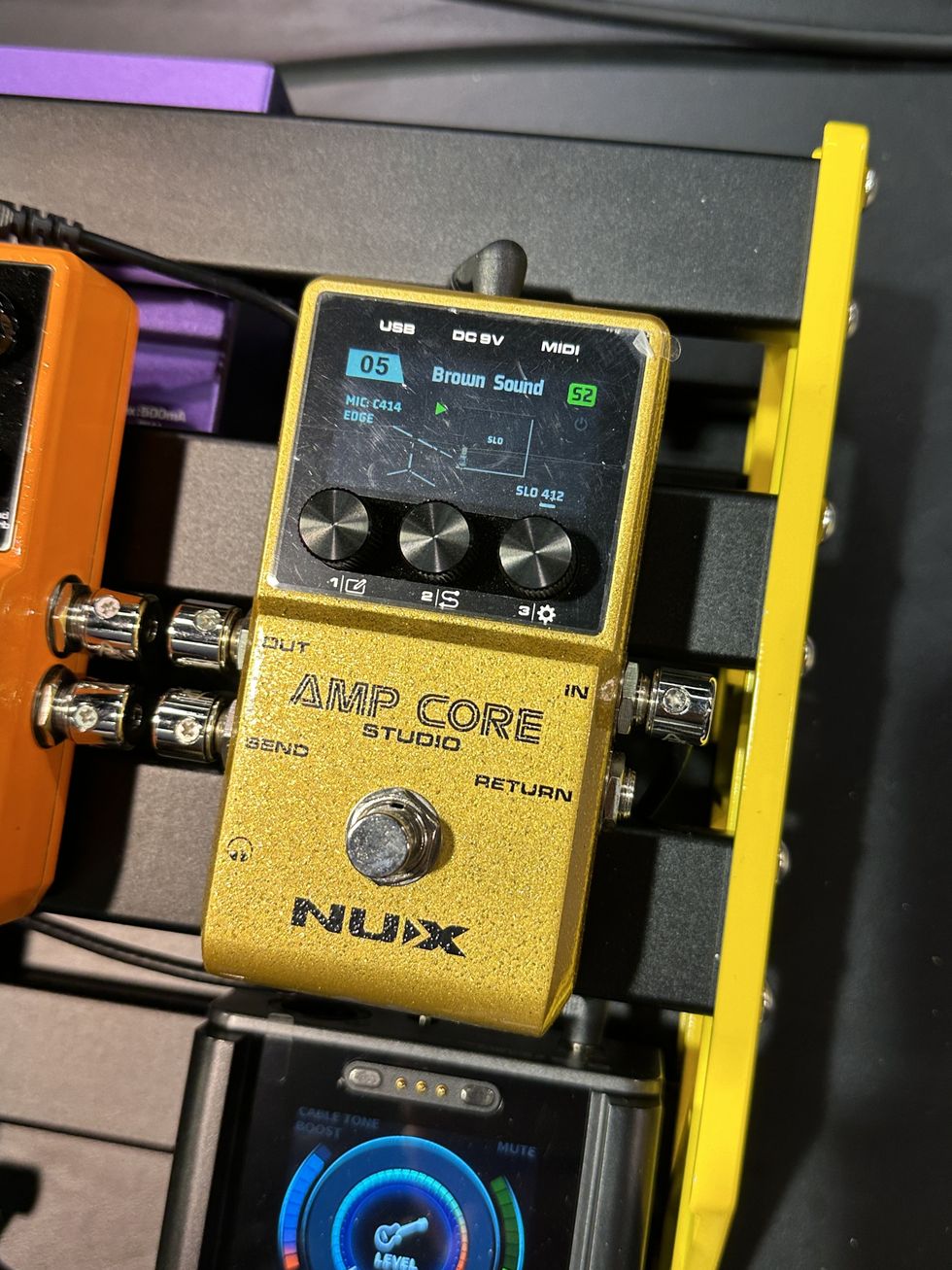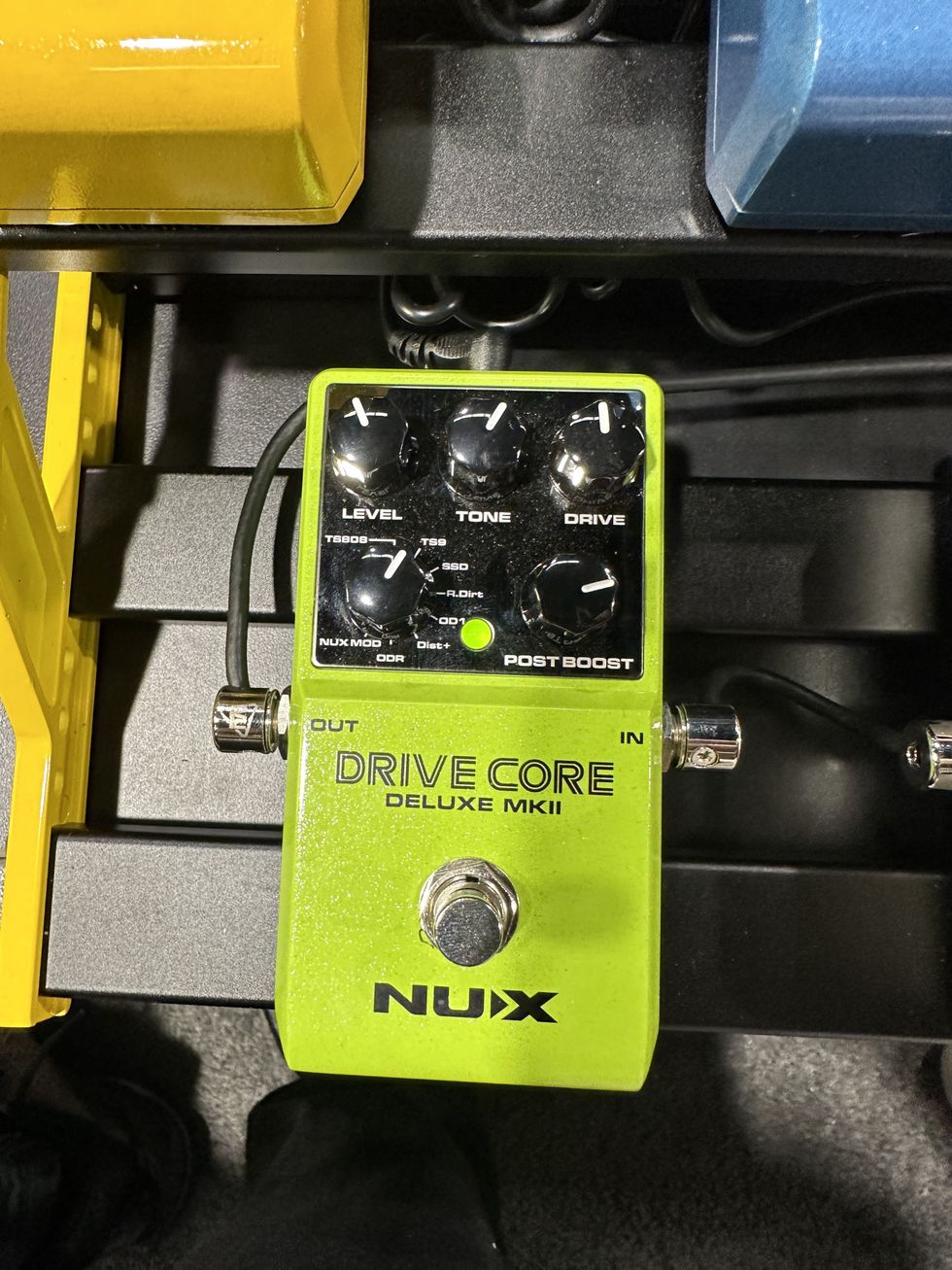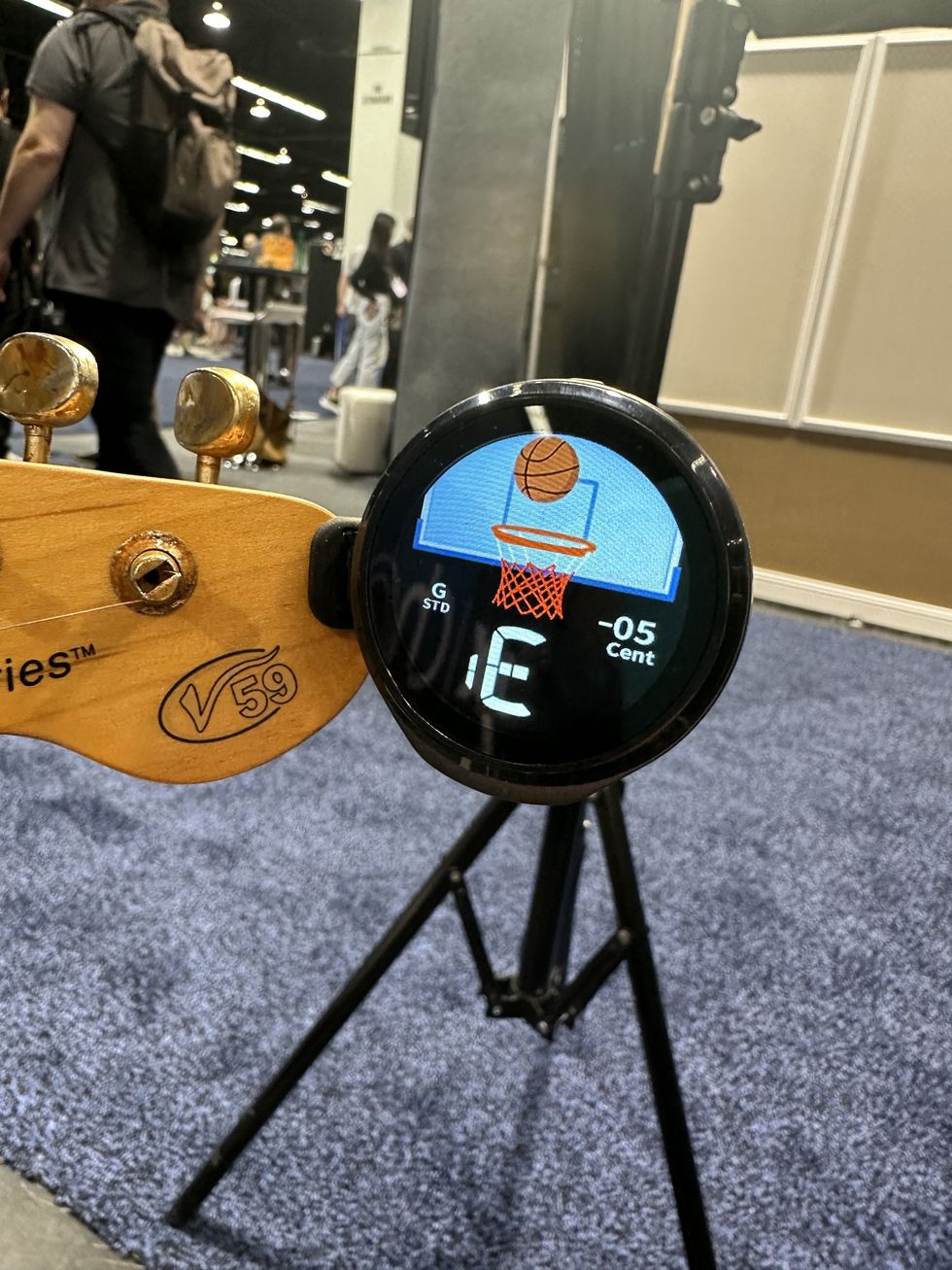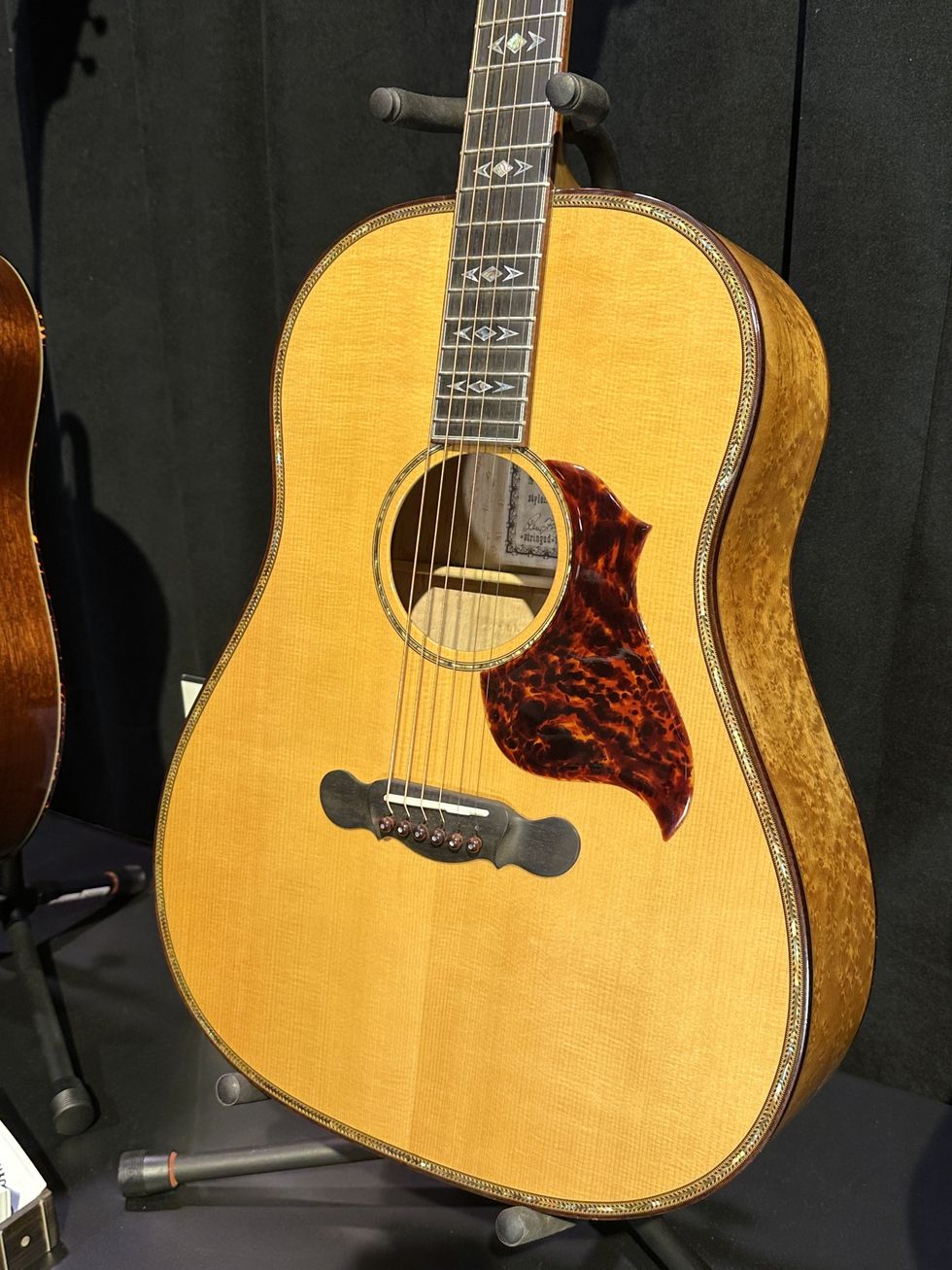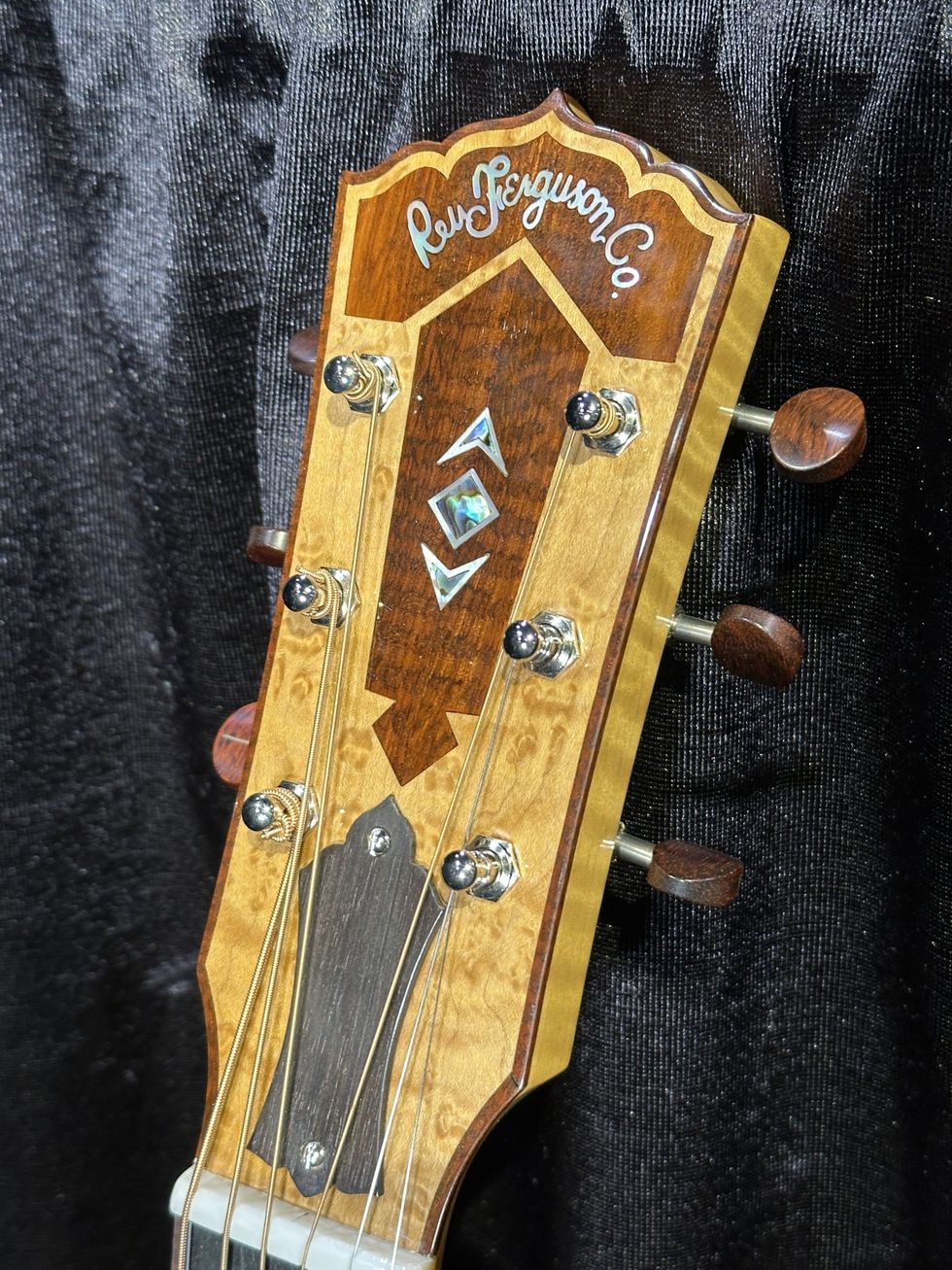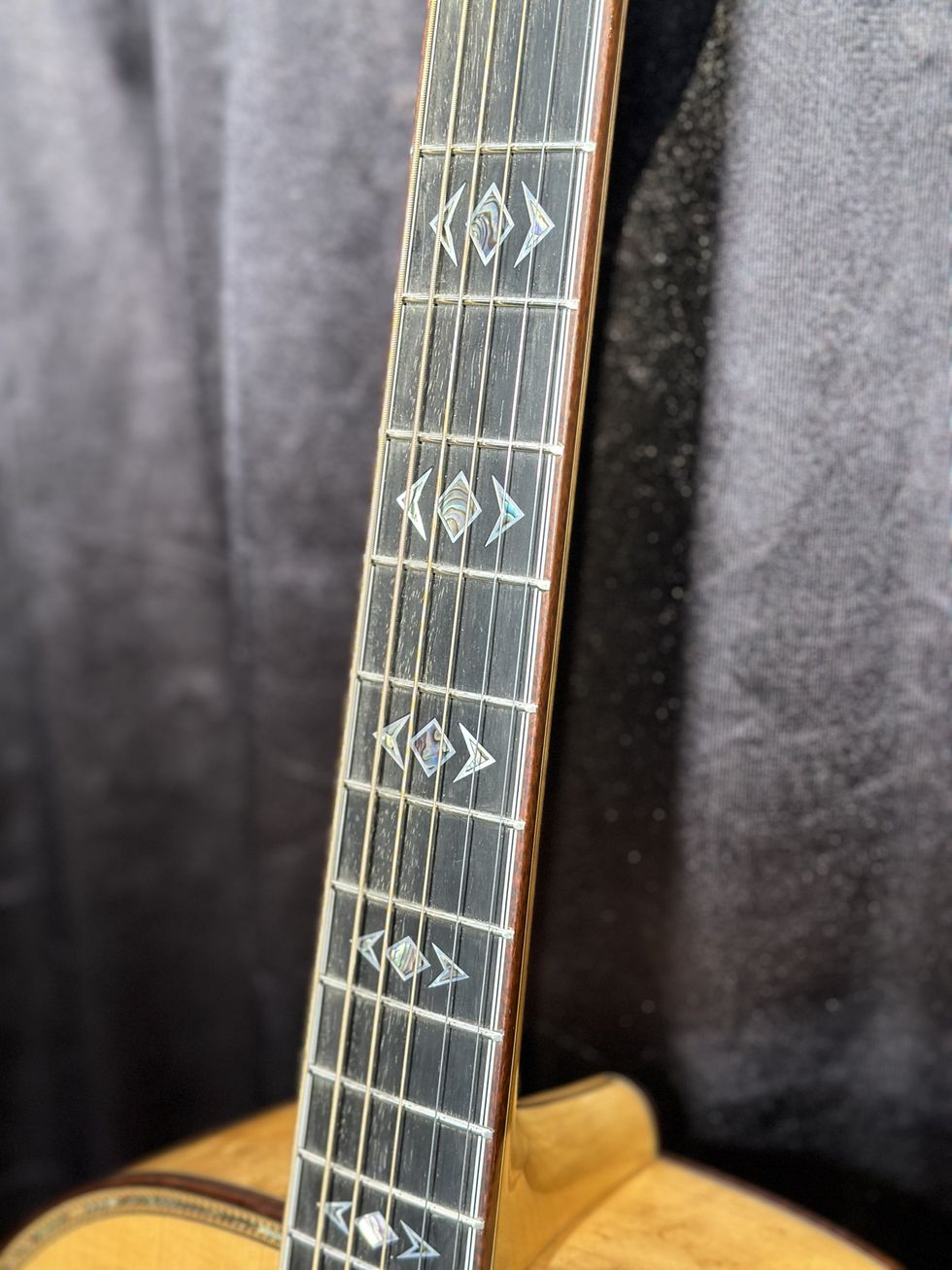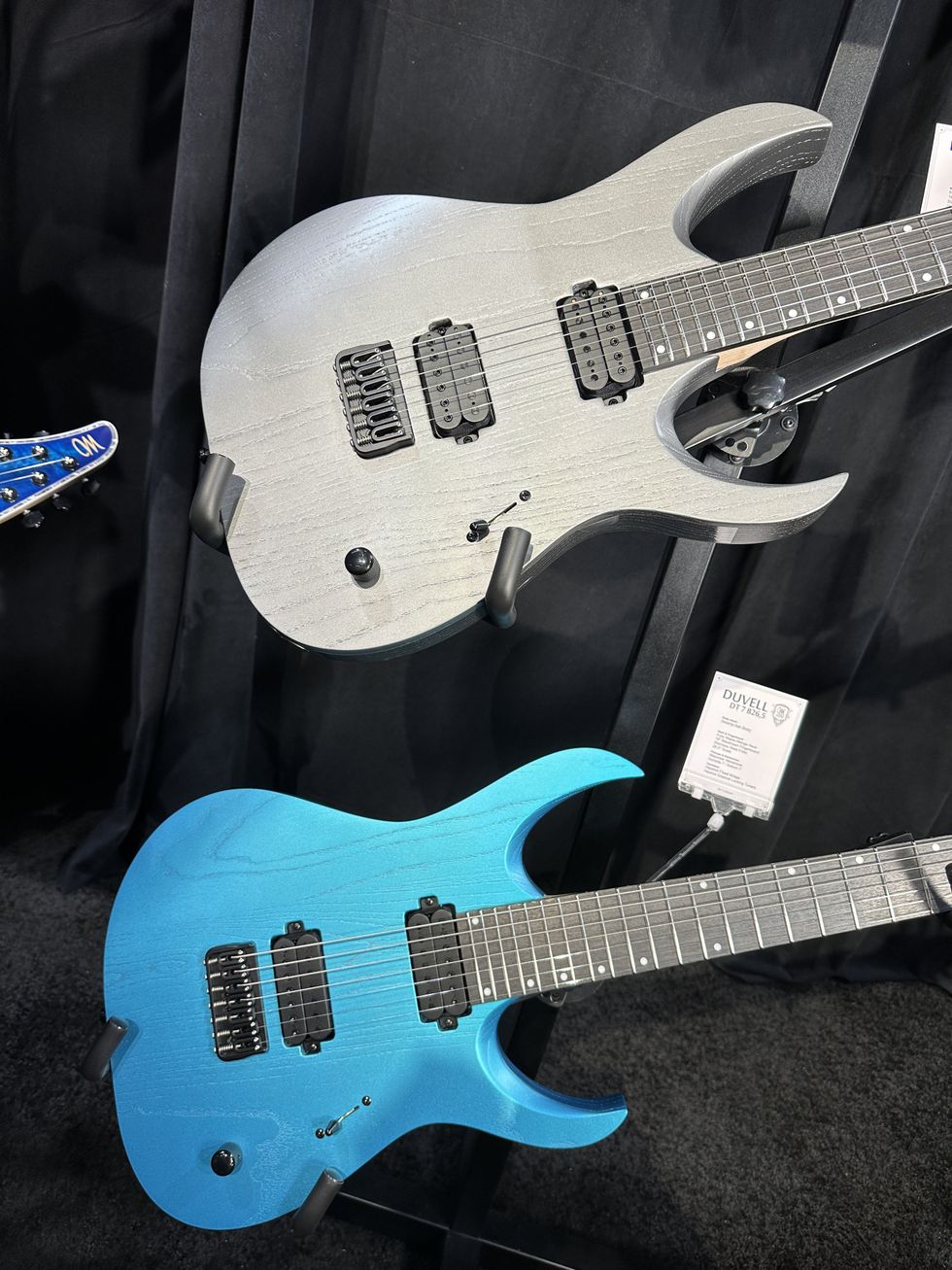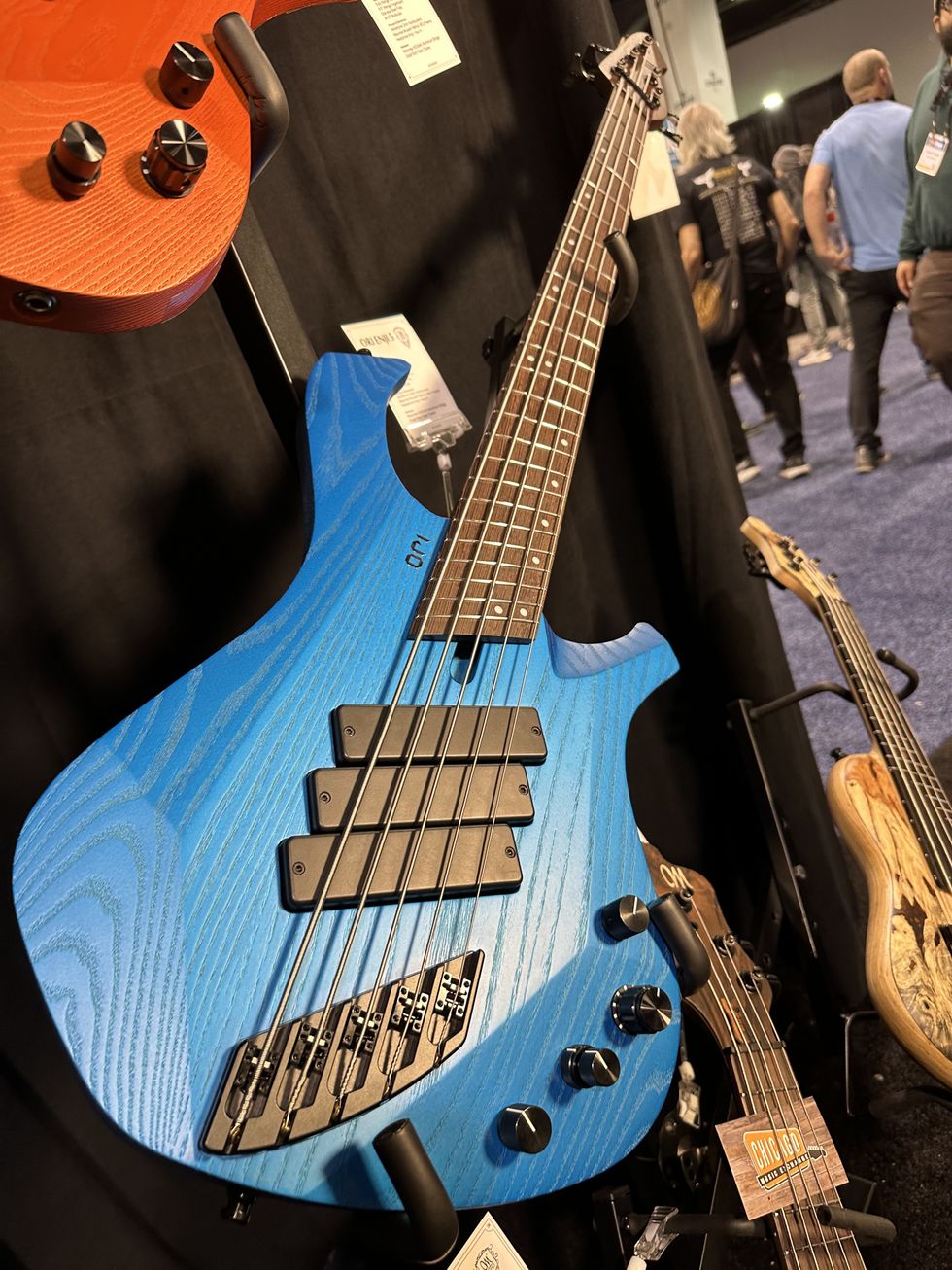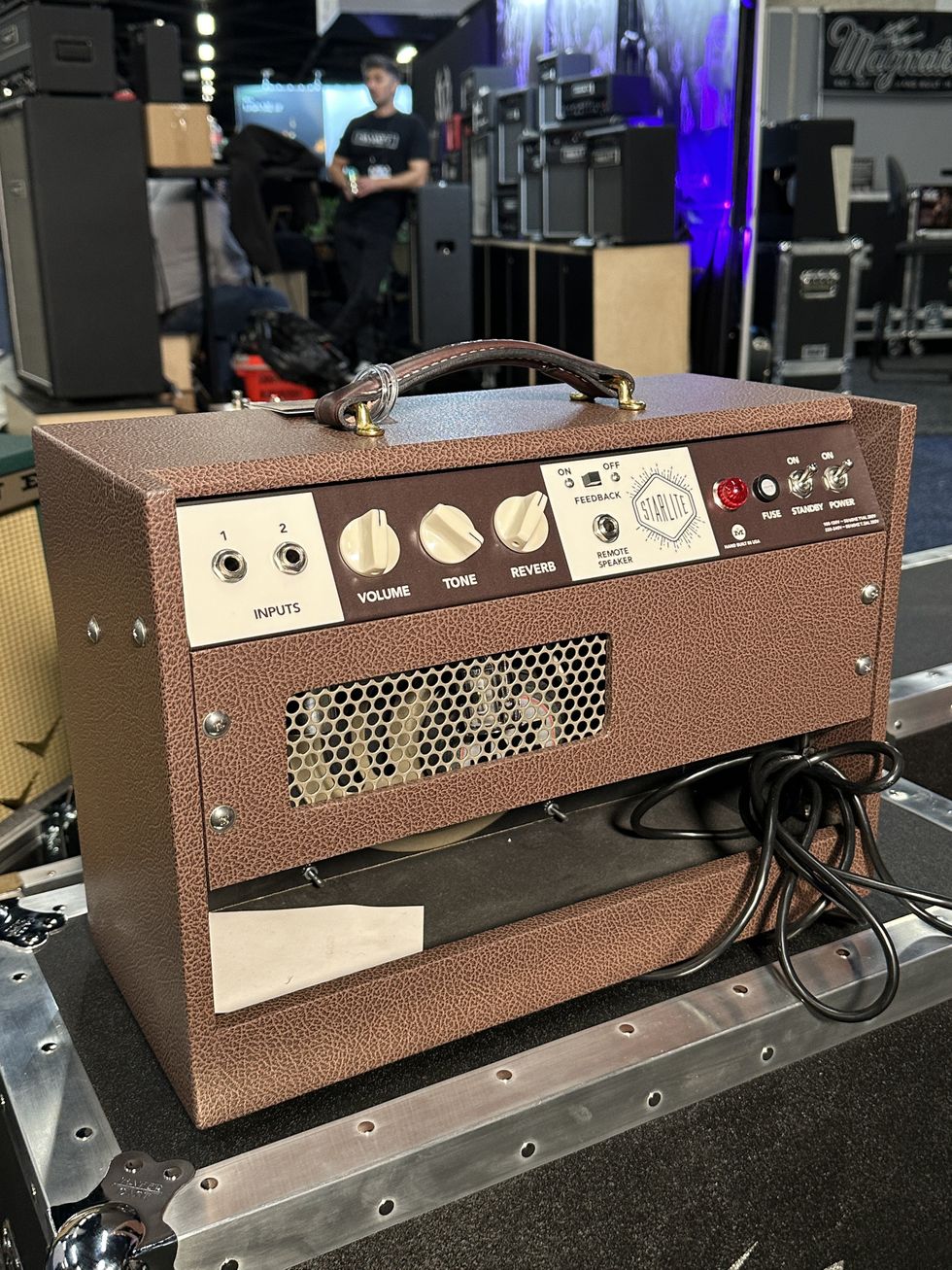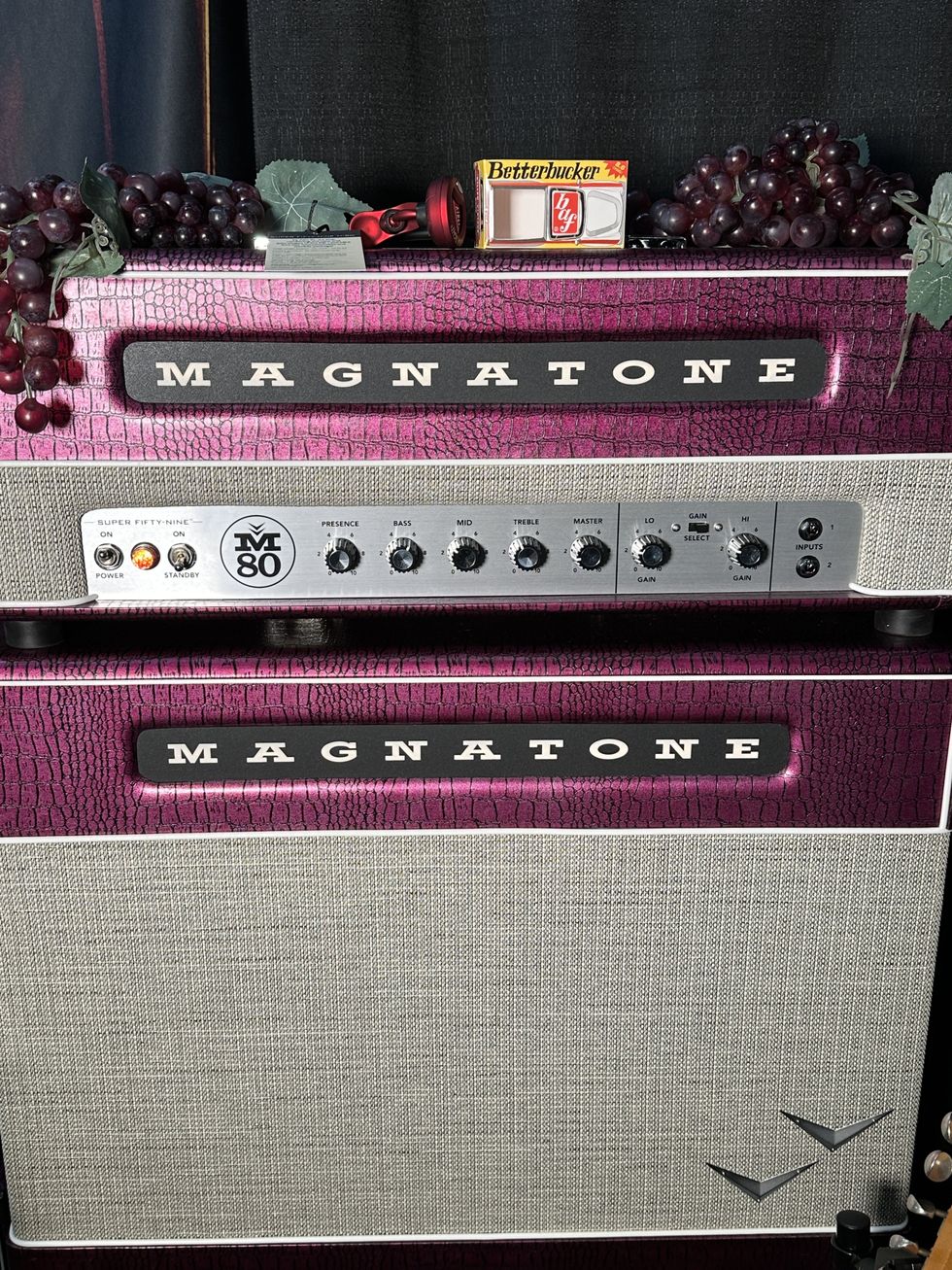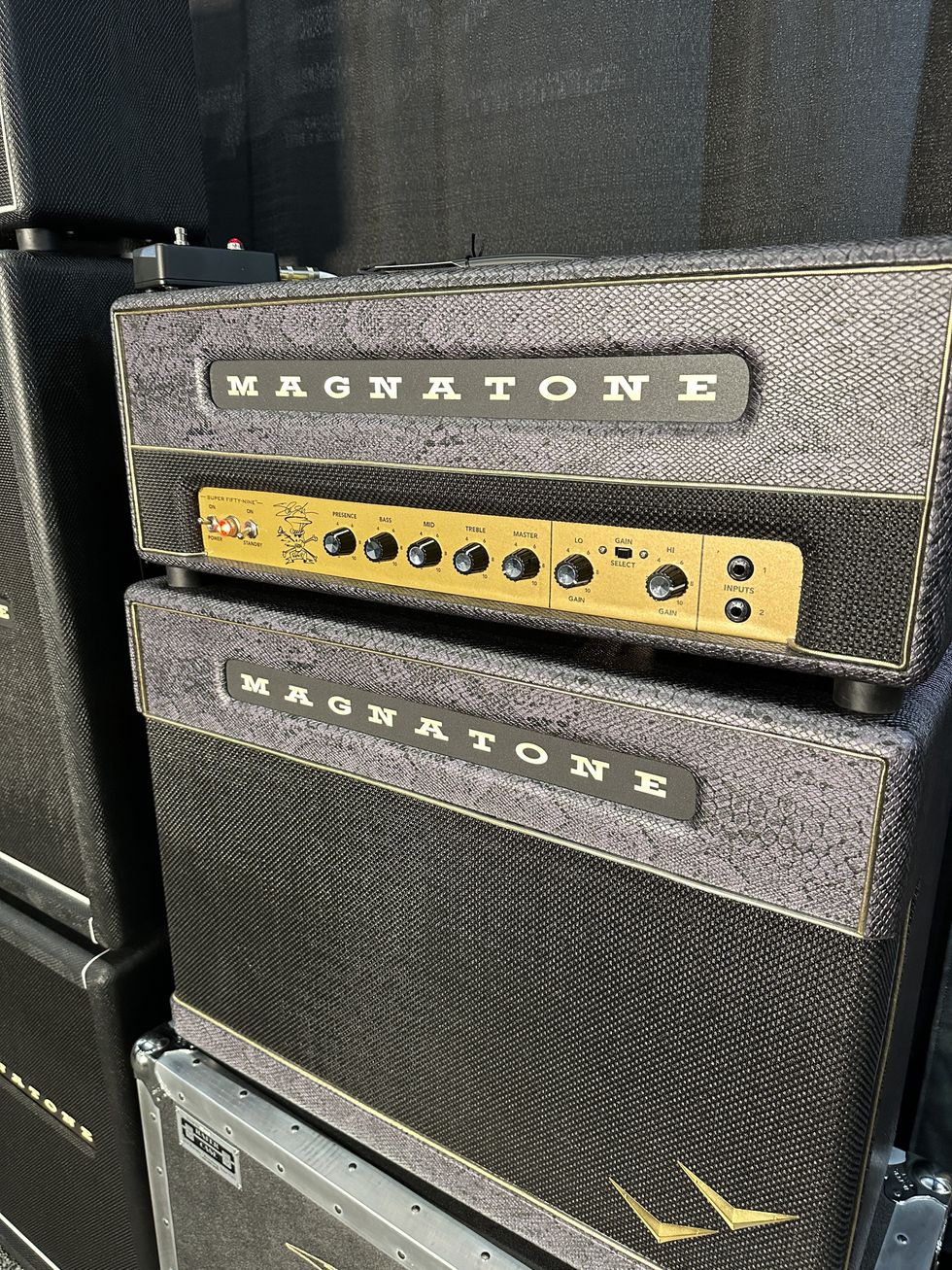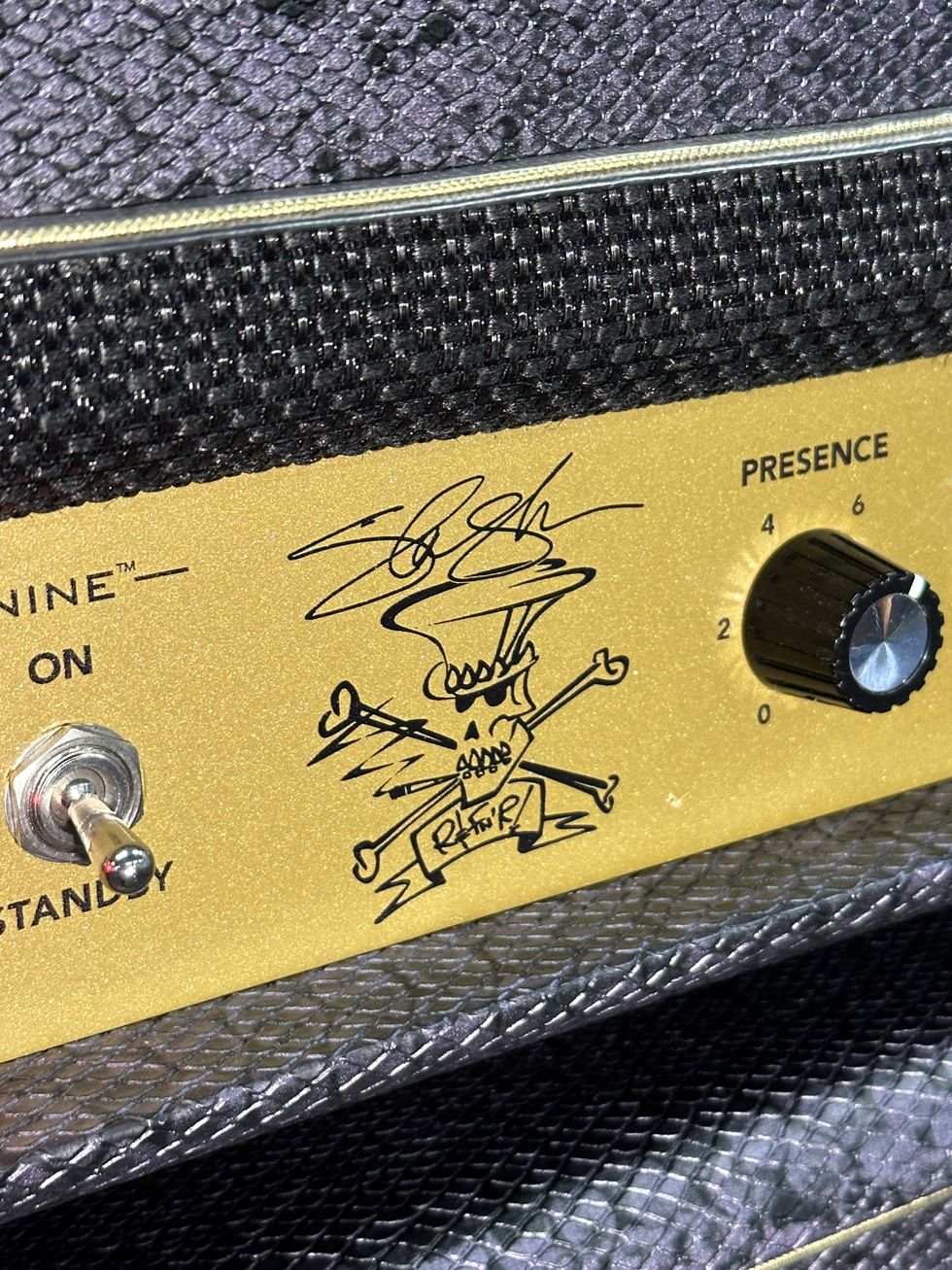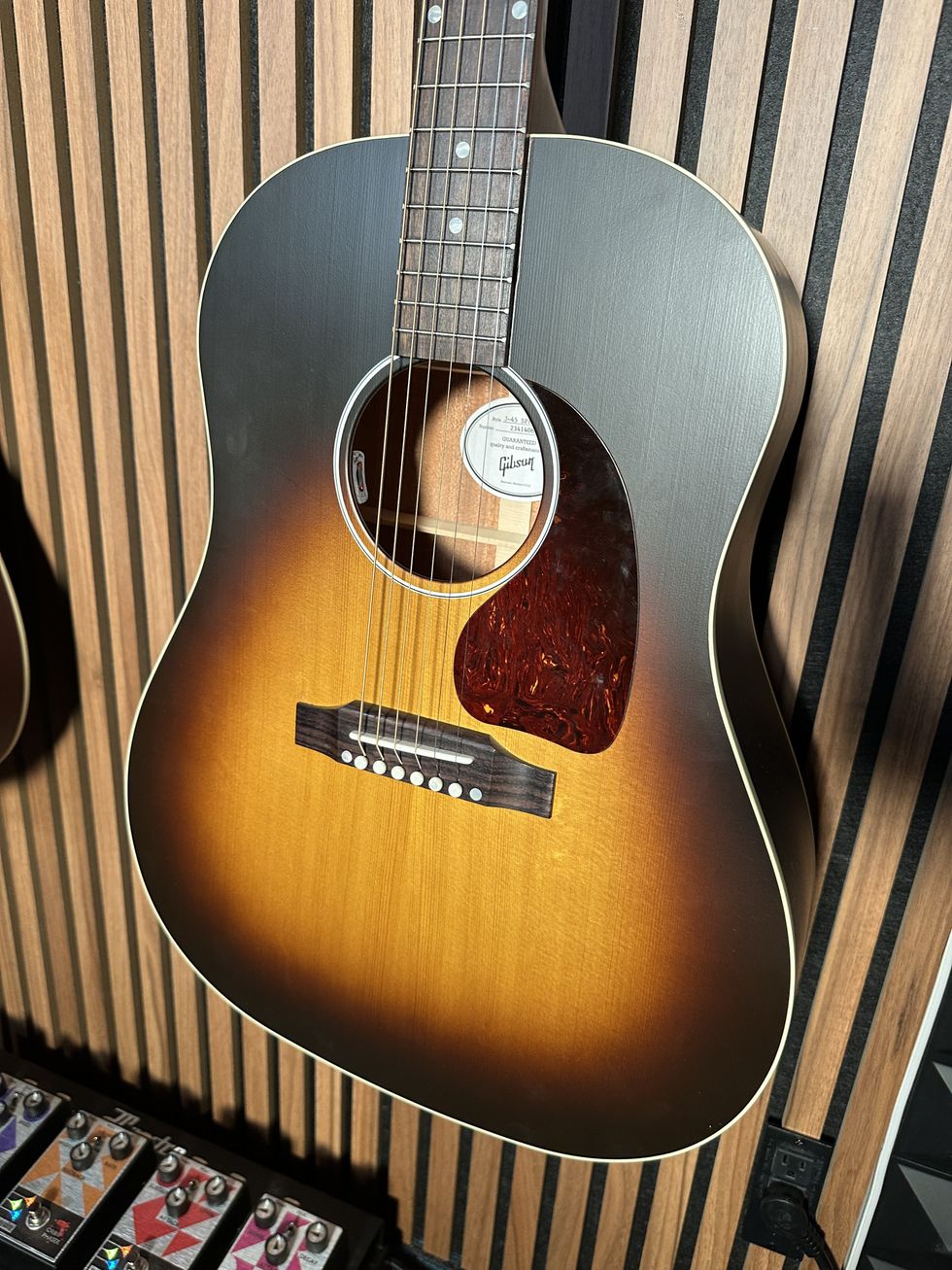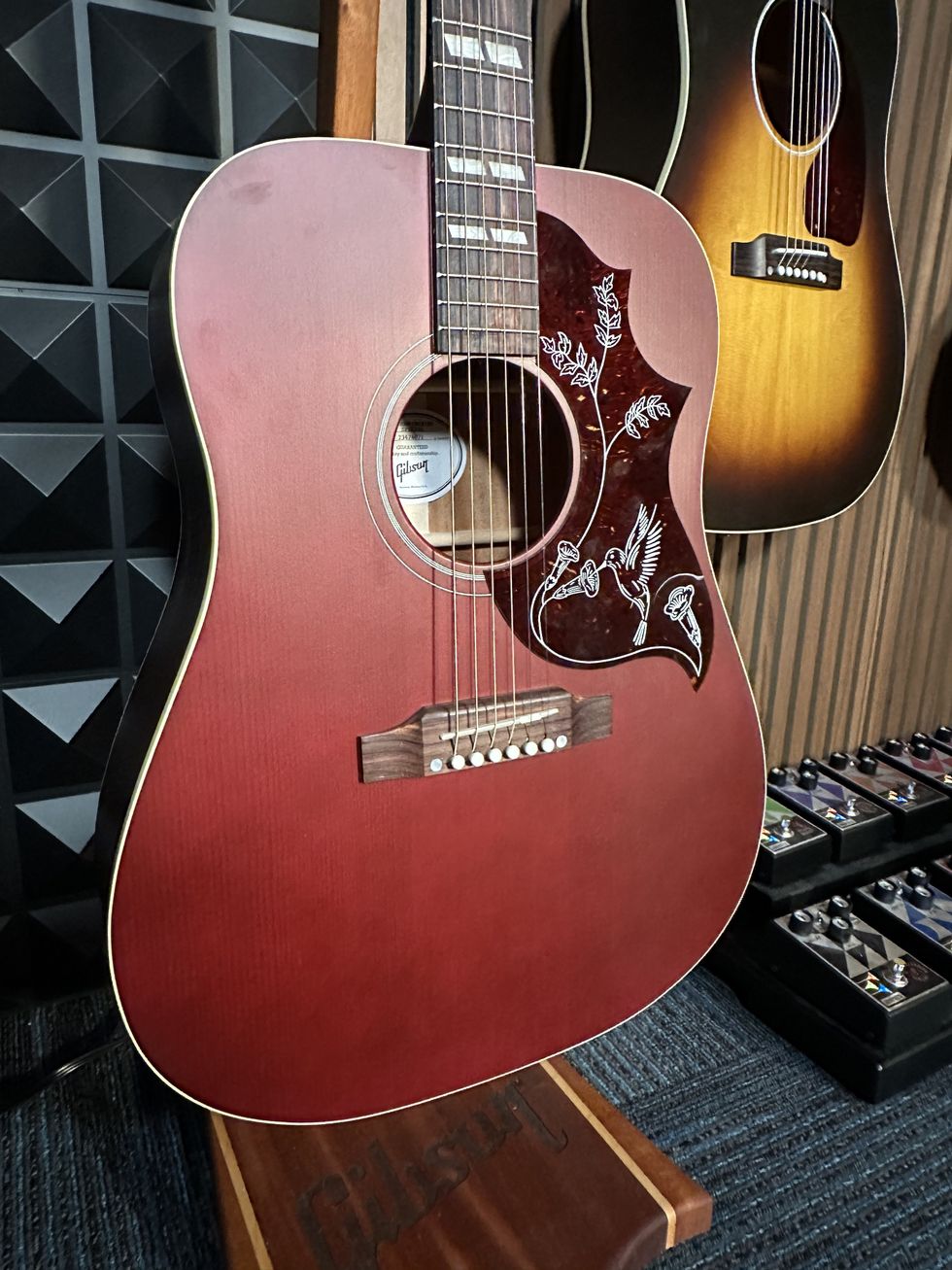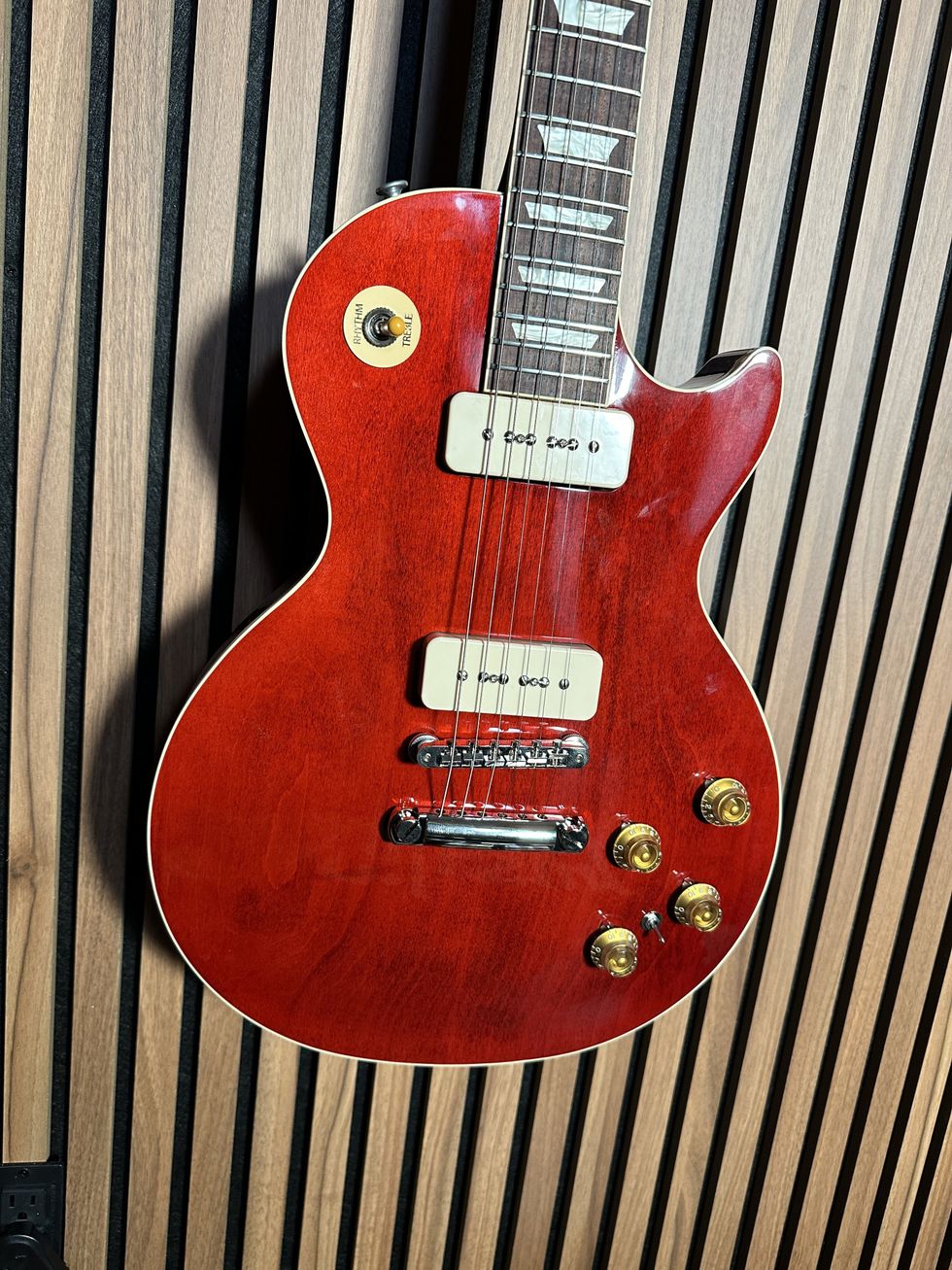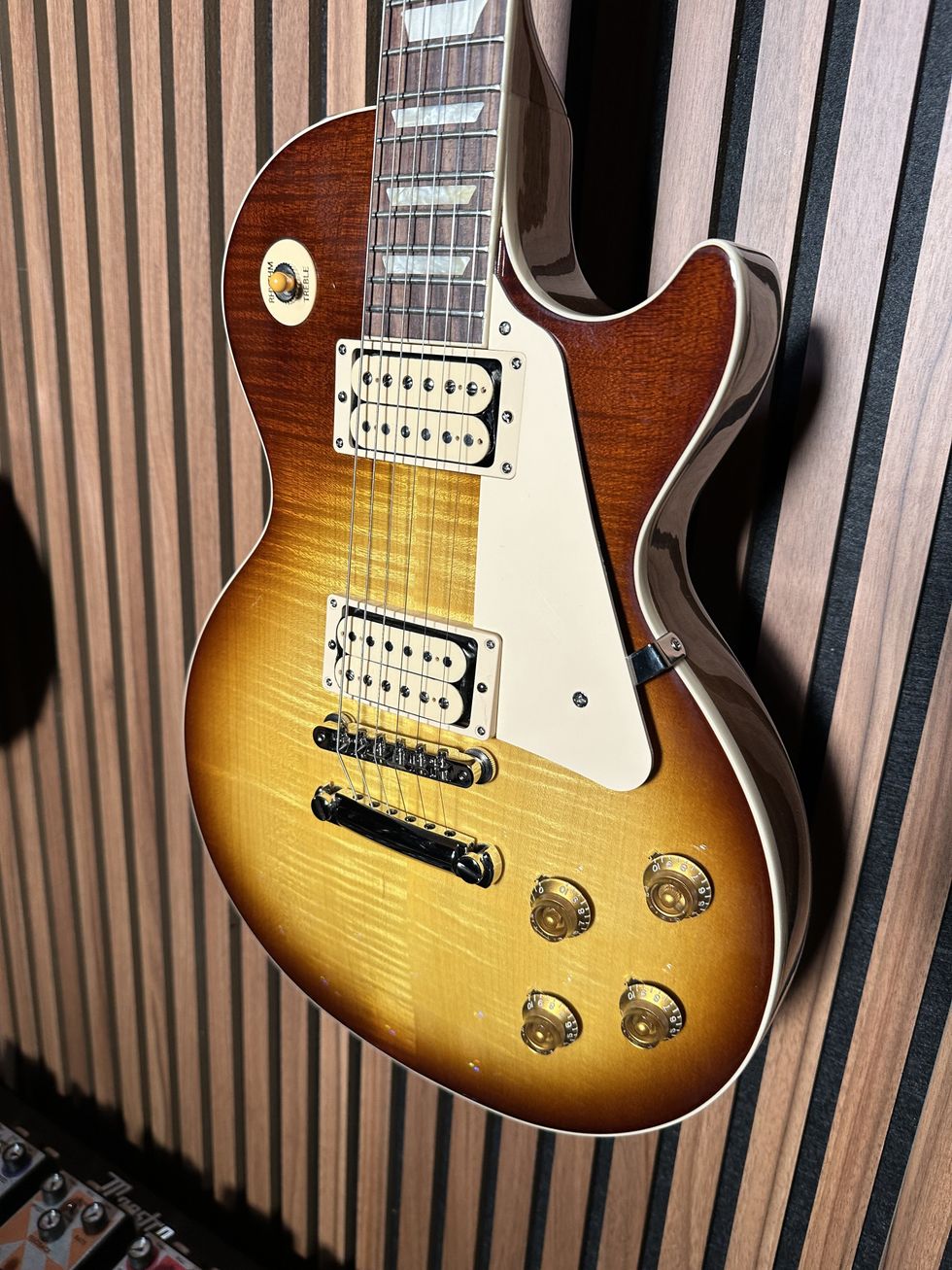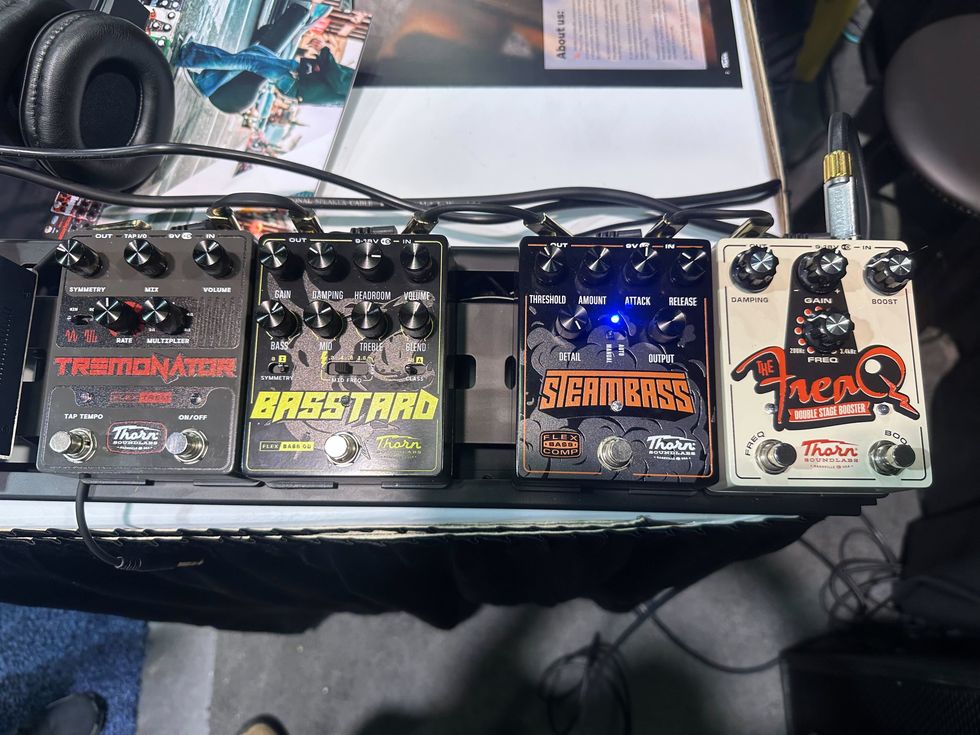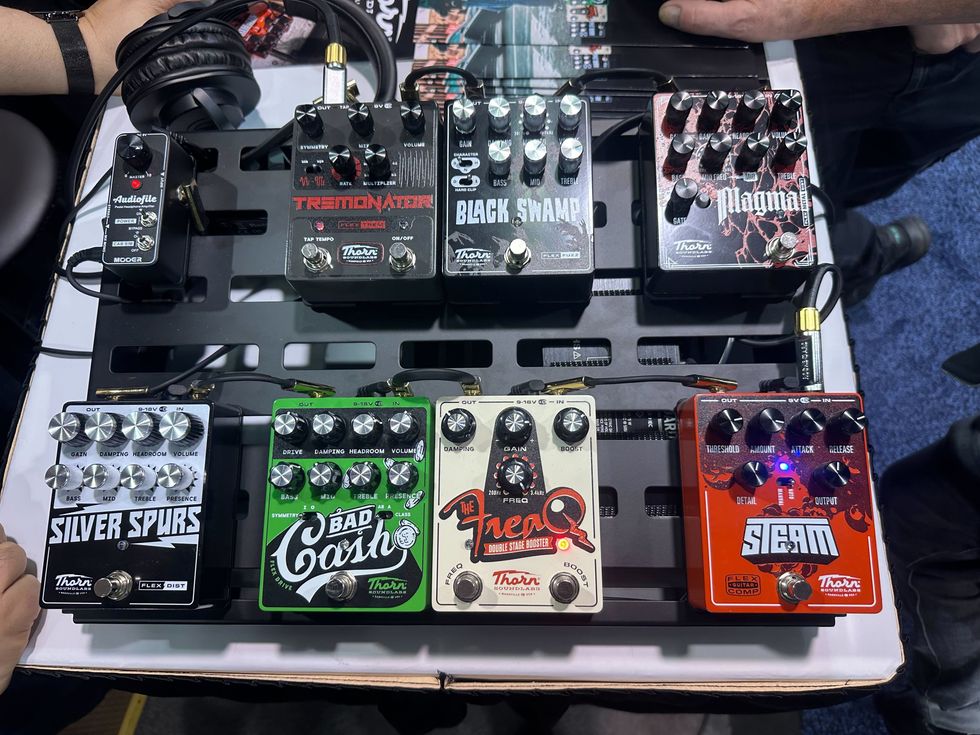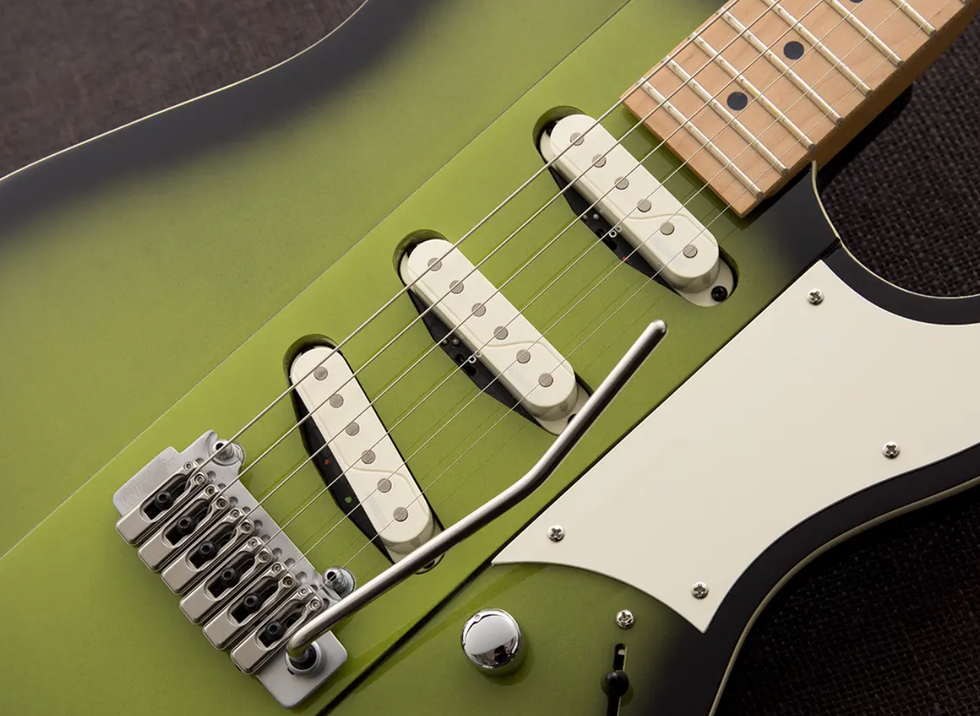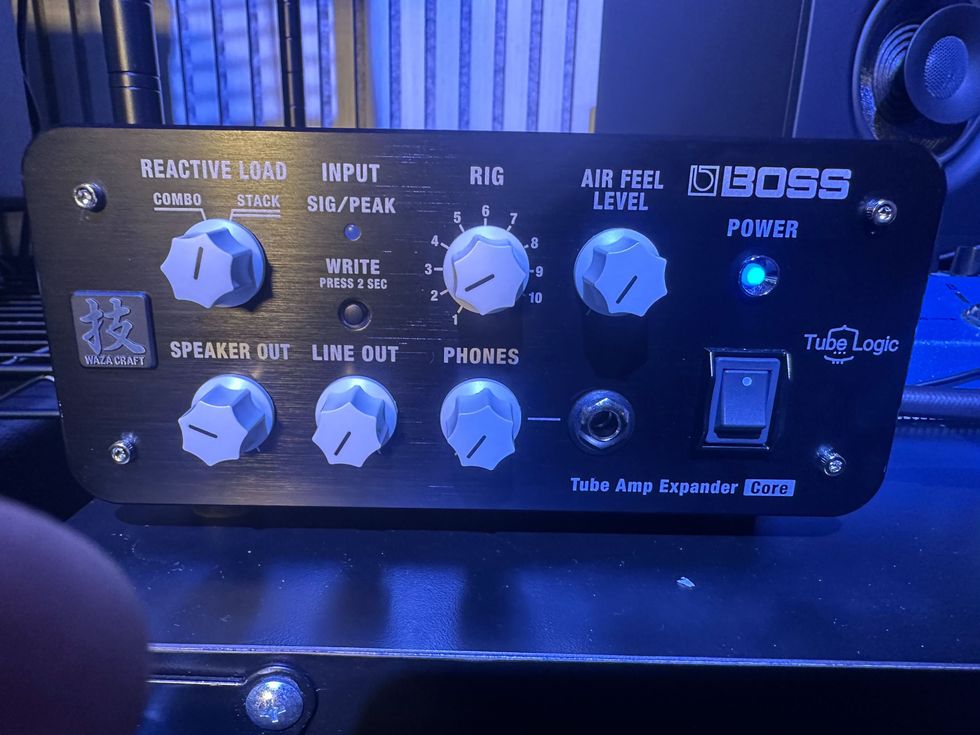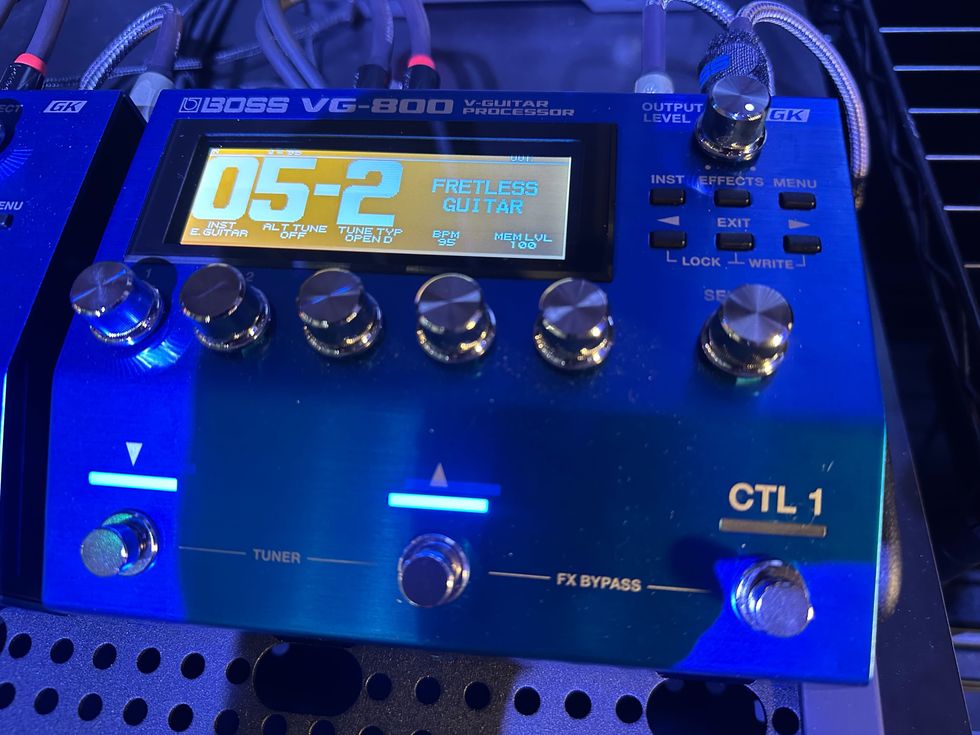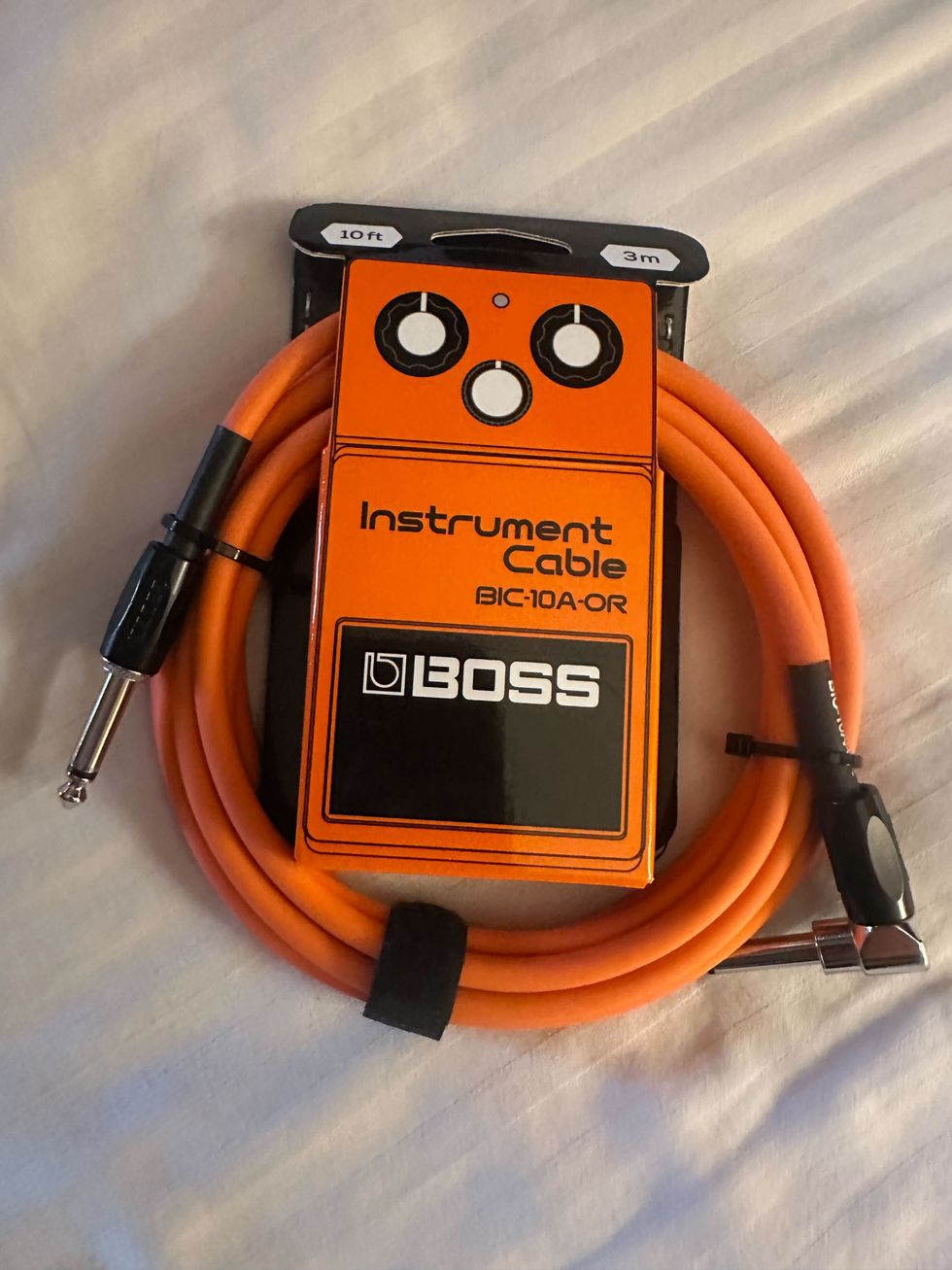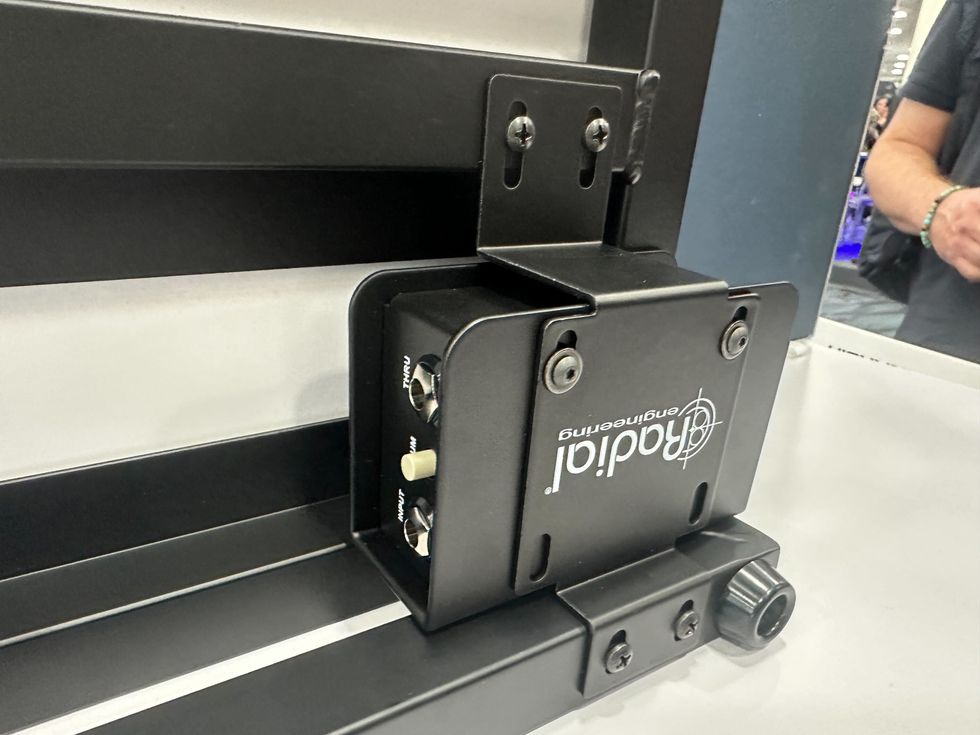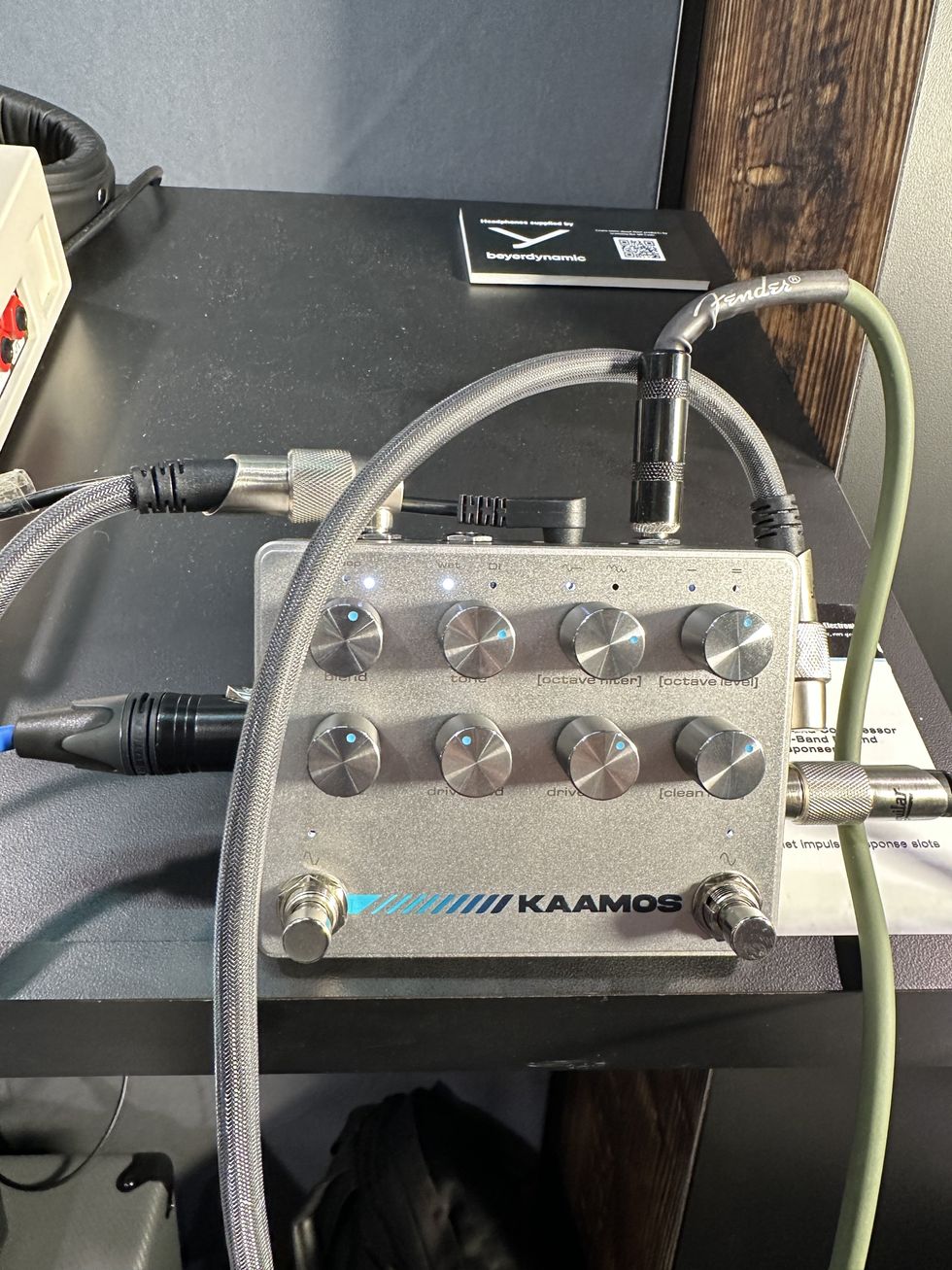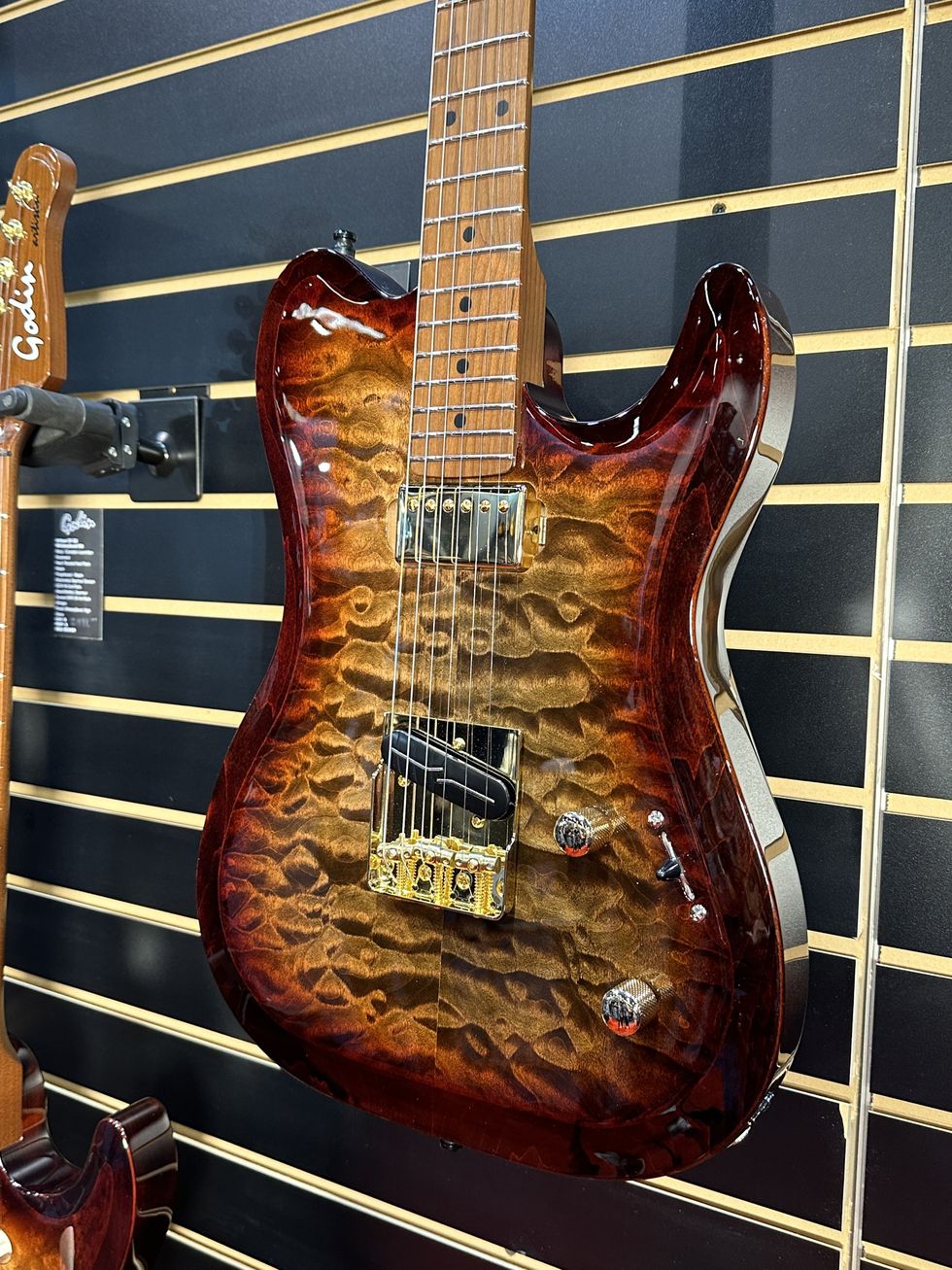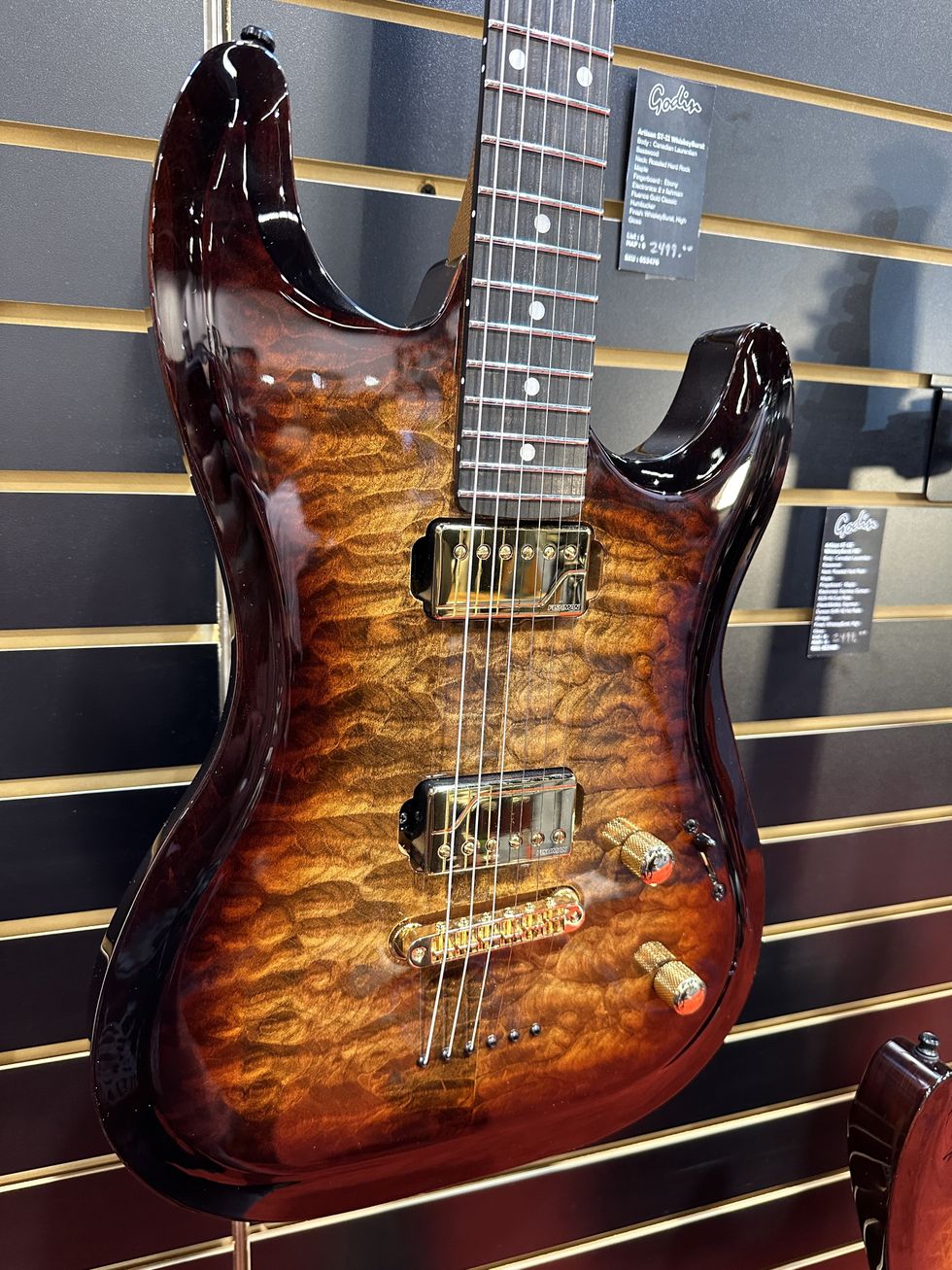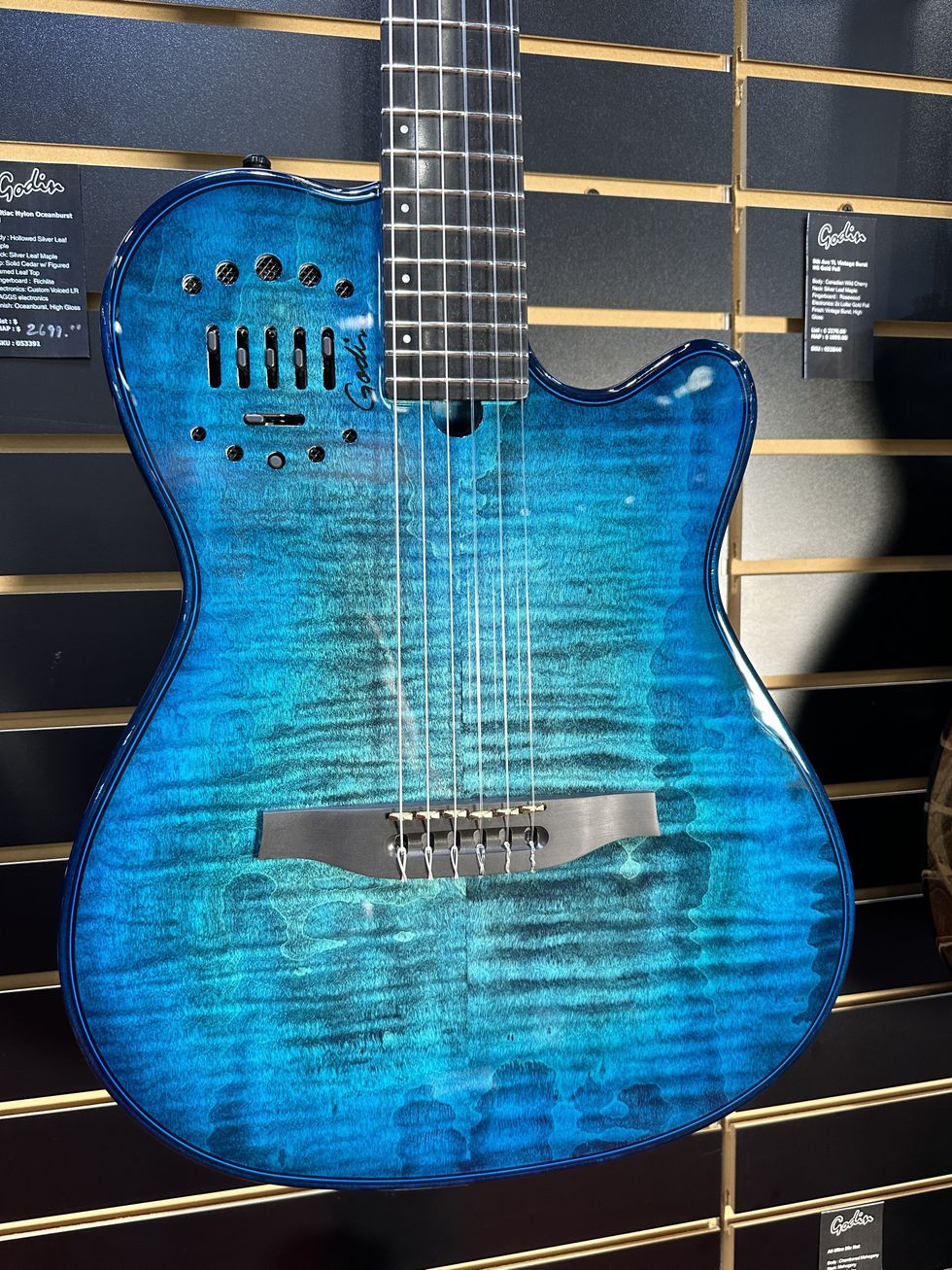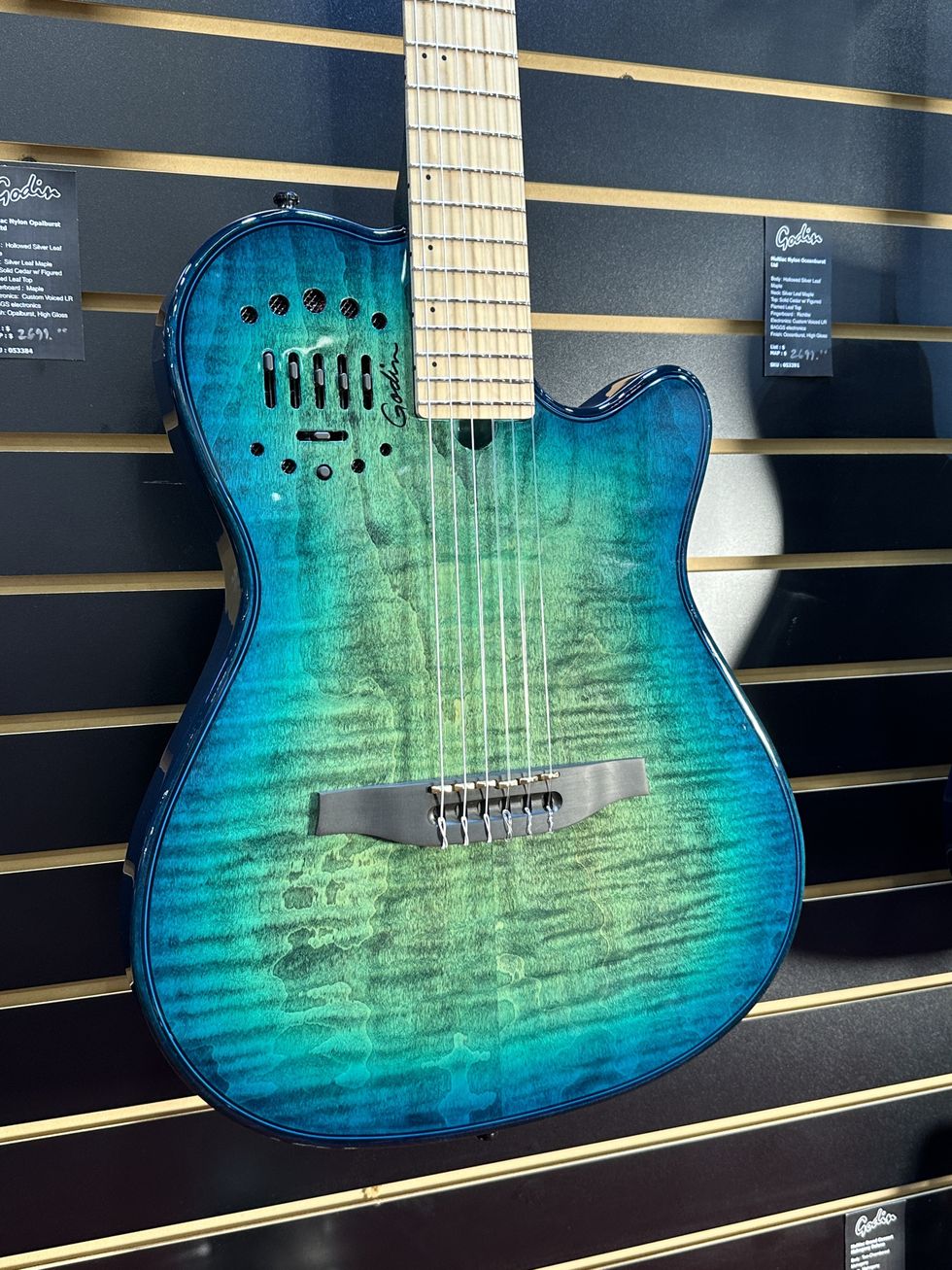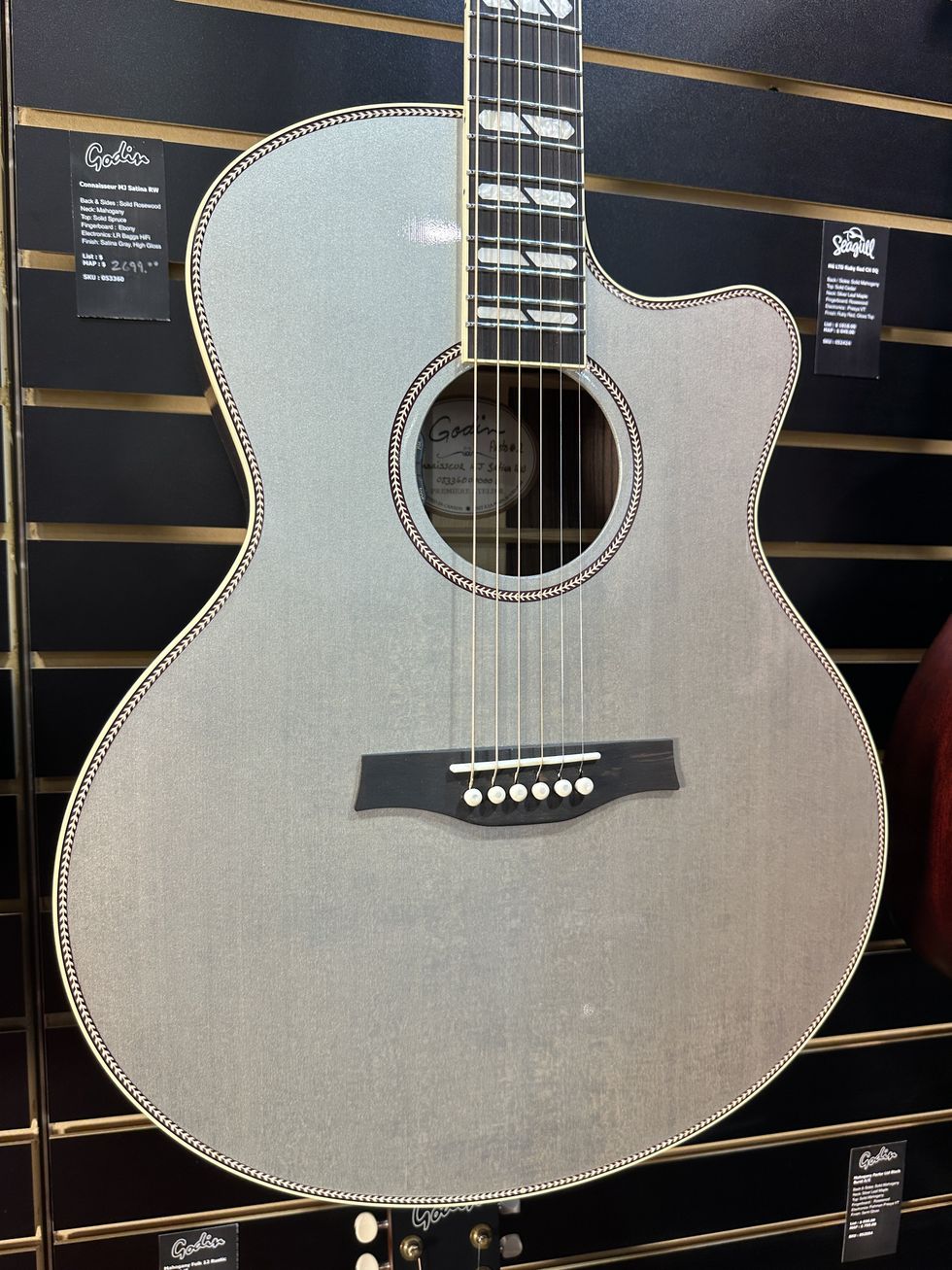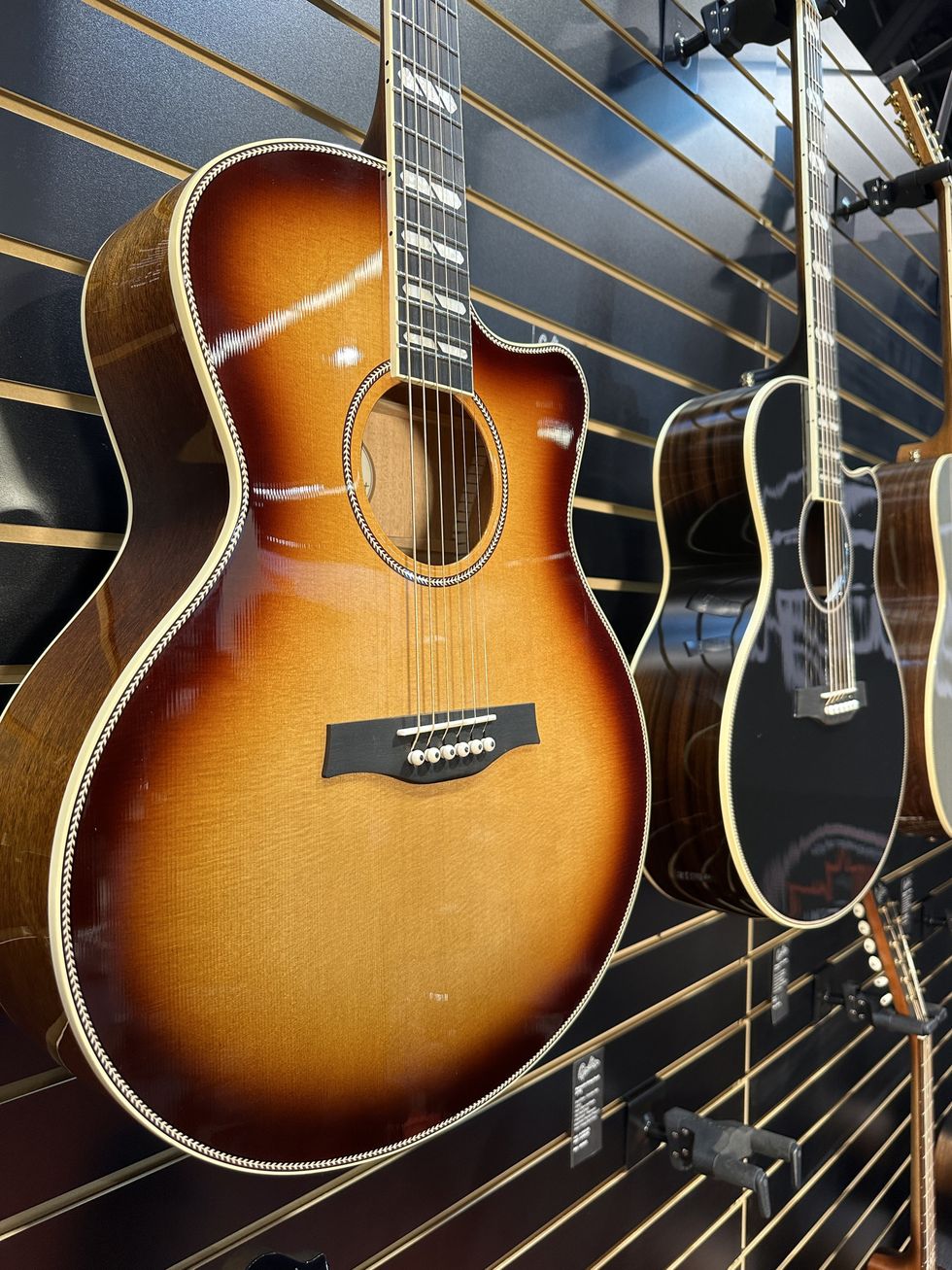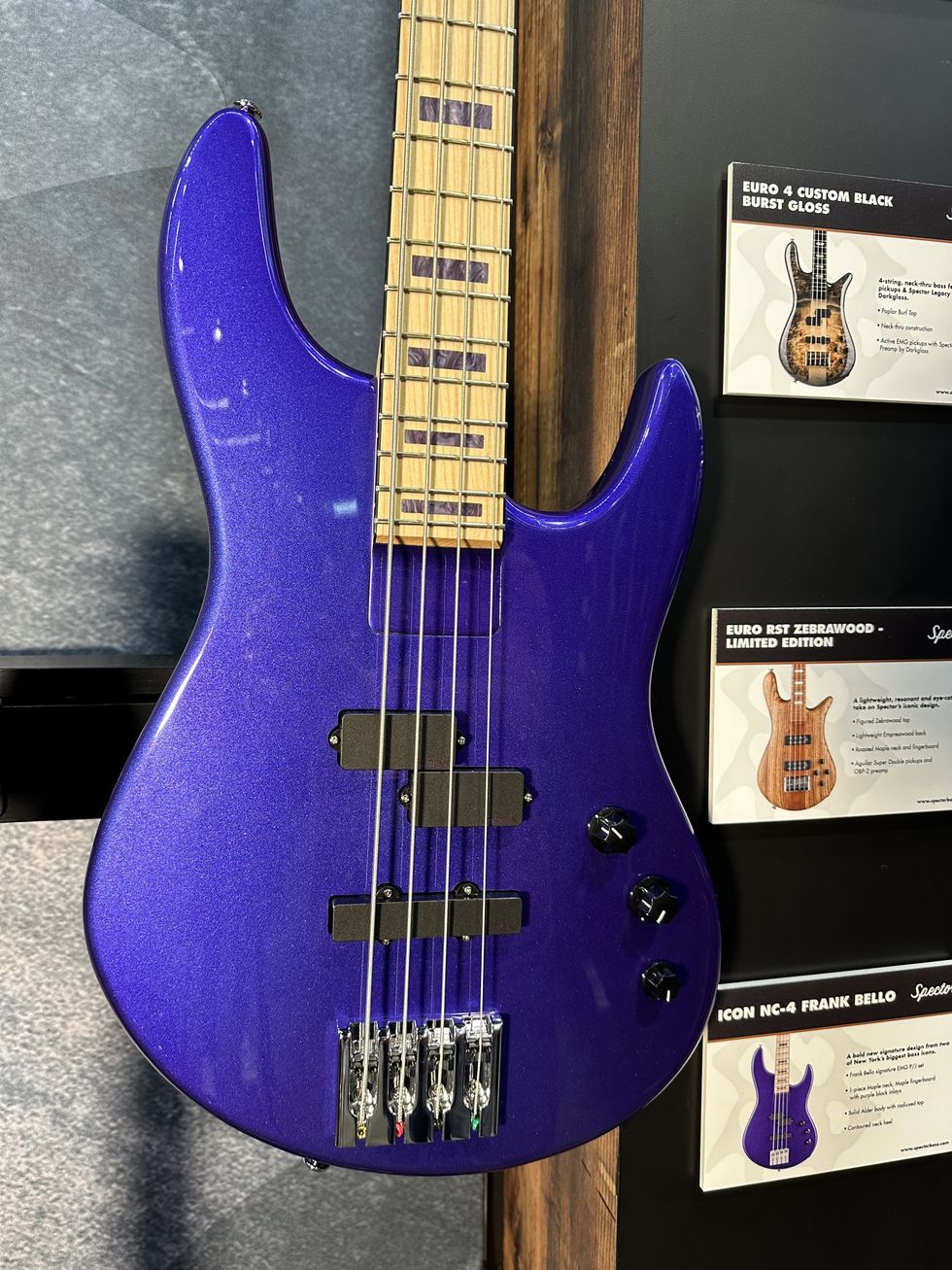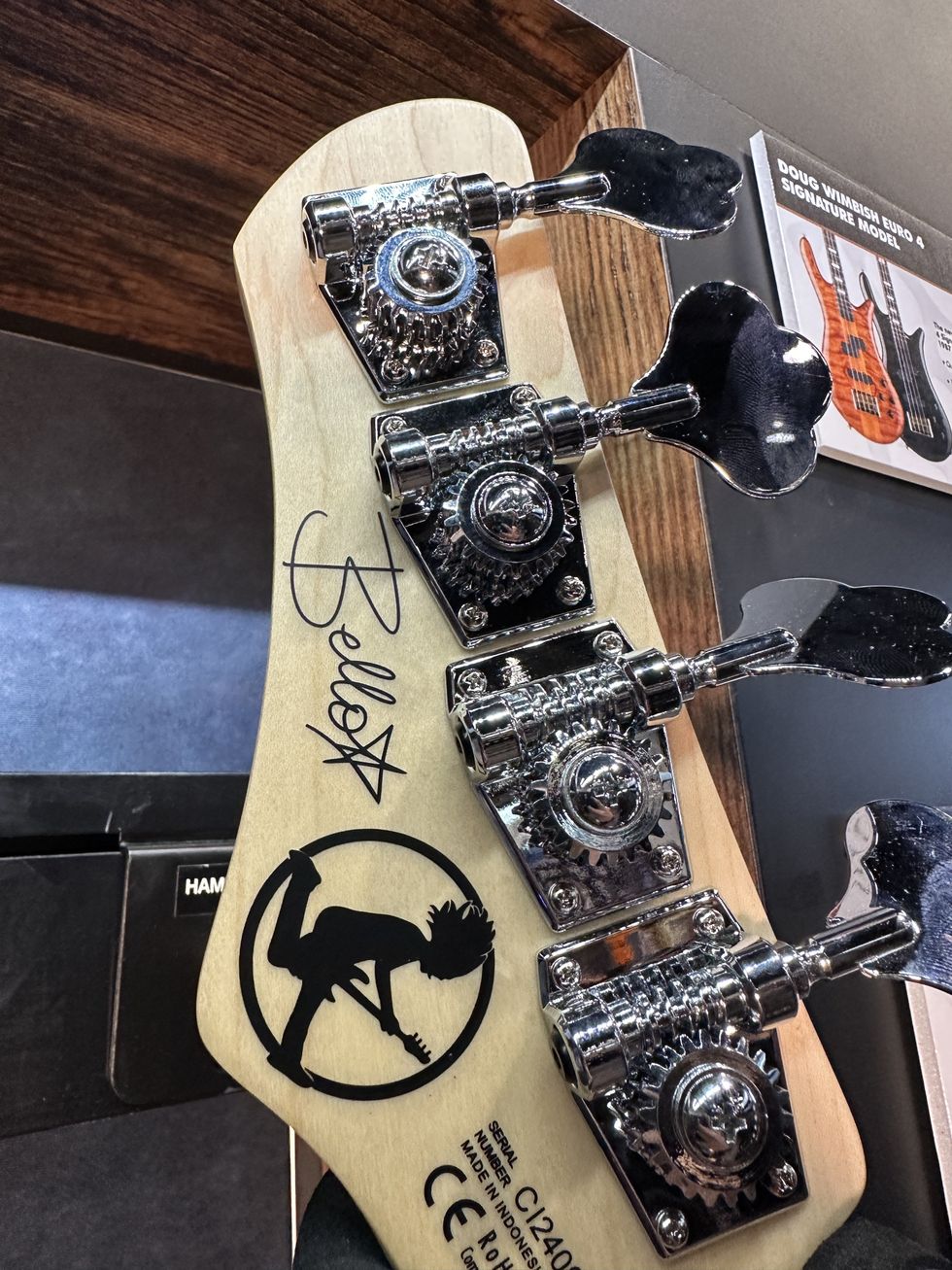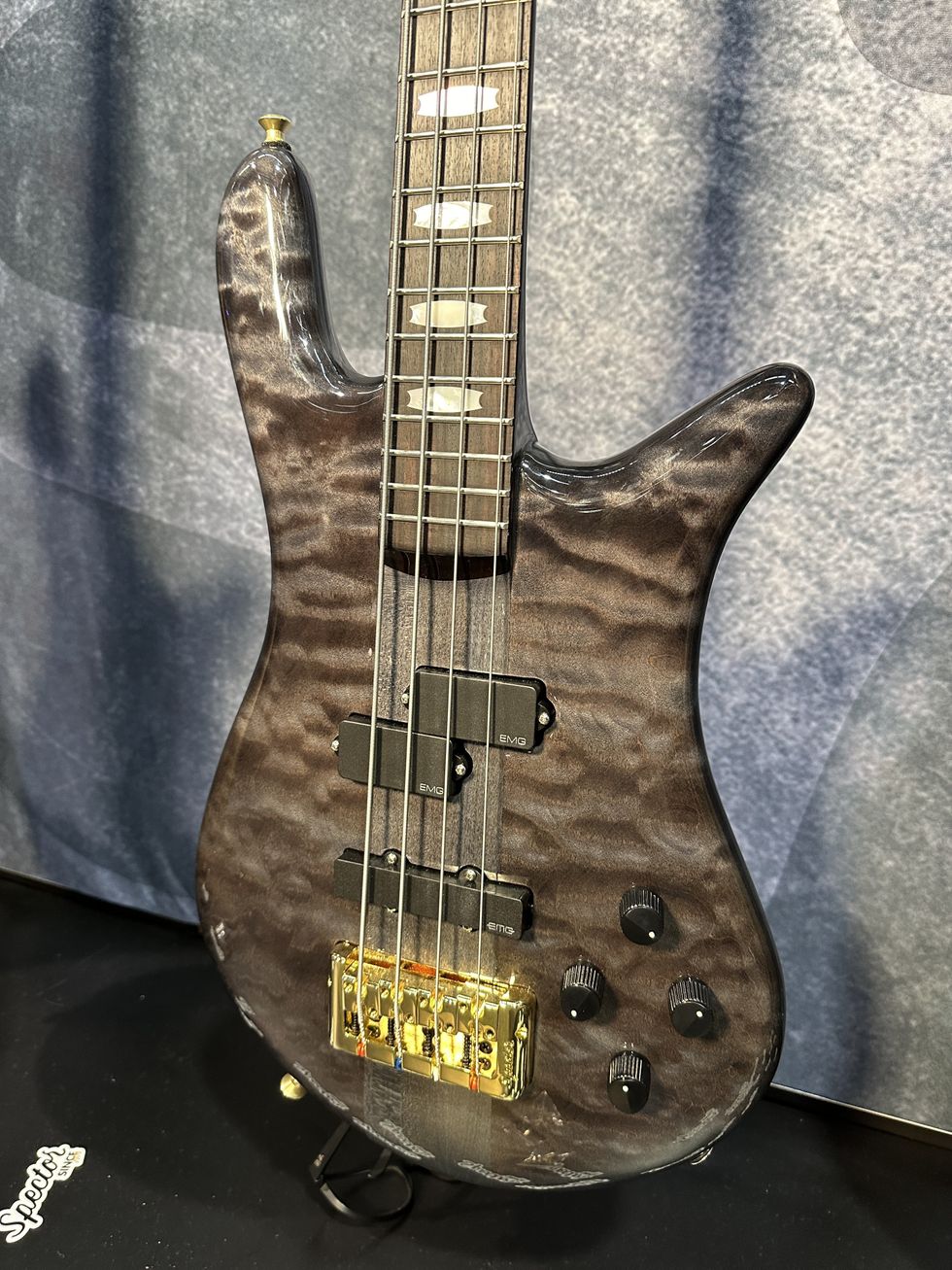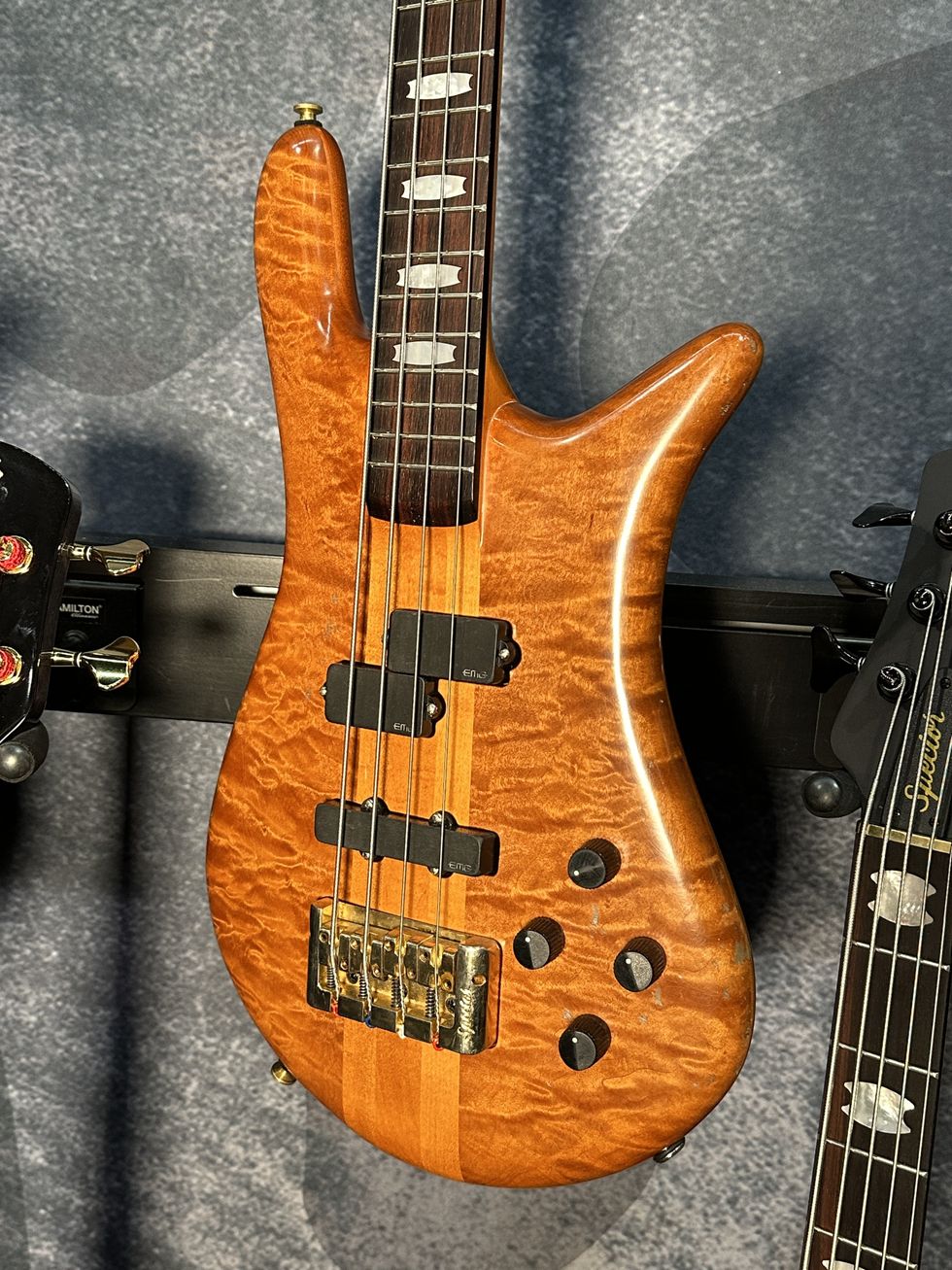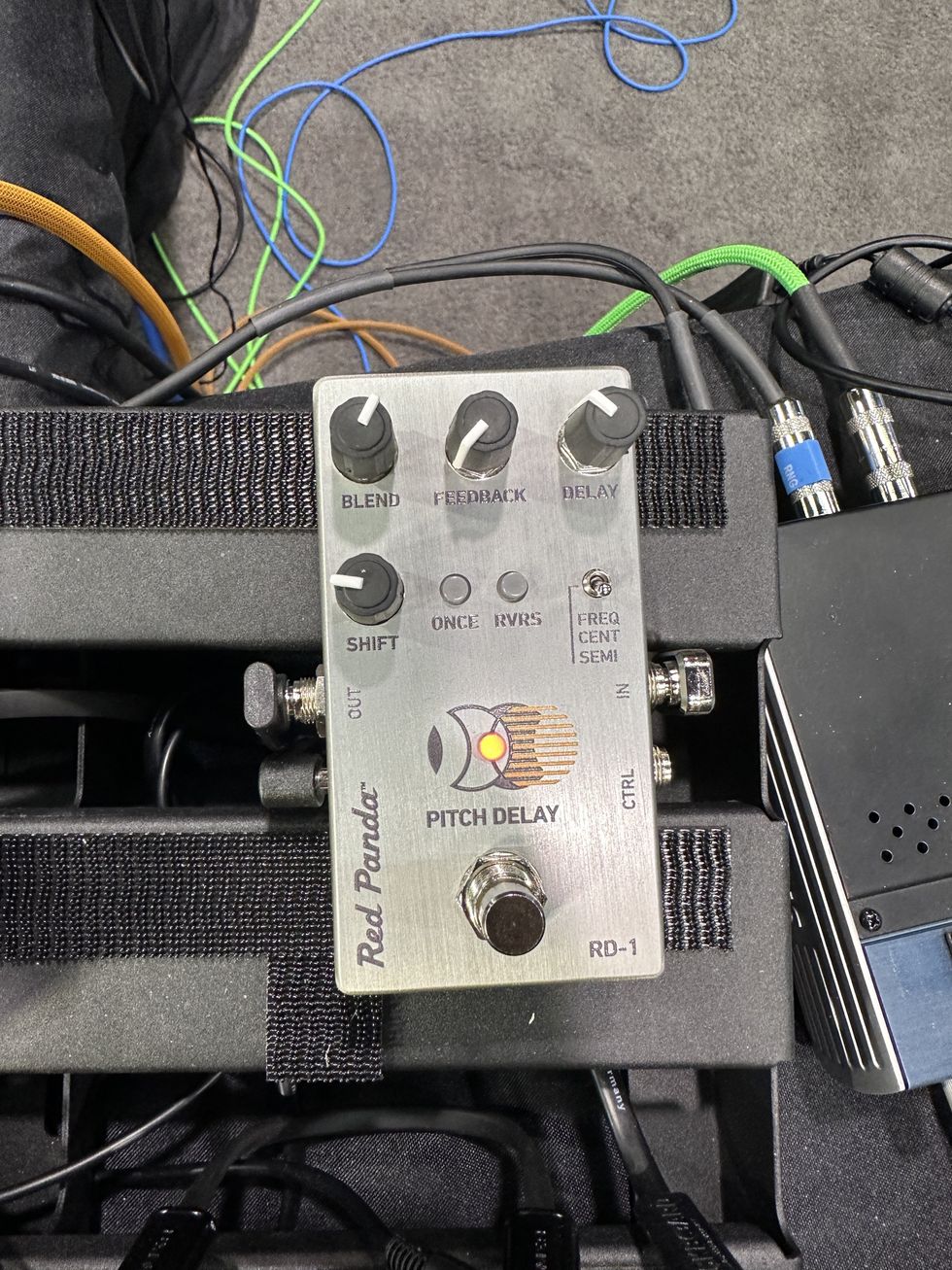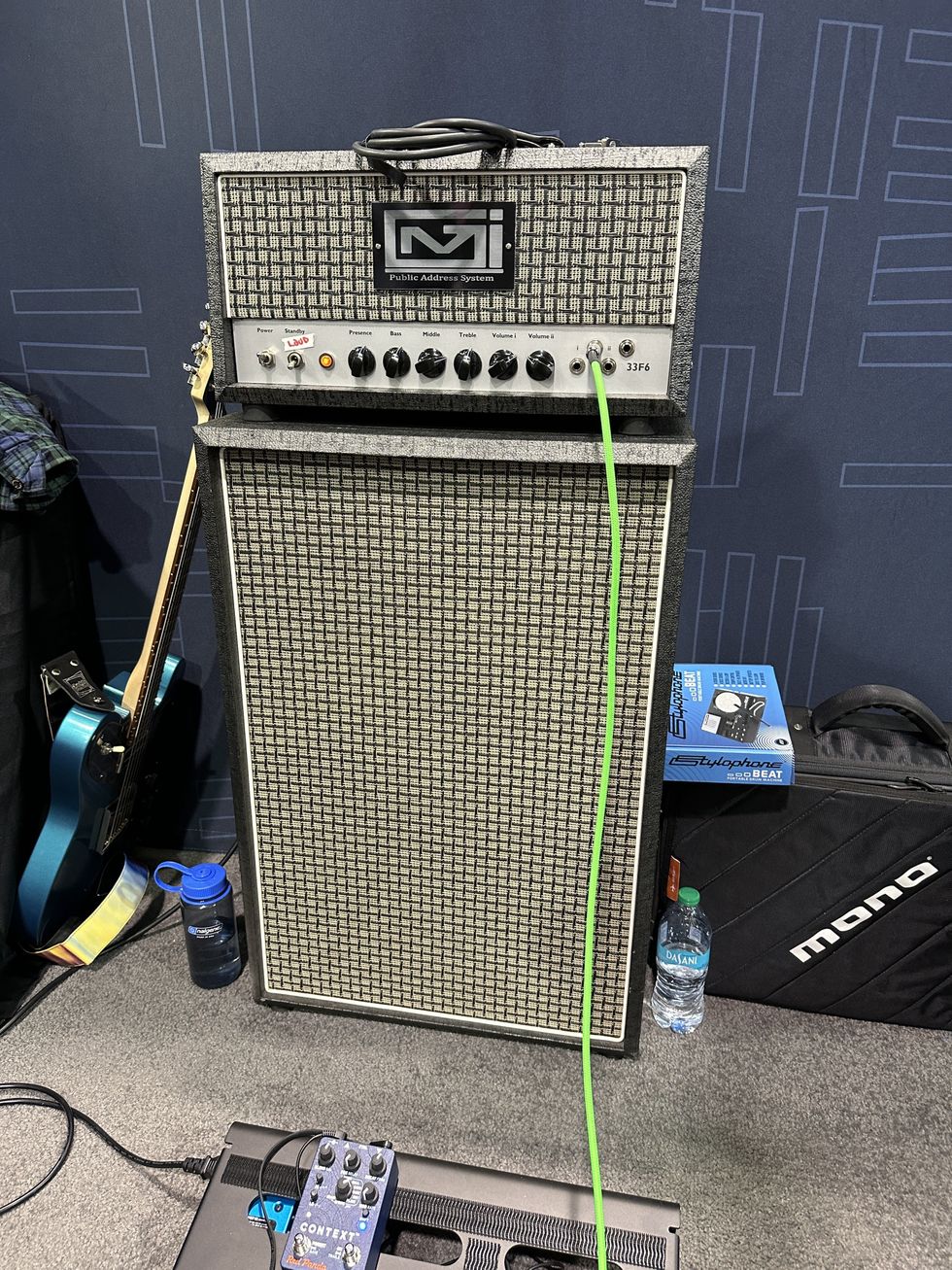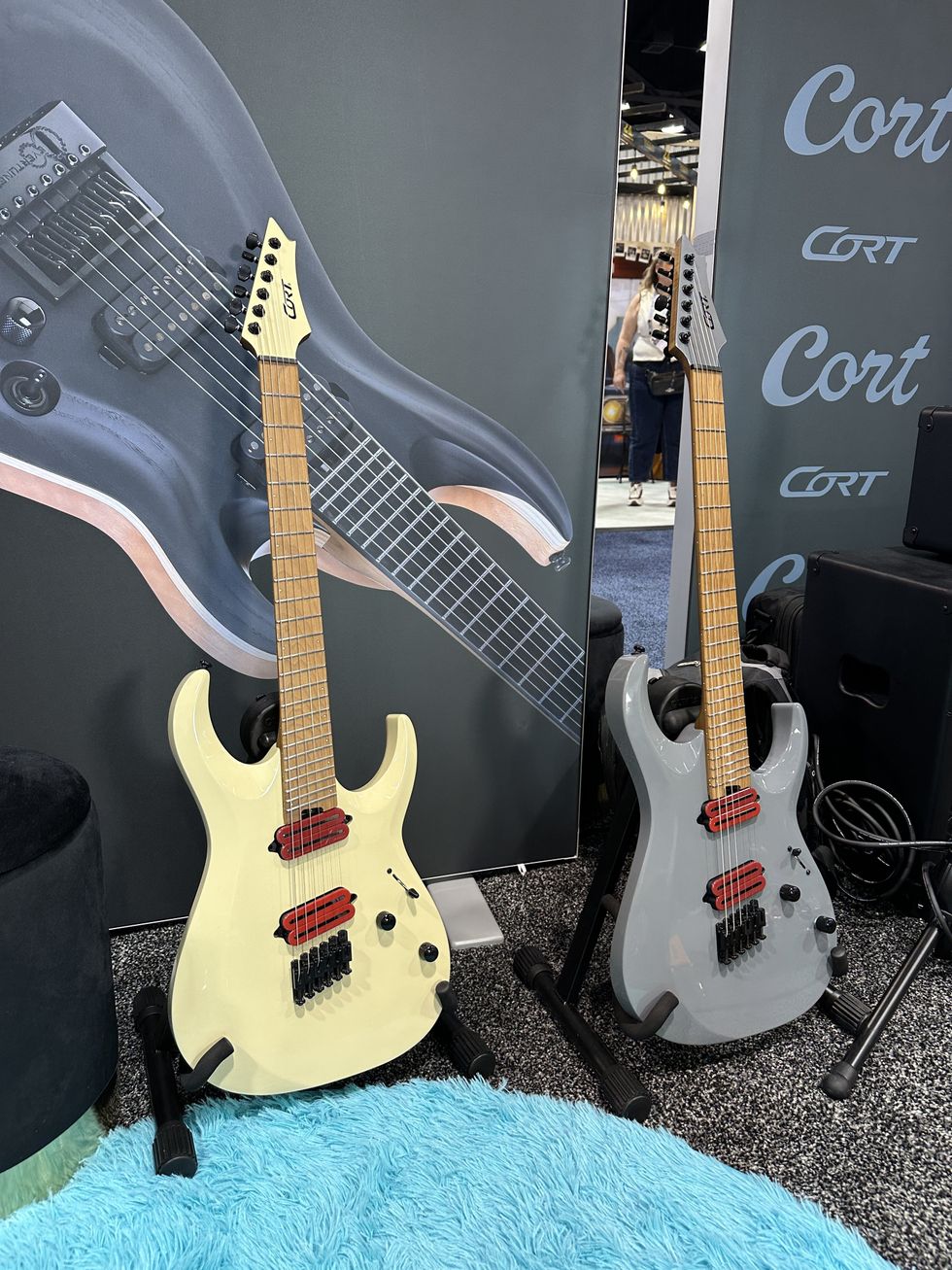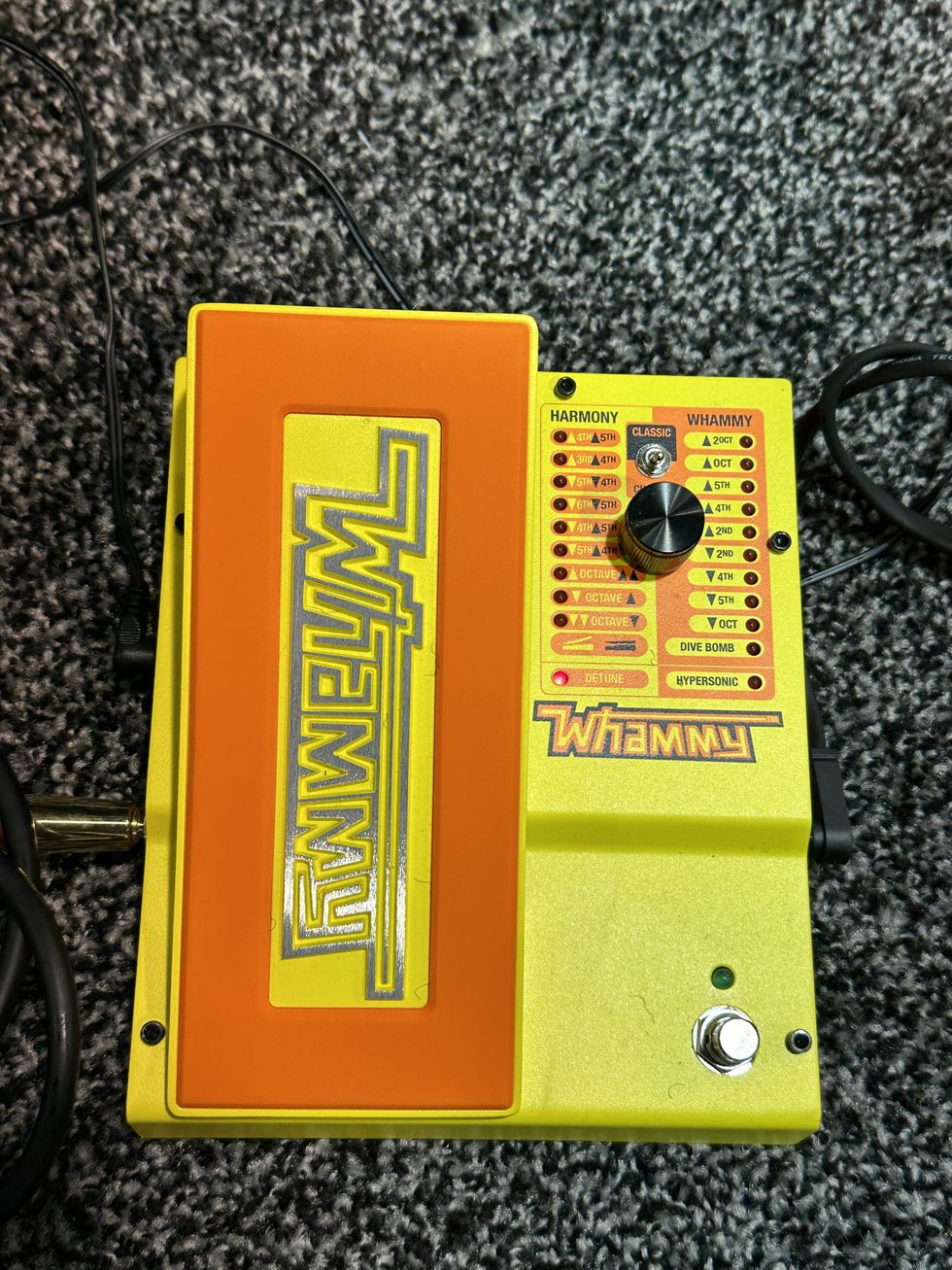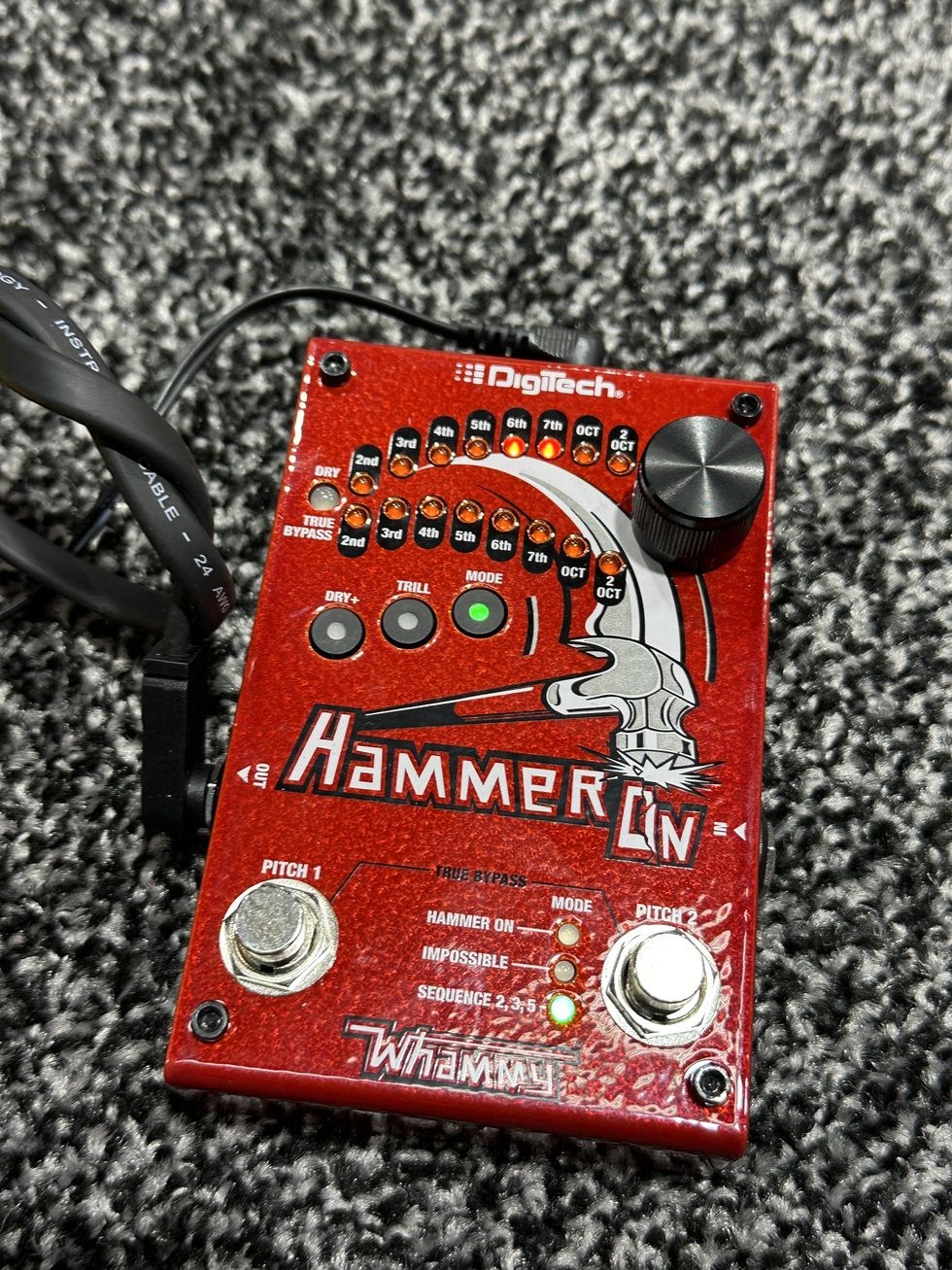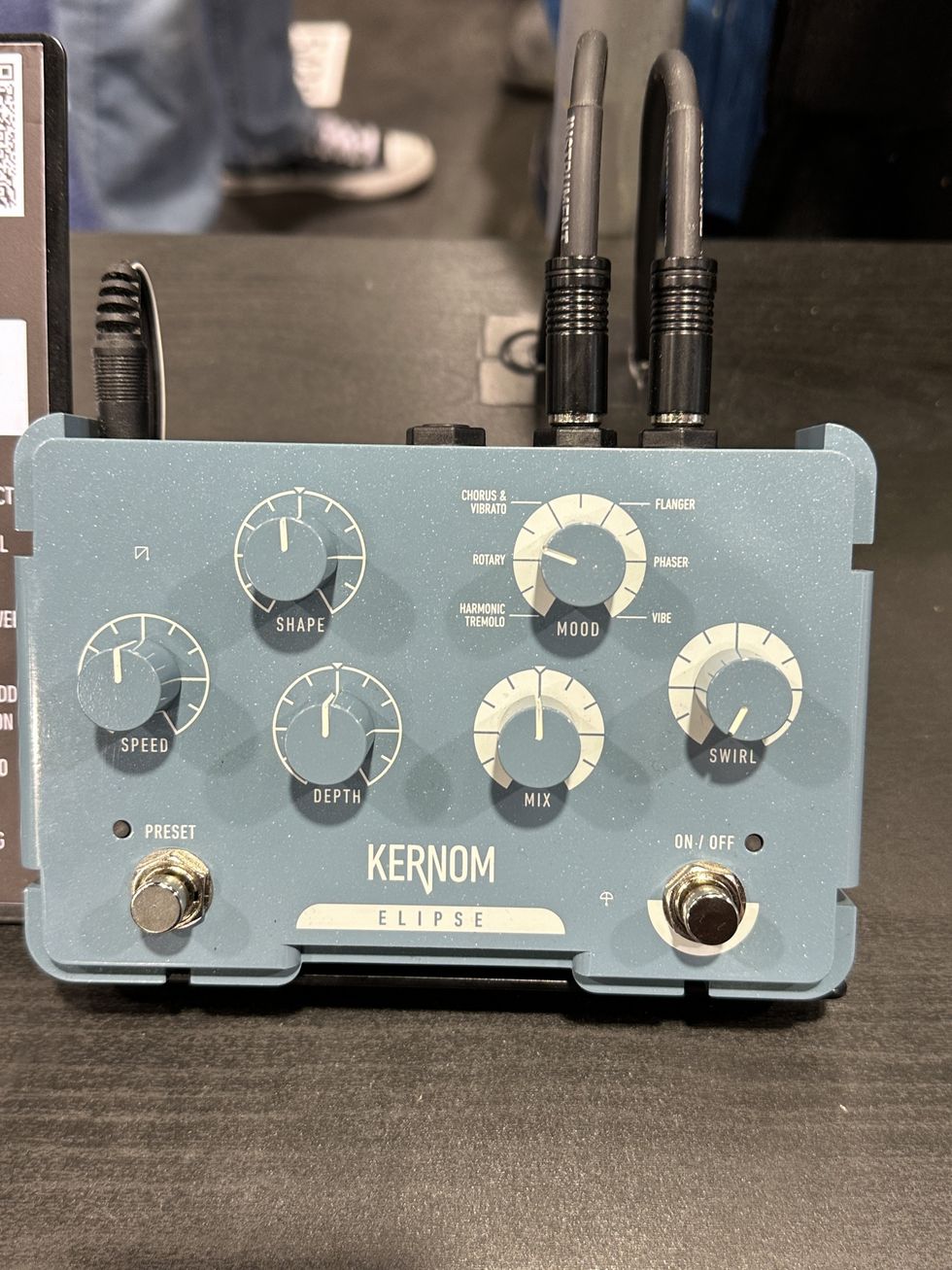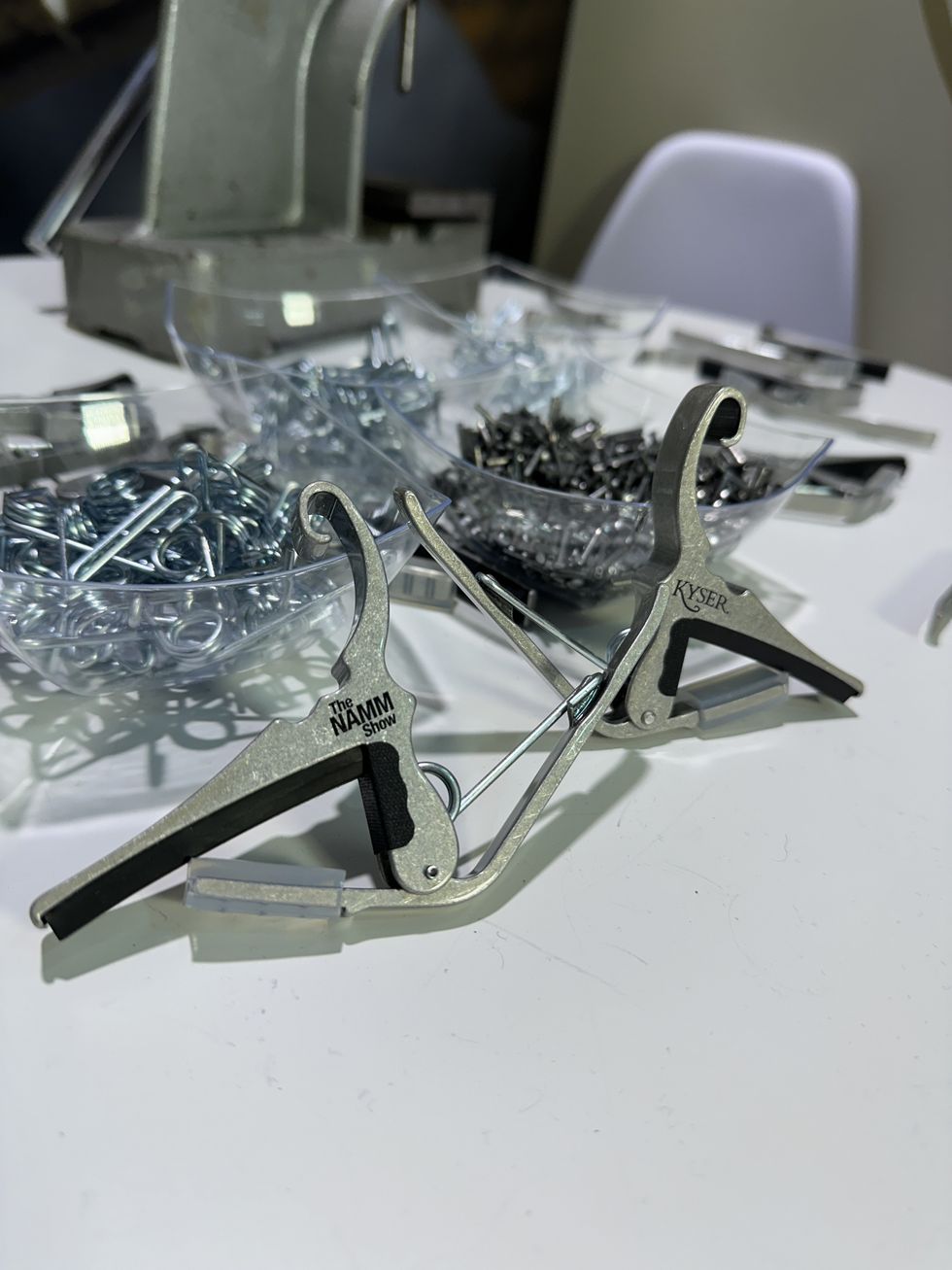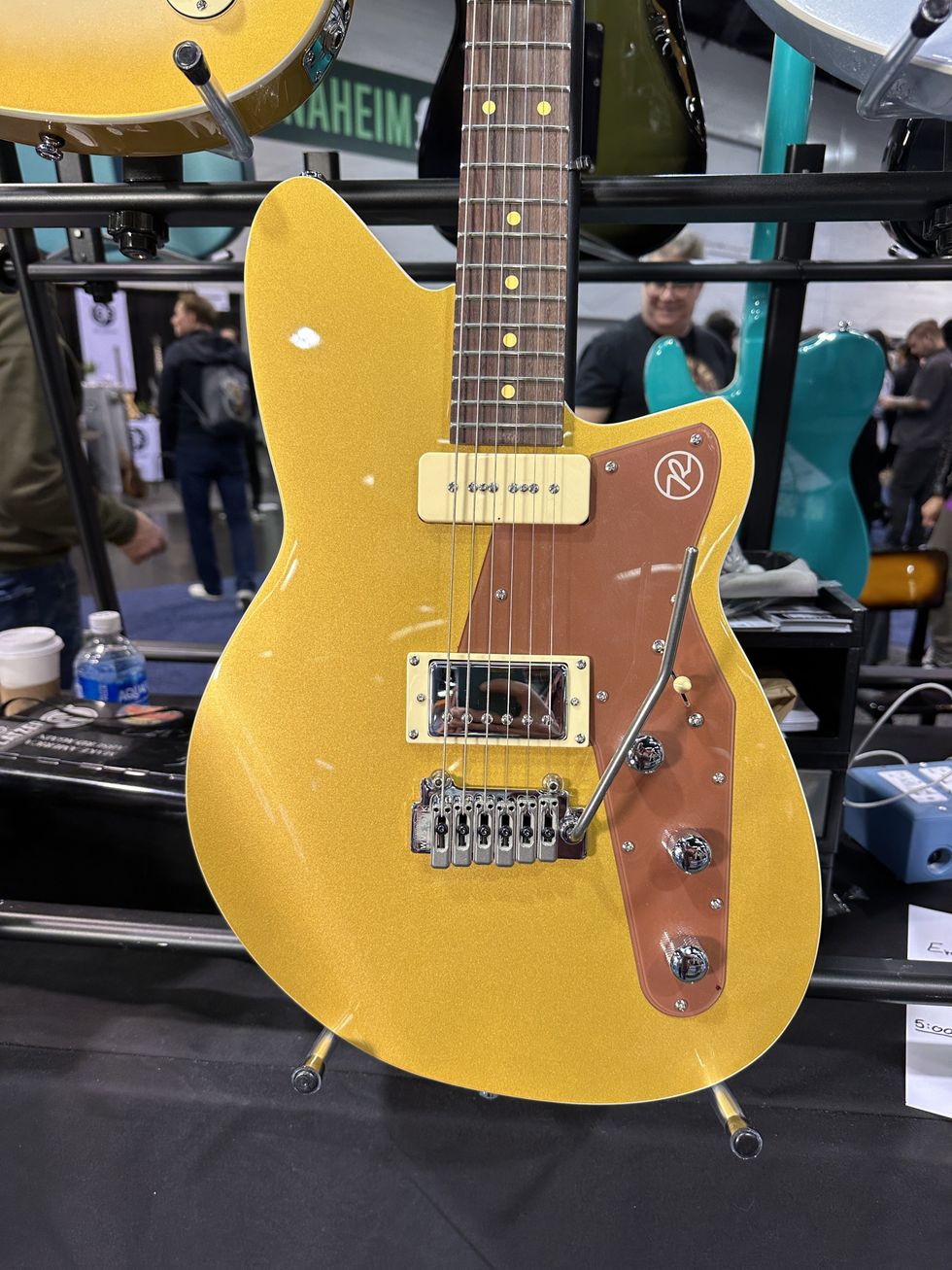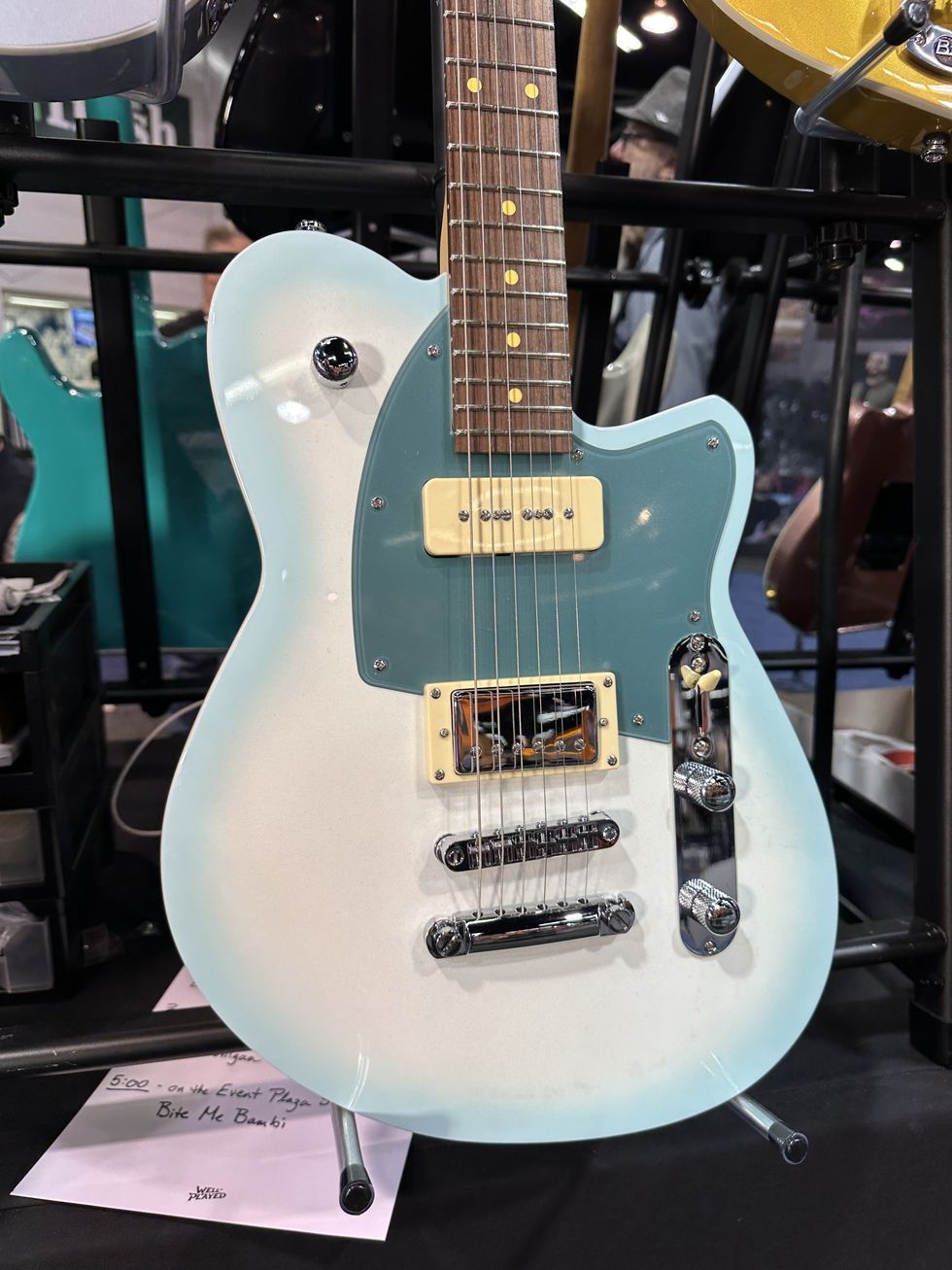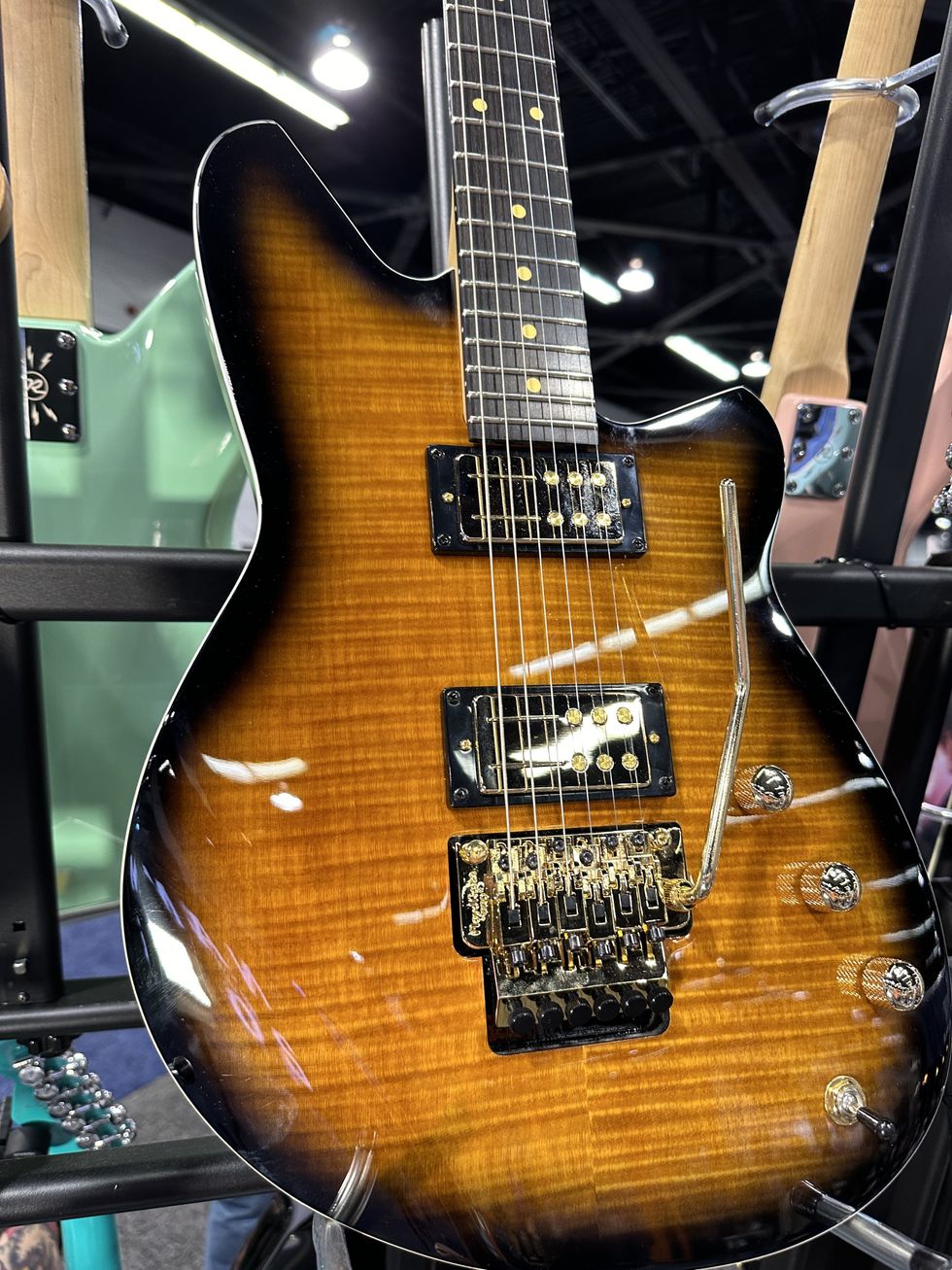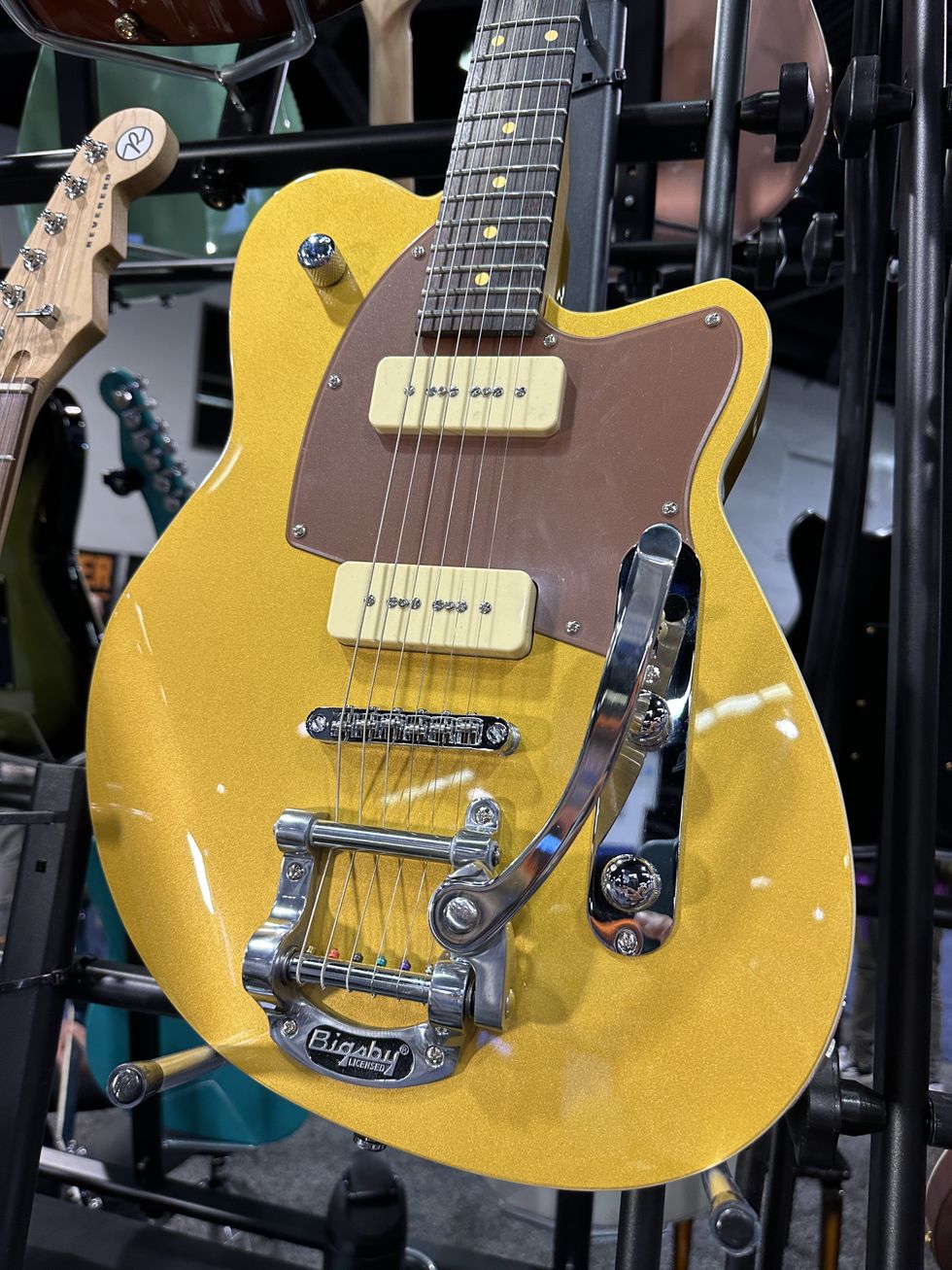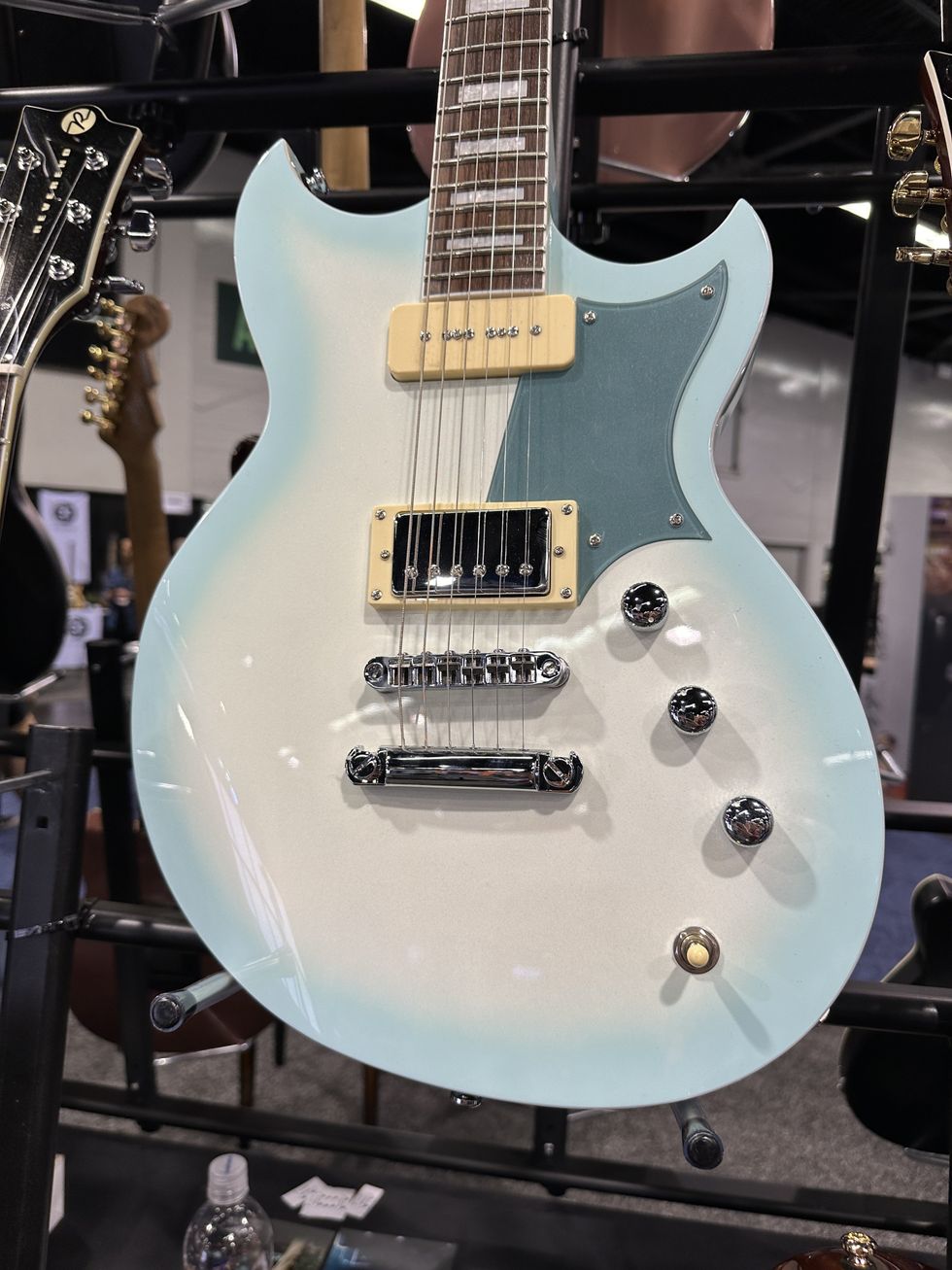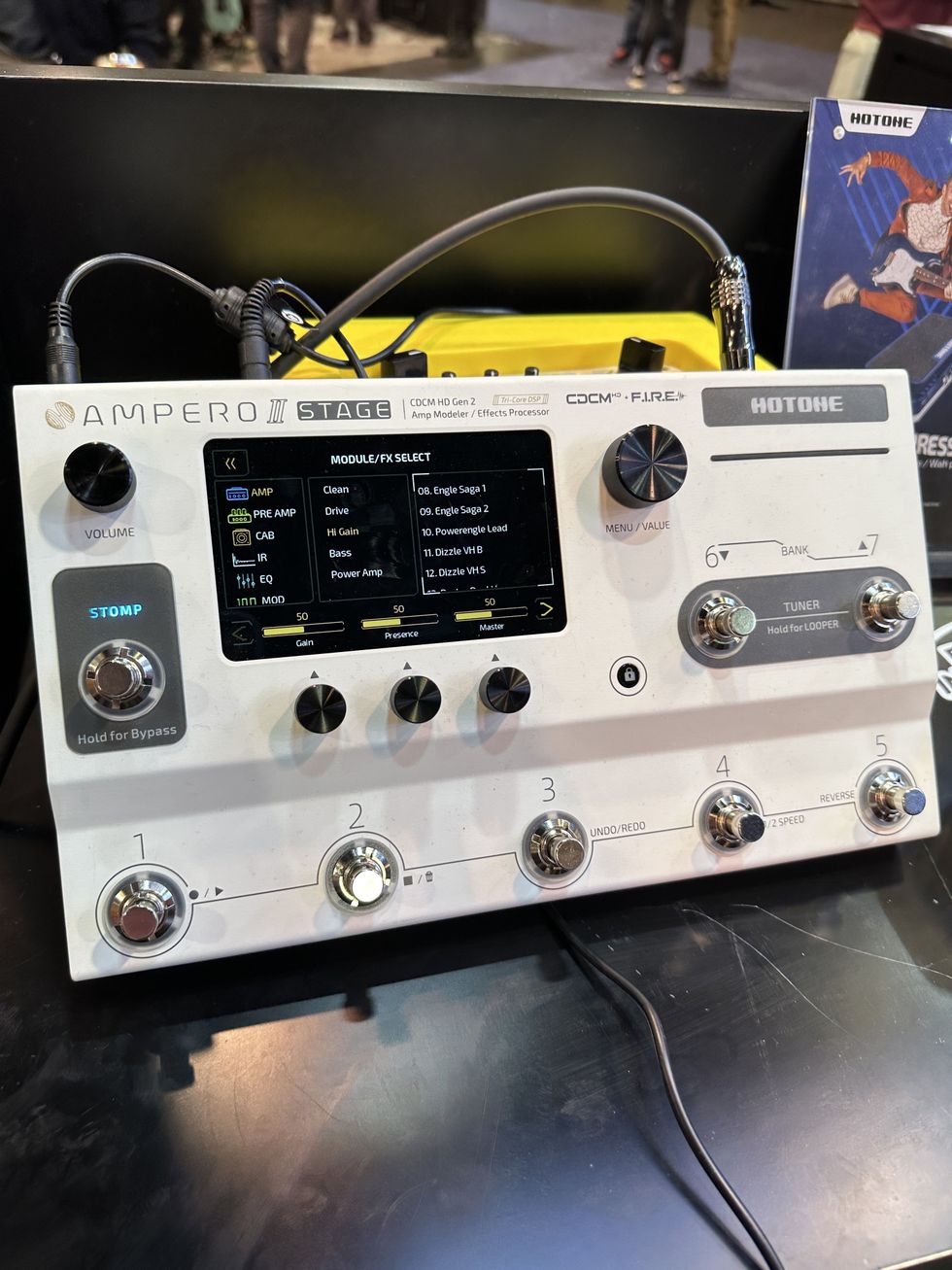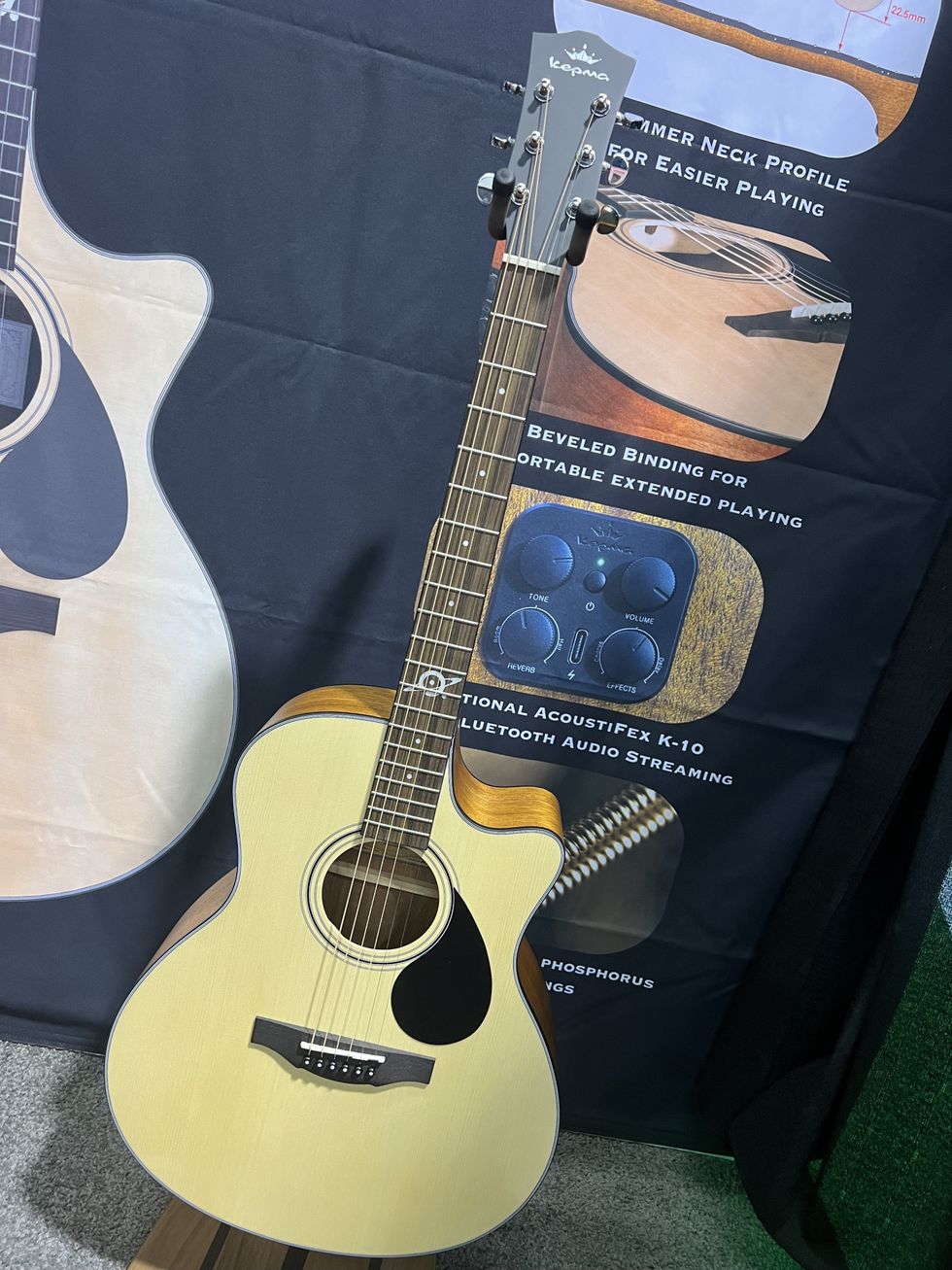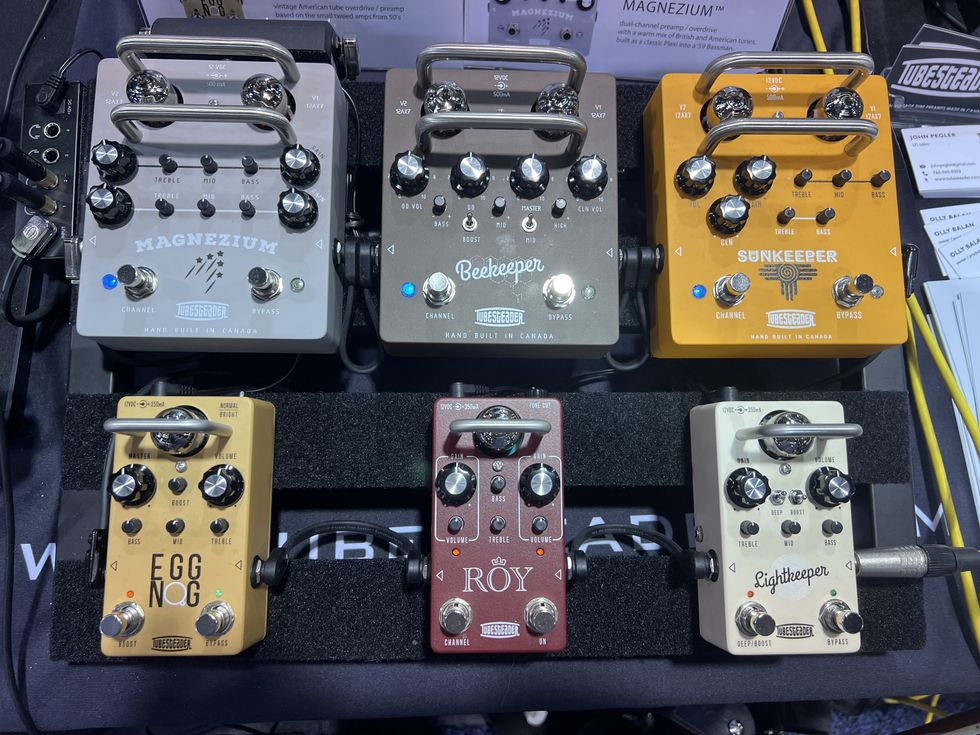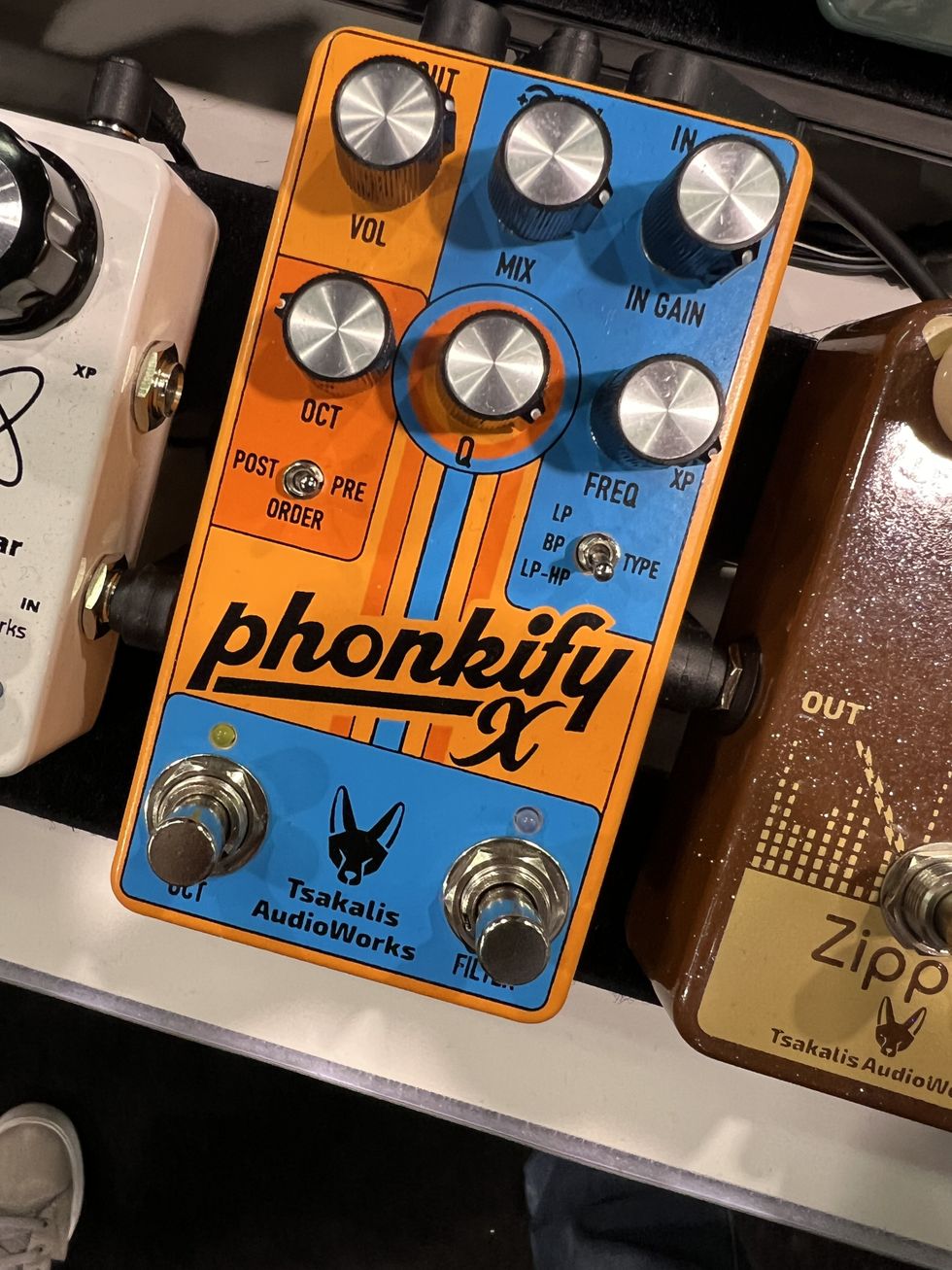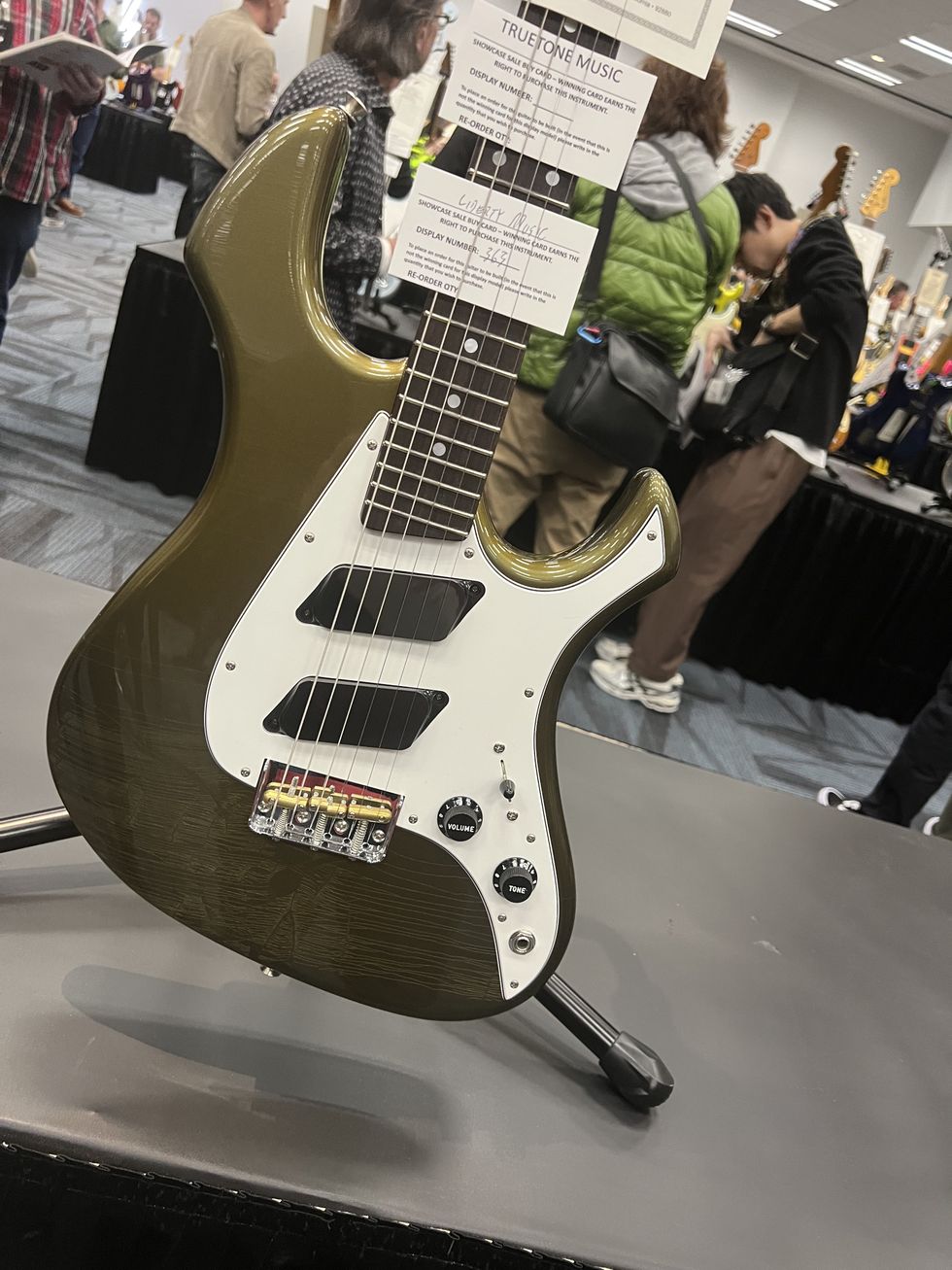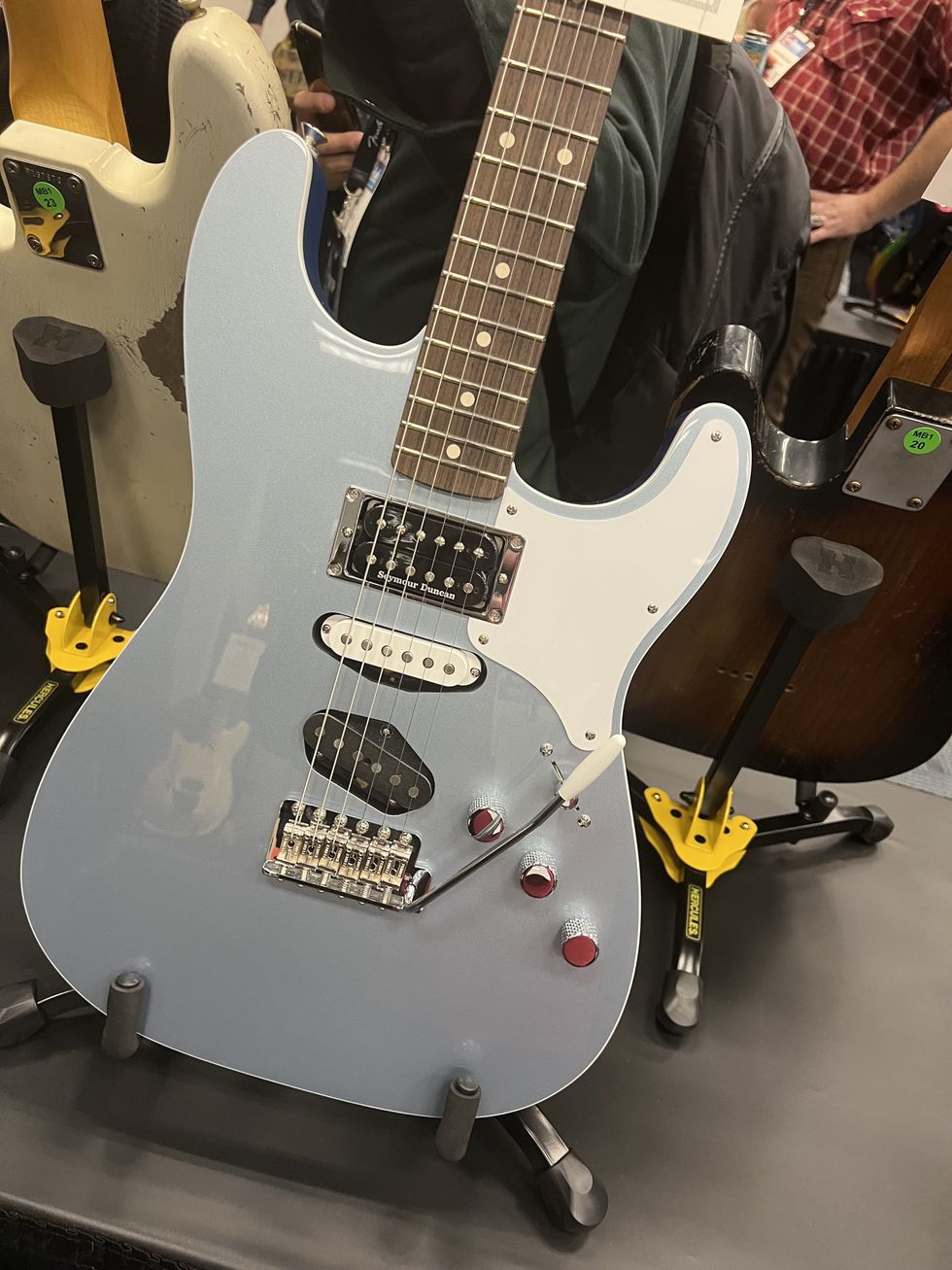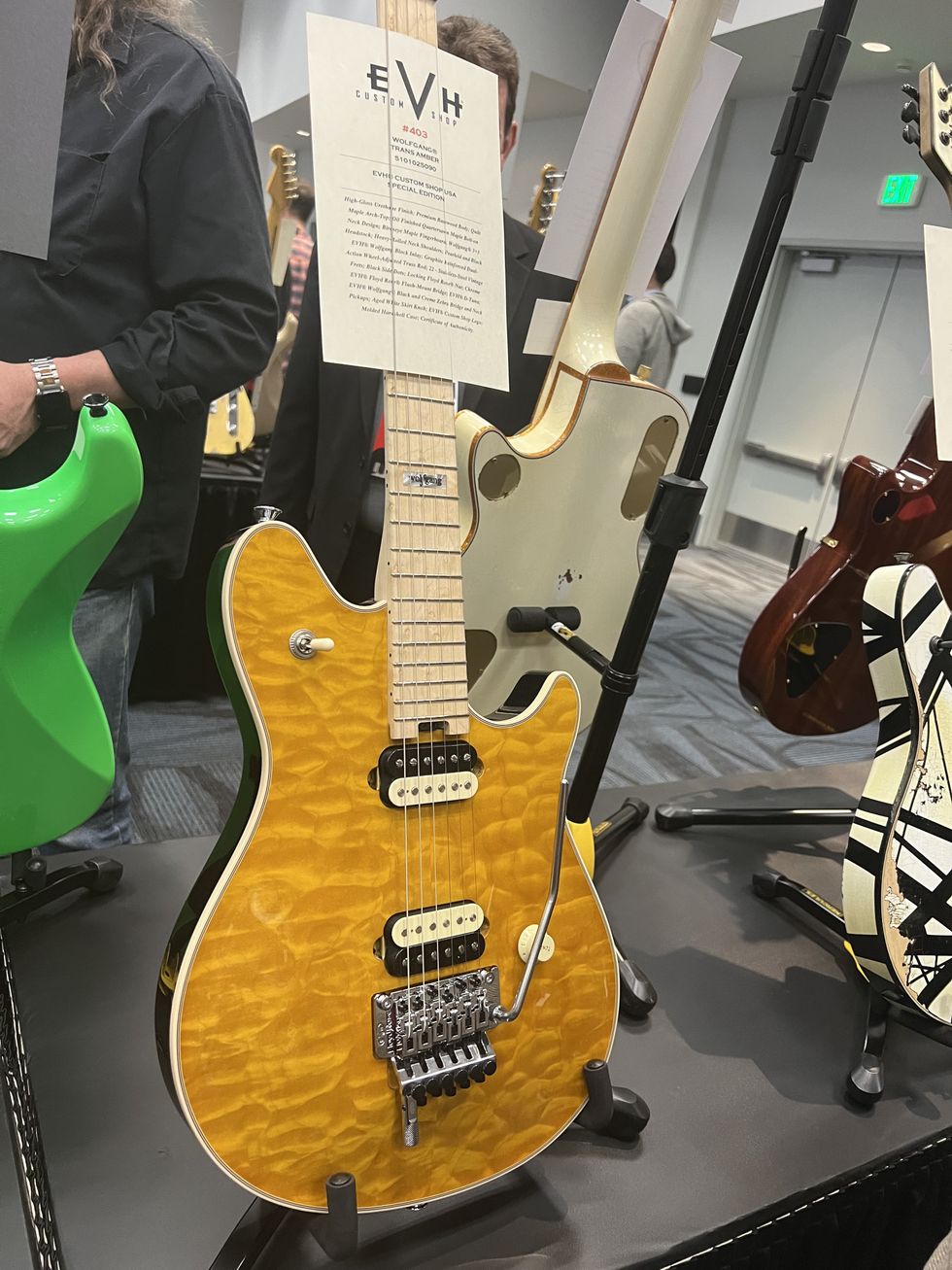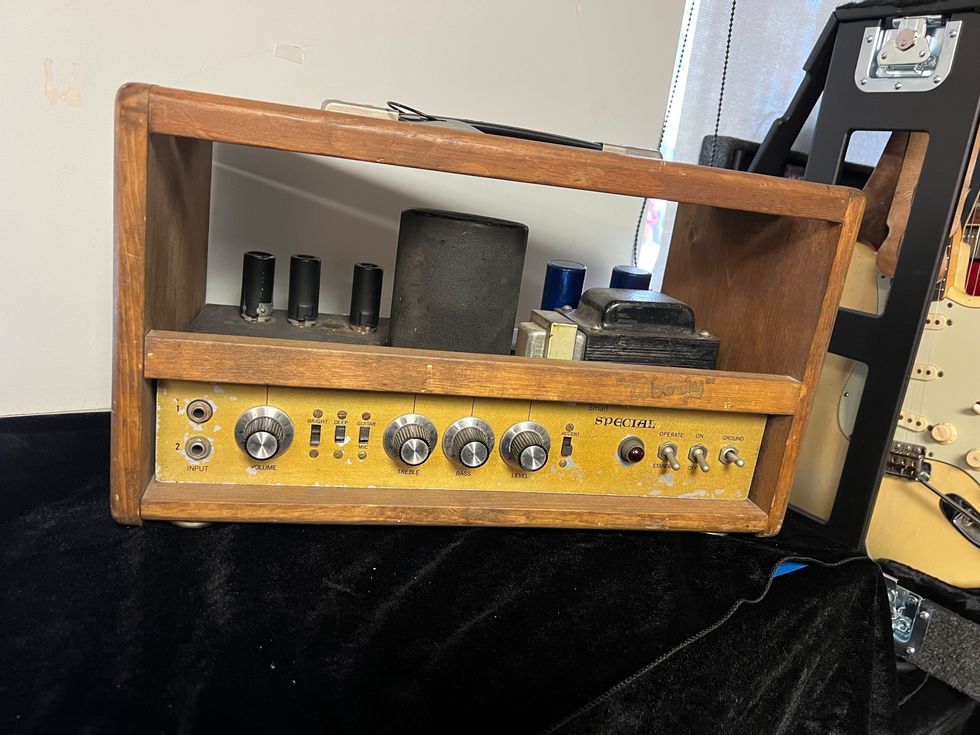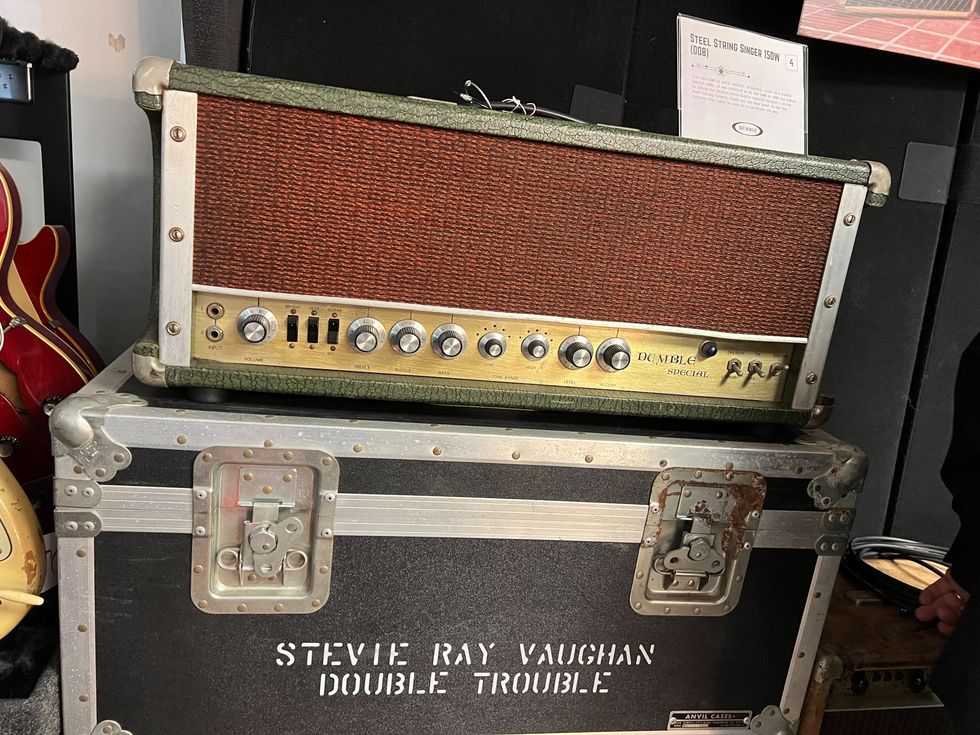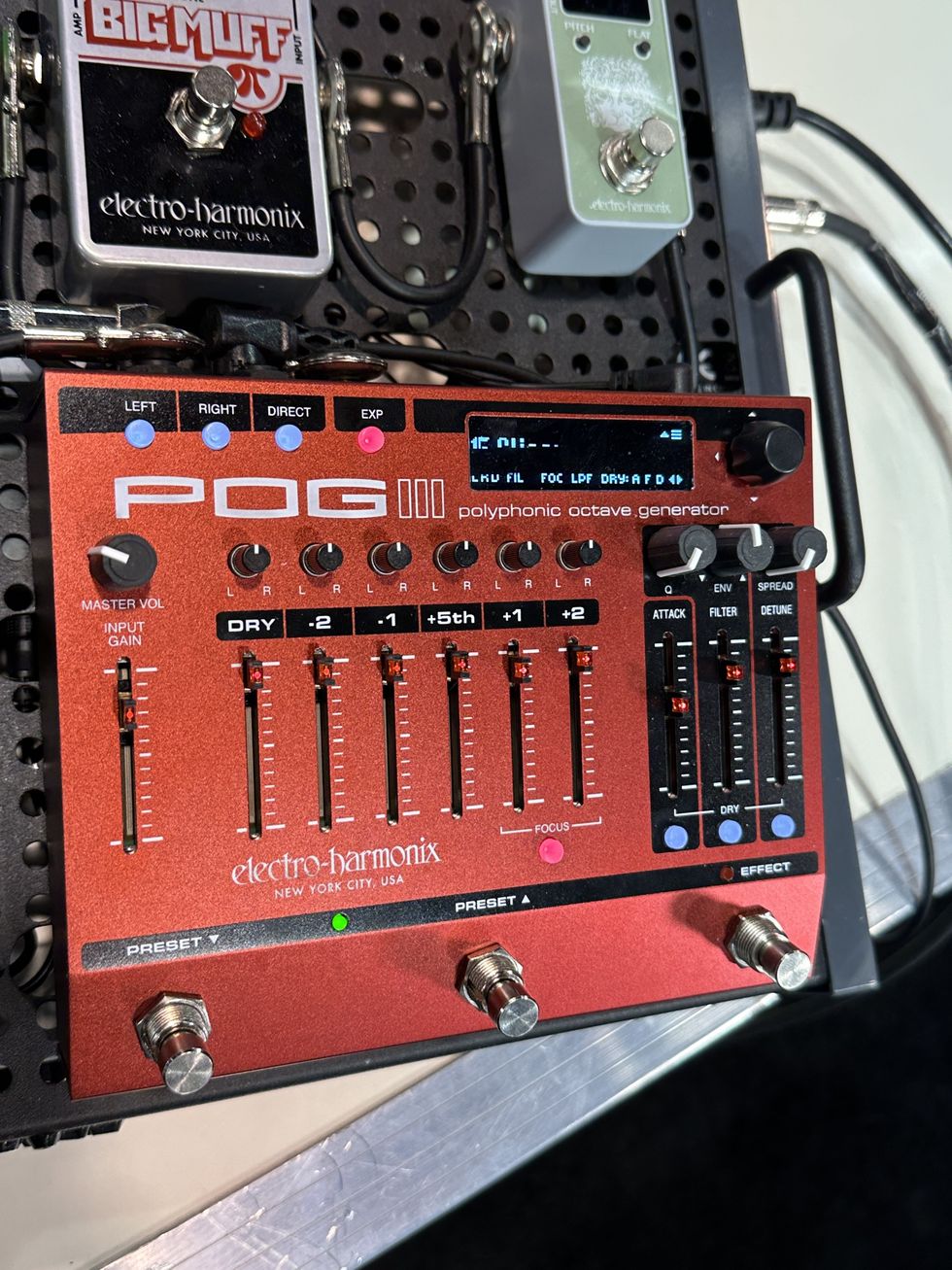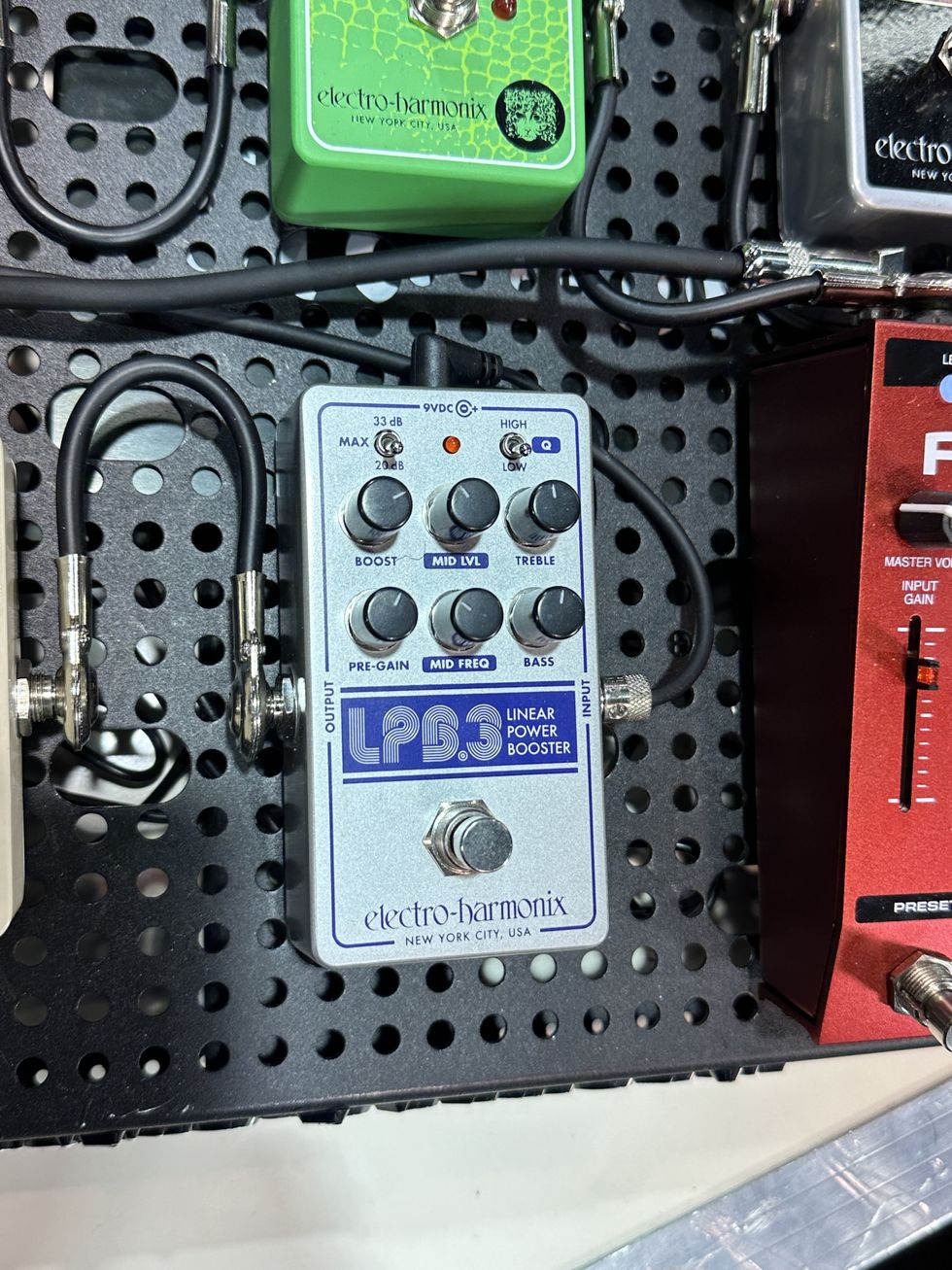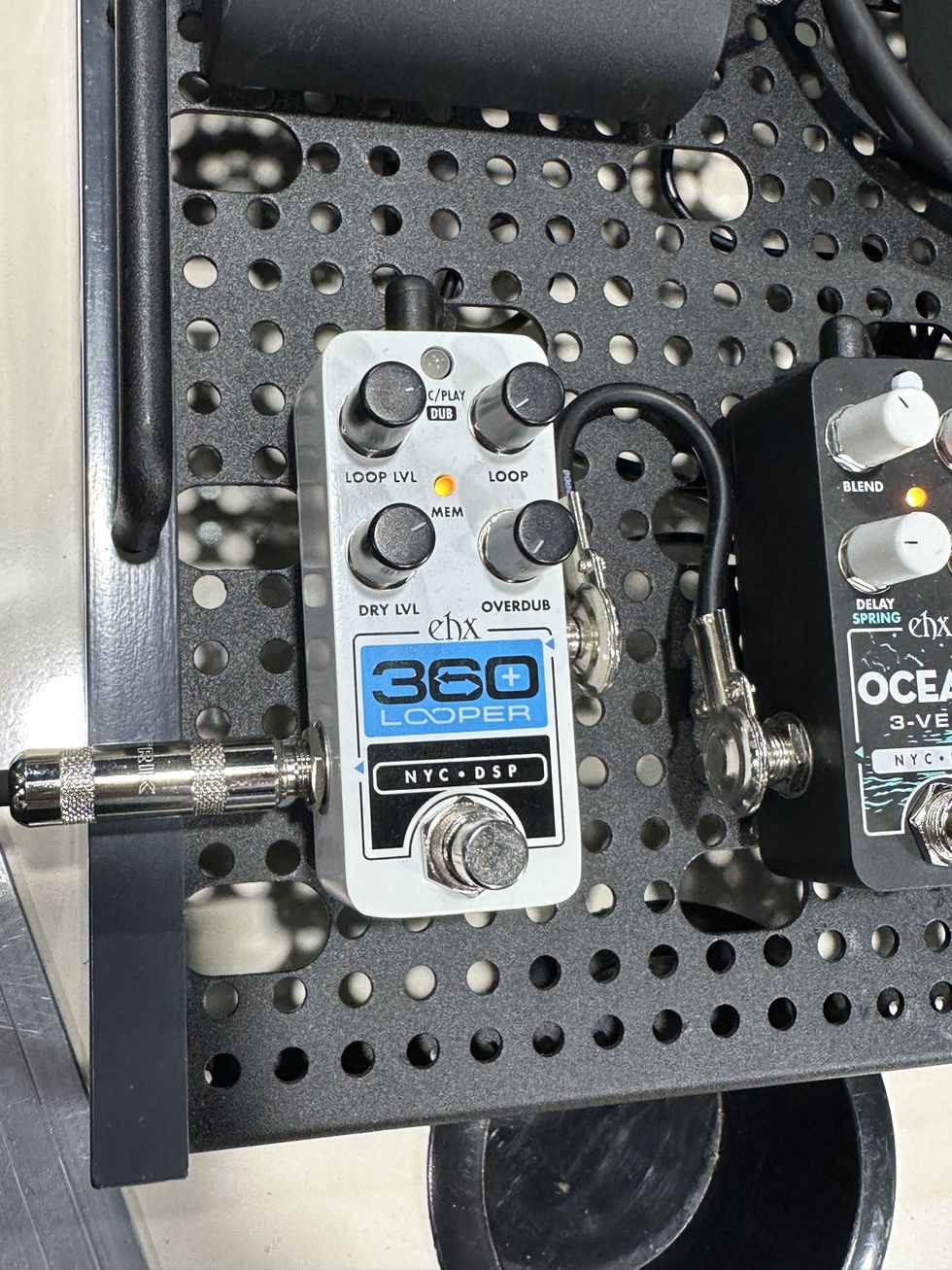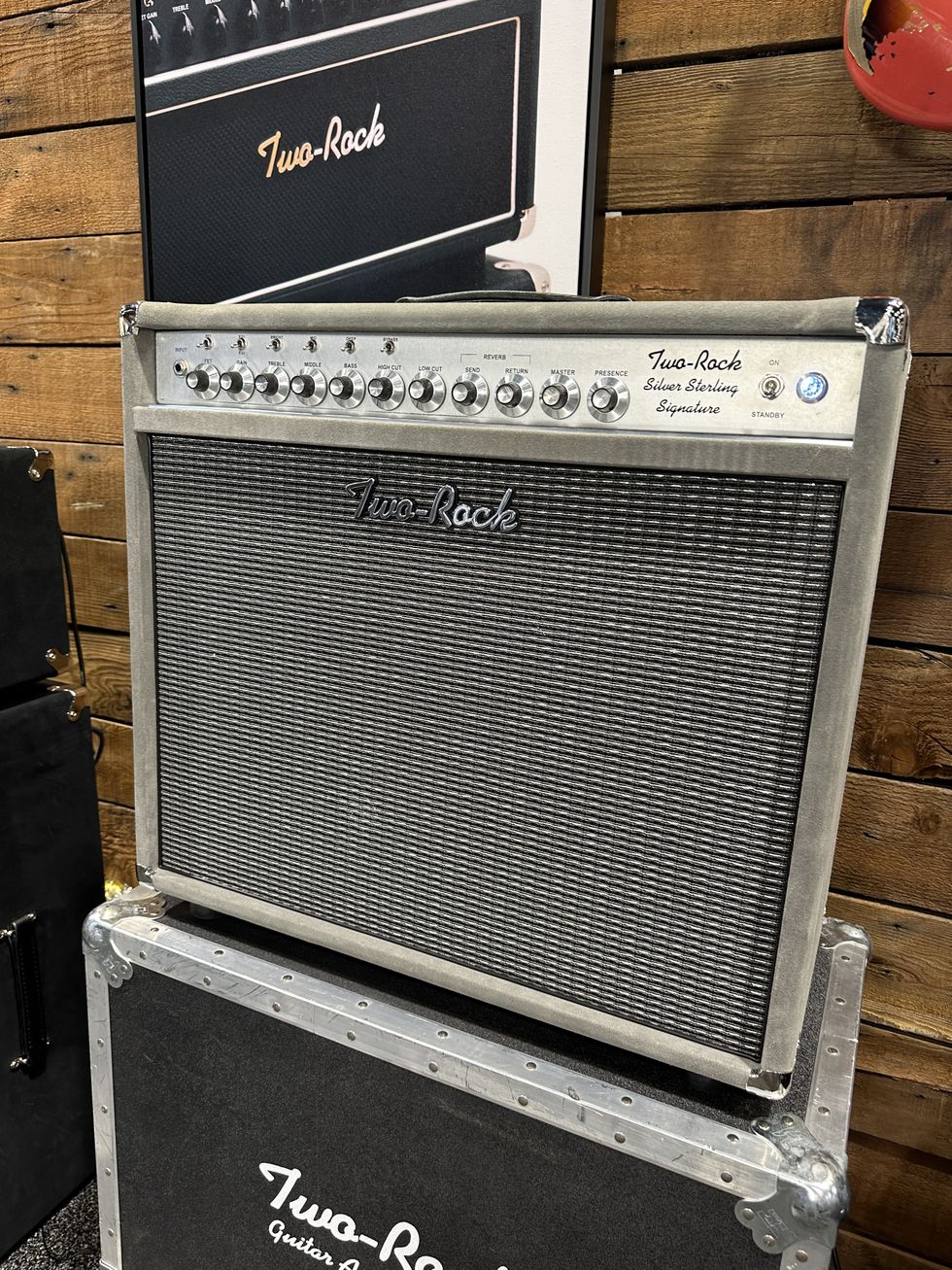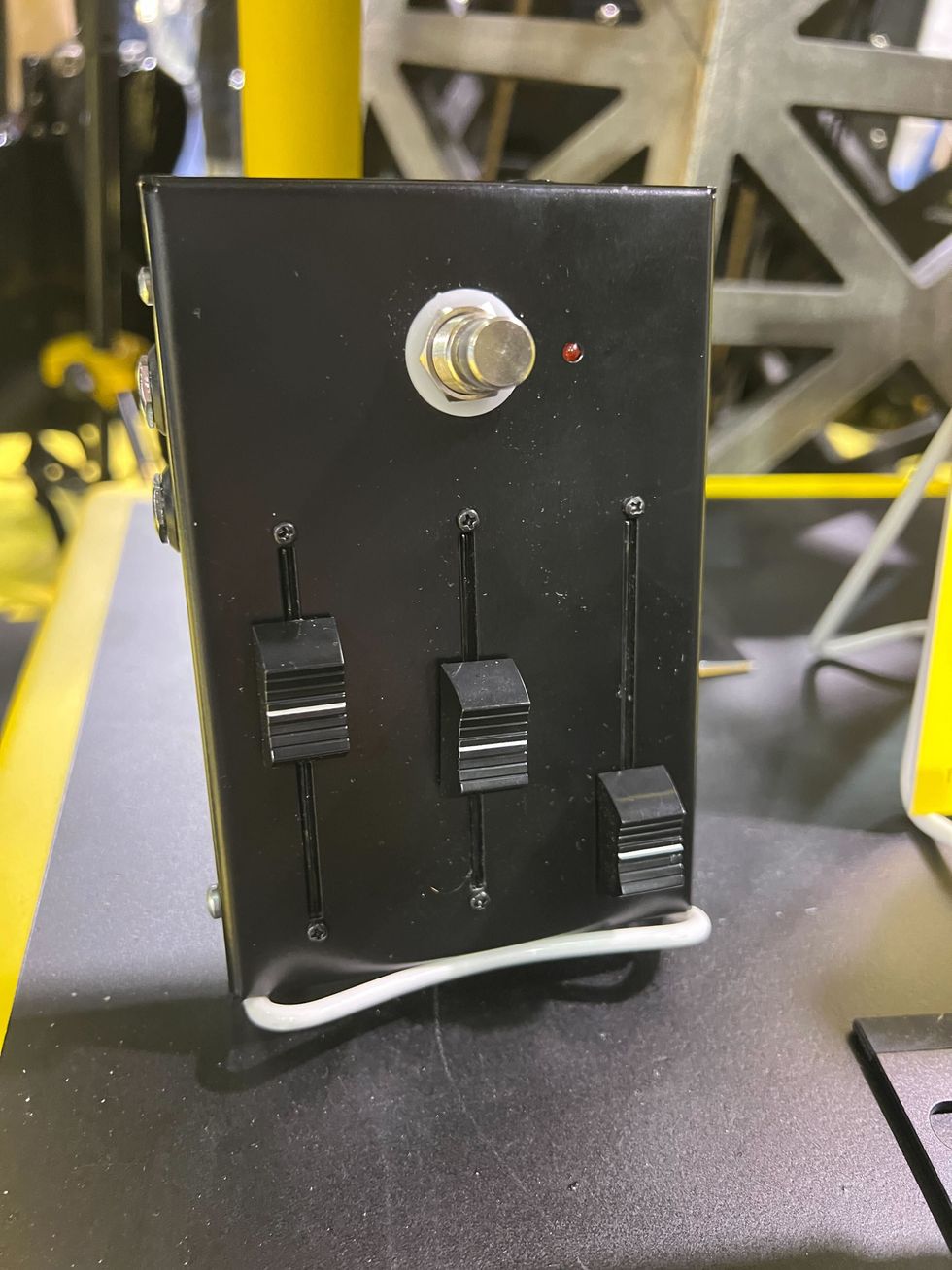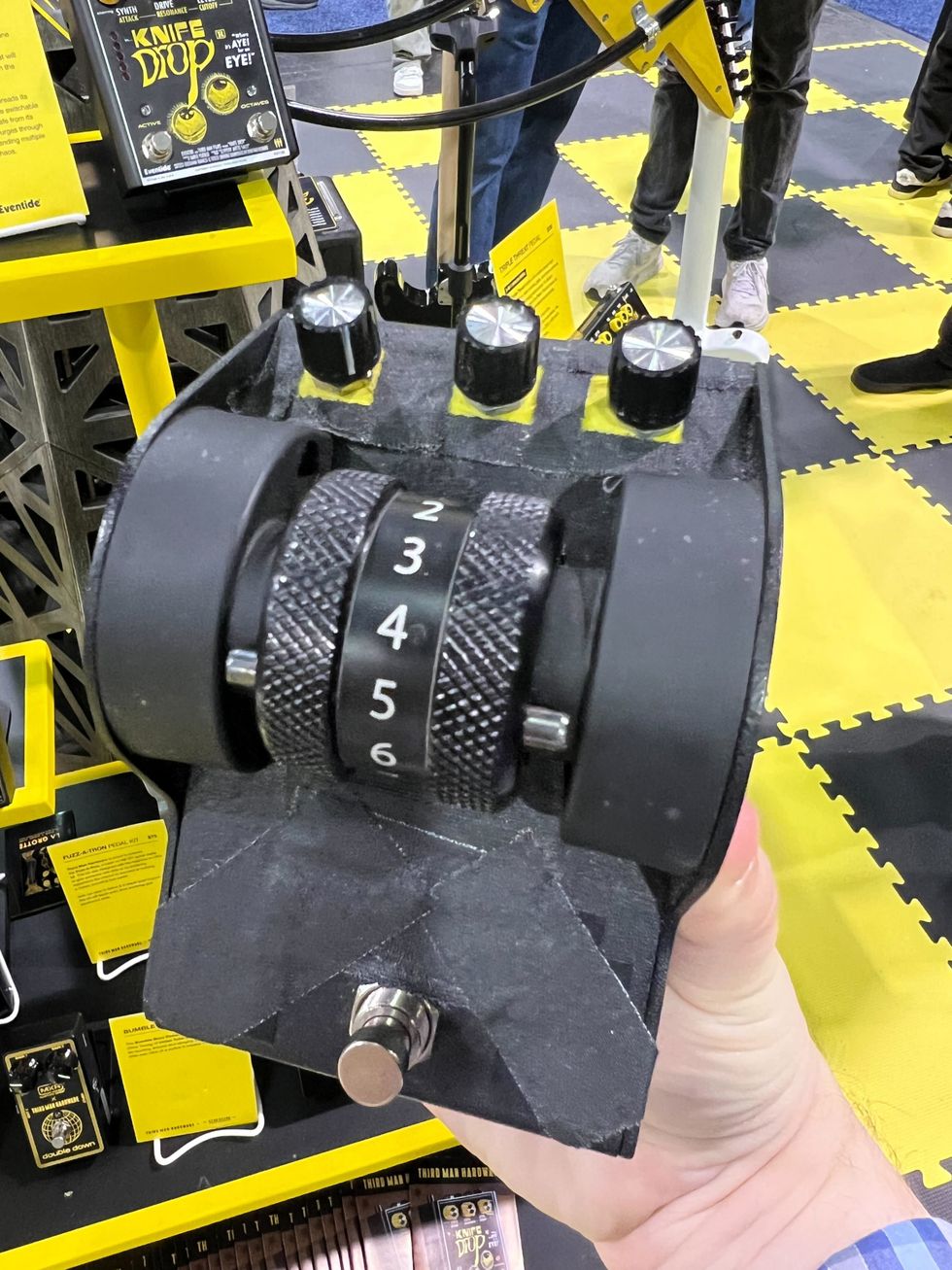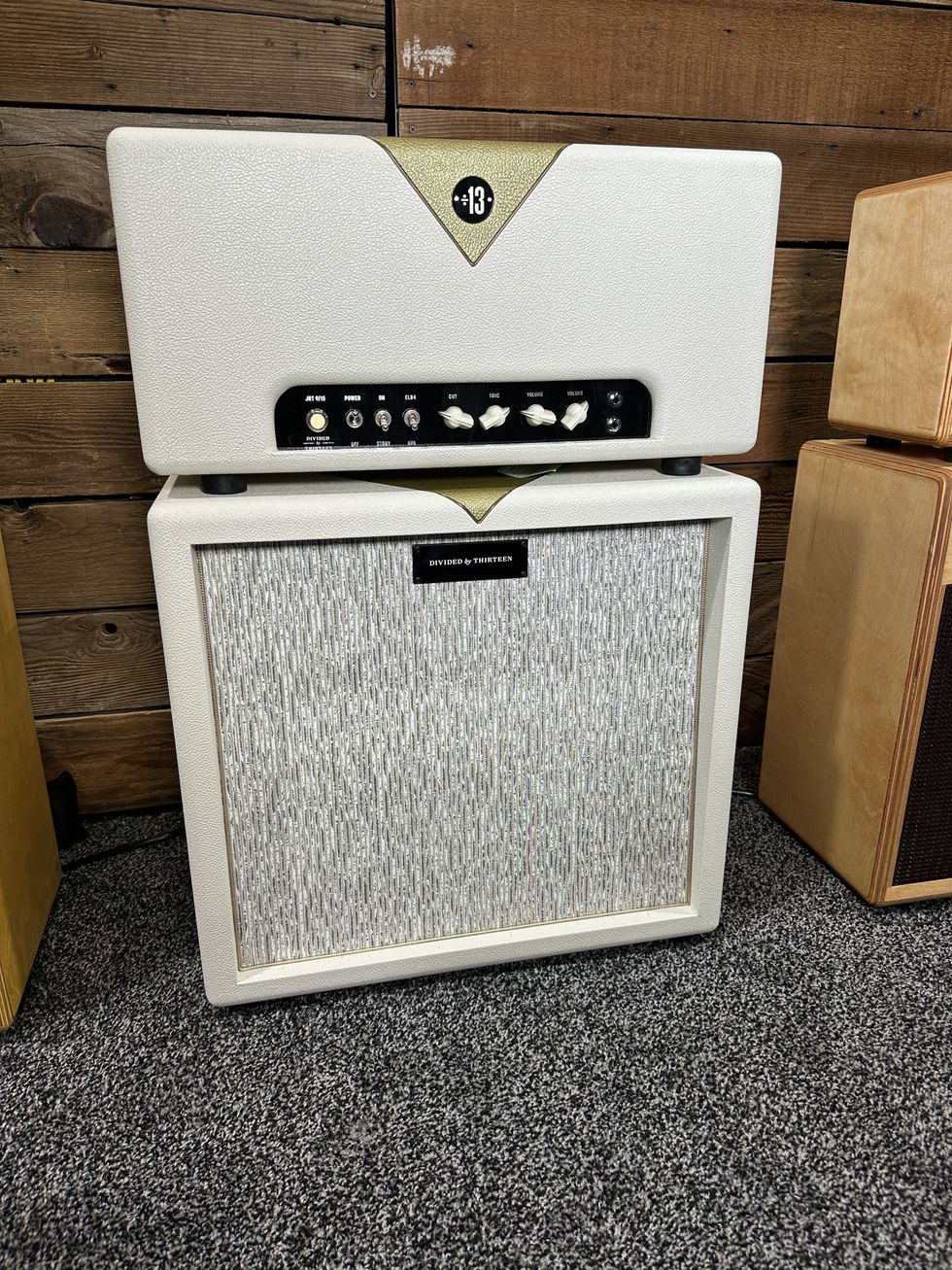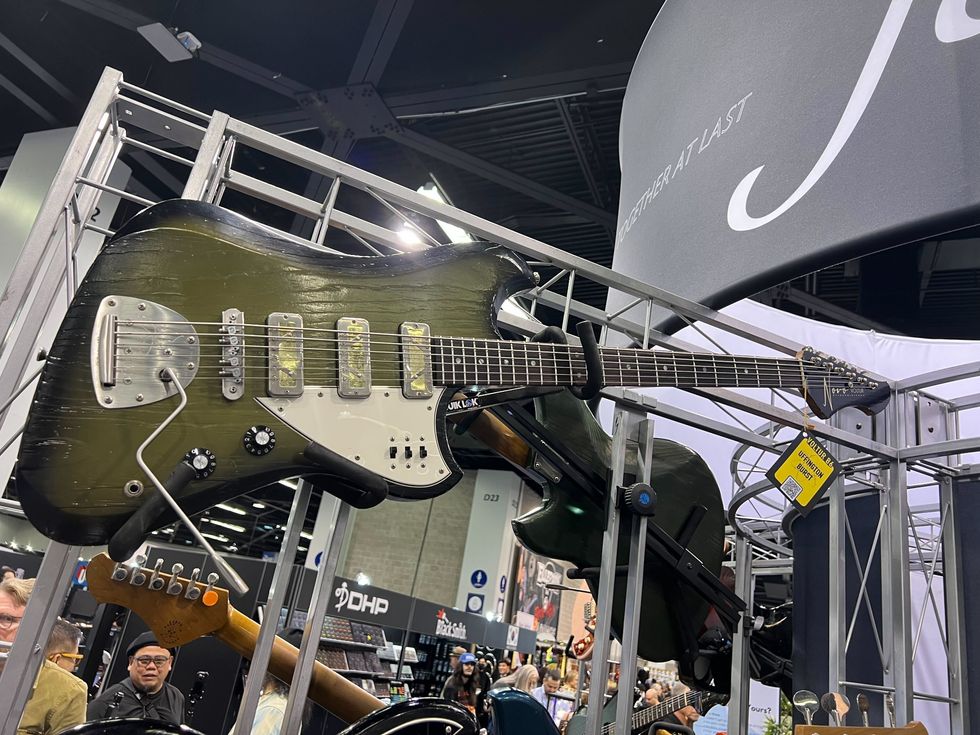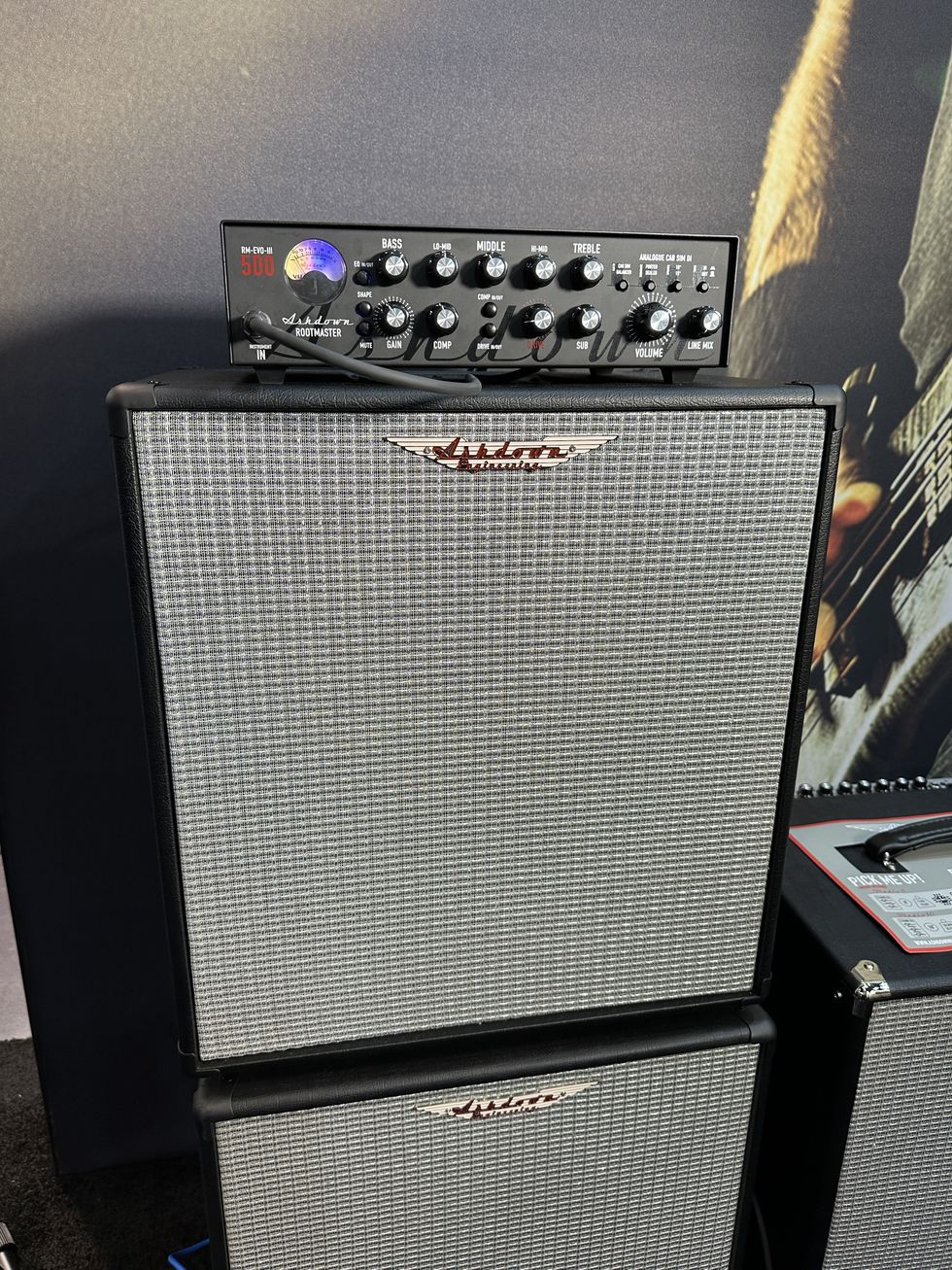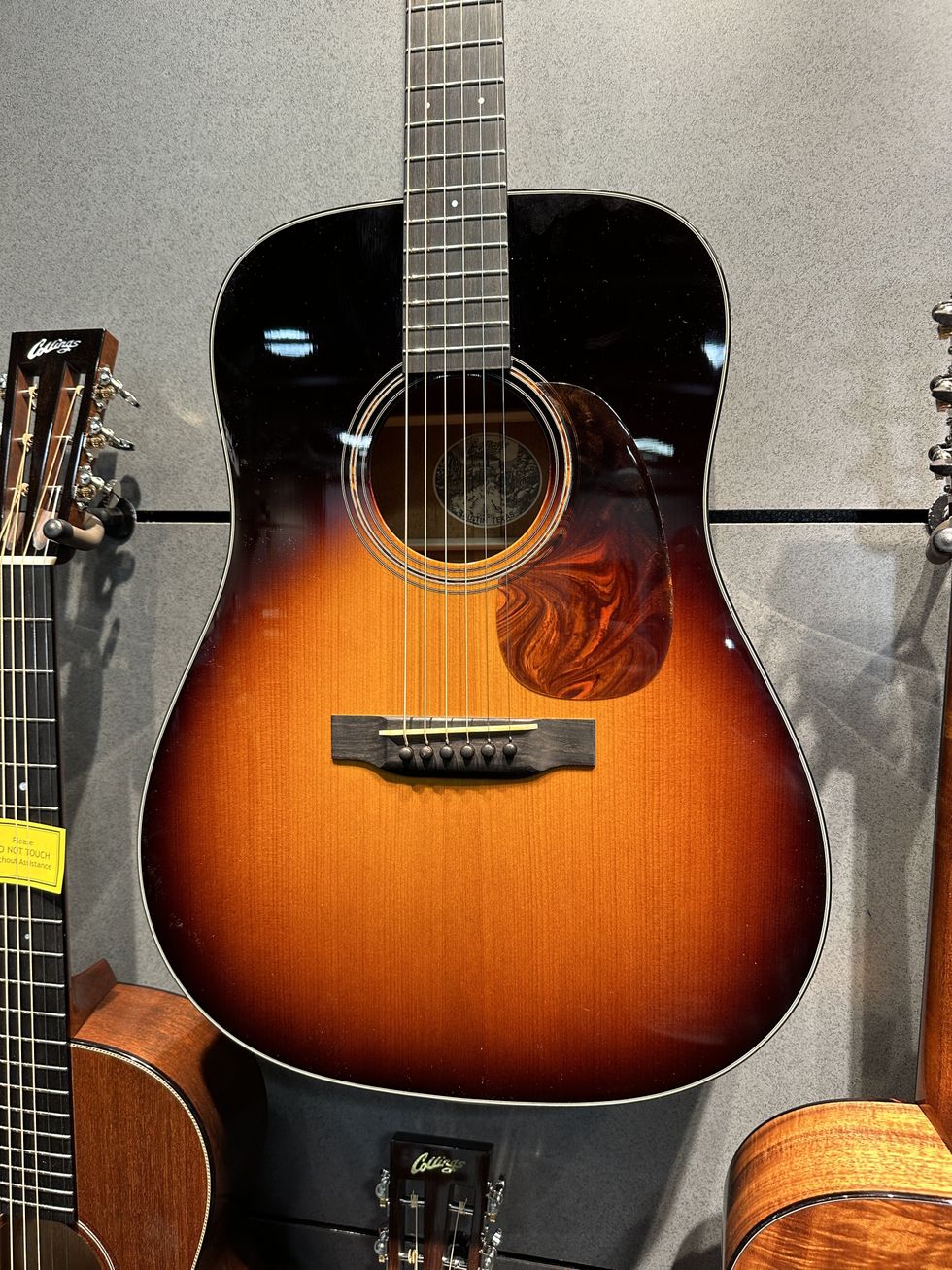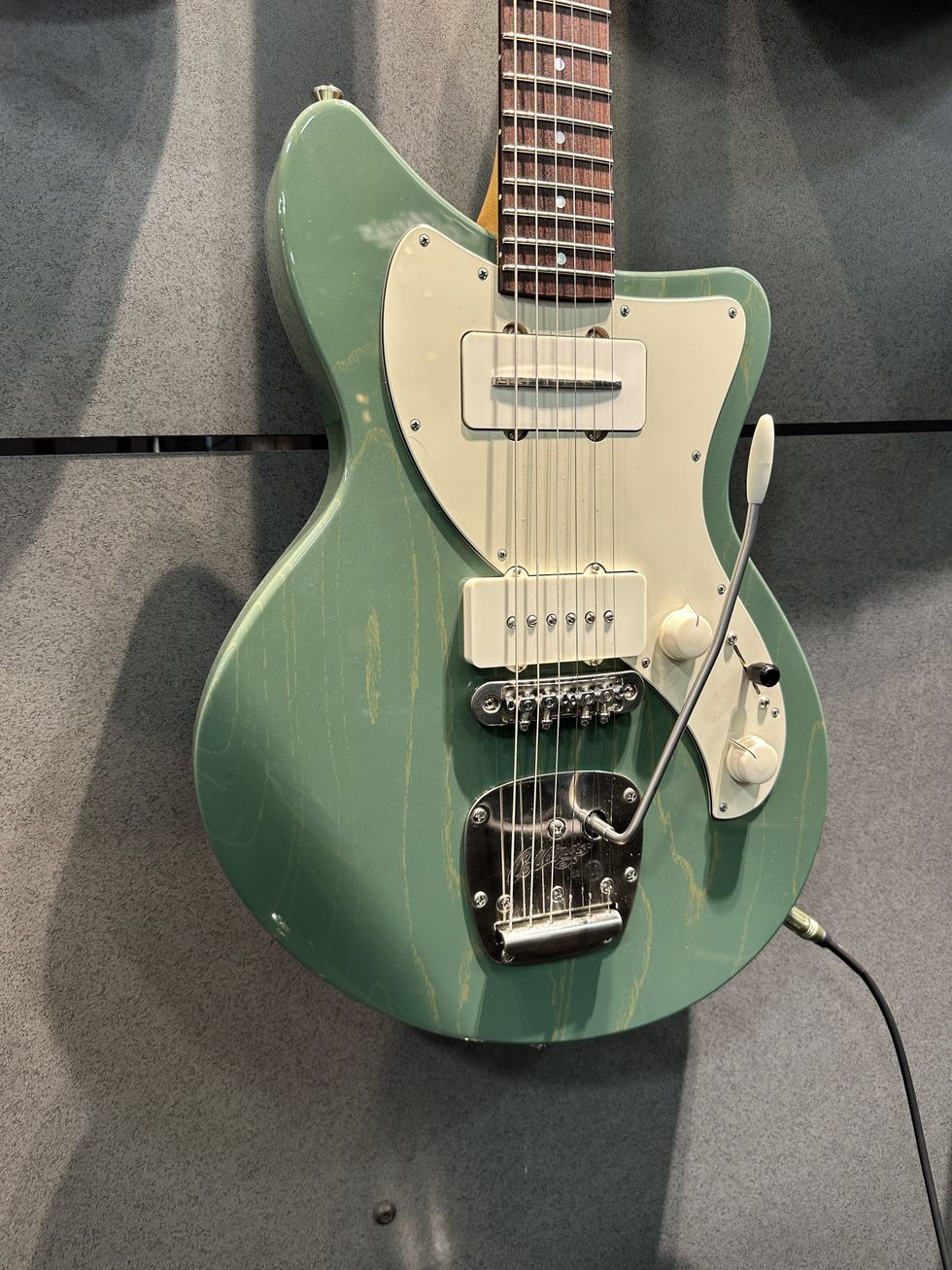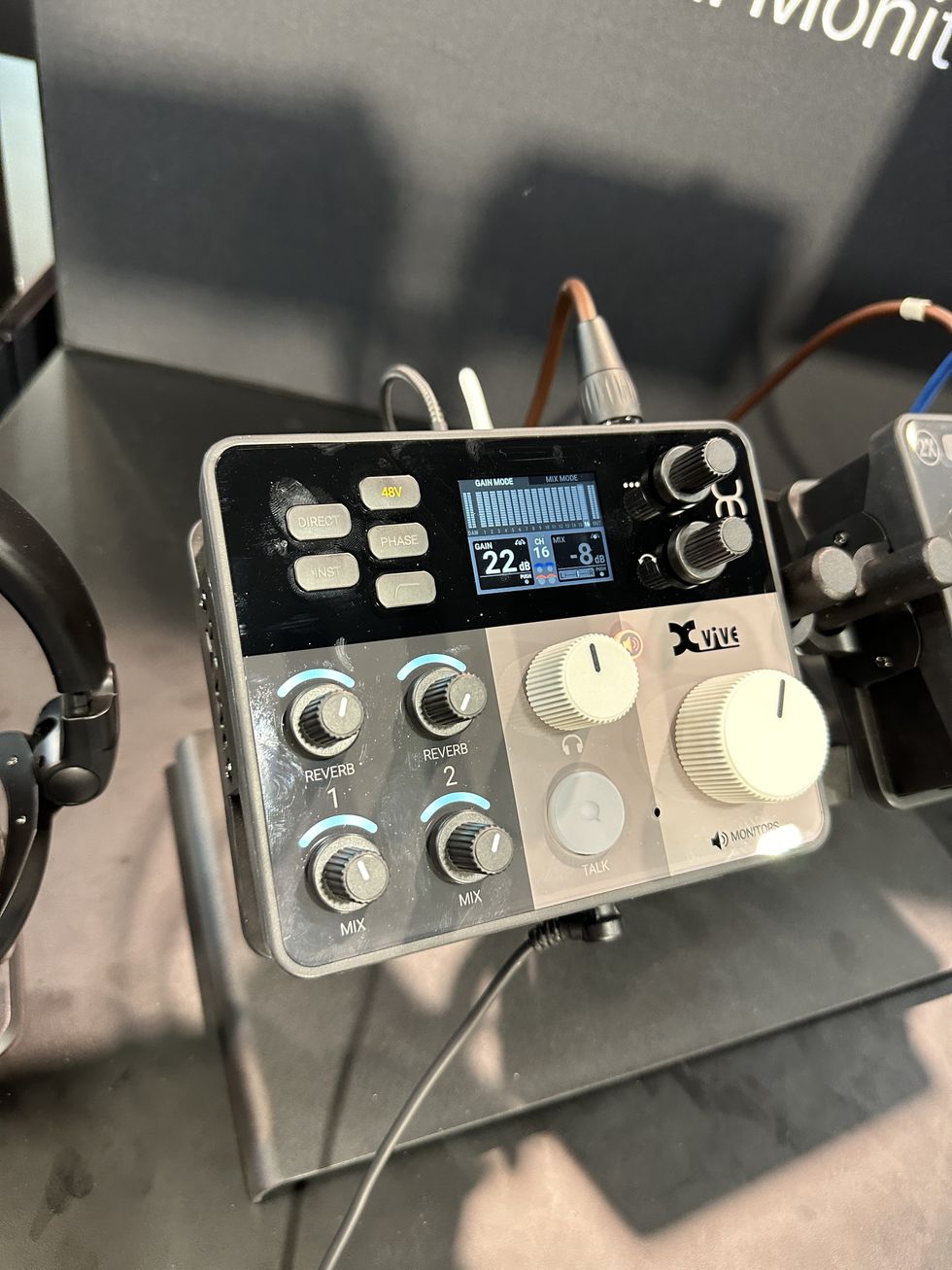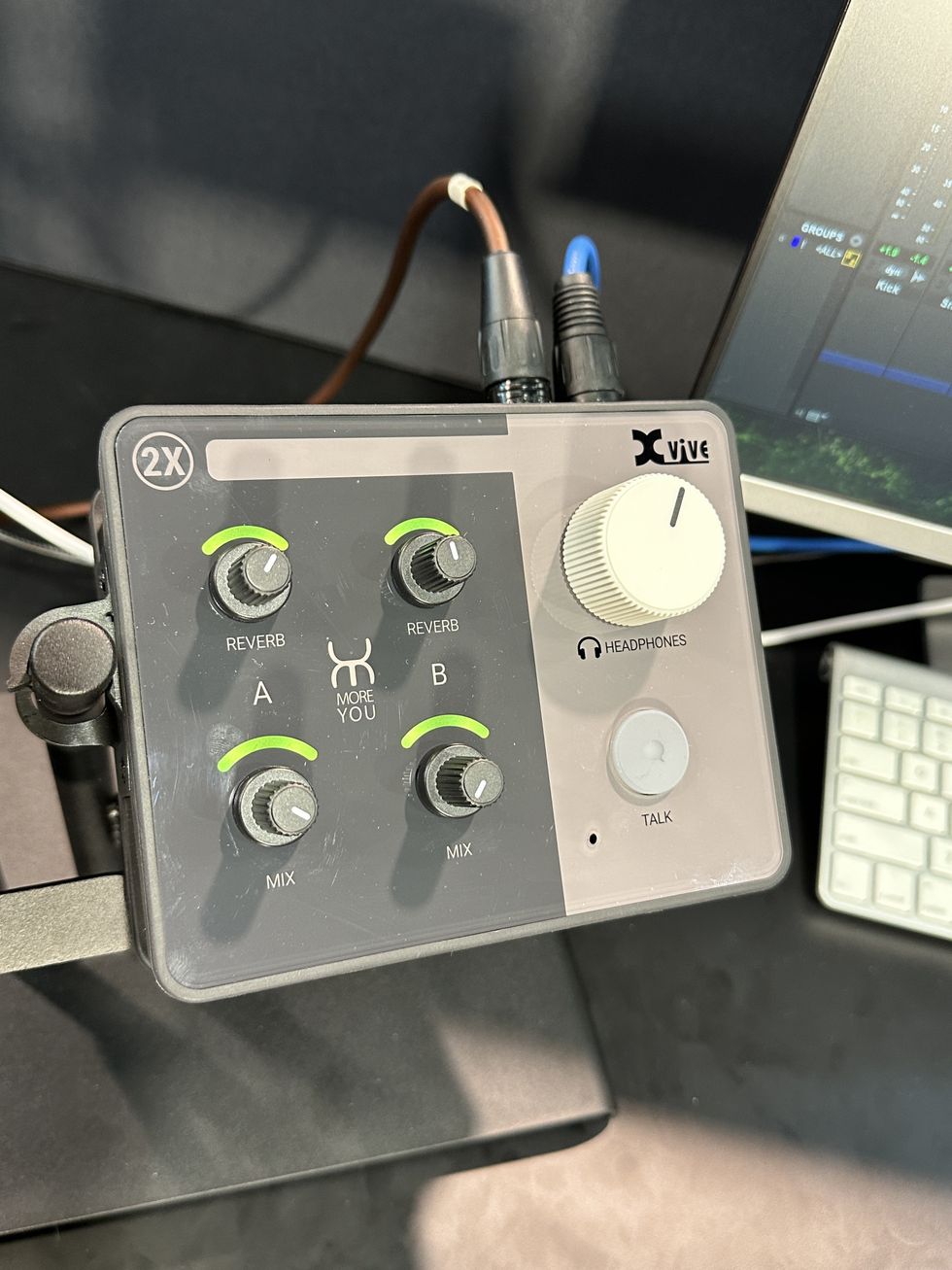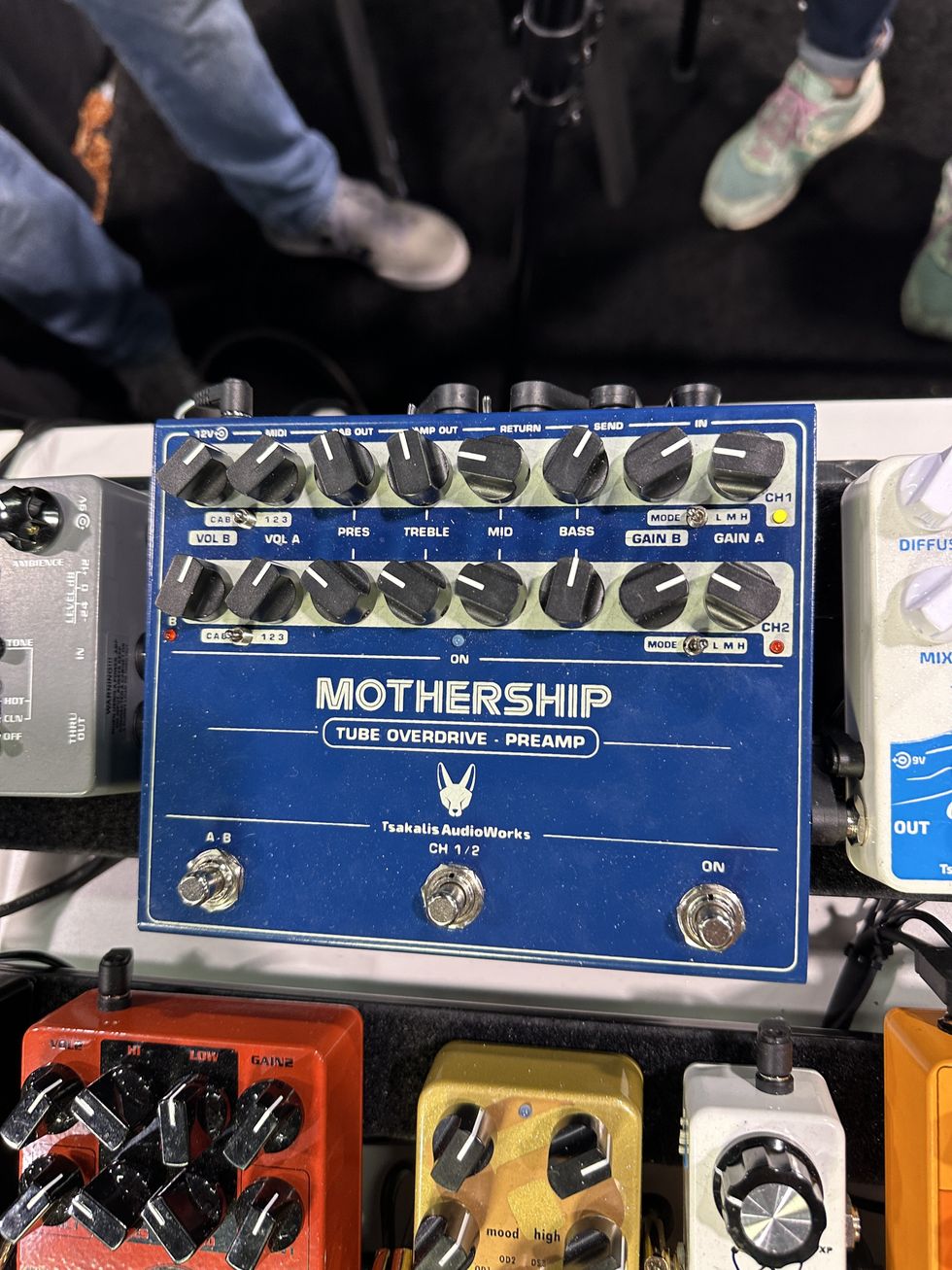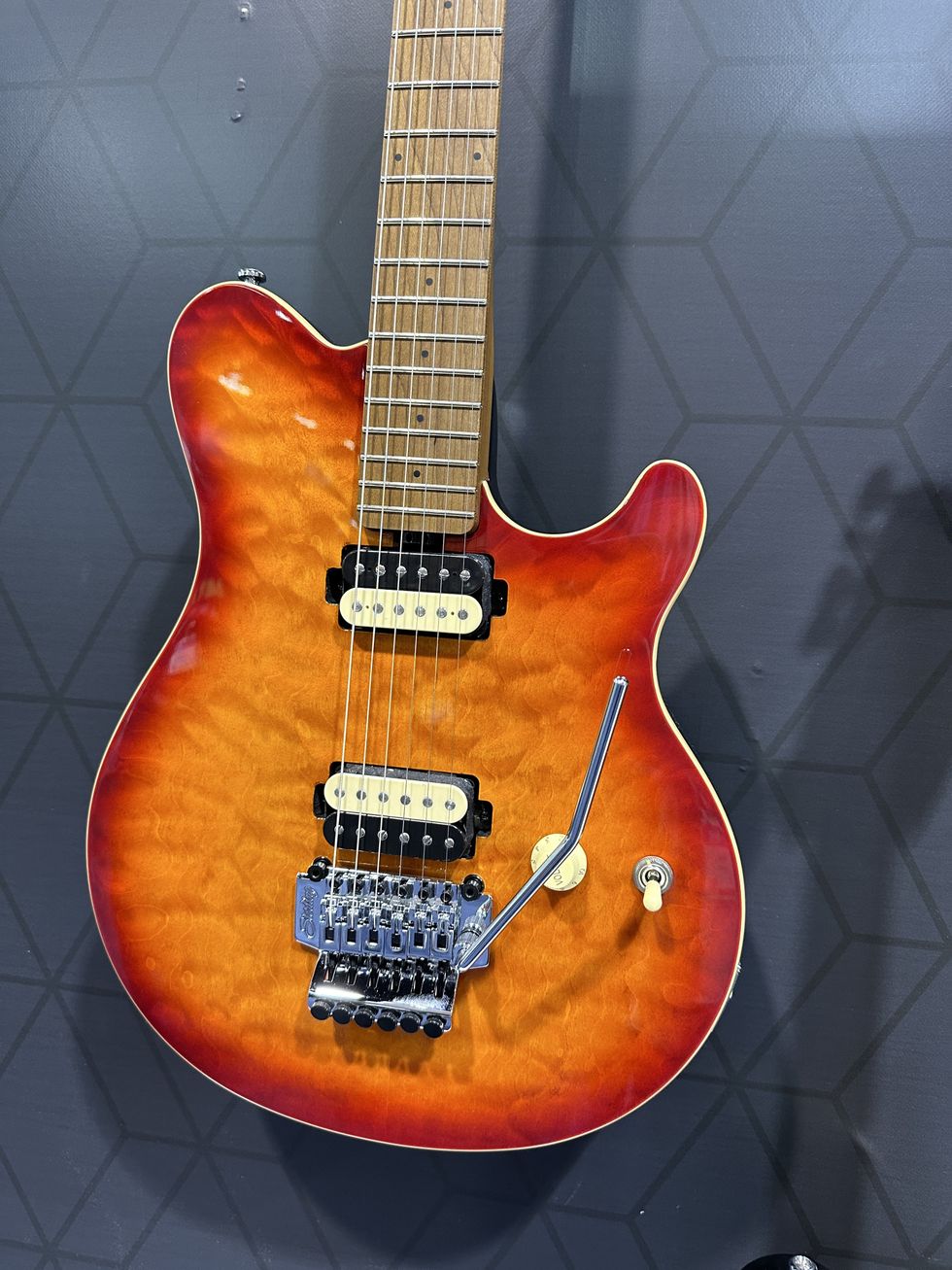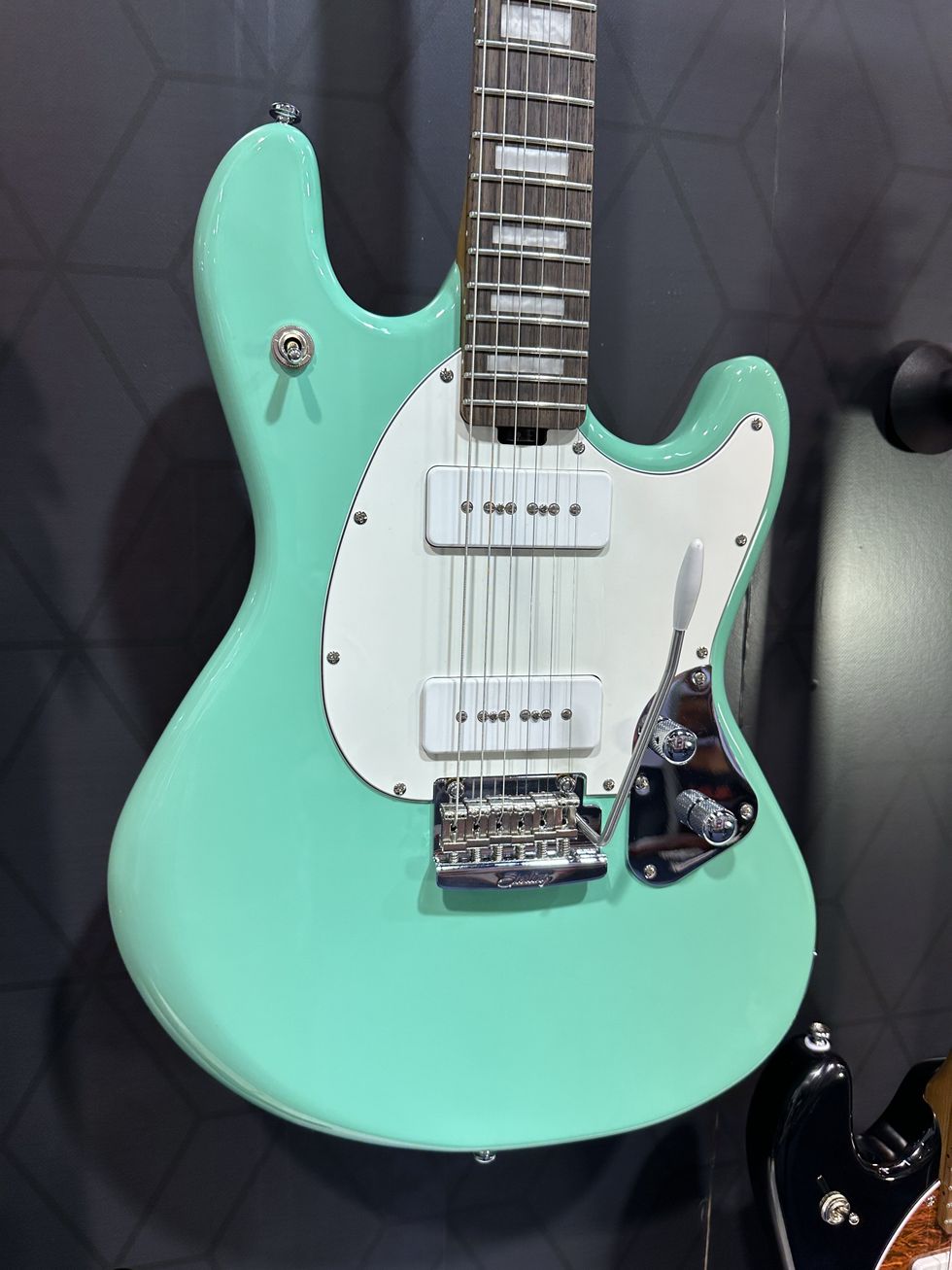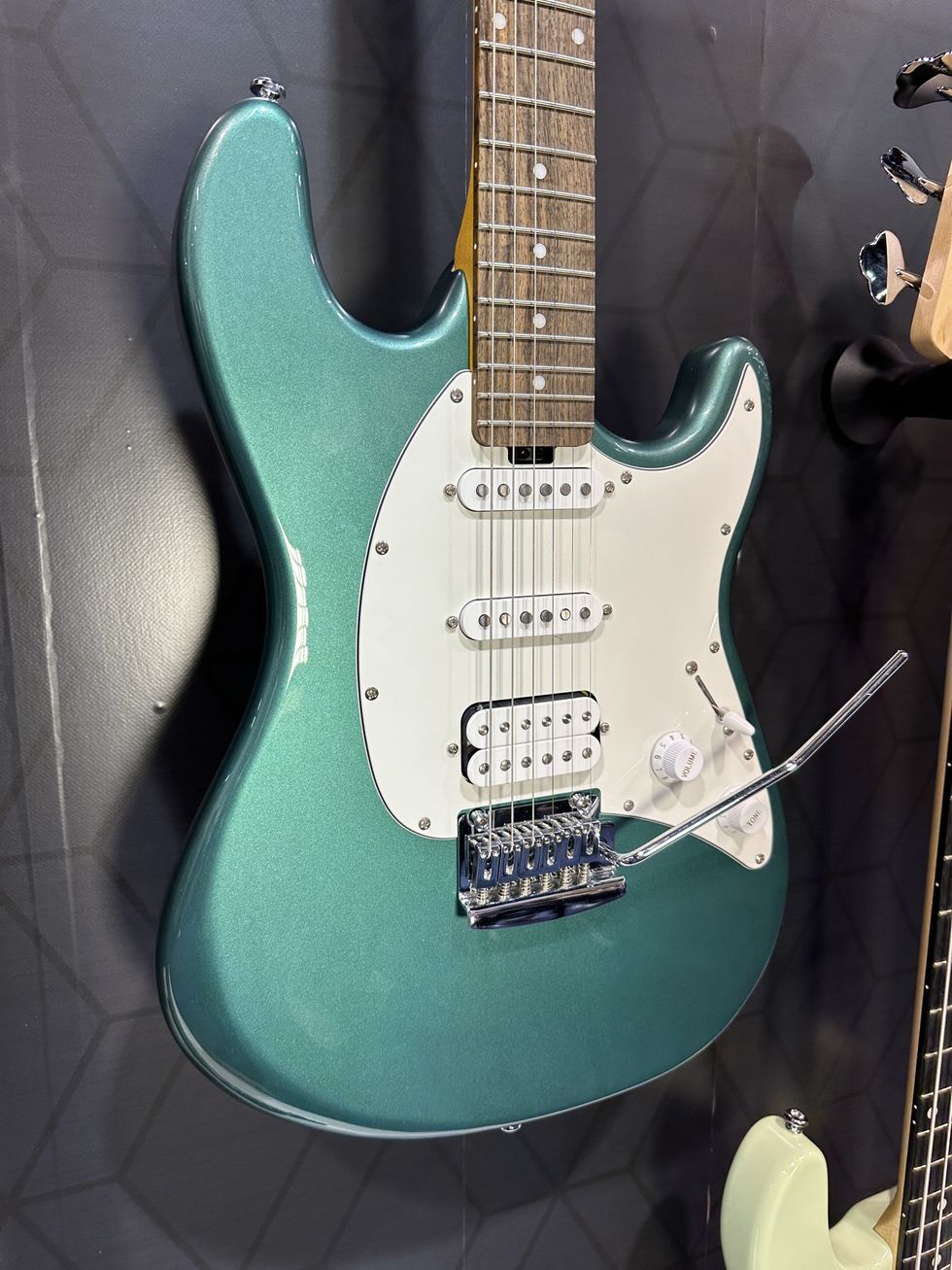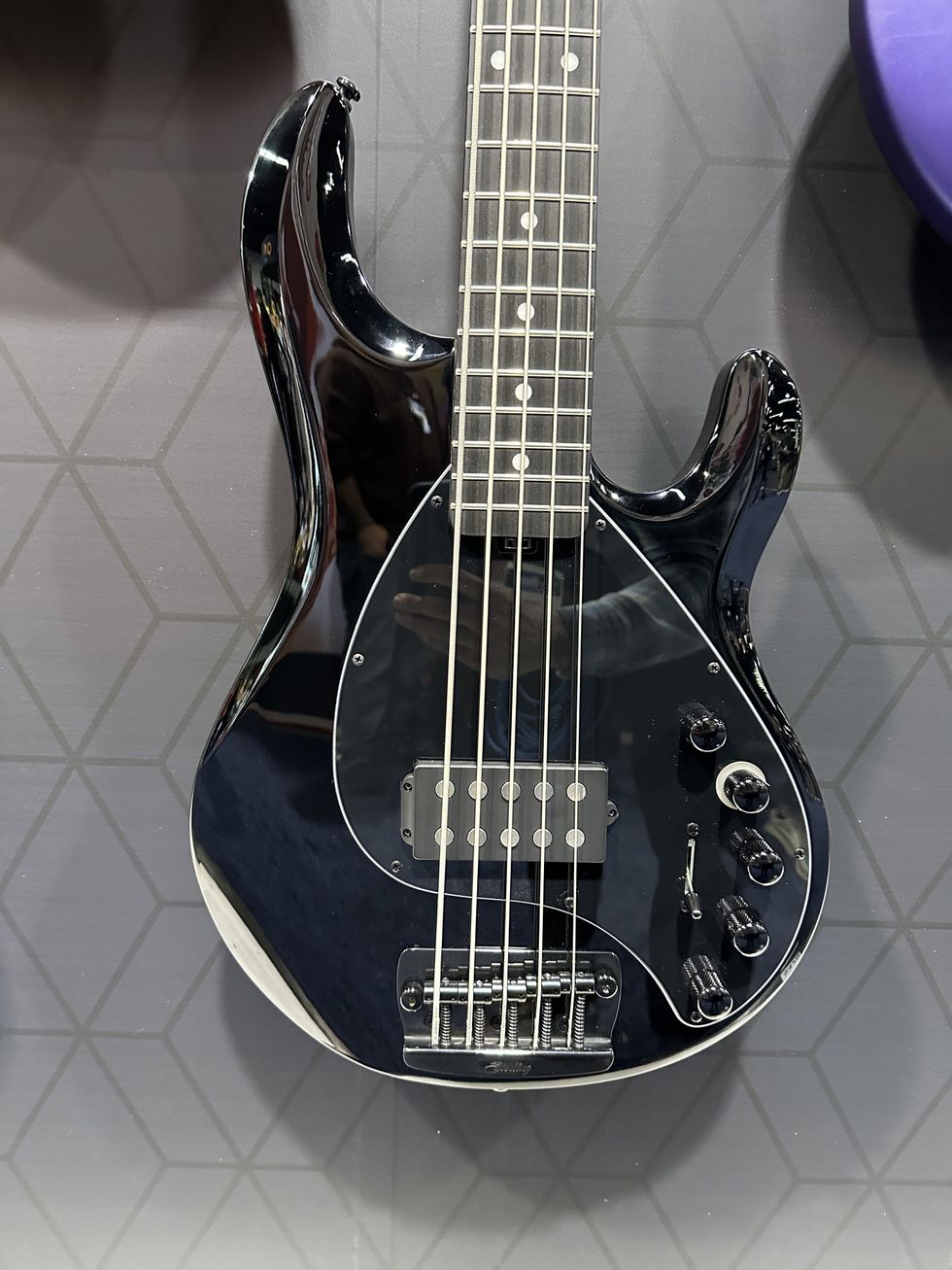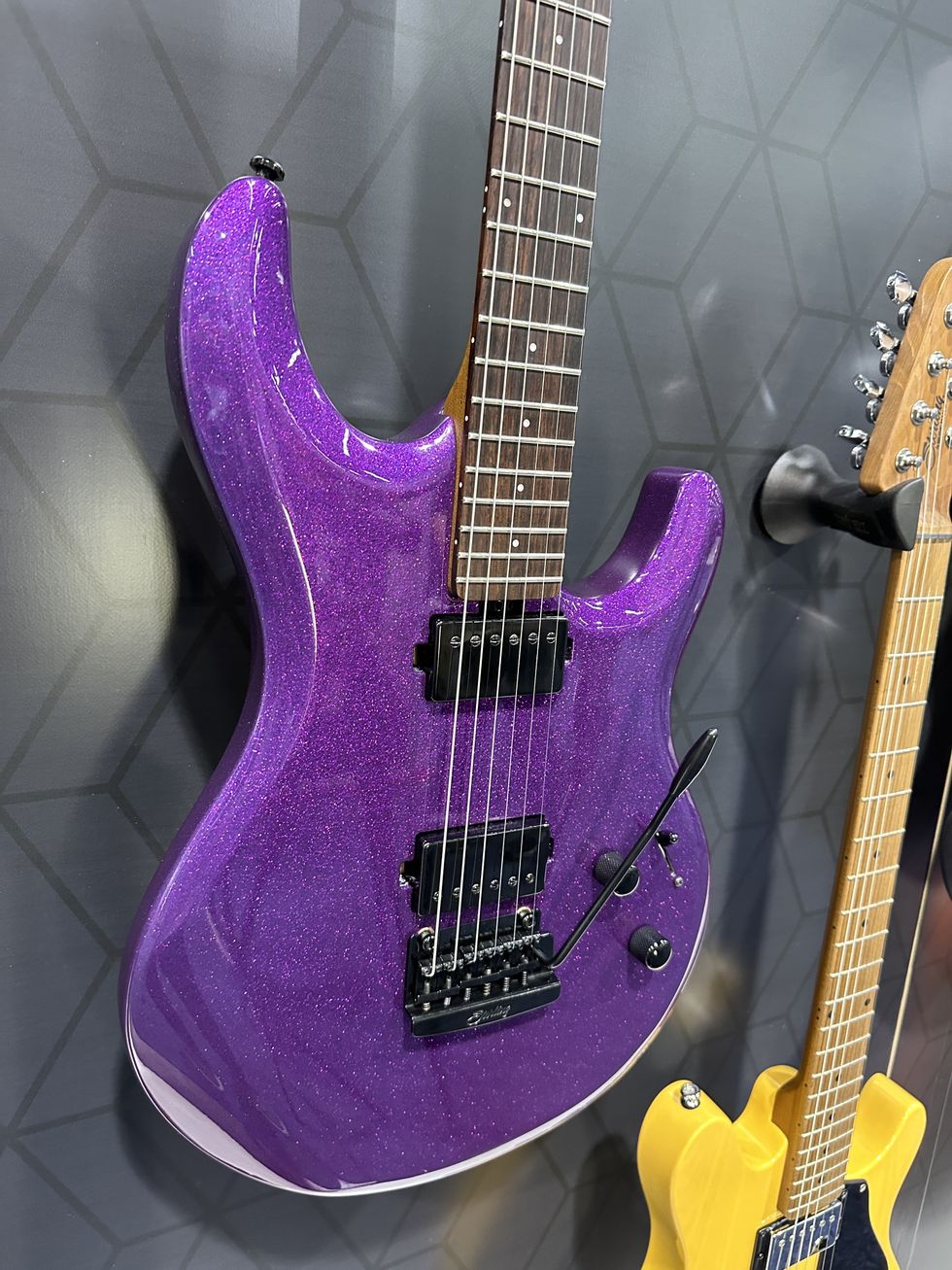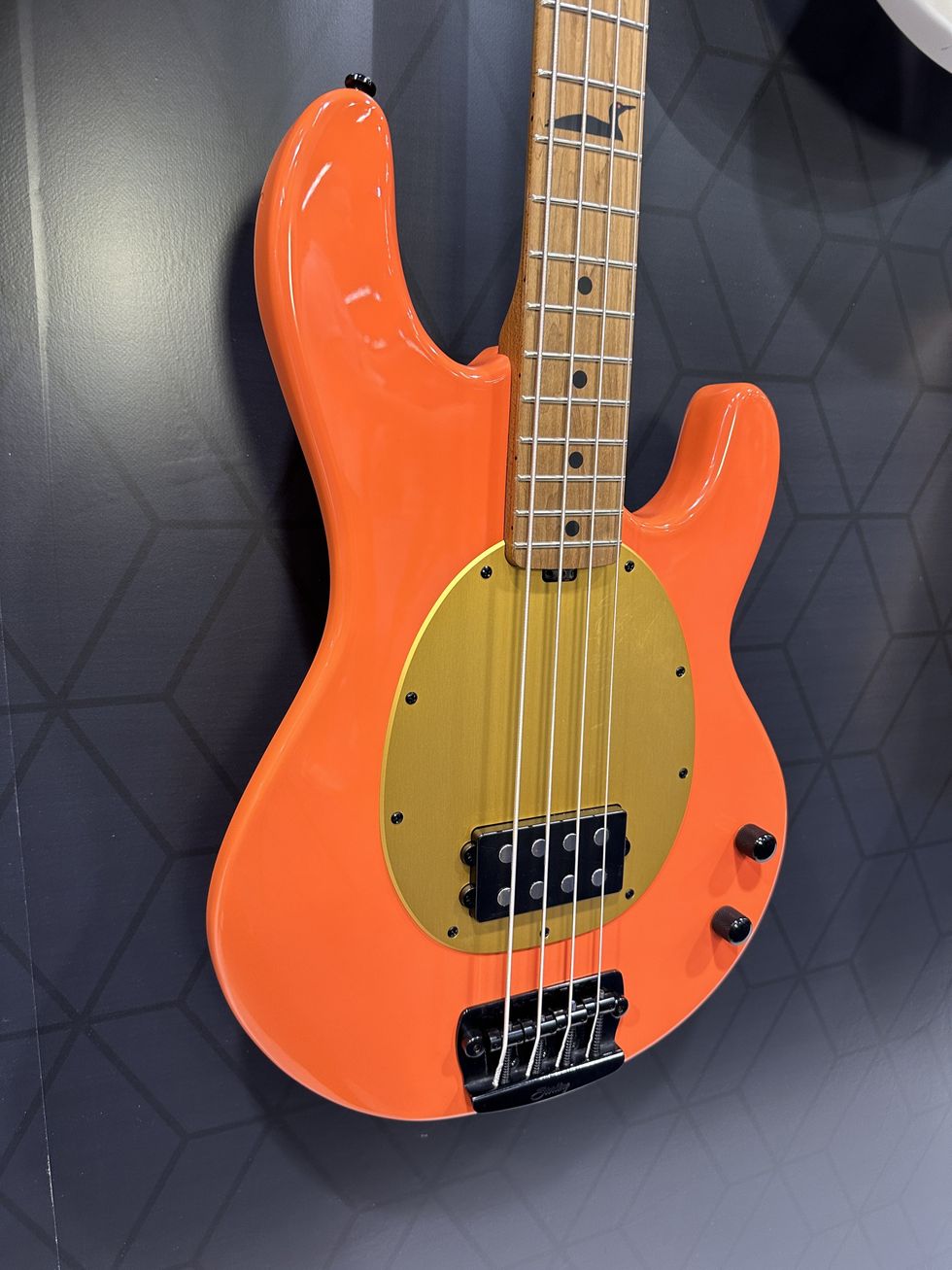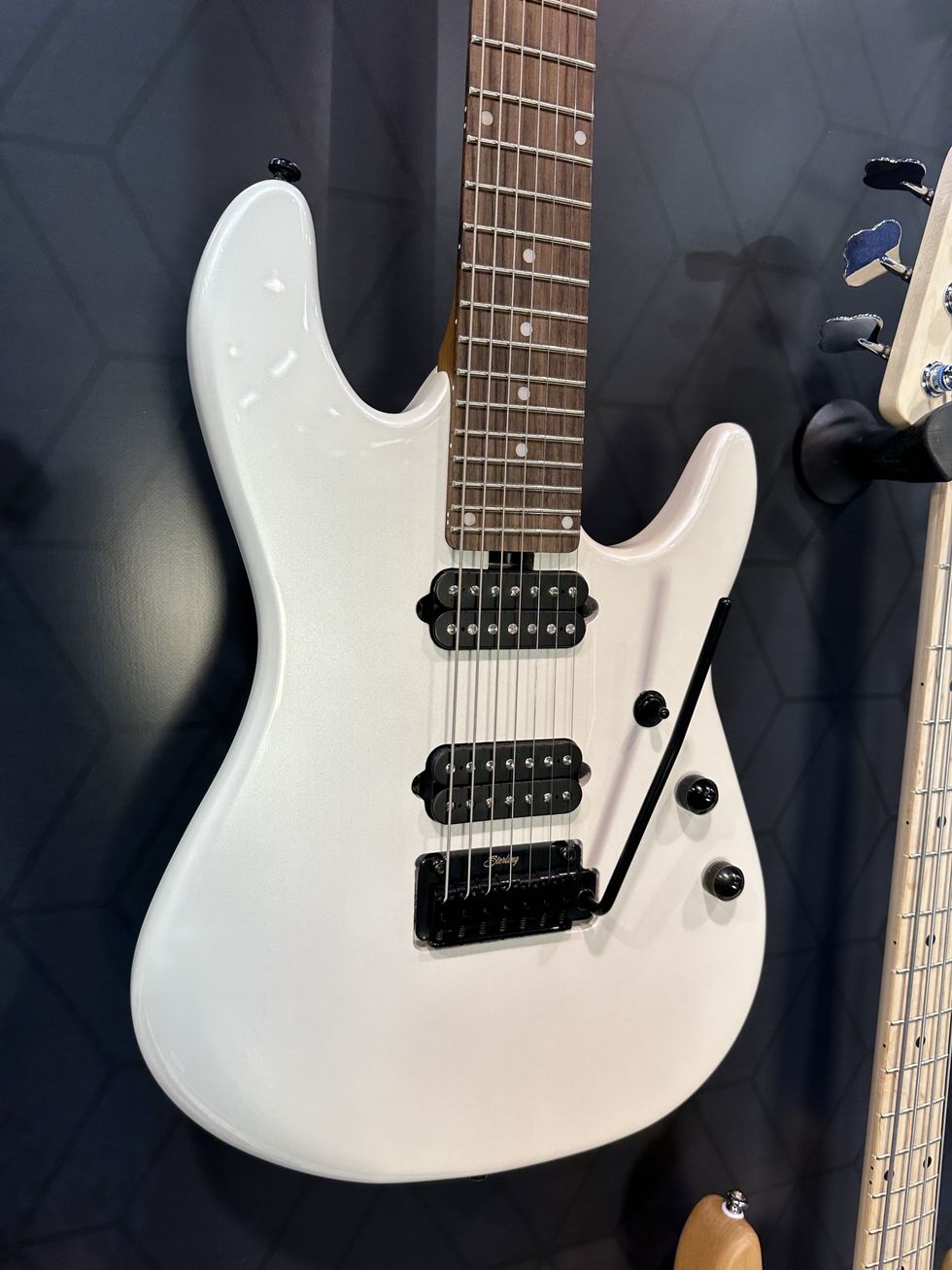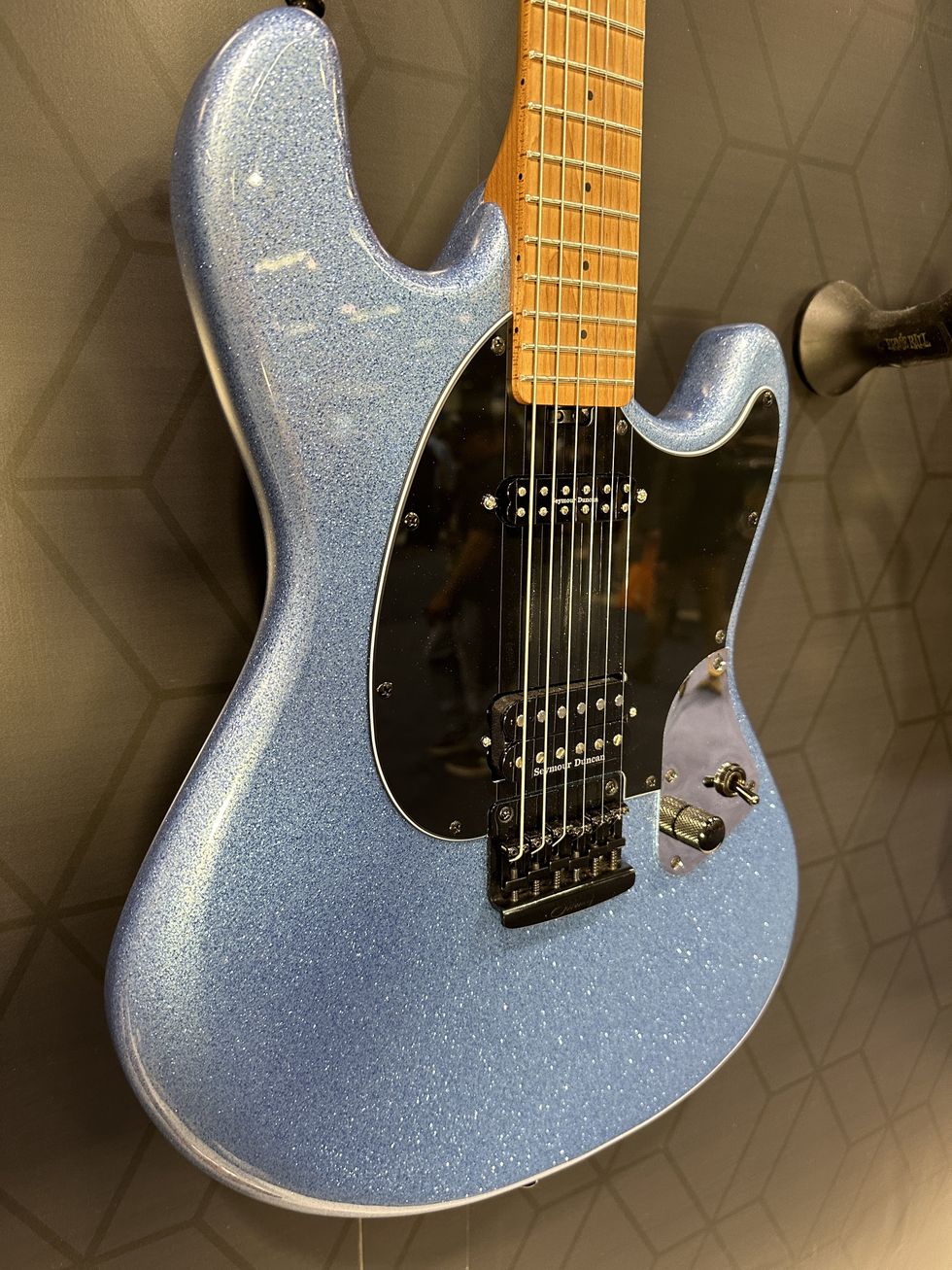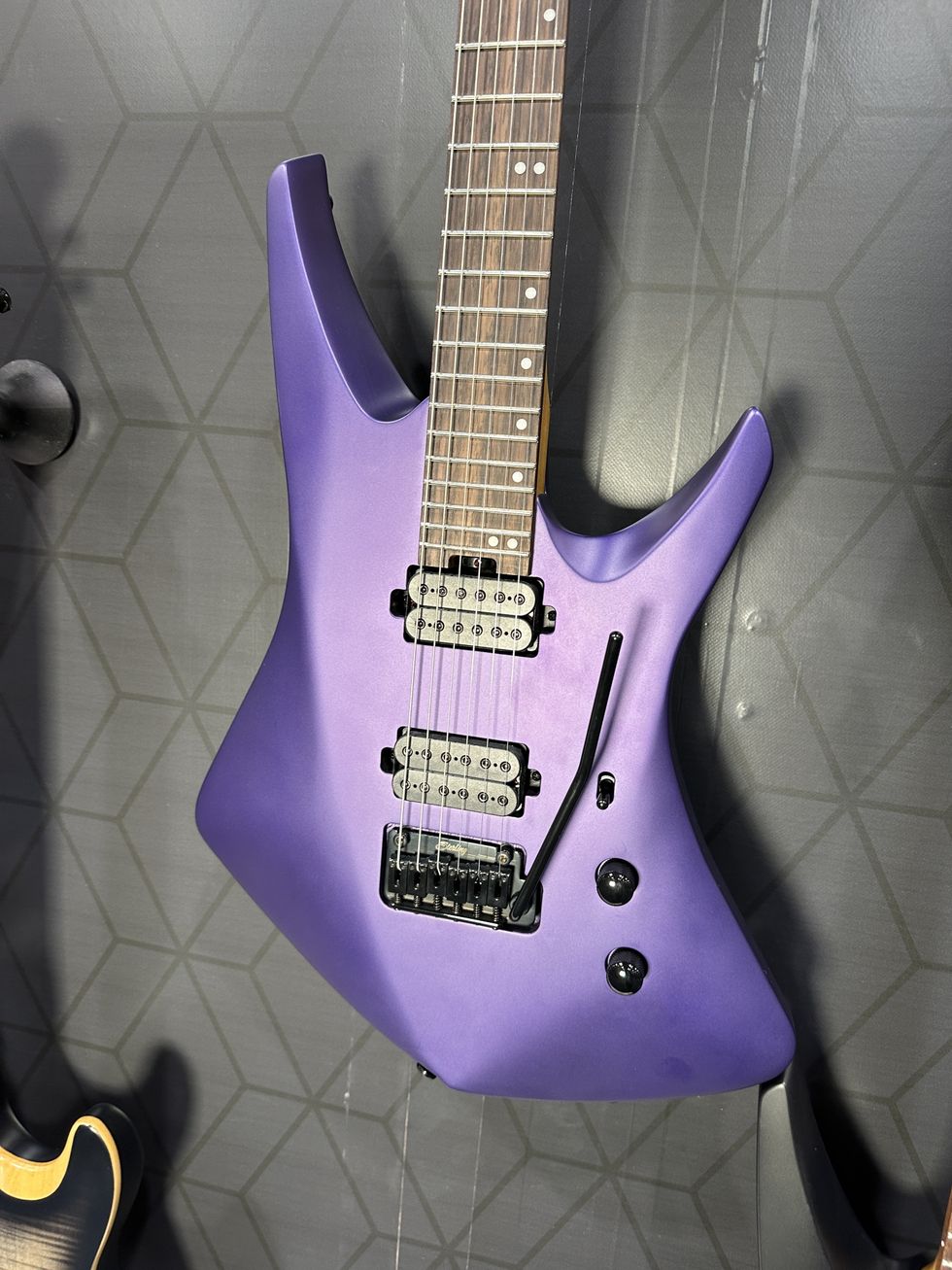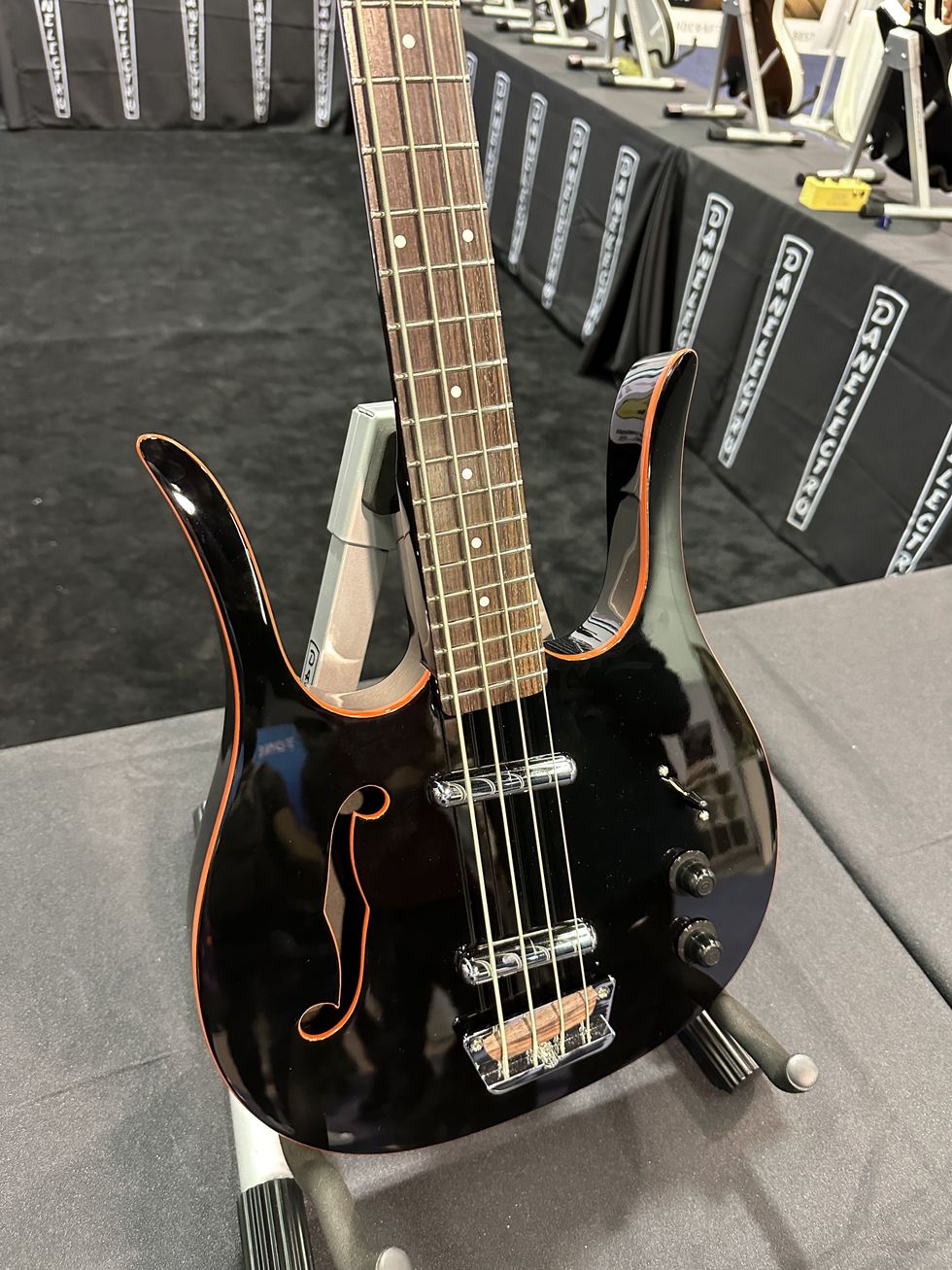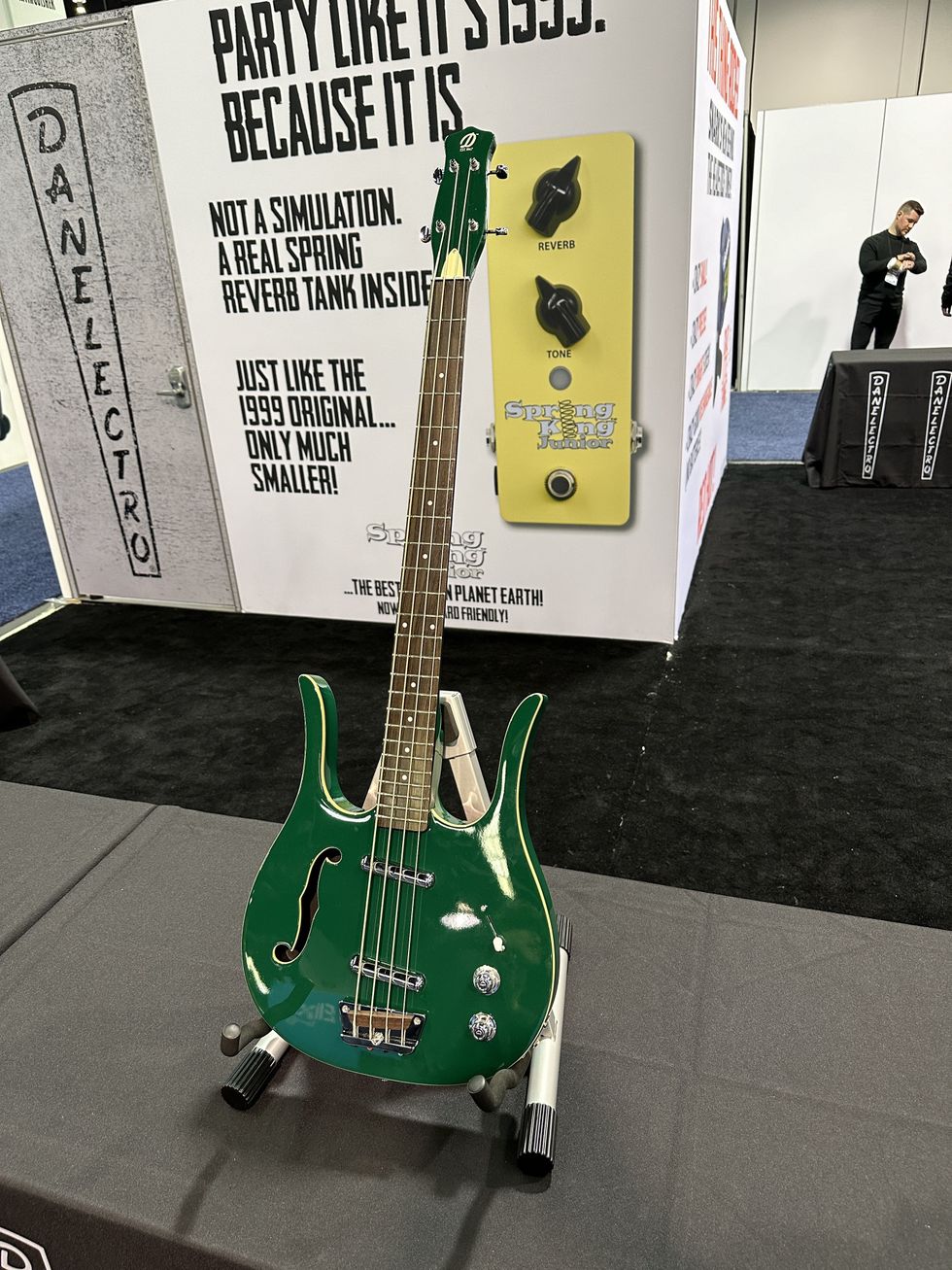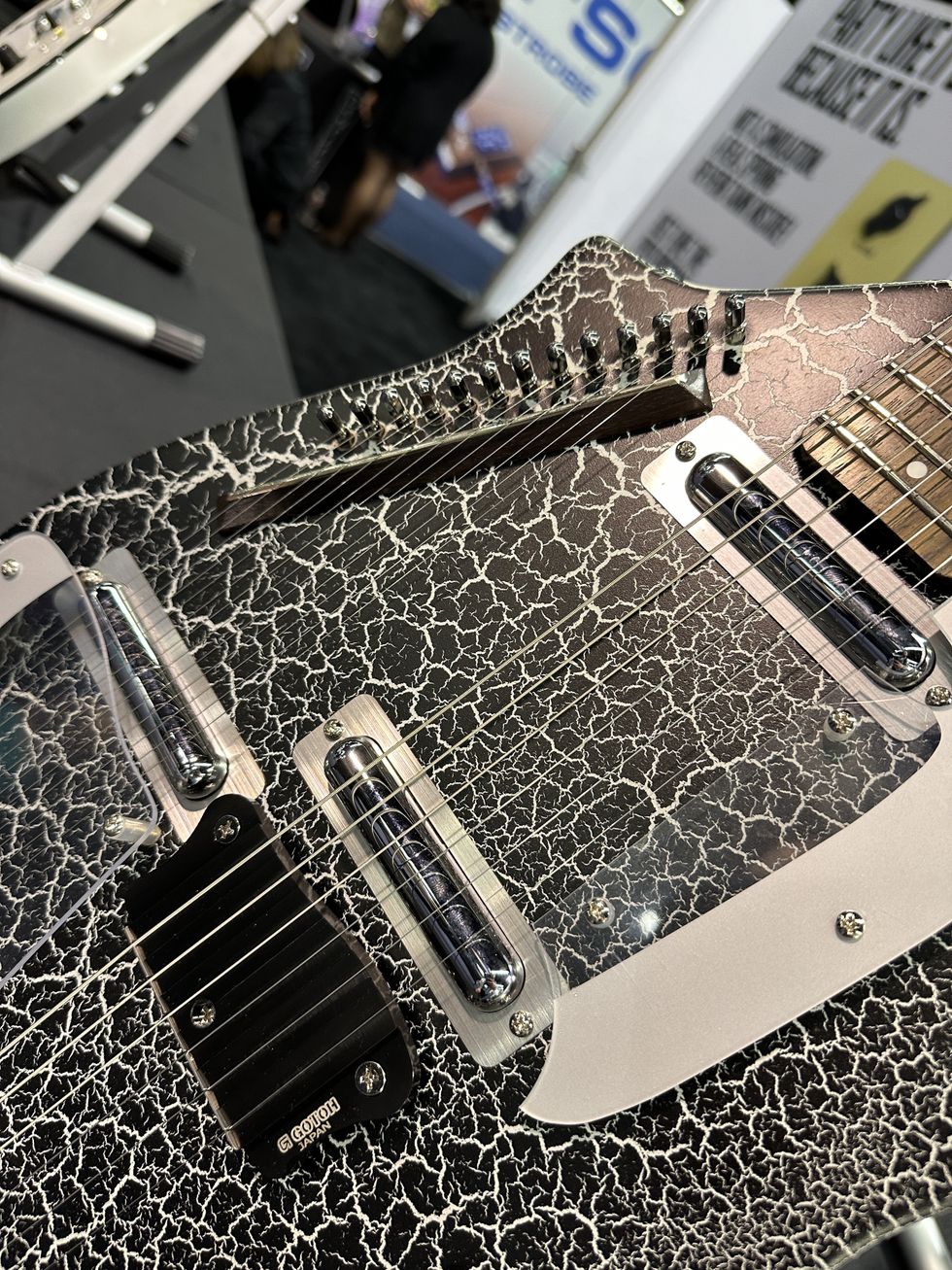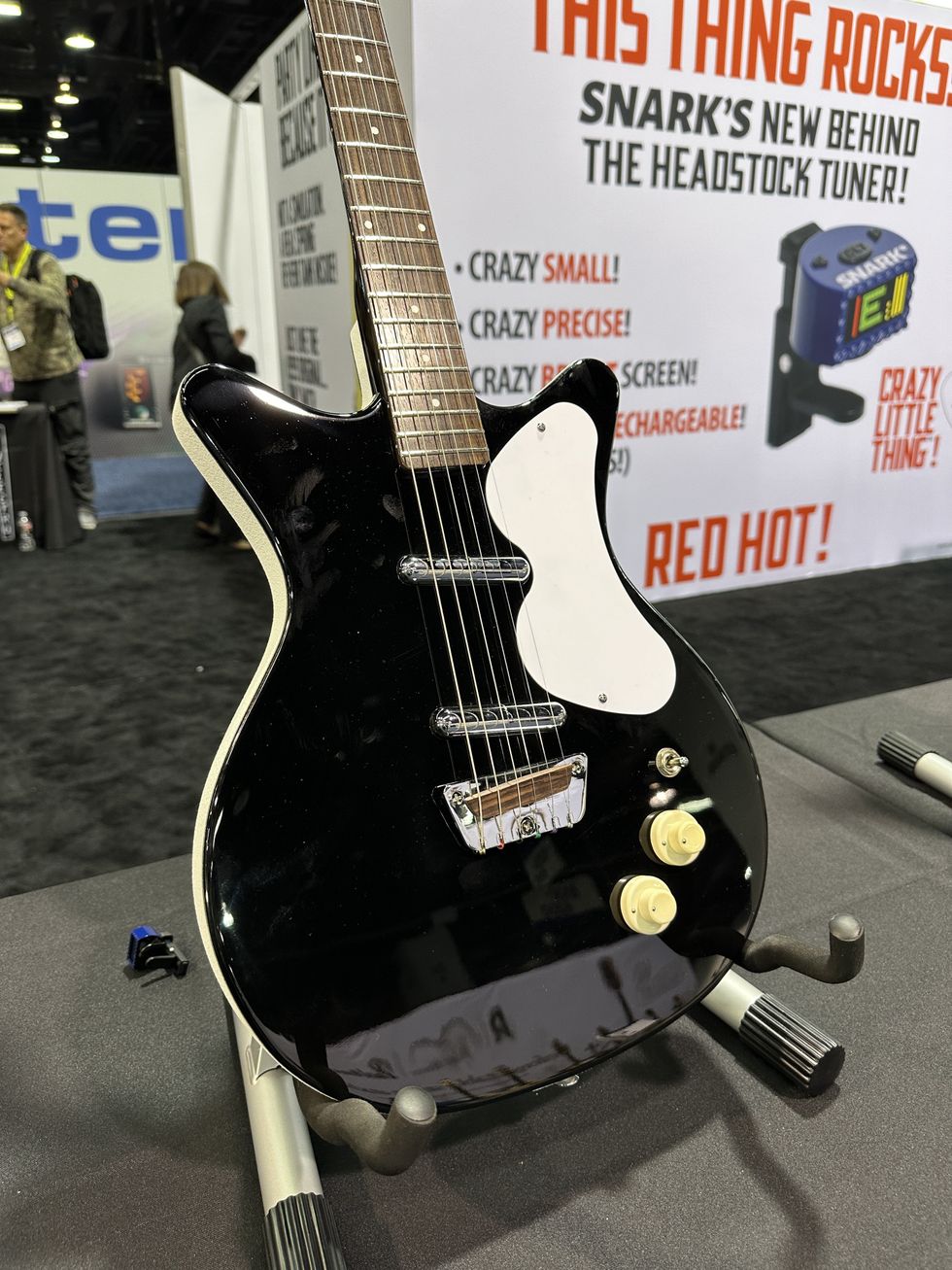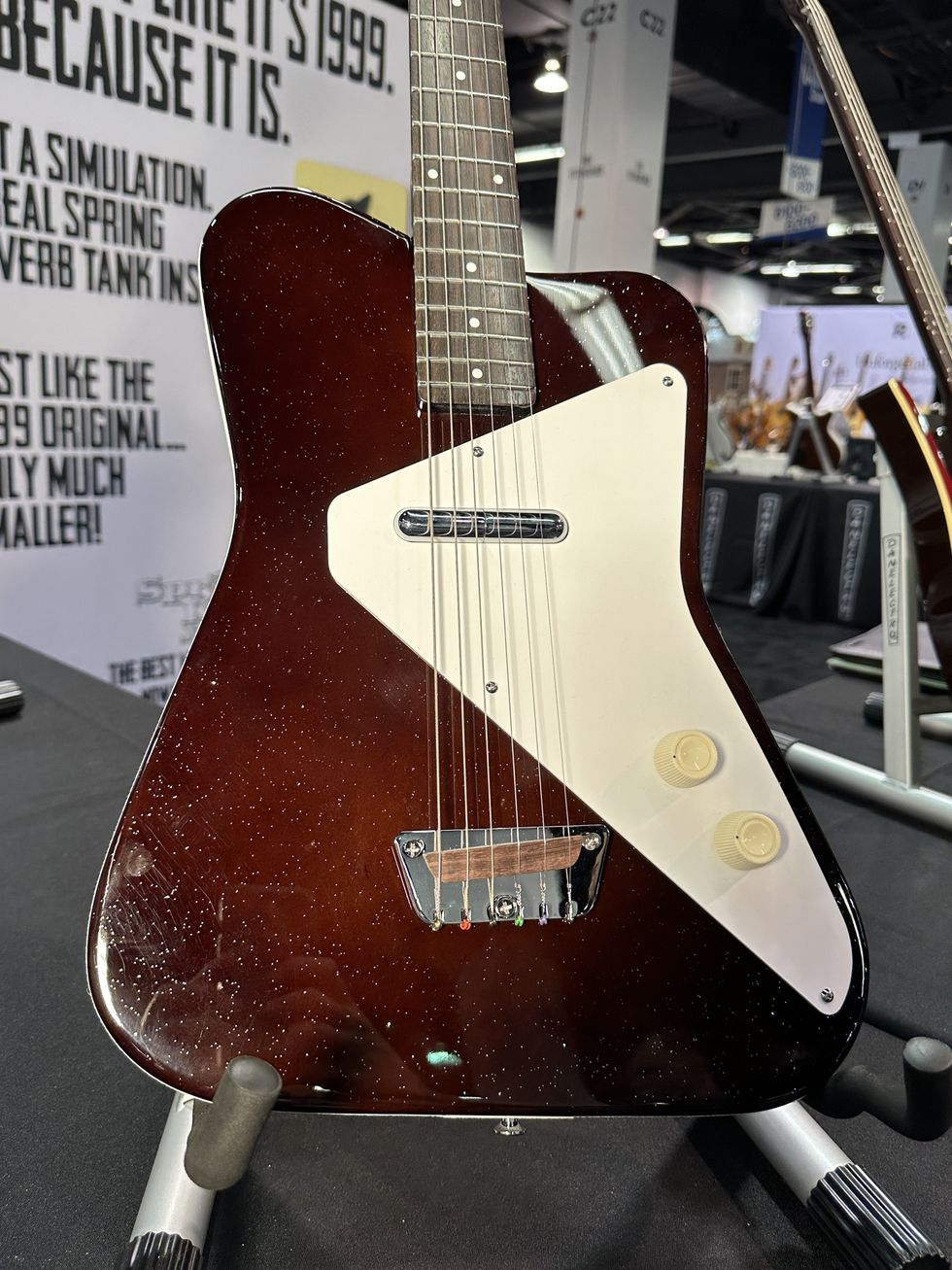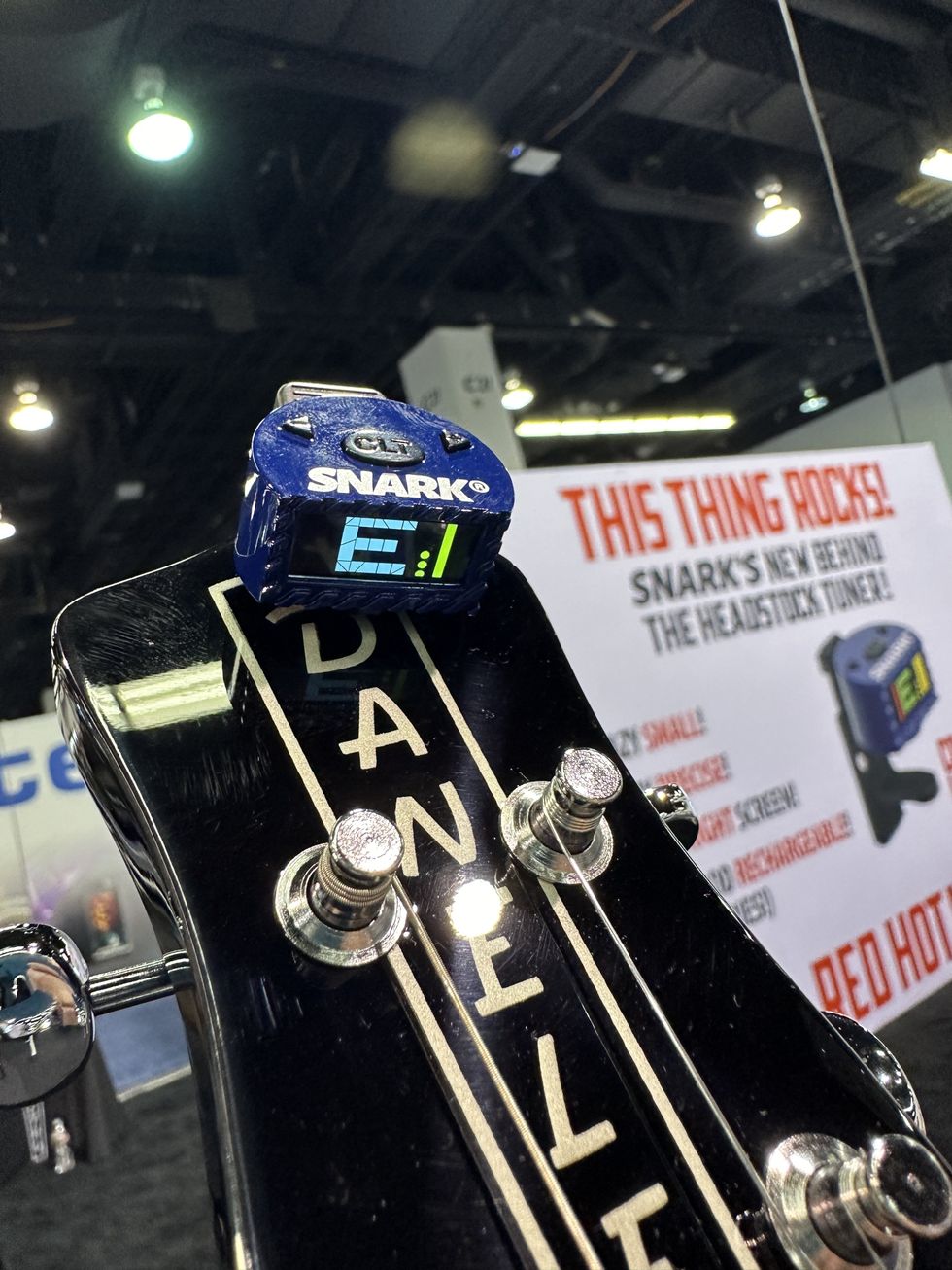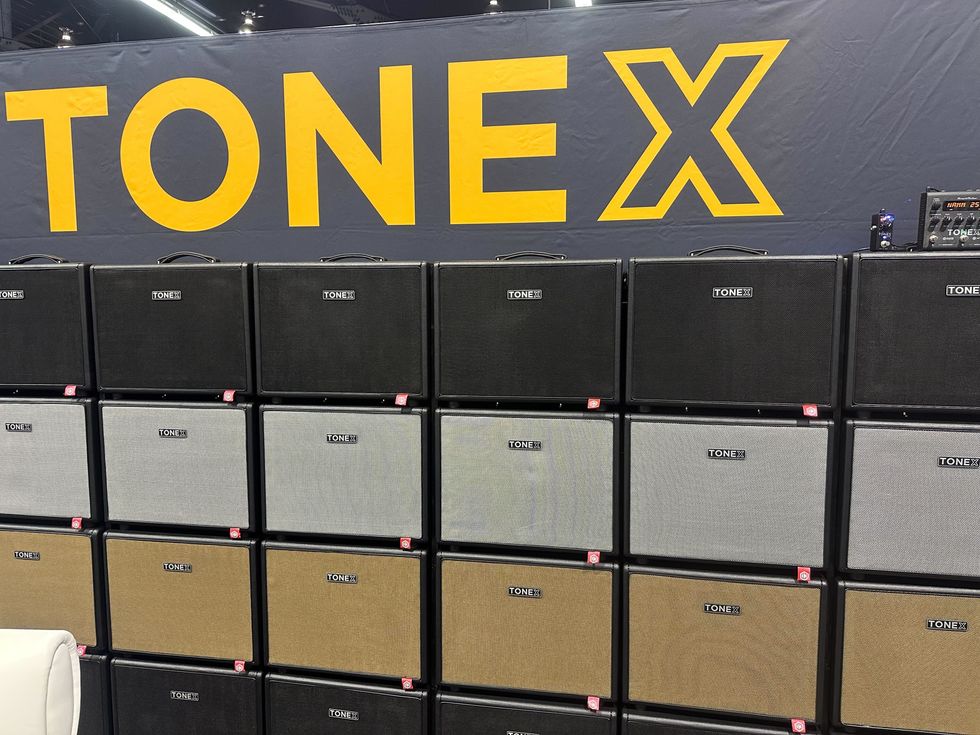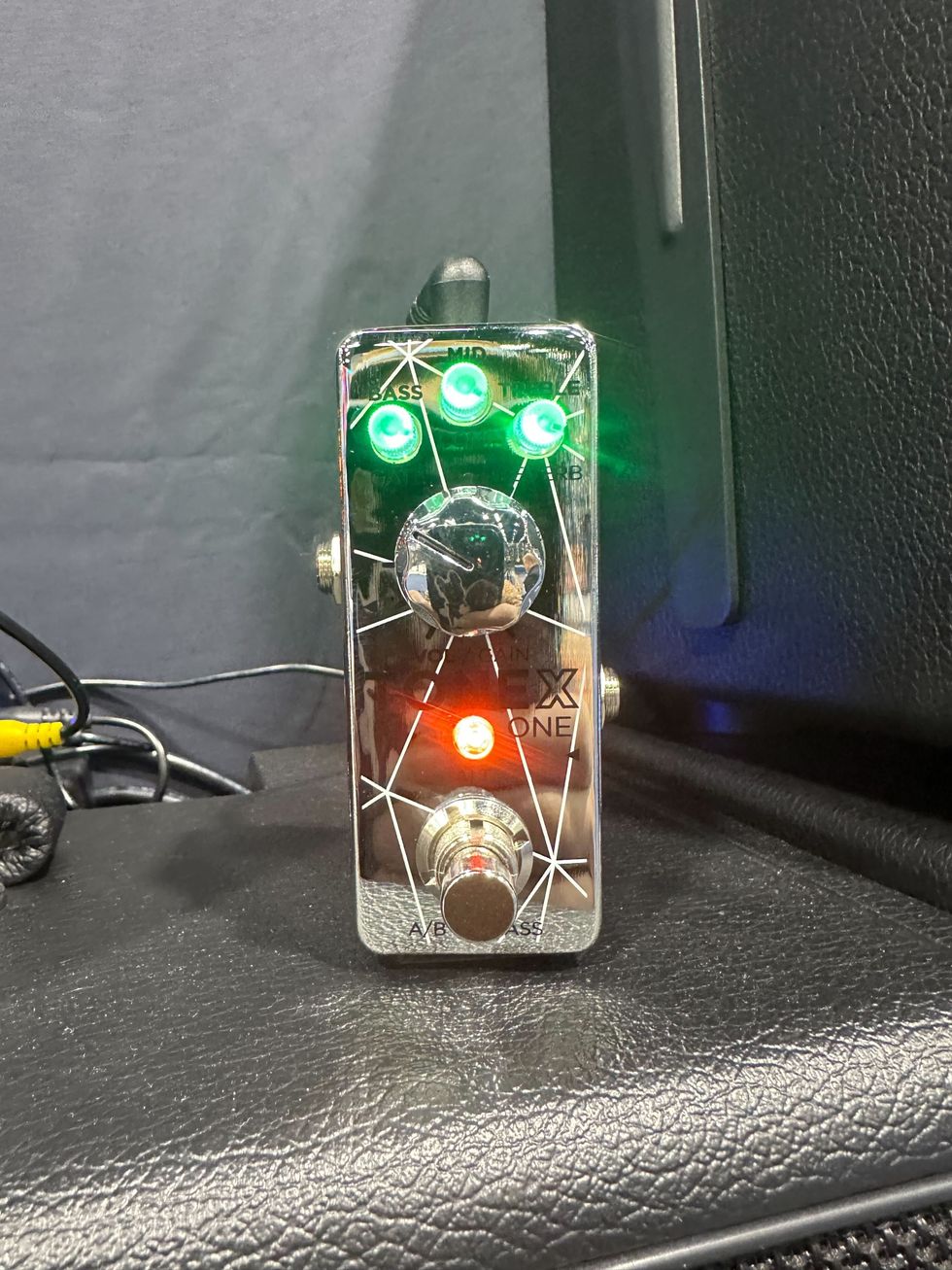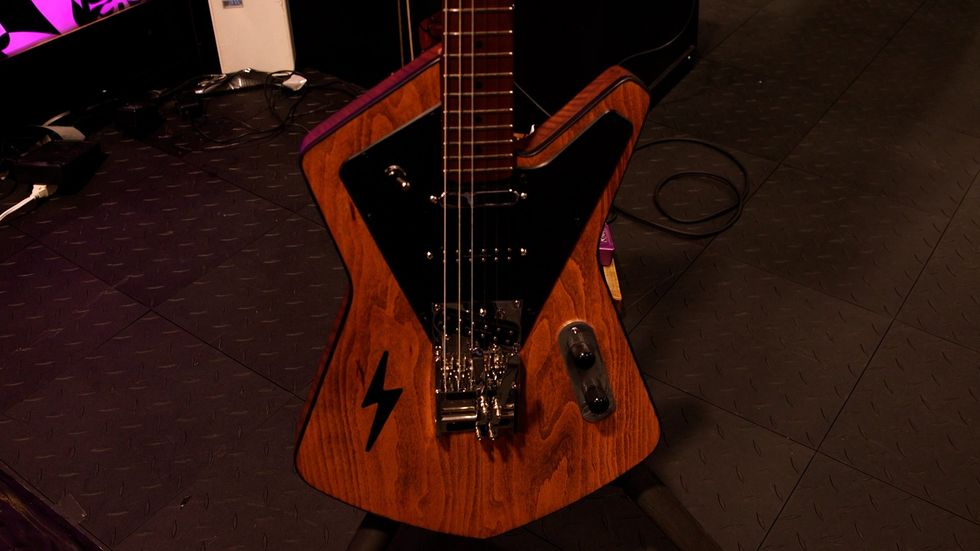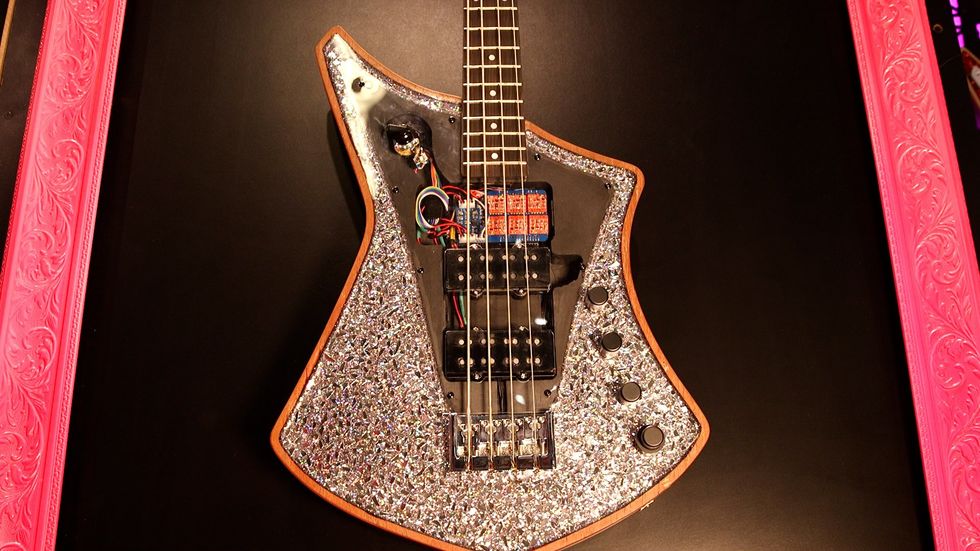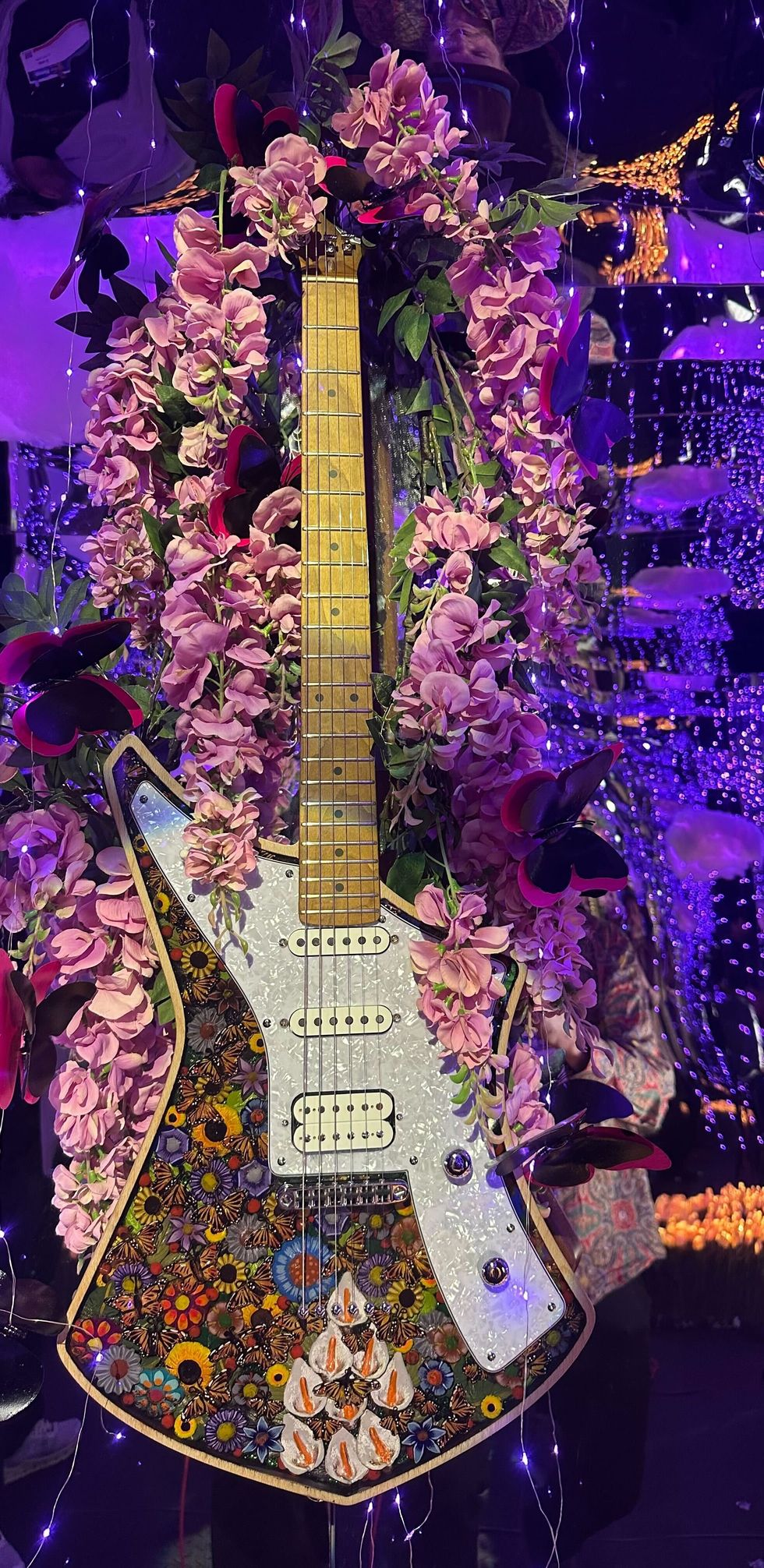The past year's record gear sales tell us that pandemic window shopping has become more a passion than a pastime. And whether you're pushing a “buy" button or on the horn to your local music shop, pedals are among the most affordable jones satisfiers. Our editors compared notes—and their own pedalboards—to compile this list of our favorite stomps that provide a big tonal bang for under a Benny. They range from time-proven classics to thoroughly modern mojo machines. Check it out, and at these prices you don't even have to hide your wallet first.
TC Electronic Rusty Fuzz
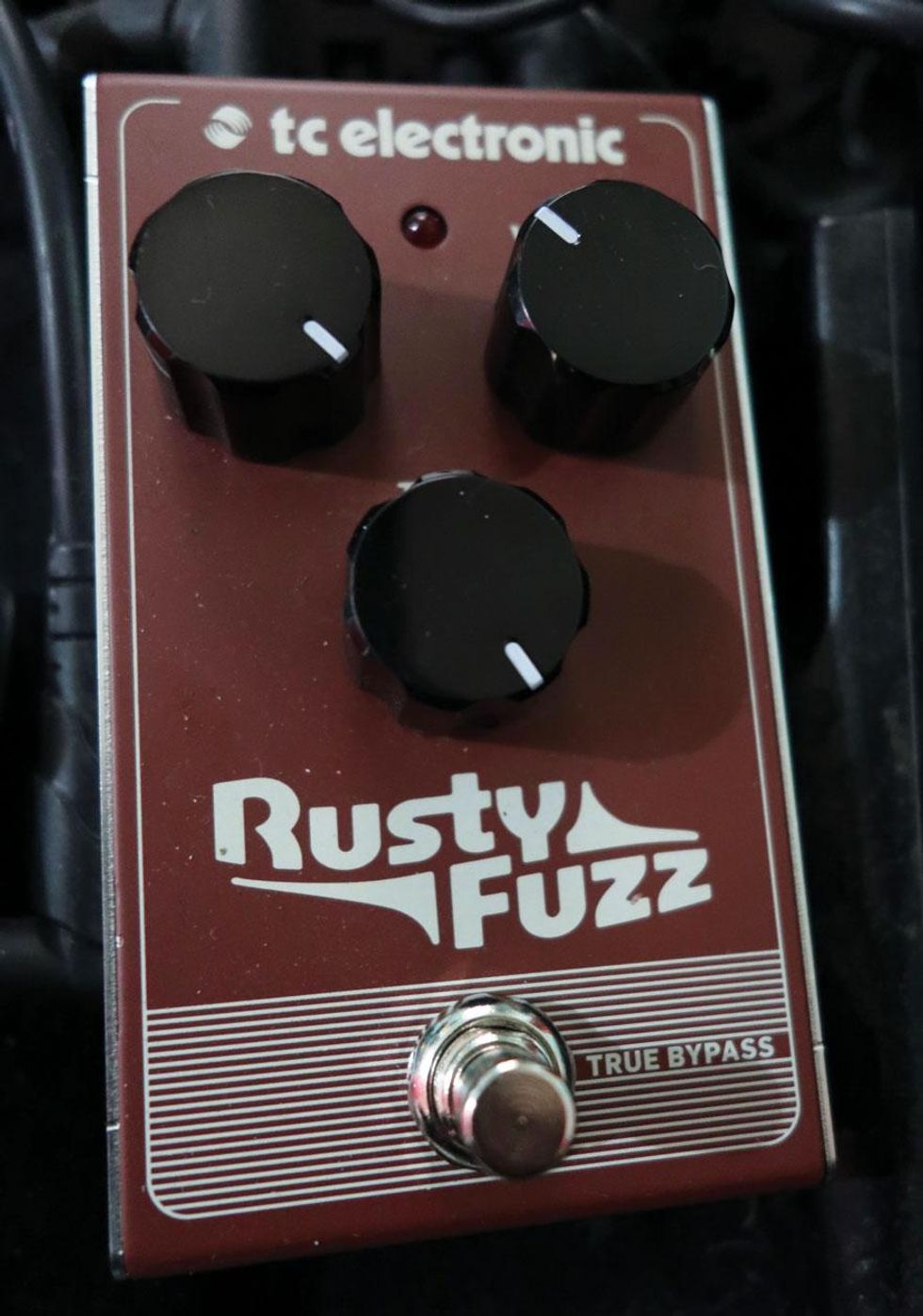
Many modern Fuzz Face-inspired silicon circuits are too dark and mannered, but this badass bargain zeroes in on a joyful range of anarchic, retro tones, from Hendrix to Big Brother. With unity gain at about 10 o'clock, keeping the fuzz setting under 11 a.m. provides enough hair to sting, and levels above that are slap-your-mama. Floor the fuzz and it's '68 at the Fillmore—held notes sing with feedback and bent strings roar and fluctuate, eventually decaying in a beastly groan. Even with fuzz maxed, the tone dial is quite responsive, so highs needn't get drowned in the tidal wave of fur, and turning the tone all the way down warms things if desired. And with a maximum output gain of +55 dB, punching through a live mix is not an issue. The Rusty Fuzz oxidizes the sound of humbuckers at every setting, although it takes some cranking to drive single-coils to glorious ruin. Add a wah pedal and cock it to different positions to tap some truly dinosauric sounds. There's no 9V battery option, but there is enough dynamism and control to satisfy any breed of vintage raunch hound. —Ted Drozdowski
The Good: Easily controllable, super-authentic-sounding vintage fuzz at a bargain price.
The Bad: No 9V option.
$69 street, tcelectronic.com
'93 Gibson Les Paul Classic, neck humbucker, GarageBand reverb plug-in; Rusty Fuzz off, then, volume at unity with fuzz at noon, 3 o'clock, and maxed, with tone at noon; next, fuzz at noon, 3, and 5 o'clock with tone maxed.
Mooer Trelicopter

From Origin Effects' and MXR's latest tremolo wonders to other time-proven gems, there's no shortage of cool amplitude-undulators on the market. But what I've long loved about the Trelicopter is that it puts remarkably amp-like tremolo at your feet not just for a ridiculously nice price, but also in a miniscule package. Even better, whereas many more expensive trem stomps tend to sacrifice faster, choppier sounds for slower, super-chill vibes (or vice versa), Trelicopter hovers in a wonderful middle ground. This is largely thanks to its handy bias control, which sharpens or smooths waveform edges to simulate sounds ranging from black- to brown-panel-esque. —Shawn Hammond
The Good: Vintage-feeling amp trem in a tiny package that's more flexible than many more expensive stomps.
The Bad: Seems to very slightly sap treble frequencies. Mini pots lack indicator mark.
$88 street, mooeraudio.com
Nobels ODR-Mini
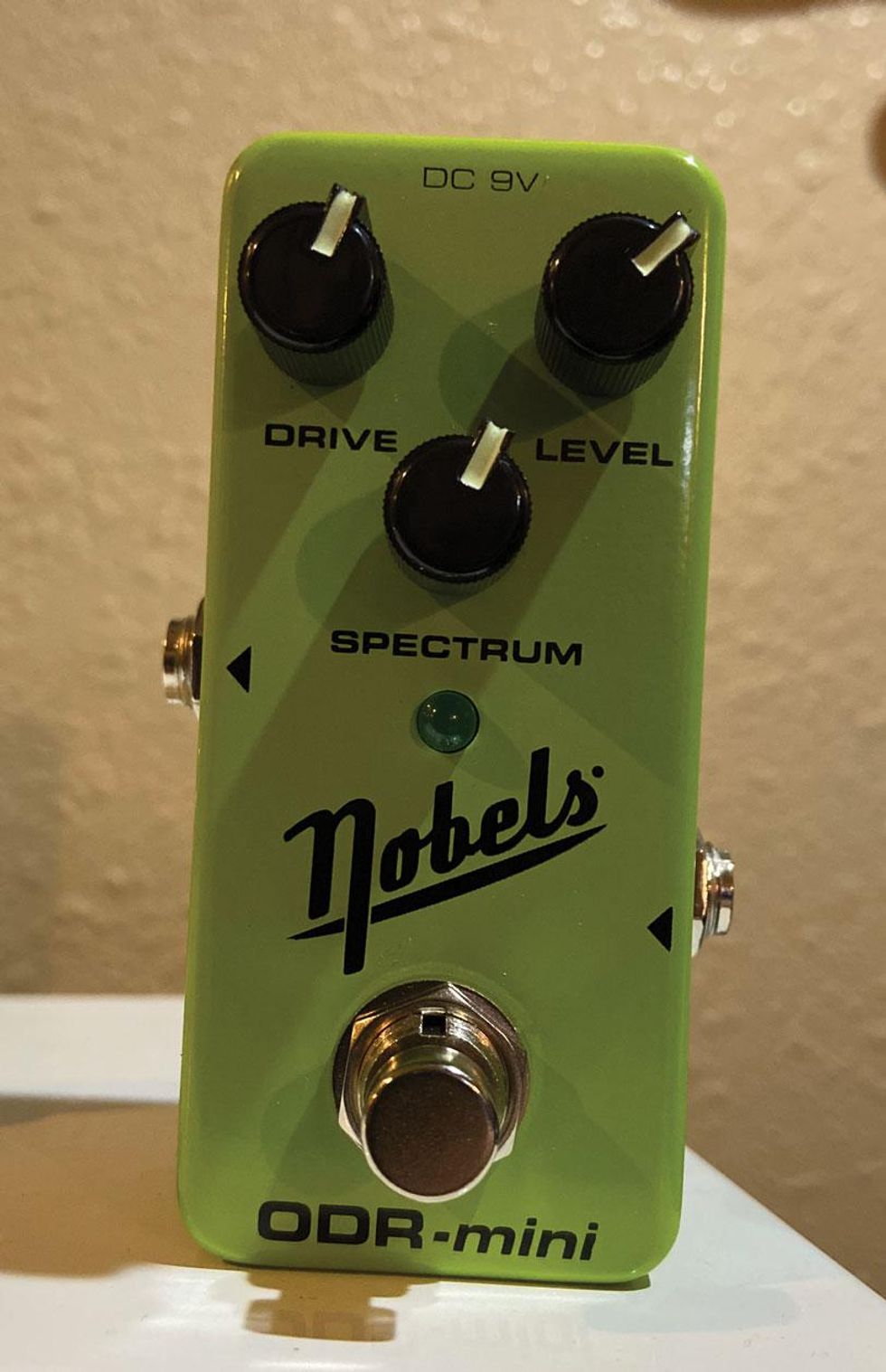
It's not a stretch to think that aspiring session guitarists come to Nashville packing a Tele, a capo, and this overdrive. This mini version of the cult classic keeps the general vibe of its larger sibling along with its beautifully rich and mid-focused sound. Thanks to session player Tom Bukovac, the Nobels has taken on a life of its own—to the point where Buk' had to make a video busting all the myths around his early history with it, right down to the $30 price tag. Once word got out about the ODR, it landed on every Nashville cat's board and prices for vintage ones started to rise. Naturally the gain and level controls are self-explanatory, but the real magic is in the spectrum knob. Unlike a typical tone control, the spectrum moves several different frequencies around at the same time. Turning it counter-clockwise gives the tone a mid hump, but not in the way you might think. It decreases the bass and treble—a very handy feature when you're trying to find the right guitar/amp/pedal combo in a mix. If you dig the whole TS vibe but want more mid control, start with this other green box. —Jason Shadrick
The Good: Glow-in-the-dark knobs! You can run it at 18V for more headroom.
The Bad: At extreme gain settings it gets a bit fizzy.
$79 street, nobels.de
Korg Pitchblack Custom
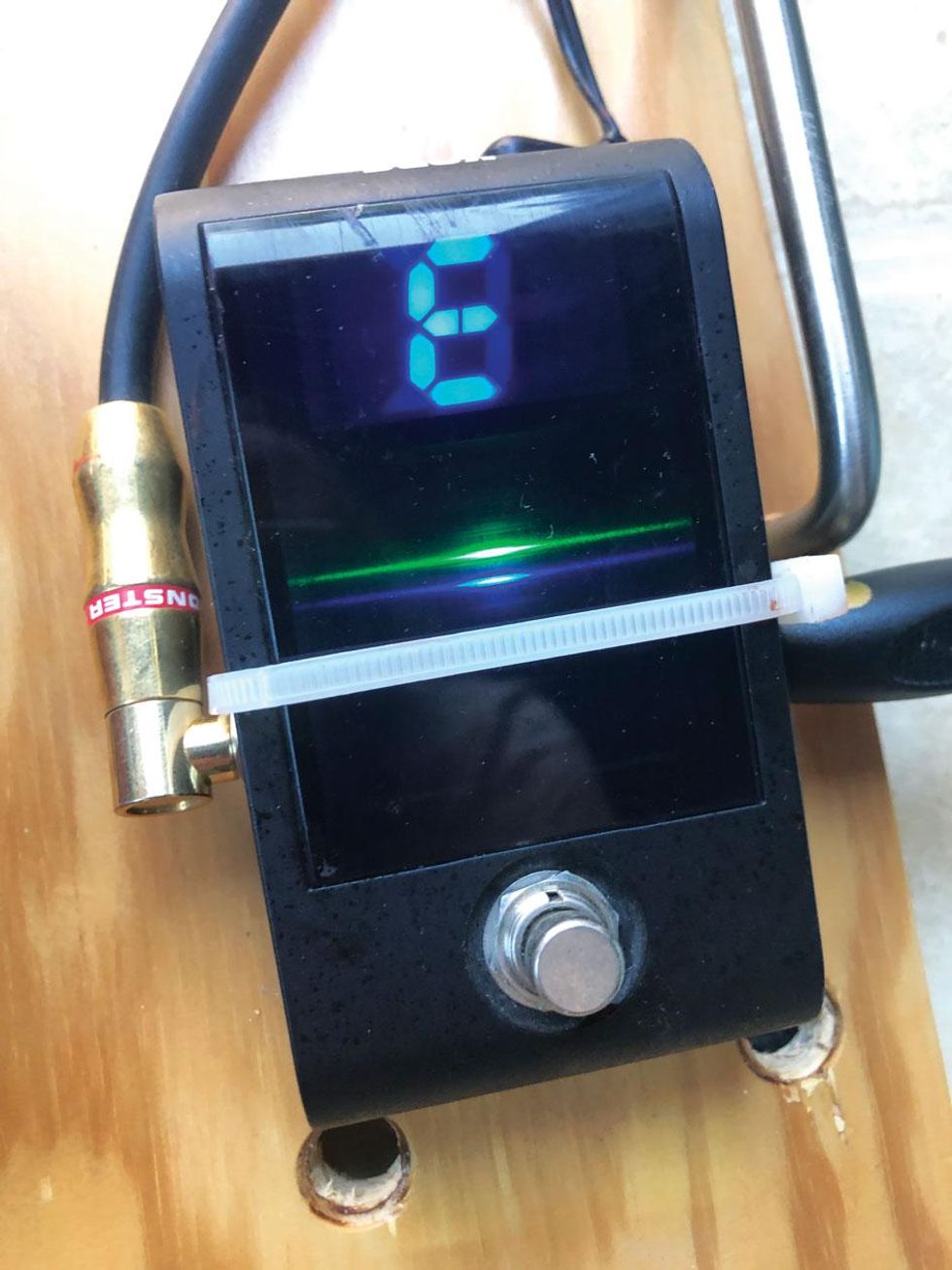
For what's arguably the most important pedal on the floor, this tuner appeals to the type of player who—alongside quickness and accuracy—puts high value on visibility to counteract dark stages and/or sub-par vision. Its 3-D, liquid-like screen makes up about 75 percent of the face of the pedal and leaves no doubt as to what's on the display, no matter which of the four different meter modes chosen. In terms of accuracy, you'd be hard pressed to do much better than the Pitchblack Custom's +/- 0.1 cent spec, unless you pony up for a desktop strobe unit. You won't find a big menu of tuning presets, polyphonic functionality, or other ancillary features on the true-bypass Custom, but it's wonderfully simple and fast, and caters to people like me who can never find their glasses. It's just icing on the cake that the sub-$100 box happens to look like a stealthy spy gadget. —Rich Osweiler
The Good: Huge, crisp, and clear display. Minimalist design. Accuracy to +/- 0.1 cents.
The Bad: Nada.
$99 street, korg.com
Boss TR-2 Tremolo
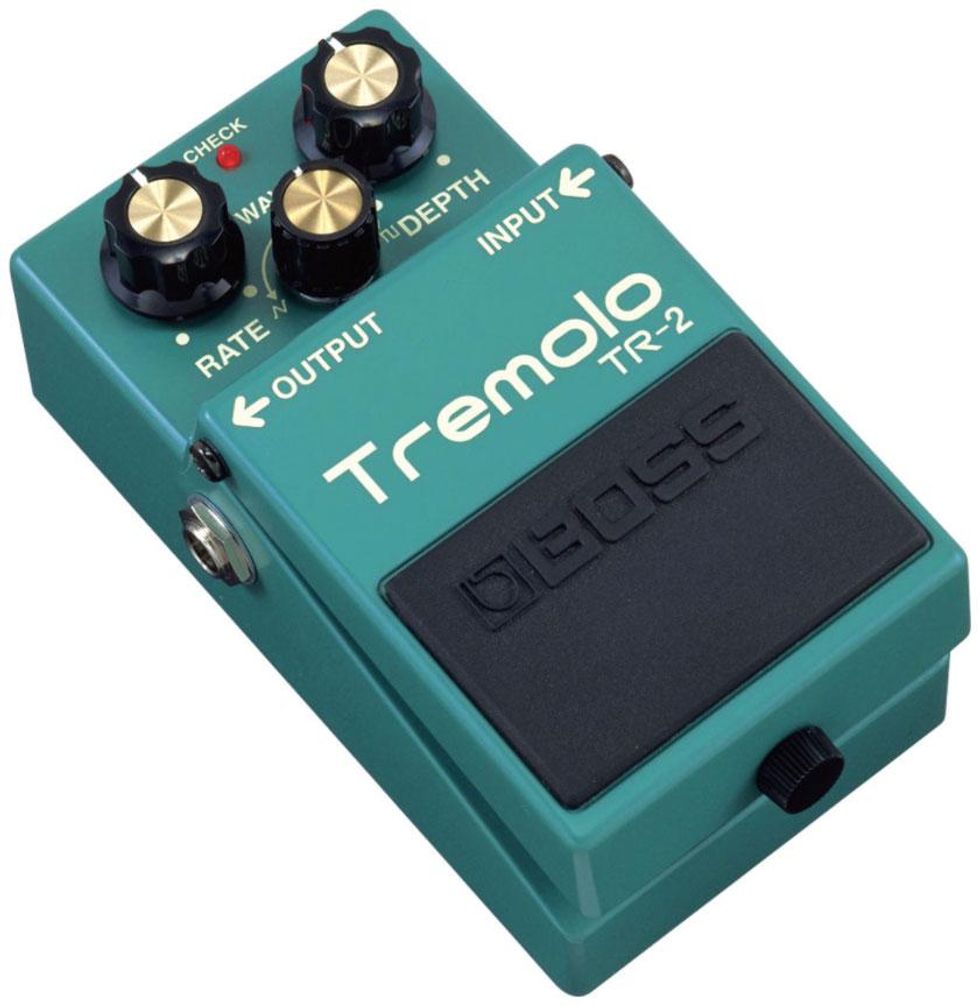
This list is supposed to be about pedals less than 100 bucks. But at $103 and change, we've made an exception for the venerable and perpetually overachieving TR-2. I bought mine more than a decade ago (I think it was then priced closer to $129), stuck it on my board, and, with a few exceptions, it's been there ever since. Does it top the sounds of vintage Fender amp trems, or one of the more exacting (and expensive) new-school DSP-vintage-driven emulations? No, but I tend to find the comparisons academic. The TR-2 has a warm but familiar voice all its own—several actually, when you factor in the waveform control, which moves from soft, round sine-wave pulses to choppier square waves, and many blends in between. The TR-2 has quirks, like a depth control that makes the modulation virtually imperceptible until just before high noon on the dial. But the perceived volume drop that allegedly plagued early models is long gone, And like so many Boss pedals, it's built to sturdy standards that rival much more expensive and exclusive boutique offerings. —Charles Saufley
The Good: Great range of tremolo textures, from soft, soulfully undulating pulses to hard-choppin' square waves.
The Bad: Not much perceptible modulation in the first half of the depth control's range
$103 street, boss.info
MXR Blue Box
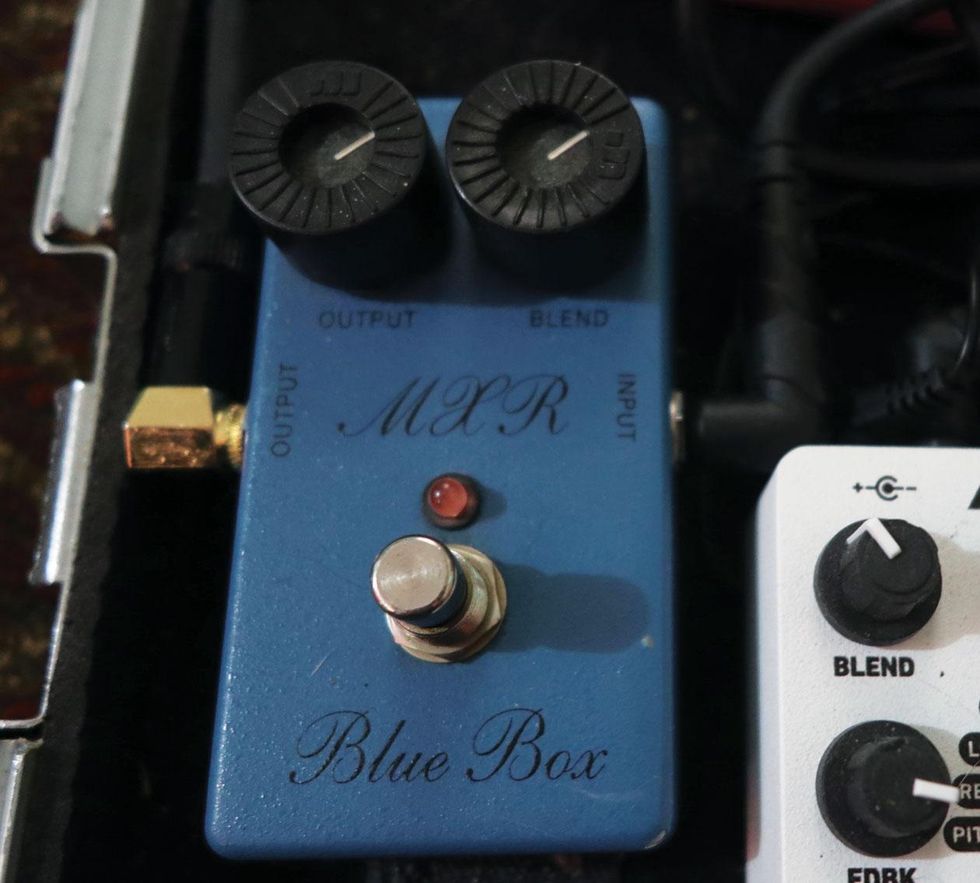
This two-octaves-down-plus-fuzz stomp has been creating chaos since 1974, although it took Jimmy Page's solo on 1979's "Fool in the Rain" to really put it on the map. Today, the pedal's making a well-deserved comeback in stoner rock. It's a simple critter—the double-octave drop engages when it's switched on, the output controls volume, and blend adds or subtracts fuzz. Counterintuitively, with more fuzz in the mix, the overall sound is more controllable and sustained, and less glitchy. Same thing when you play higher on the neck. But the low octave tones are full of marvelously colorful blips and snorts, and the unpredictable note decay—sometimes it's more like dropping off a cliff—has a stellar charm all its own. Try a chord, for a laugh. If that unpredictable decay becomes annoying, just zip a clean boost in front of the Blue Box to beef up sustain. But half the fun of this venerable device—which works on 9V battery or adaptor power—is that madcap unpredictability. —TD
The Good: A Pagey-approved, distinctively weird-ass sound for the ages.
The Bad: If glitching and unpredictable drop-outs bug you, this one-trick horsie ain't your ride.
$79 street, jimdunlop.com
'93 Gibson Les Paul Classic, neck humbucker, Carr Vincent combo, Blue Box off, output at unity; then Blue Box on with blend at 7, 9, 12, and 3 o'clock, and maxed. Followed by a G campfire chord clean, and then with blend at max and at 3 p.m.
Radial Engineering BigShot ABY

If you ever get the hankering to see how fun/cool it is to play through or switch between two amps, just keep in mind it's not quite as simple as just tracking down a box that lets you send your mono signal to two outputs. As many players have found the hard way, phase-cancellation and ground-loop goblins lurk in the shadows of such setups, so if your junction box doesn't have features to deal with them, you may be prematurely thrown off your game and wonder "What the hell! These amps sound fantastic on their own—why don't they now?" In our Rig Rundowns, you've no doubt seen innumerable professionals using Radial utilities for unexciting-but-critical concerns such as these. That's because Radial gear is super sturdy and typically addresses all possible gigging downfalls with straightforward simplicity. For instance, the BigShot ABY requires no power (unless you want to power the current version's channel-indicator LEDs—mine is an older one without LEDs, but I keep the amps on full-time so it doesn't matter) and features a slider for correcting that weak, nasal sound you get when your amps are out of phase, as well as ground-lift and isolation-transformer switches to help eliminate hum. Even cooler, while Radial might not encourage it, I've had wonderful luck using the BigShot's tuner output to route my signal to a third amp, sans any phasing or noise issues. —SH
The Good: Smart, superb, no-nonsense way to play through two or three amps.
The Bad: NA
$99 street, radialeng.com
ProCo RAT 2

We see a lot more RAT 2 homages from boutique builders these days. That's a welcome development, because the RAT 2's basic architecture and tone profile has always been more versatile than its heavy reputation suggests. Good RATs can make leads liquid and white hot with sustain. They also generate great low- to mid-gain overdrive tones, and the filter/tone knob can crate thick, smoky fuzz and distortion voices. But one of the best things about the RAT 2 is that the contemporary China-built version—which sells for a whopping $70—still gets you most of the way to the sound of a vintage late-'80s/early-'90s version. I had one of these recent RATs on extended loan from a pal. It lacked some of the mysterious, hazy thickness and complexity that my vintage version delivers at heavily filtered, attenuated-highs settings. It can also seem a bit peaky in the top end compared to my battered oldie. But 95 percent of the time—and especially in those growling mid-gain distortion settings that folks love to hear from a RAT—the recent-vintage unit sounded and felt practically indiscernible. Did I get lucky? Maybe. But it seems more likely that after selling about a zillion RAT 2s, Pro Co has sorted out how to build this classic to consistently high standards on the cheap. —CS
The Good: Almost all of the killer sounds you'd get from a vintage RAT 2. Super inexpensive.
The Bad: Filtered tones can lack some of the complexity heard in vintage versions.
$70 street, ratdistortion.com
TC Electronic Hall of Fame 2 Mini

Emulating the sound and feel of space is one of the most enduring and strangely satisfying musical effects for guitarists. From the drippy goodness of vintage Fender combos to the ethereal and metallic sounds of modern shimmer, various types of reverb are close to rivaling the number of 3-knob overdrives. The Hall of Fame 2 Mini is a tiny little stomp that covers nearly any possible reverb flavor you might need. When I first got my hands on one, I needed more of a set-and-forget for times when I had a reverb-less backline. Admittedly, I also spent a fair amount of time just blissfully exploring the more ambient settings. One significant upgrade over its predecessor is the addition of a MASH footswitch that acts as an expression pedal to give certain settings more real-time depth and dynamics. You can really interact with the tones in a meaningful way by simply pressing down a bit more. In most cases the effect is subtle but present. However, with a bit of deeper editing via the TonePrint app, you can get downright Fripp-esque with it. If anyone asks about a reverb pedal but doesn't have an affinity toward a particular flavor, I point them to the HOF 2. —JS
The Good: Mind-boggling amount of control via the app. Very authentic analog sounds.
The Bad: Not easy to switch reverb types on the fly.
$99 street, tcelectronic.com
TC Electronic Hall of Fame 2 Mini - Pedals Under $100
Electro-Harmonix Stereo Pulsar
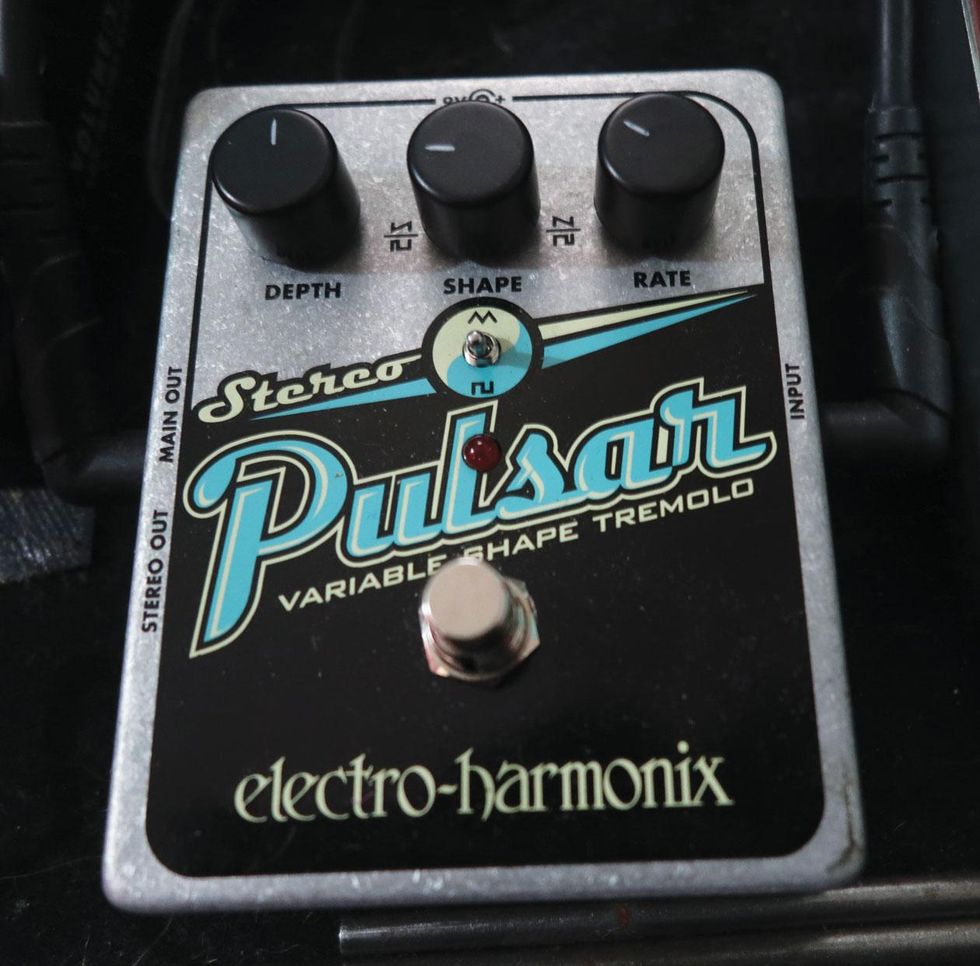
Pulsar is a space-age-sounding name for a decidedly retro analog pedal, and its ability to toggle between triangle and square waves is common to other tremolo stomps, as is the shape dial that adds adjustable sawtooth characteristics to the triangle mode and variable pulse widths to the square wave mode. Rate and depth are the other controls, naturally. So, what makes this box special? It's a stereo tremolo for under $100, and if you think that's not a big deal it's only because you haven't experienced the psychoacoustic payoff of on/off square wave pulses ricocheting between a pair of amps—and your eardrums. It's an enjoyably trippy experience, as the pulses gently and intermittently slap the sides of your skull. But triangle mode shines, too, in a smoother way. Slow pulses of moderate depth also blend well with chorus, phasing, flanging, and even carefully tailored delay-pedal settings, so there's room for more sonic deviance. Use the main out only, and the pedal's mono, giving your amp classic Fender-style tremolo sounds. Add in 9V battery and adaptor power options, and a hard metal shell that's likely bulletproof, and you've got a workhorse stomp that dabbles in microdosing.—TD
The Good: Honest vintage tremolo that's easily shapeable and, in stereo, trippy as hell.
The Bad: If you're looking for modern twists like shimmer and layering, this ain't your juice box.
$89 street, ehx.com
Sample 1 — Round Waves: '73 Fender Stratocaster, Carr Vincent combo and Orange Micro Terror head and Sam Hill Custom 1x12 cabinet, Pulsar off, then with shape control at 10, 12, and 2 o'clock; depth at noon except last play-through at 2
Sample 2 — Triangle Waves: '73 Fender Stratocaster, Carr Vincent combo and Orange Micro Terror head and Sam Hill Custom 1x12 cabinet, Pulsar off, then with shape control at 10, 12, and 2 o'clock; depth at noon except last play-through at 2
Mooer Lo-Fi Machine

My first crack at trying a Mooer came when I reviewed the LoFi Machine nearly seven years ago. Initially, I was skeptical because of the brand's super-low prices and newness on the scene, but it didn't take long to forget all that. The bit knob reduces sampling depth from 5–16 bits, while mix and sample control dry/wet ratio and sample-rate reduction (60–31,250 Hz), respectively, and a 3-way toggle optimizes EQ response for synth, guitar, or bass. With careful manipulation of these controls (as well as your picking attack and other effects), you can use the Machine to summon everything from cool vintage electric-piano approximations to harpsichord tones and old-school video game sounds. Needless to say, I bought this rad stompbox after the review, and today it's still part of my rig—only at the moment it sits atop my keyboard, where I can easily manipulate controls with one hand while playing with the other. —SH
The Good: Myriad unusual sounds—from tame and lovely to lovably silly or sadistically warped—in a small, affordable package.
The Bad: Slightly saps treble frequencies. Mini-pot settings difficult to keep track of.
$98 street, mooeraudio.com
Test Gear: Danelectro '56 Baritone reissue, Squier Vintage Modified Telecaster Custom with Curtis Novak pickups, Schecter Ultra III with TV Jones Magna'Tron bridge pickup, Jaguar HC50 and Goodsell Valpreaux 21 amps.
EarthQuaker Devices Plumes
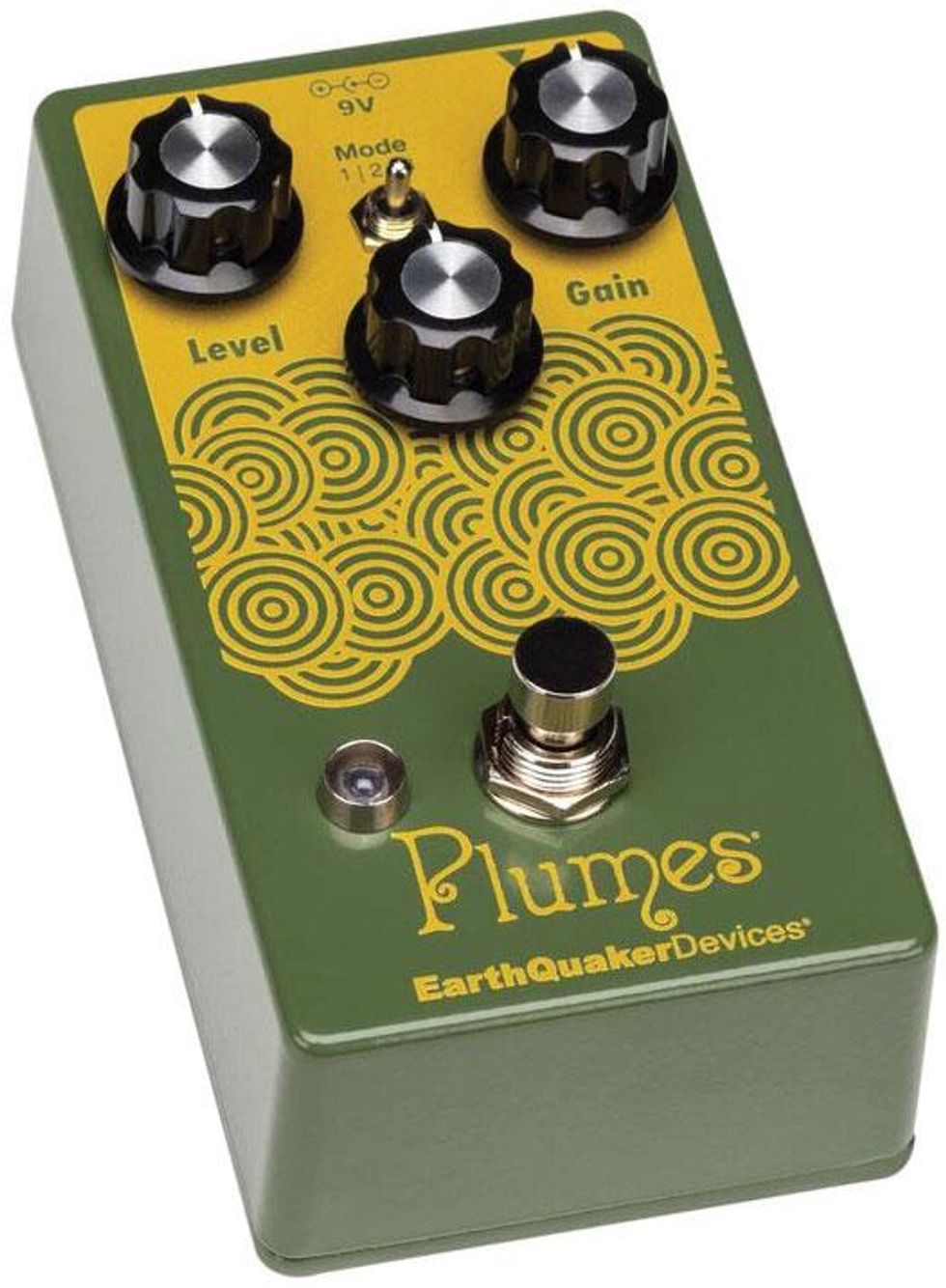
The ubiquity of the Tube Screamer—and the scores of overdrives that have come in its wake—make it easy to forget the virtues and potential of the original. In fact, EarthQuaker Devices founder Jamie Stillman once hinted he would never bother with building a TS-based pedal. But EQD is nothing if not a restless bunch, and I suspect that the challenge of building a TS-inspired circuit with variable clipping—all for 99 bucks—was more than Stillman and crew could resist. The results are impressive. In general, the Plumes has a bit more headroom and clarity in the top end than your average TS. The LED symmetrical clipping mode ranges to savage grinding and beautifully compressed. The asymmetrical clipping mode is a little softer around the edges, with almost-saturated Fender-amp-like overdrive. There's also a no-clipping op-amp boost setting that reminds you how effectively a TS can work as a near-clean boost. Plumes would be a great TS alternative if it were 50 to 70 percent more expensive. At this price, it's a steal. —CS
The Good: A TS with a triple twist of clipping options. Great range of aggressive-to-clean sounds. Great tone control. More headroom than your average TS-style pedal.
The Bad: Hard to switch clipping modes on the fly without major volume changes.
$99 street, earthquakerdevices.com
Kliq TinyTune

When it comes to mini tuner pedals, mainstream brands like TC Electronic, D'Addario, and Korg tend to rule the roost for serious players, but does that mean they're our only viable option? I decided to put that question to the test a couple years ago when my old Planet Waves Chromatic Pedal Tuner finally died and I saw all the great Amazon reviews for the KLIQ TinyTune. As you've probably noticed, shopper reviews—whether on Amazon or a respected retailer's site—are often overly fawning simply because the item arrived quickly, the sales consultant was engaging and friendly, or, most offensively, the person didn't encounter any problems after using the product for an hour or two. Nevertheless, with an average rating of 4.5 and hundreds upon hundreds of reviews, I figured $29 wasn't that big a gamble. When the TinyTune arrived, I was pleasantly surprised to find that it seemed every bit as sturdy and feature-laden as other tuners on the market, and its display was both brighter and less jumpy than many tuners I've used. —SH
The Good: Excellent build quality and feature set. Clear, bright, easy-to-read interface.
The Bad: Registers notes slightly slower than more expensive offerings.
$29 street, kliqmusicgear.com
Electro-Harmonix Nano Bass Big Muff
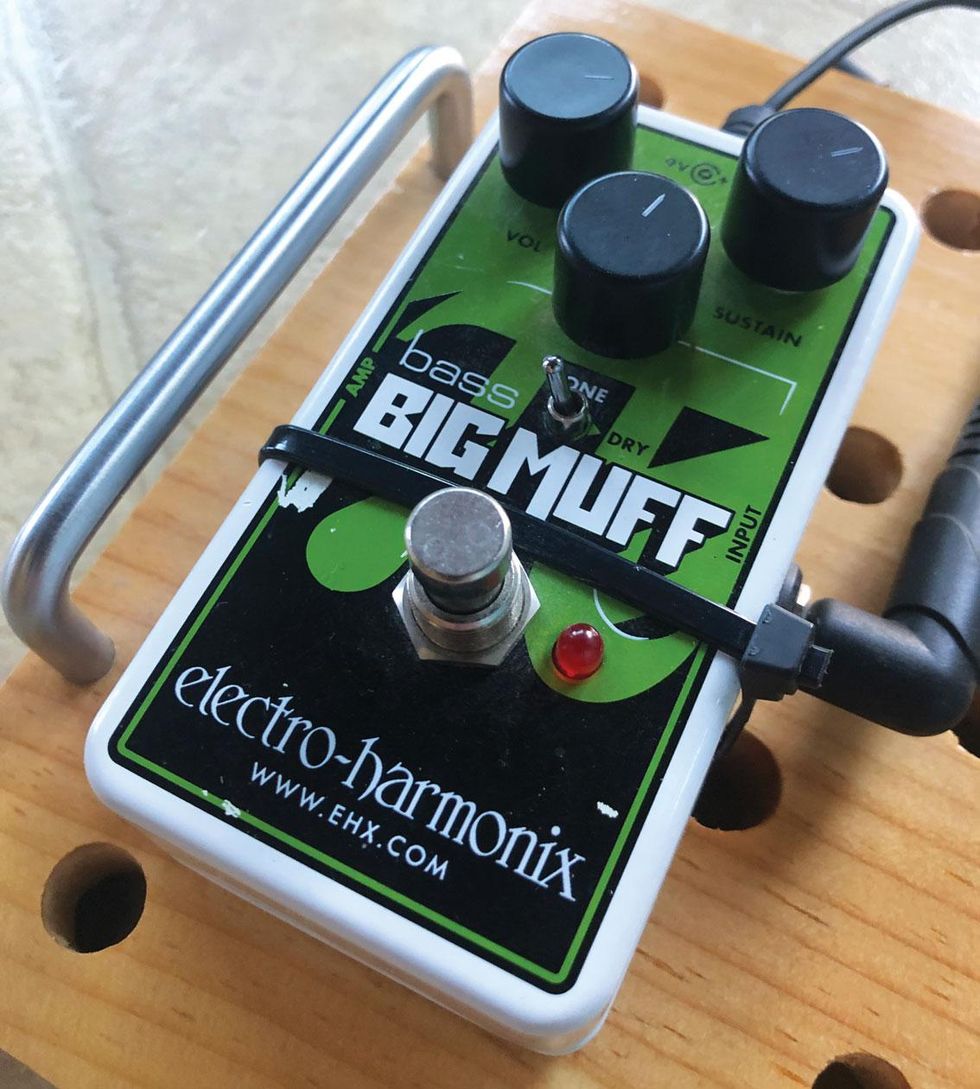
Electro-Harmonix is known for a lot of things, with distorted tones and affordability way up high on that list. Inspired by the company's lauded green Russian Big Muff, but in a smaller package and voiced for bassists, the Nano Bass Big Muff houses the accustomed volume, tone, and sustain dials for sound sculpting. However, this Muff also has a mini toggle to switch over to a 50/50 wet/dry signal blend and assist in low-end retention and clarity. At just about 80 bucks, the price is certainly nice, but so is its dirt delivery, which leans more towards warm and fat as opposed to a treble-y or harsher timbre. The NBBM's range of thick fuzz tones are apt for stoner and doom to vintage rock and metal, and really pushing it will spit out copious amounts of tummy tickling fuzz with synth-y flavor, but the NBBM also hangs nicely as a foundational tool with just a kiss of dirty in dry mode. There are a lot of great fuzz pedals for bassists on the market, but pound for pound divided by price, the Nano Bass Big Muff is pretty close to Nobrainerville for me. —Rich Osweiler
The Good: Excellent low-end retention. Dry switch for wet/dry blend.
The Bad: Wet/dry blend limited to the toggle switch's preset 50/50 ratio.
$80 street, ehx.com
Electro-Harmonix Bass Big Muff Nano - Pedals Under $100
MXR CSP101SL Script Phase 90
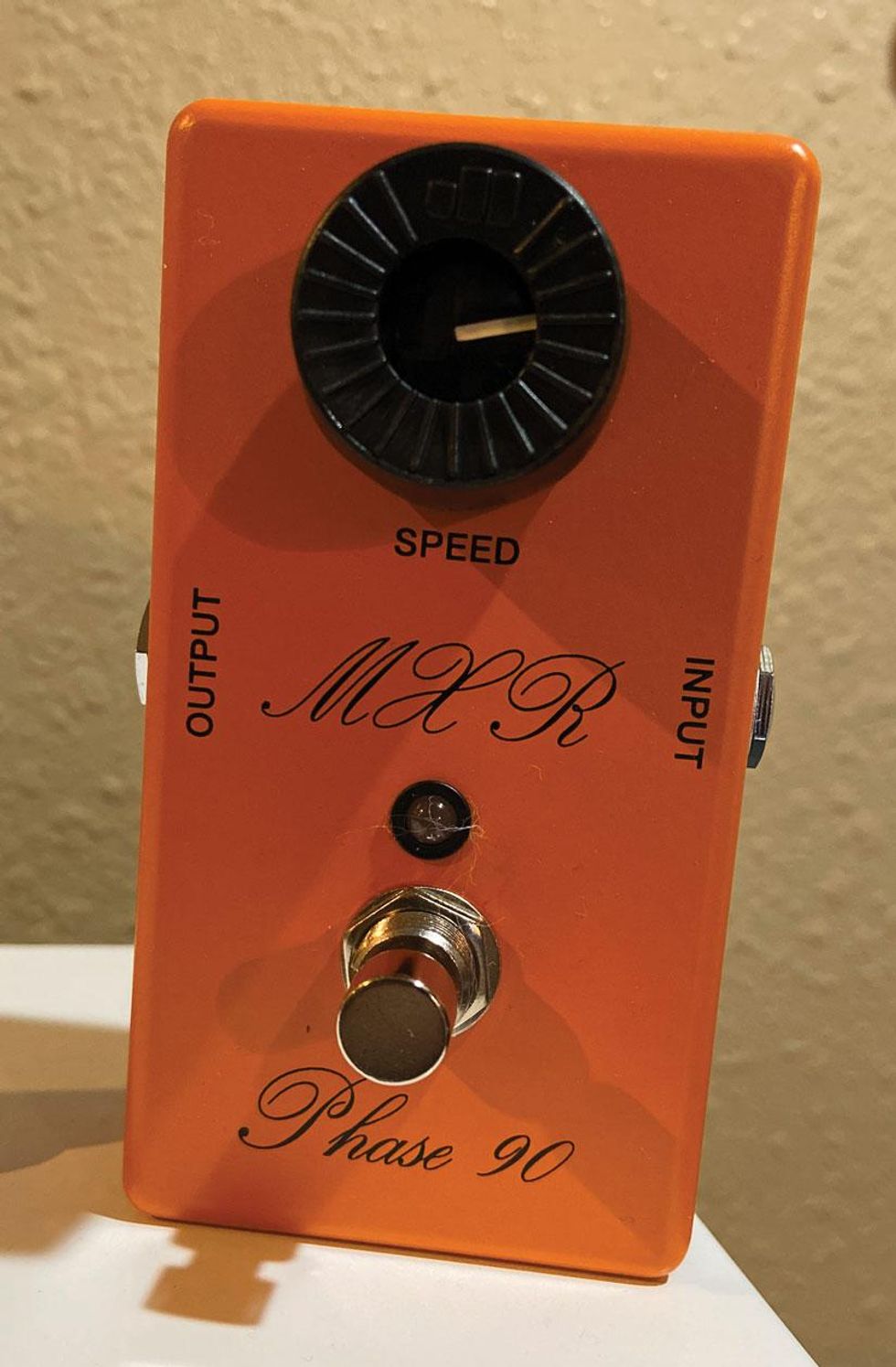
Maybe it's just front of mind because of Edward Van Halen's recent passing, but when the idea for this story first came across my desk, I immediately flashed on "Eruption" and went to see what a Phase 90 was going for. Thankfully, this Custom Shop version squeaked right under our dollar parameters. The thick syrupy sounds of a well-crafted phaser have permeated not only some of EVH's most famous jams, but also the outlaw funk of Waylon Jennings and the reggae jams of Bob Marley. For the orange-box purists, the script logo versions are the way to go. Thankfully, this particular model has both an LED and an option for 9V power—both of which are missing in the original model. With only one knob to control the speed, the lack of tweakable options is freeing, in a way. Simply turn it until it sounds good. Many times I find myself using my foot to dial in just the right amount, thanks to the handy rubber ring that MXR throws in the box. This is easily one of trippiest pedals to stand the test of time. —JS
The Good: Dead simple to use. Sounds fantastic.
The Bad: I probably use it too much.
$99 street, jimdunlop.com
MXR CSP101SL Script Phase 90 - Pedals Under $100
Big Knob Tone Blender MkII 66
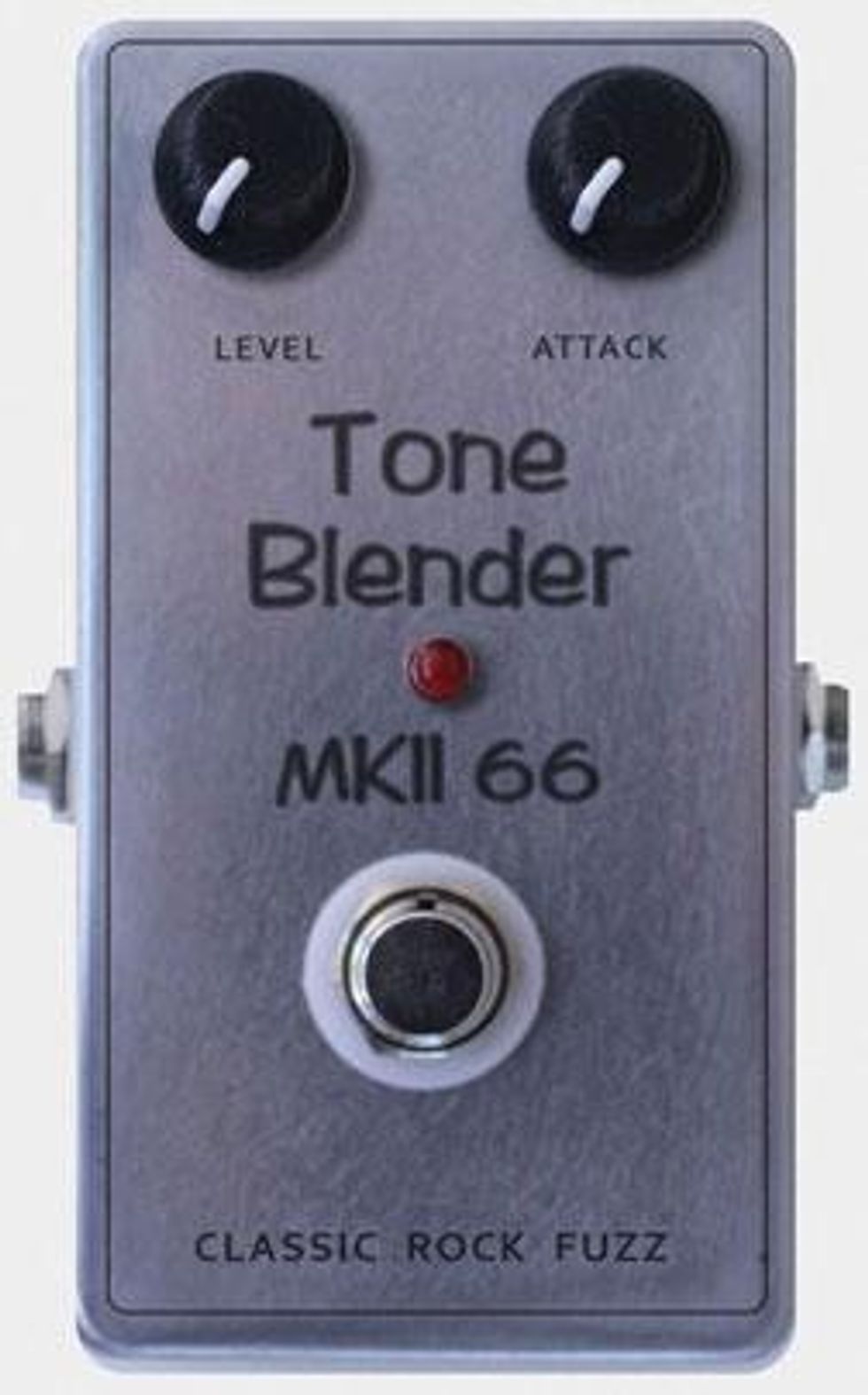
Once you've experienced the rush of hearing a vintage Tone Bender fire up—volume erupting through the roof, mohair-thick fuzz wrapping every note, super-creamy and responsive sustain that gives way to rancorous decay, and subtone artifacts that wobble behind held notes—coveting one is inevitable. Trouble is, a '60s or '70s Bender will set you back $500 to $800. Some clones aren't much cheaper, and most of them tend to sound darker than the originals or lack those artifact surprises. Not so the Tone Blender MkII 66. Big Knob "supreme commander" and one-man band Gary Kibler has been hand-building faithful reproductions of vintage circuits at his workbench for 12 years now, even cutting circuit boards from strip. The MkII is, like its namesake, a three-gain-stage circuit, using Soviet-era military NOS germanium transistors. Level, with unity at, um, barely on, provides a shocking amount of volume on tap, and the attack dial goes from colorful fuzz to hairy, howling banshee. There's no power supply option, in keeping with the originals. You'll want to use your guitar's volume and tone knobs to help command this insane fuzz, which fulfills Kibler's mission to provide classic tones for players on a budget. —TD
The Good: The gory glories of the original MkII Tone Blender at a shocking low price.
The Bad: Also like the originals, you'll need to invest a little time to learn to control this wild, snarling beast—unless you just drop the leash.
$80 street, bigknobpedals.com
Big Knob Tone Blender MkII 66 - Pedals Under $100
Zuzu Green Monster with custom pickup, bridge, in open D tuning; Carr Vincent combo.
Rhythm: clean, Tone Blender volume at unity, attack minimum, then maximum.
Melody line: clean, Tone Blender volume at unity, attack minimum, then maximum, then noon.
